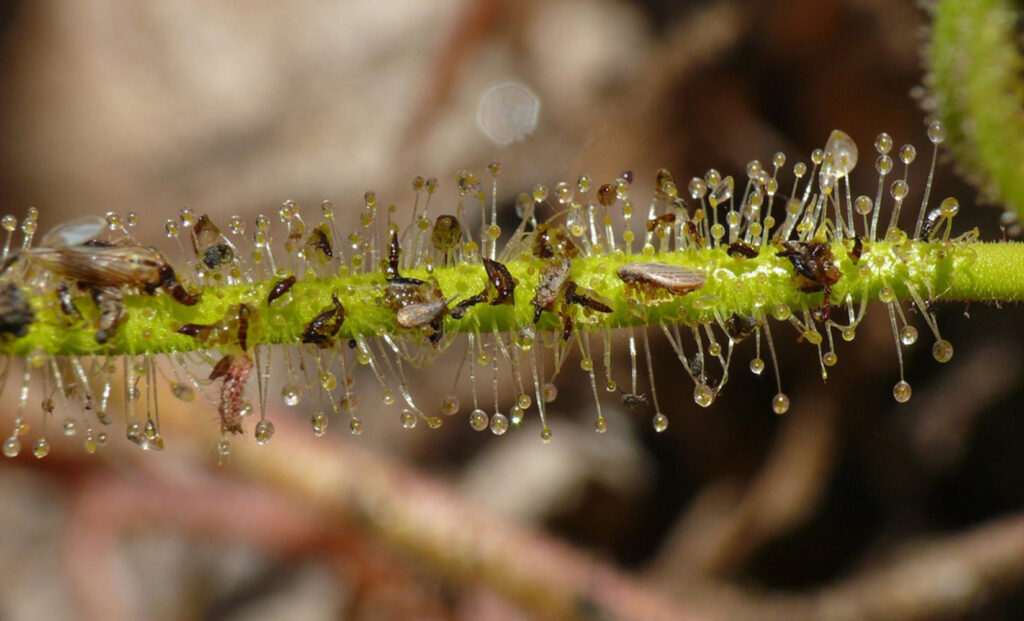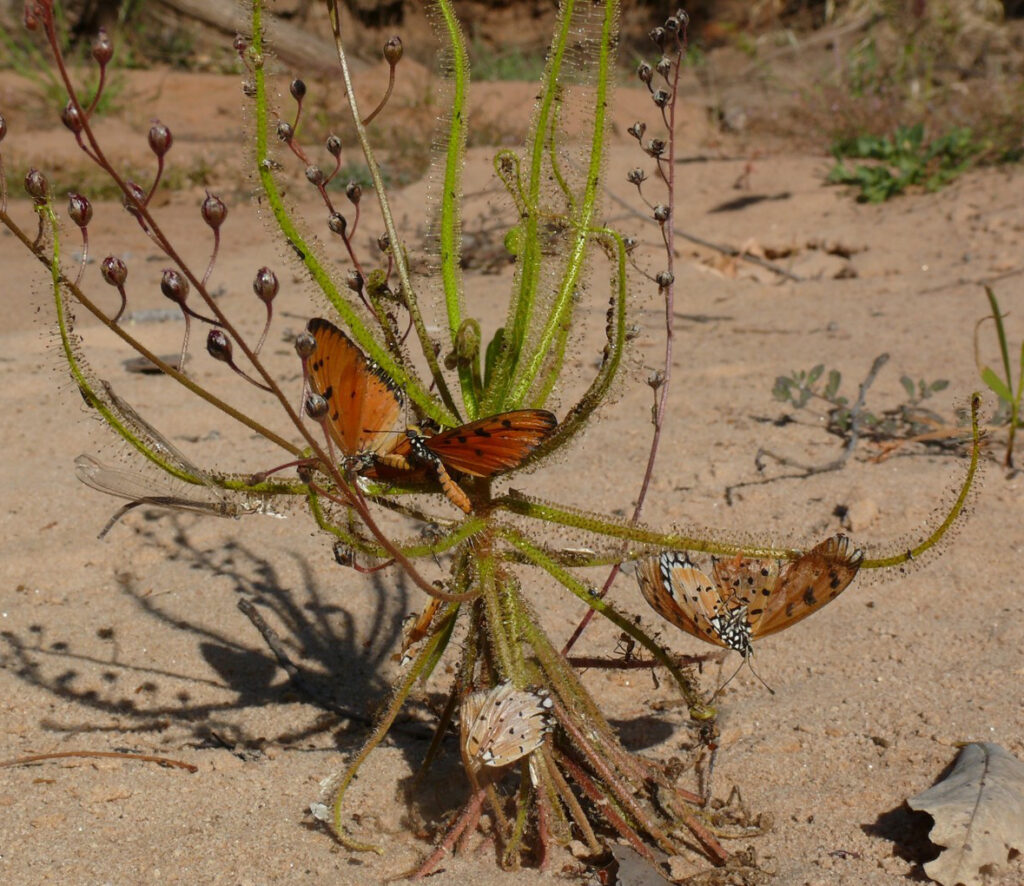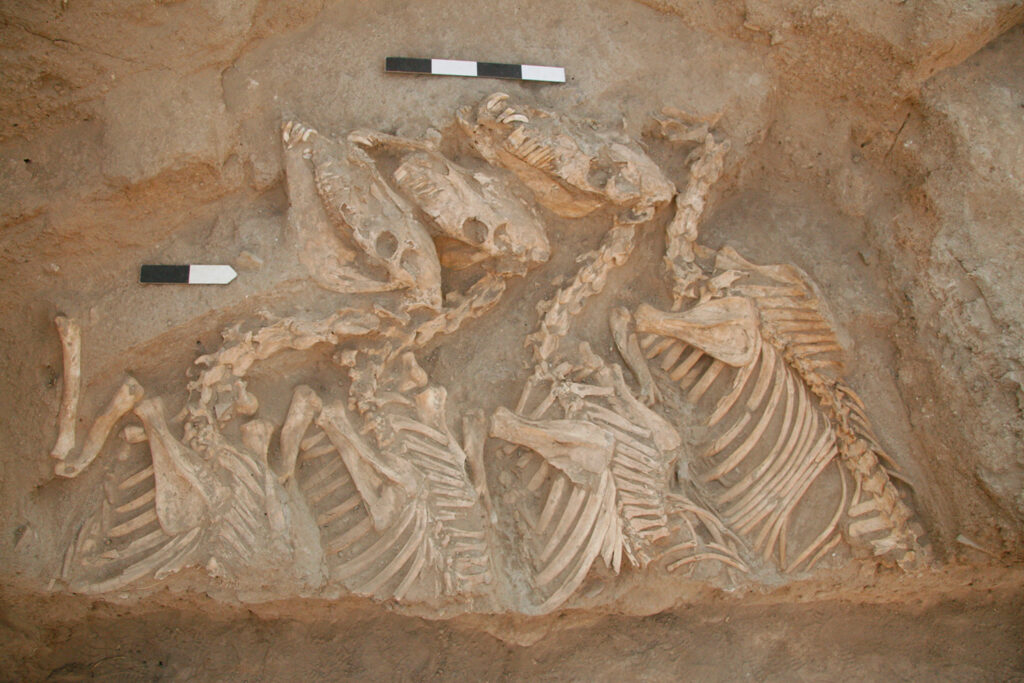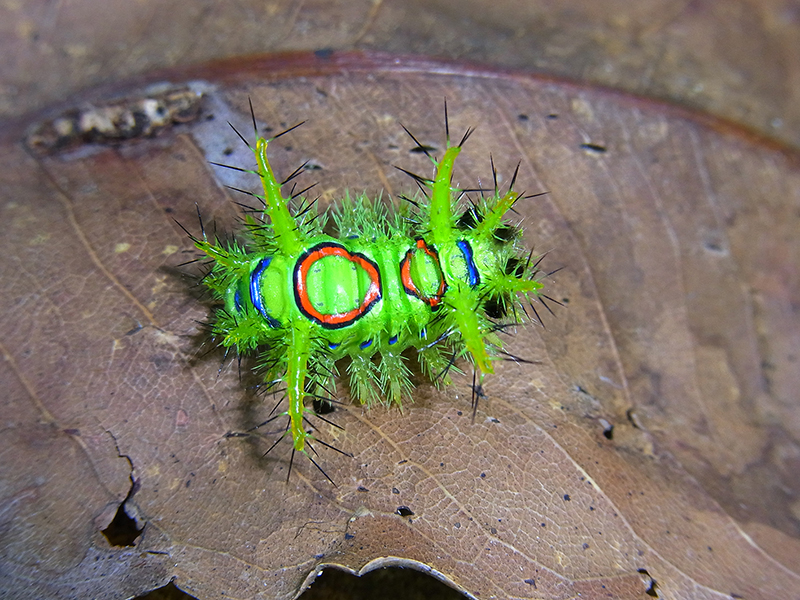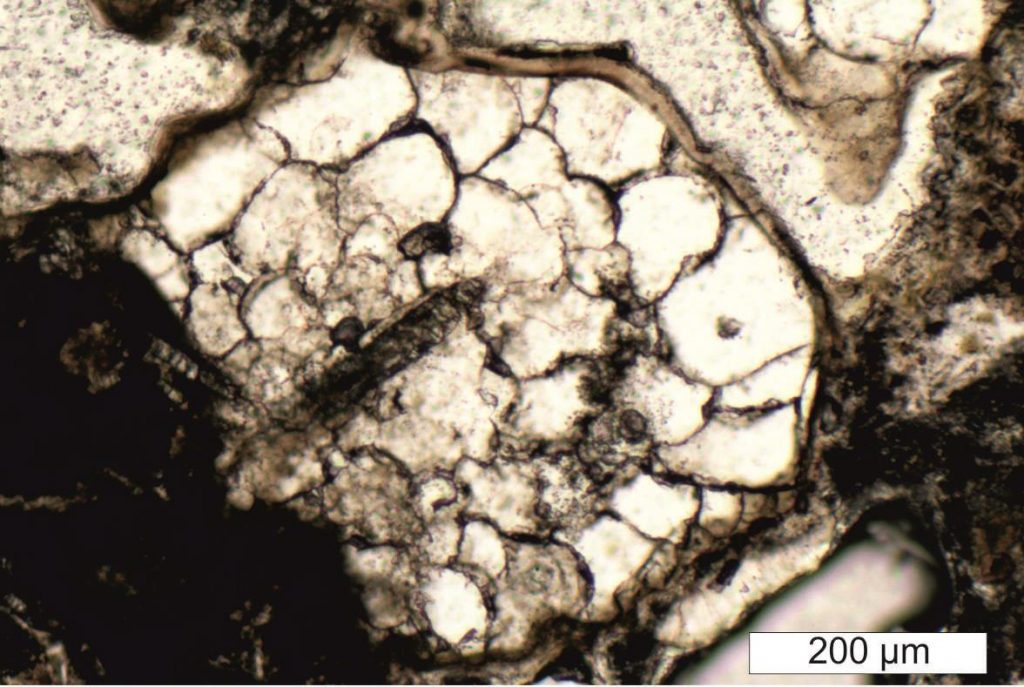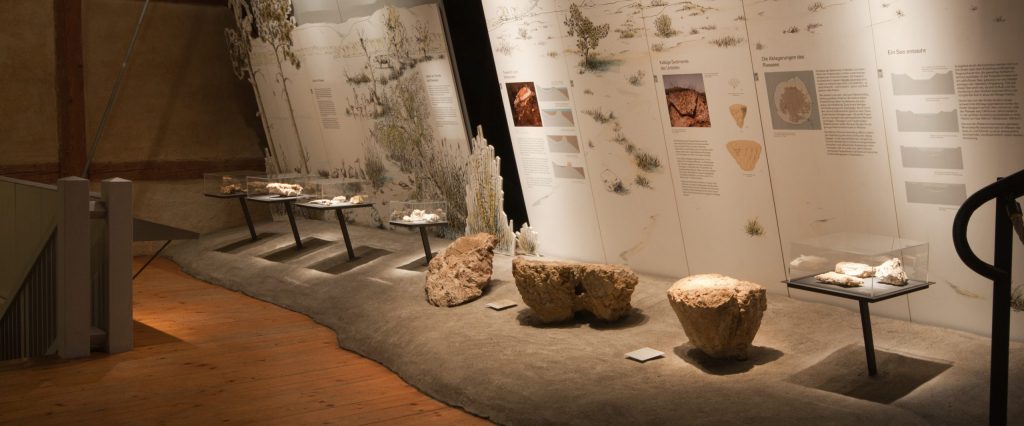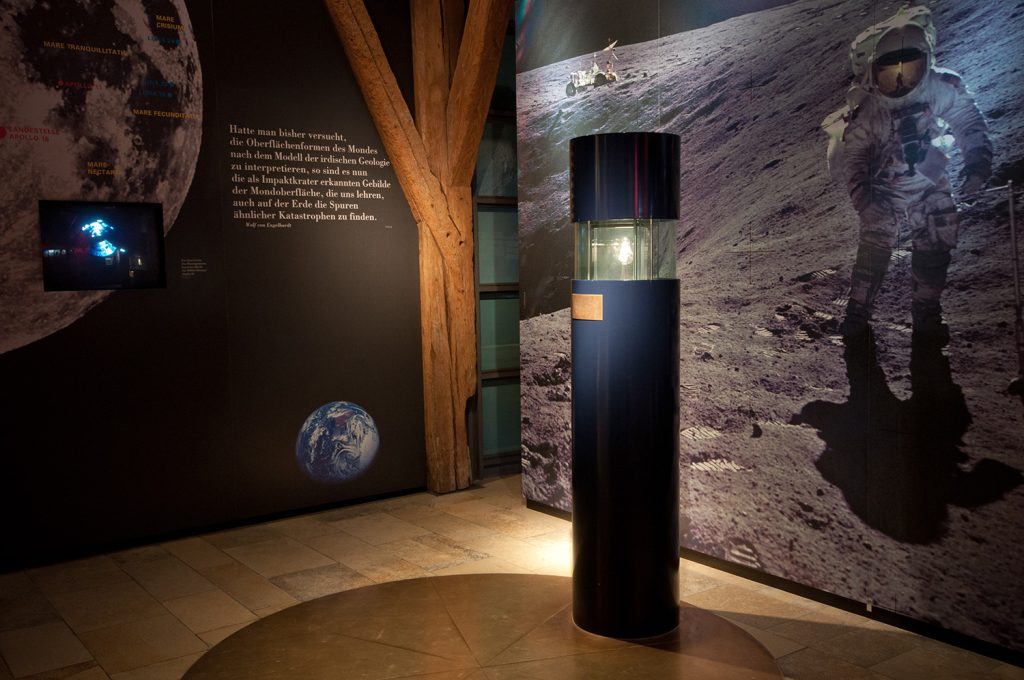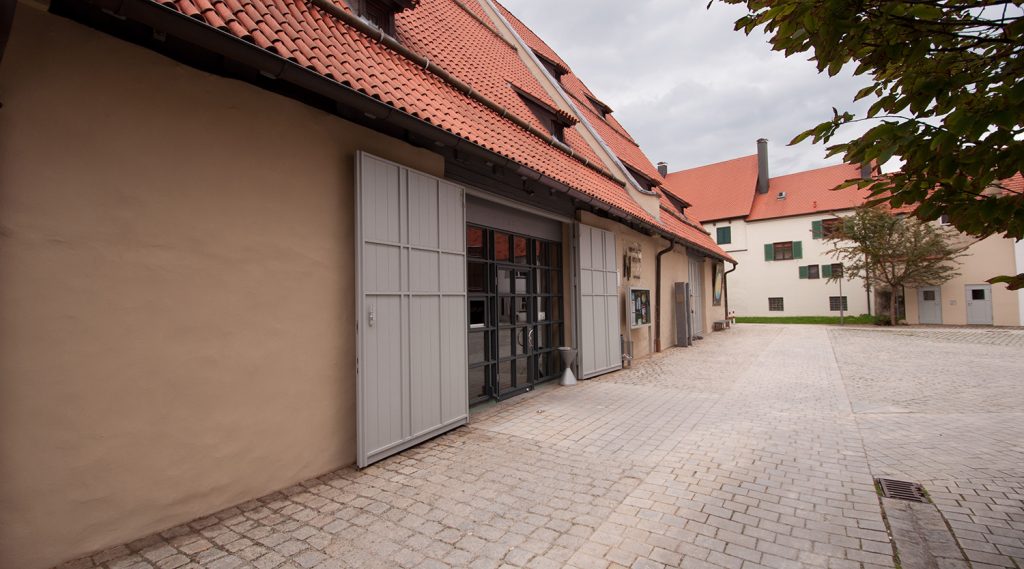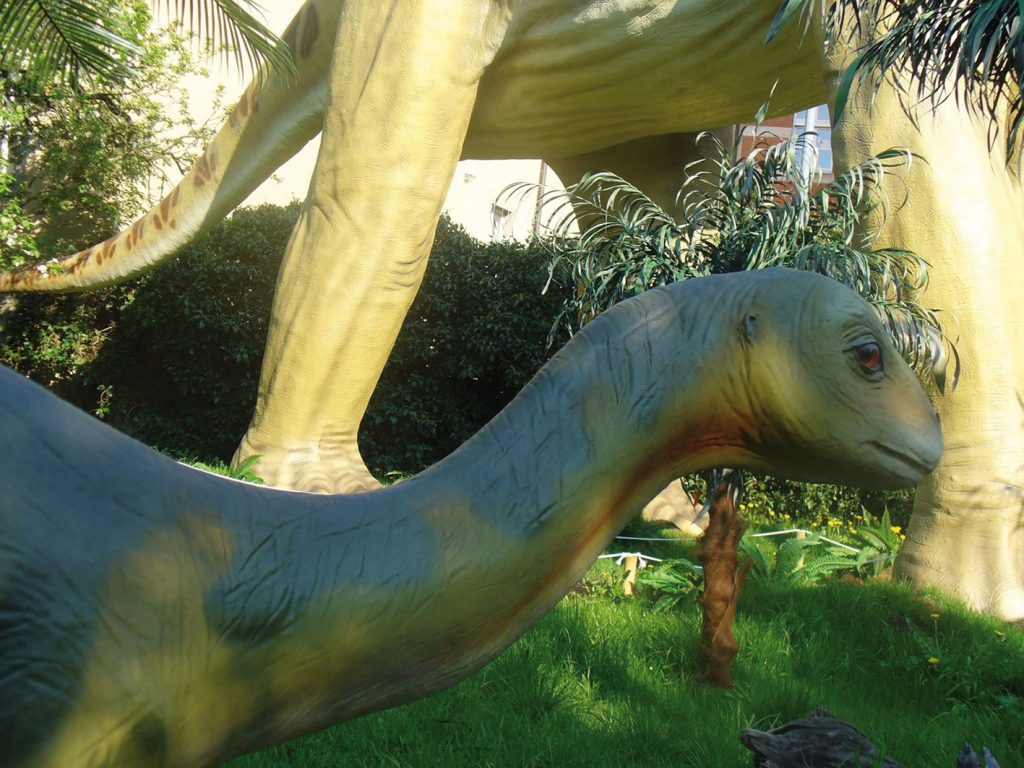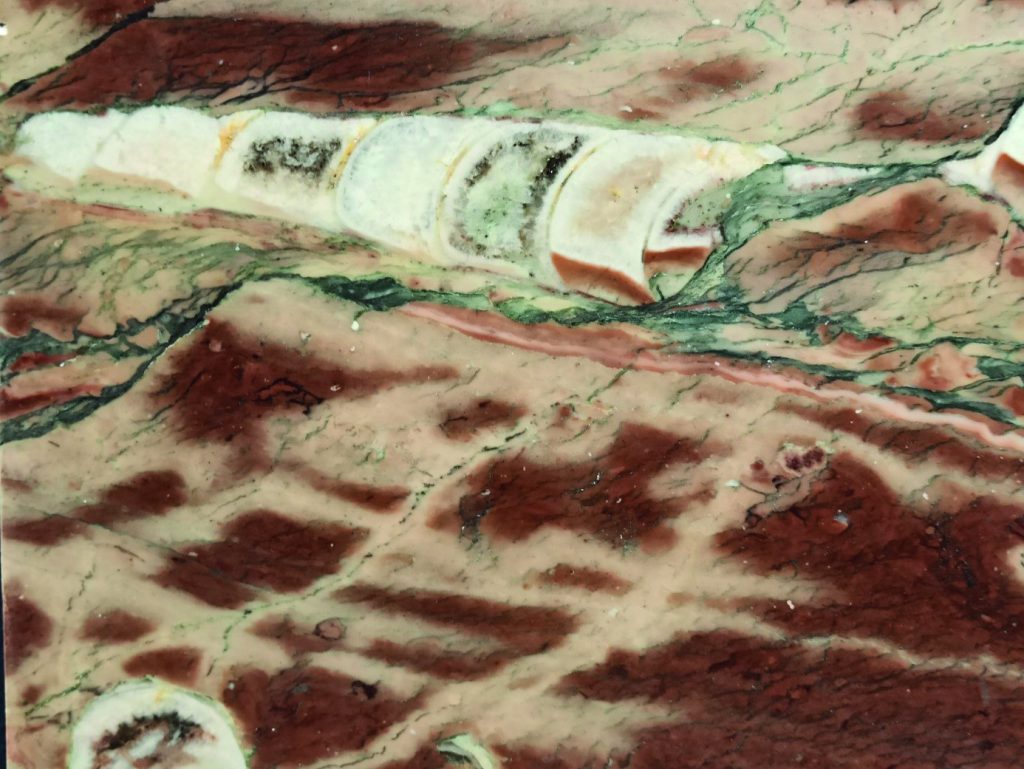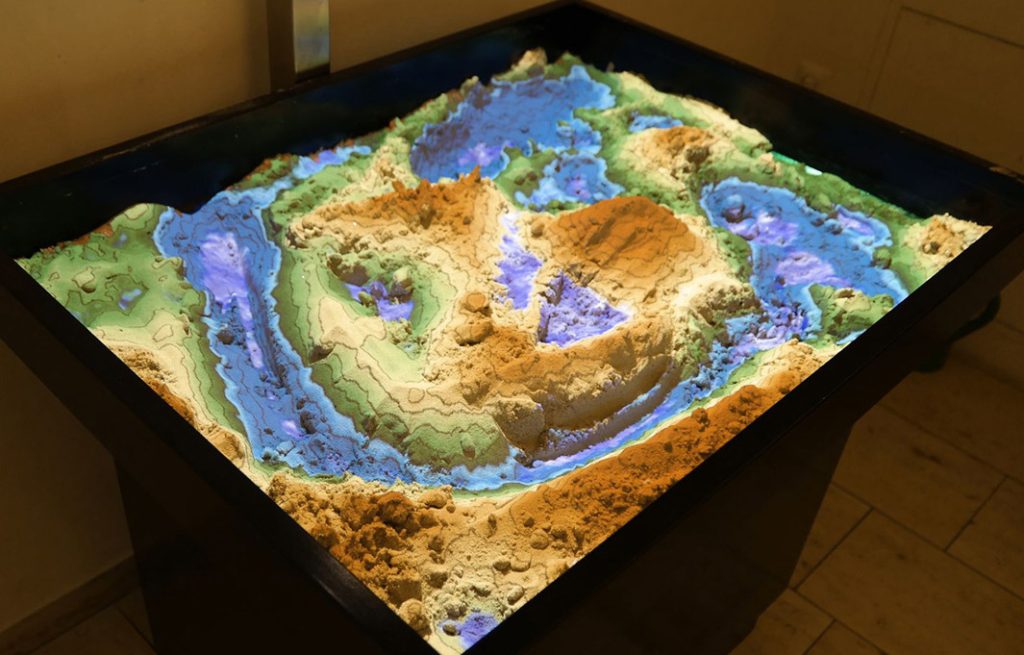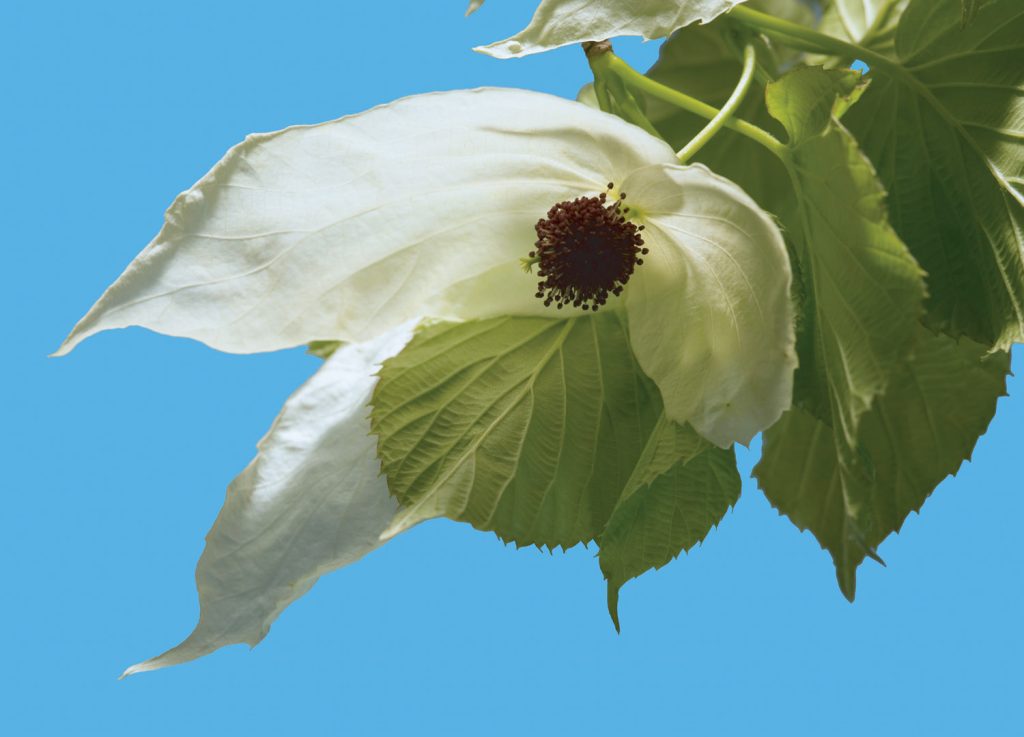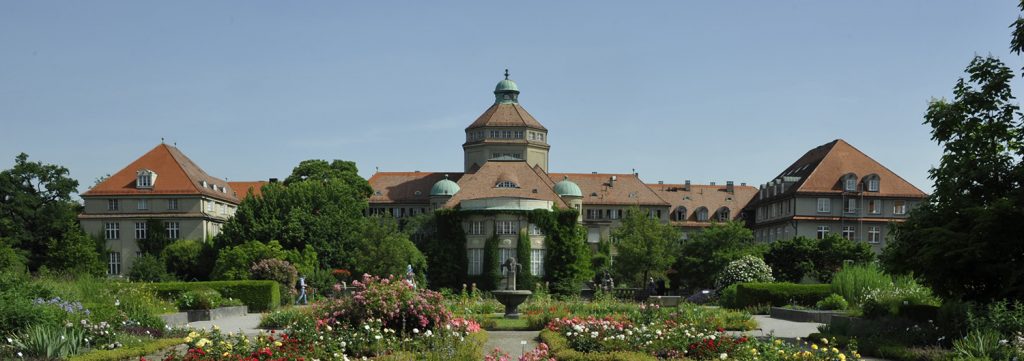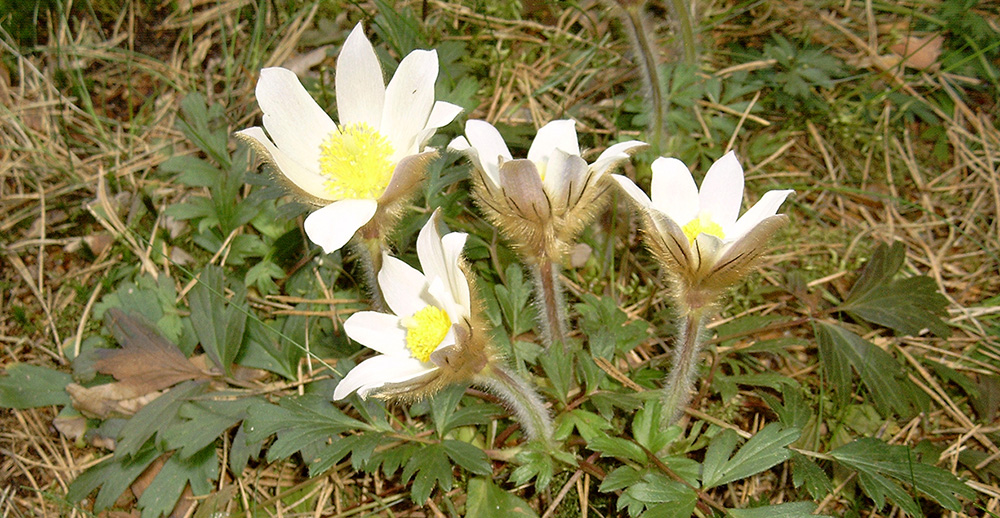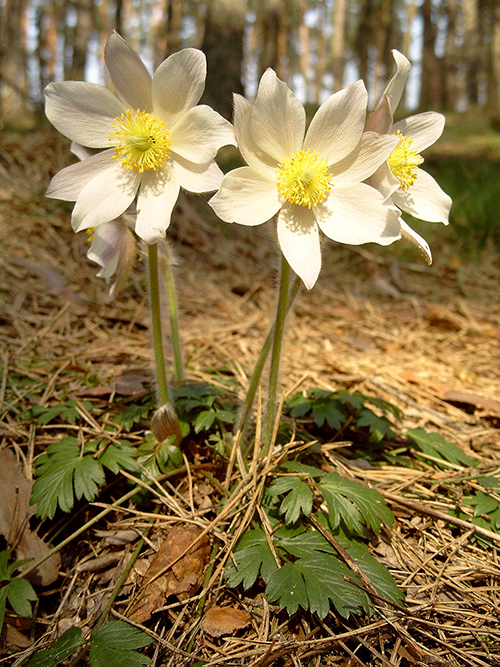First insights into the genetic bottleneck characterizing early sheep husbandry in the Neolithic period
Staatssammlung für Paläoanatomie München:
Mitogenetic diversity of sheep did not decline in the Anatolian distribution area of wild sheep when sheep husbandry developed in the early Neolithic c. 10,000 years ago, as previously assumed. SNSB and LMU zooarchaeologist Prof. Joris Peters and collaborators could show that matrilineal diversity remained high during the first 1,000 years of human interference with sheep keeping and breeding in captivity, whilst only declining significantly in the course of the later Neolithic period. The results of their study are reported in the journal Science Advances
Modern Eurasian sheep predominantly belong to only two so-called genetic matrilineages inherited through the ewes. Previous research thereby assumed that genetic diversity must already have decreased rapidly in the early stages of domestication of wild sheep. Our study of a series of complete mitogenomes from the early domestication site Asıklı Höyük in central Anatolia, which was inhabited between 10,300 and 9,300 years ago, disproves this assumption: despite a millennium of human interference with the keeping and breeding of sheep, mitogenomic diversity remained invariably high, with five matrilineages being evidenced including one previously unknown lineage. The persistently high diversity of matrilineages observed during the 1,000 years of sheep farming was unexpected for the researchers.
“In Aşıklı Höyük, there were both sheep raised in captivity and wild sheep hunted by the inhabitants of the site. We assume that occasionally managed flocks were supplemented by native wild sheep when necessary, e.g. to compensate for losses due to disease or stress in captivity. One should also consider that people exchanged sheep over wider areas. A possible parallel to such practice can be found in the import of cereal crops to Central Anatolia, which are native to Southeast Anatolia,” says Prof. Peters, interpreting the results of the study.
The different matrilineages or haplogroups are similar to the branches of a family tree. Individuals belonging to a particular lineage show comparably little variation in their mitochondrial genomes, because descending from a common female ancestor. Today, haplogroup B predominates among sheep in Europe and haplogroup A in East Asia. Consequently, mitogenomic diversity decreased later in the domestication process or at the time when sheep farming spread beyond the original domestication region during the Neolithic, a question that had so far remained unanswered.
To address this question, the international team of researchers led by Prof. Joris Peters, State Collection of Palaeoanatomy Munich (SNSB-SPM), Prof. Ivica Medugorac, Population Genomics of Animals, LMU Munich, and Prof. Dan Bradley, Smurfit Institute for Genetics, Trinity College Dublin, investigated matrilineal affiliation and phylogenetic relationships of 629 modern and ancient sheep across Eurasia.
Comparison of Aşıklı Höyük’s results with ancient DNA signatures in archaeological sheep bones from later settlements in Anatolia and surrounding regions as well as in Europe and Middle Asia clearly illustrates that mitogenomic diversity decreased significantly in the ninth millennium before present. One result of this is the aforementioned dominance of matrilineage B in Europe. “We can now assume that this development is due to a so-called “bottleneck” that took place later in the Neolithic period, when sheep farming spread beyond the natural distribution of wild sheep following the early domestication of the species. This bottleneck likely relates to so-called founder effects, in which smaller flocks were consecutively removed from an already greatly reduced sheep population in the course of the spread of small animal husbandry on the way to Europe,” Peters continued.
“Particularly fascinating are the insights gained through the integration of genetic and archaeological datasets. Together with the numerous other mosaic pieces that zooarchaeologists, archaeologists and geneticists have collected over decades, an increasingly coherent picture of human cultural adaptations since the last Ice Age now emerges. Studies like these show that animal domestication is not to be understood in terms of a cross-generational plan, but rather as a process of chance and necessity that has significantly shaped our recent cultural history and accompanies us to this day,” adds Prof. Ivica Medugorac.
Publikation
Edson Sandoval-Castellanos et al. Ancient mitogenomes from Pre-Pottery Neolithic Central Anatolia and the effects of a Late Neolithic bottleneck in sheep (Ovis aries).
Sci. Adv.10,eadj0954(2024). DOI:10.1126/sciadv.adj0954
https://doi.org/10.1126/sciadv.adj0954
Contact
Prof. Dr. Joris Peters
SNSB – Staatssammlung für Paläoanatomie München (SNSB-SPM)
LMU München, Lehrstuhl für Paläoanatomie, Domestikationsforschung und Geschichte der Tiermedizin
Tel.: 089 2180 5711
E-Mail: peters@snsb.de
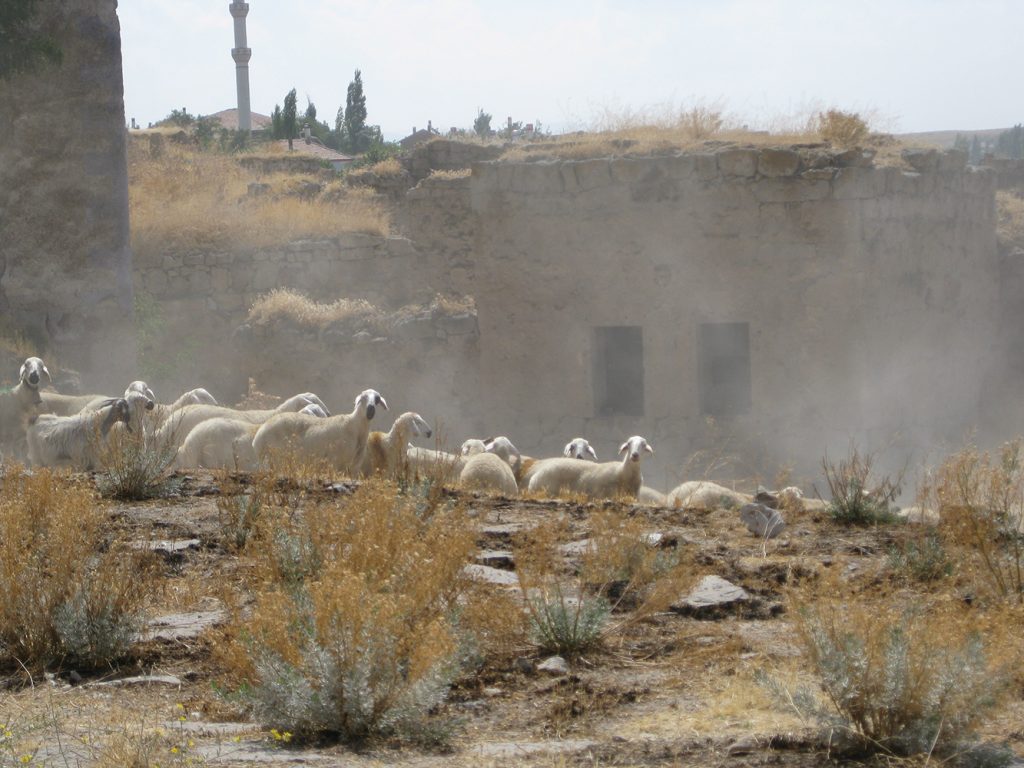
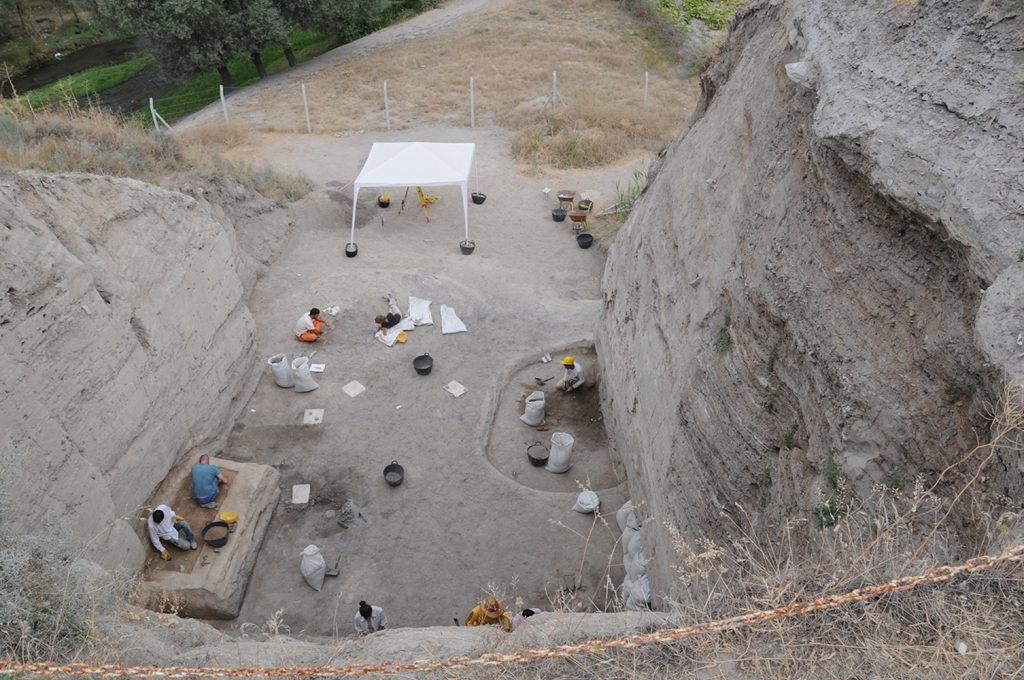
We mourn the loss of Dr. Stefan Schmidt
It is with great sadness that we bid farewell to our long-time colleague, friend and confidant Dr. Stefan Schmidt, who left us far too early on March 13. Stefan was always a driving force at the ZSM, mostly in the background, but always efficient and goal-oriented, and this in so many things such as collection management, species discovery, digitization and project management as well as the implementation of major national and international projects. He leaves a huge gap, we miss his friendly nature, great sense of humor and wonderful years of great cooperation.
SNSB Core Facilities
Boards & Committees
Board of Directors (Direktorium)
The Board of Directors is responsible for joint fundamental and strategic tasks. It decides on the distribution of the allocated budget funds and positions as well as the filling of academic staff positions.
- Prof. Dr. Joris Peters, Director General
- Dr. Elisabeth Schepers, Secretary General
- Prof. Dr. Alexander Nützel, Head of the Collection Committee
- Prof. Dr. Gudrun Kadereit, Head of the Research Committee
- Dr. Michael Apel & Prof. Dr. Stefan Hölzl, Heads of the Science Communication Committee
Committees (Fachausschüsse)
The three committees Collection, Research and Science Communication advise the Board of Directors on a subject-related basis. They receive funding from the Board of Directors to support interdepartmental and interdisciplinary projects and infrastructure.
Collection Committee
- Head: Prof. Dr. Alexander Nützel
- Assistant: Dr. Nora Battermann
Research Committee
- Head: Prof. Dr. Gudrun Kadereit
- Assistant: Dr. Amaryllis Vidalis
Science Communications Committee
- Head: Dr. Michael Apel and Prof. Dr. Stefan Hölzl
- Assistant: Katja Henßel
Plenum
The Plenum advises the Board of Directors. The Board of Directors informs the plenum about important developments. The plenum is co-chaired by the Director General and the Secretary General. The members of the Plenum are the heads of department, the museum directors of the regional museums, the Equal Opportunities Officer and the Chairwoman of the SNSB Staff Council.
Baboons in captivity in Ancient Egypt: insights from a collection of mummies
Skeletal pathologies in ancient Egyptian baboon mummies suggest health problems due to inadequate nutrition and chronic lack of sunlight. An international team led by the Belgian archaeozoologist Prof. Wim van Neer from the Royal Belgian Institute of Natural Sciences examined baboon mummies from Ancient Egypt, around 3,000 years old. Apparently, the animals suffered from various metabolic diseases caused by poor husbandry conditions. SNSB and LMU paleoanatomist Prof. Joris Peters, Director of the Bavarian Collection for Paleoanatomy in Munich, was also involved in the study. Prof. Peters is specialist of skeletal diseases in animals and helped to assess the various paleopathologies in these captive primates. The study was published today in PLoS ONE.
For over a millennium, from the 9th century BC to the 4th century AD, the ancient Egyptians venerated and mummified various animal species for religious and ritual purposes. Tens of millions of animal mummies were buried in Egypt’s underground necropolises. In many places, dogs, cats, sacred ibises and birds of prey were worshipped, but there were also burial sites for cattle, crocodiles and fish. Some of them even contain exotic animals such as baboons, Barbary apes and vervet monkeys, which were not native to Egypt. Not much is known about how these animals were acquired and kept.
The researchers led by Wim van Neer examined the skeletal remains representing at least 36 individual baboon from the ancient Egyptian site Gabbanat el-Qurud, the so-called Valley of the Monkeys on the west bank of Luxor. Radiocarbon dating revealed that the animals lived around 3,000 years ago. The mummy collection is kept in the Musée des Confluences, formerly Musée d’Histoire naturelle de Lyon.
Poor husbandry conditions
Most of the baboons examined were in a very poor state of health during lifetime. The animals’ bones showed lesions, deformations and other anomalies.
“We attribute these skeletal changes to the poor conditions in which the baboons were kept in captivity. Chronic lack of sunlight and poor nutrition apparently did not provide the animals with sufficient calcium and vitamin D and caused severe metabolic disorders that significantly impaired their skeletal development. Presumably the animals were kept in high walled, roofed enclosures without direct access to sunlight,” Prof. Joris Peters says.
“Almost all the animals in the baboon population from Gabbanat el-Qurud suffered from these metabolic disorders. We assume that these animals were born and raised in captivity. They were probably bred locally to meet the demand for animals for processional, oracular and other cult purposes,” Peters continues.
Skeletal deformities and pathologies in primates are also known from other animal cemeteries, such as the more or less contemporary Middle Egyptian animal necropolises of Tuna el-Gebel and Saqqara, and the much older Upper Egyptian site of Hierakonpolis (4,000-2,500 BC). The authors note that similar pathologies, age and sex distribution are seen in baboon remains from Saqqara and Tuna el-Gebel, suggesting a fairly consistent mode of captive keeping.
Further research
Additional analyses are essential to find out more details about the husbandry and origin of the ancient Egyptian baboons. The authors suggest, for example, further examinations of the microbiomes in the dental calculus to gain insights into the animals’ diet and the presence of microorganisms in the oral cavity. Genetic data from ancient DNA might reveal information on where the animals were caught in the wild and what breeding practices their keepers were employing.
Publication
Van Neer W, Udrescu M, Peters J, De Cupere B, Pasquali S, Porcier S (2023) Palaeopathological and demographic data reveal conditions of keeping of the ancient baboons at Gabbanat el-Qurud (Thebes, Egypt). PLoS ONE 18(12): e0294934. https://doi.org/10.1371/journal.pone.0294934
Contact
Prof. Dr. Joris Peters
Lehrstuhl für Paläoanatomie, Domestikationsforschung und Geschichte der Tiermedizin der LMU München und
Staatssammlung für Paläoanatomie (SNSB-SPM)
Tel: +49 (0)89 / 2180 – 5711
E-Mail: peters@snsb.de
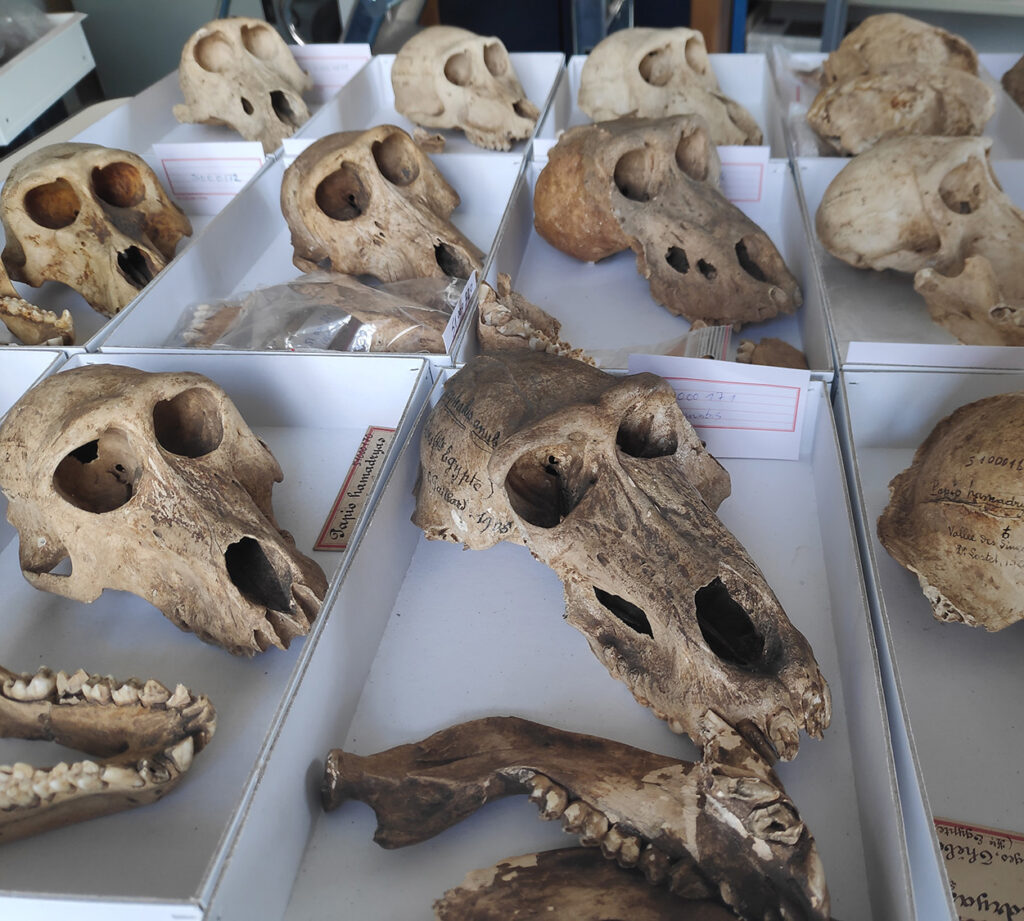
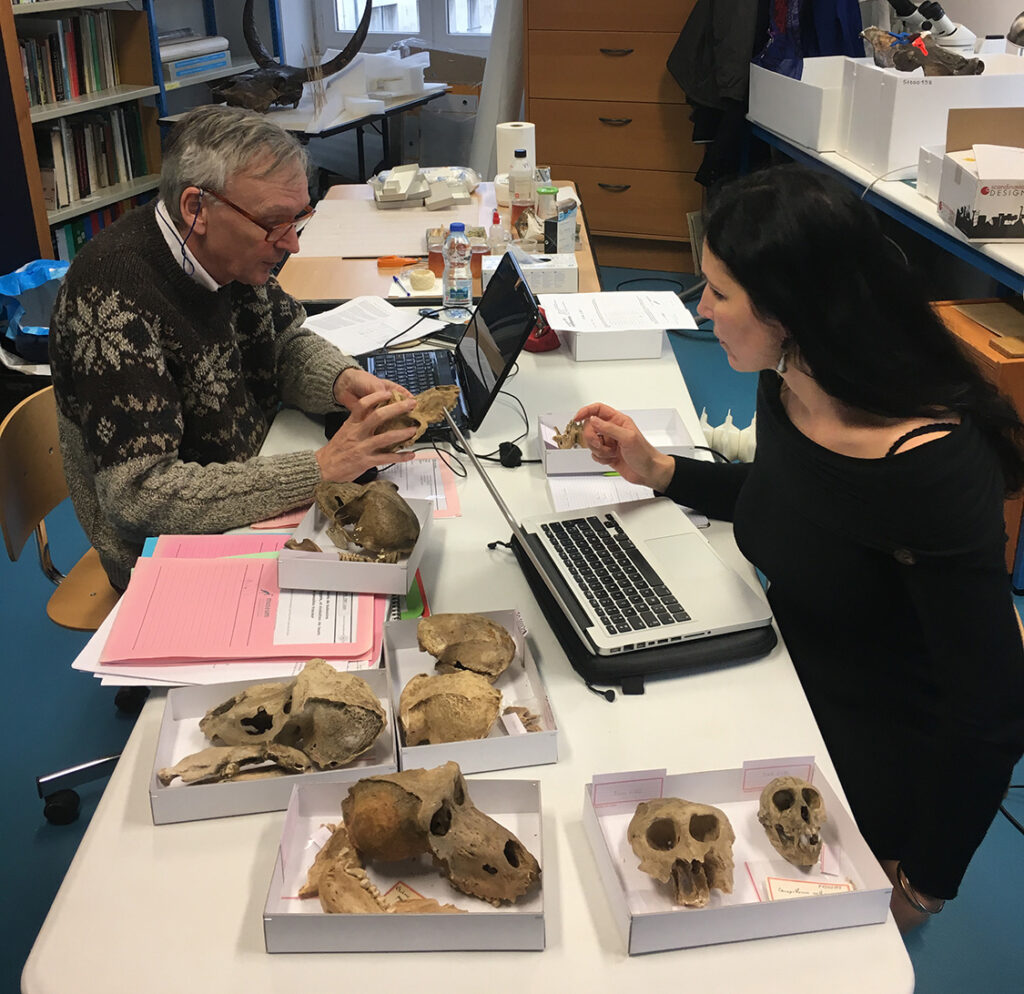
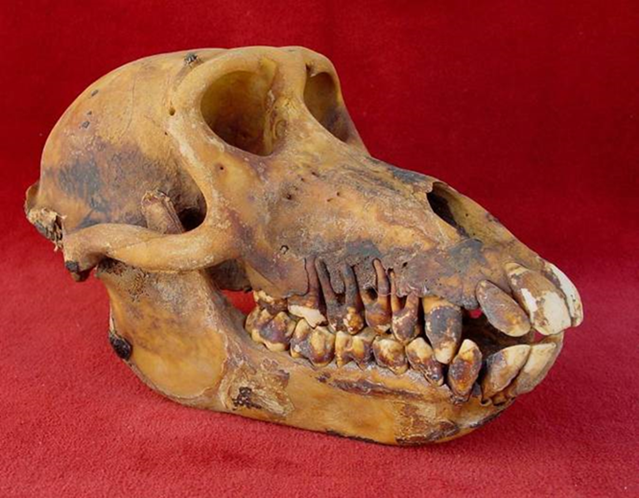
(Photo: J. Peters, SNSB)
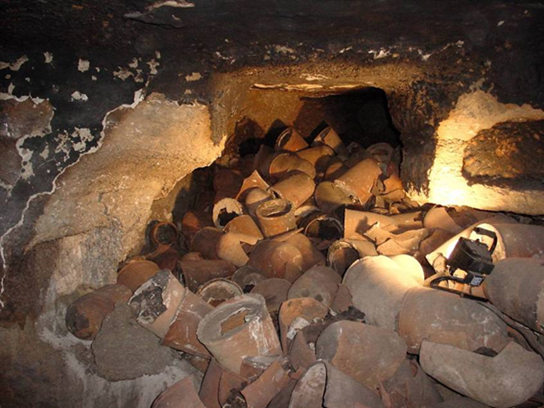
Childhood in medieval Bavaria: What teeth reveal about nutrition and migration
New research findings reveal: some children in early medieval Bavaria were breastfed for much longer periods than today. Also, many early Bavarians buried around 500 AD originate from other geographical regions where feeding practices apparently differed. A team of researchers led by the SNSB anthropologists Michaela Harbeck and Maren Velte analyzed human teeth from various archaeological sites in Bavaria. Their research findings were recently published in the scientific journals PLOS ONE and Archaeological and Anthropological Sciences.
A team of researchers led by anthropologist PD Dr. Michaela Harbeck, curator at the Bavarian State Collection for Anthropology in Munich, Germany (SNSB-SAM) and the LMU doctoral student and project collaborator at the State Collection, Maren Velte, were able to obtain information about the earliest phase of life of adult humans from the early Middle Ages through isotope analyses of their teeth. Harbeck and her colleagues analyzed human teeth from various medieval Bavarian cemeteries, mainly from the period around 500 AD. Teeth are formed during childhood and are characterized by little or no remodeling during lifetime. This developmental quality makes them an ideal “archive of childhood”. Strontium isotopes, for example, provide an indication of a person’s geographical origin, while analyses of carbon and nitrogen provide information to diet. Serial isotope analysis shows the course of nutrition from birth to around 20 years of age. This method reveals the transition process from breast milk feeding in infancy to the inclusion of solid food during early childhood.
Complex migration processes
The origins of modern-day Europe date back to a period known as the Migration Period. During this time, which dates between Late Antiquity and the Middle Ages, the Western Roman Empire came to an end and profound cultural and political changes began. Many towns, villages and settlements have their origins during this period. In southern Bavaria, the Bavarian duchy emerged from the former Roman province of Raetia secunda in the sixth century. The role migration played in this process remains a point of discourse. Stable strontium isotopes from over 150 early medieval human skeletal remains reveal: At the end of the 5th century, an above-average number of people of non-Bavarian origin migrated to the region of present-day southern Bavaria. These treks involved men as well as women. “Although we cannot narrow down the exact areas of origin for many individuals, we can show that they came from various non-local regions,” says Harbeck, lead author of the study.
Certain dietary patterns atypical for Bavaria further suggest a foreign origin of some of the buried individuals. Several women who were shown to have genetic markers characteristic for south-eastern Europe and who also exhibit artificially modified skulls, consumed a diet comprised mainly of millet during their formative years. Millet farming is common in Eastern Europe and even Asia, yet seldom grown in Bavaria at this time. Harbeck states, “These women obviously grew up in other cultures outside of Bavaria. For some women, we were even able to narrow down the approximate time of their diet change and thus when they immigrated to Bavaria. Many of the women from south-eastern Europe, for example, did not immigrate as teenagers – as one might expect in the context of marriage migration at that time – but were already well over 20 years of age when they arrived in Bavaria”.
Weaning and complementary food
A detailed dietary reconstruction from birth to around the age of ten, including the switch from breast milk to solid food, was conducted for some individuals. These analyses show that women in late antiquity and the early Middle Ages breastfed their children much longer than today. Maren Velte showed in her doctoral thesis: “The weaning from breast milk was completed between the second and third year of life for most of the early Bavarians studied. Women of foreign origin in particular were obviously breastfed longer. Such long breastfeeding periods are known from nomadic peoples, for example.”
“Weaning stress”
The weaning process, i.e. the gradual addition of solid foods to replace breast milk, always poses a certain health risk to an infant. Children are suddenly and repeatedly exposed to new pathogens, and potentially, malnutrition. Resulting visible malformations in tooth enamel that occur during dental development and are considered identifiable physiological stress markers, can be interpreted to determine at what age children were exposed to these stress events. Infants raised in the period after the social upheavals in Bavaria apparently experienced a particularly high level of “weaning stress”: in the 7th century, stress-related developmental changes in dental morphology are particularly frequent. The research team believes that fundamental changes in childhood nutrition, especially with regard to complementary foods, are to blame. Future research will reveal more details.
Publications:
Velte M, Czermak A, Grigat A, Haas-Gebhard B, Gairhos A, Toncala A, et al. (2023) Between Raetia Secunda and the dutchy of Bavaria: Exploring patterns of human movement and diet. PLoS ONE 18(4): e0283243. https://doi.org/10.1371/journal.pone.0283243
Velte M, Czermak A, Grigat A, Neidich D, Trautmann B, Lösch S, Päffgen B, Harbeck M. (2023) Tracing early life histories from Roman times to the Medieval era: weaning practices and physiological stress. Archaeol Anthropol Sci 15, 190.
https://doi.org/10.1007/s12520-023-01882-6
Contact:
PD Dr. Michaela Harbeck
SNSB – Staatssammlung für Anthropologie München
Telefon: 089 5488 438 13
E-Mail: harbeck@snsb.de
Maren Velte
SNSB – Staatssammlung für Anthropologie München & LMU München
Telefon: 089 5488 438 17
E-Mail: velte@snsb.de
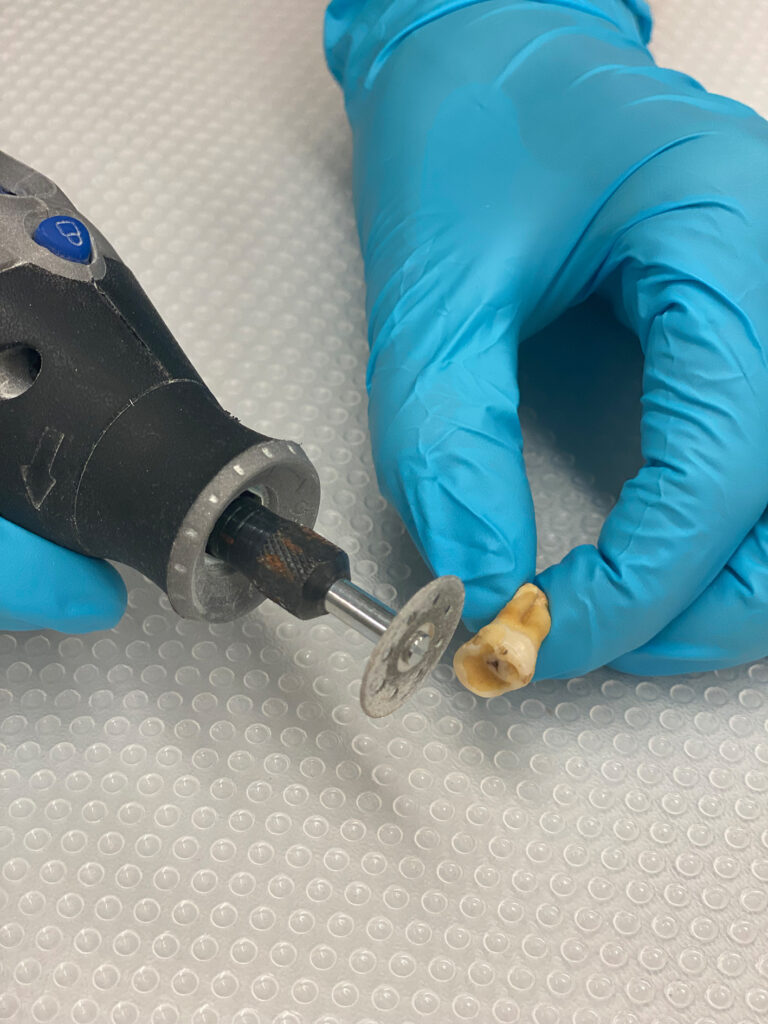
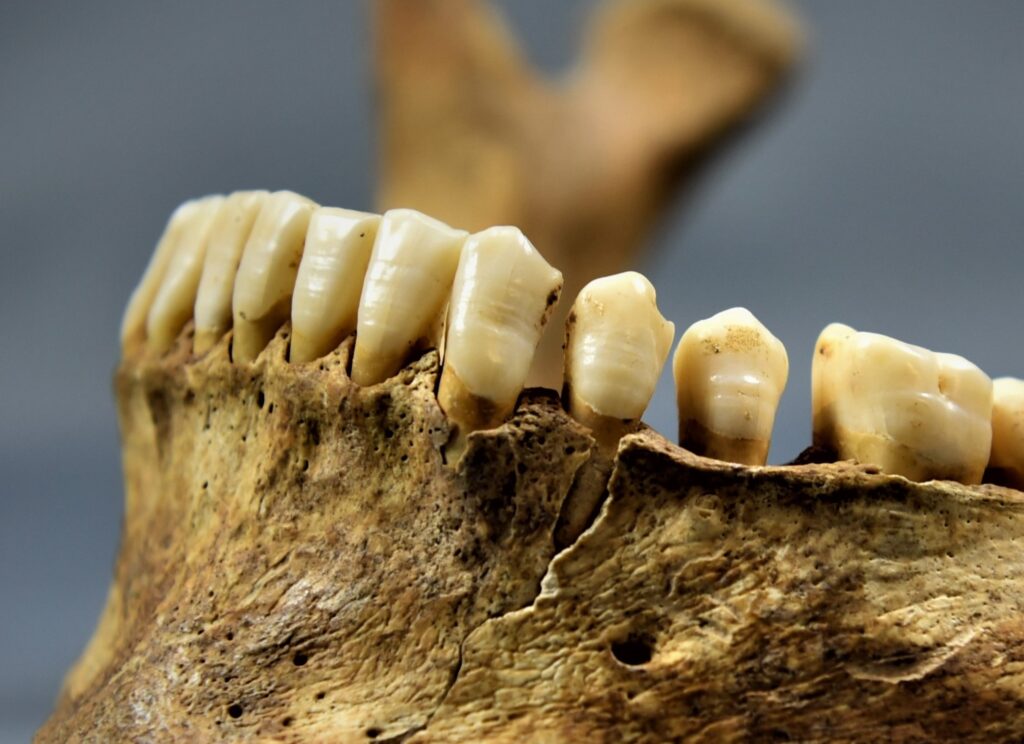
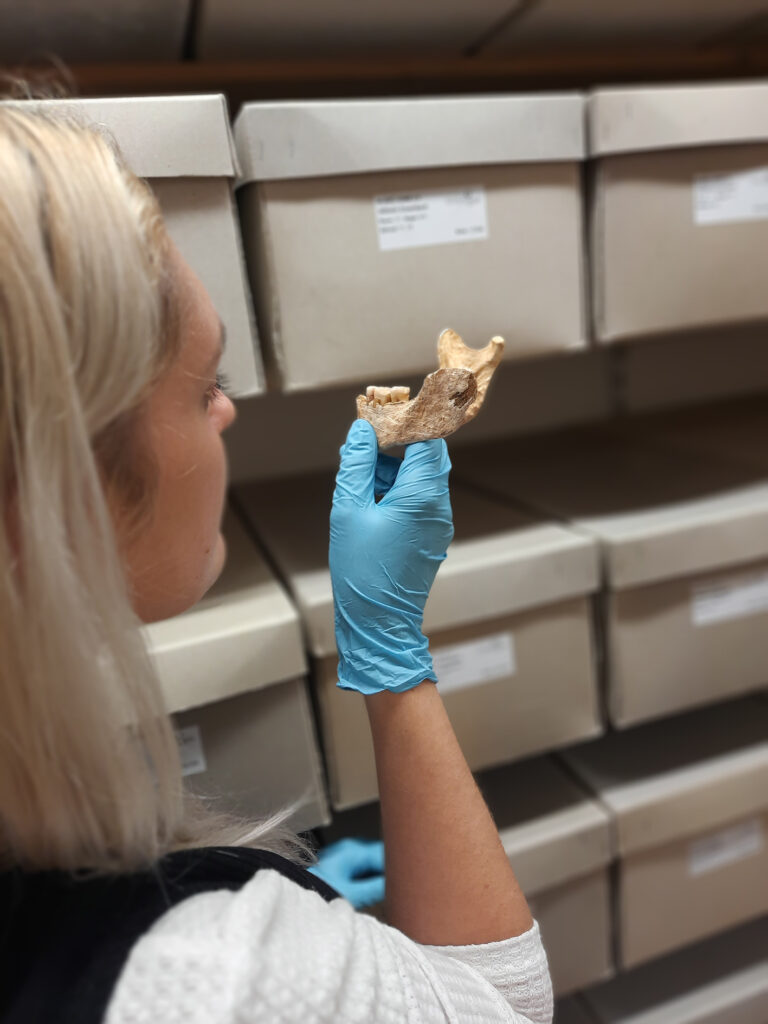
From passerine birds to cranes – Neolithic bird hunting in Upper Mesopotamia
Staatssammlung für Paläoanatomie München
Birds were an important source of food for hunter-gatherer communities in Upper Mesopotamia at the beginning of the Neolithic period, around 9,000 years BCE. This is shown in a new study by SNSB and LMU archaeozoologists Dr. Nadja Pöllath and Prof. Dr. Joris Peters. The two scientists analysed bird remains from Göbekli Tepe and Gusir Höyük, two Neolithic settlements in present-day Turkey, and have now published their findings in the journal Archaeological and Anthropological Sciences.
Besides mammals, ranging from aurochs to hares, or fish, foragers also pursued an impressively large spectrum of bird species in Southeast Anatolia 11,000 years ago. They were hunted mainly, but not exclusively, in autumn and winter – at the time of year, when many bird species form larger flocks and migratory birds cross the area. The species lists are therefore very extensive: At the Early Neolithic settlement of Göbekli Tepe, for example, c. 18 km northeast of present-day Şanlıurfa (SE Anatolia, Turkey), the researchers identified the remains of at least 84 bird species. Dr. Nadja Pöllath, curator at the Bavarian State Collection for Palaeoanatomy (Staatssammlung für Paläoanatomie München SNSB-SPM) and Prof. Dr. Joris Peters, chair of the Institute for Palaeoanatomy, Domestication Research and History of Veterinary Medicine at LMU München and director of the state collection, identified the Neolithic bird bones with the aid of the reference skeletons of the state collection.
The researchers were surprised by the large number of small passerine birds identified at Göbekli Tepe, comprising mainly starlings and buntings. In principle, the Early Neolithic inhabitants of Göbekli Tepe hunted birds in all habitats – mainly in the open grassland and wooded steppe in their direct surroundings, but also in the wetlands and gallery forest somewhat further away.
‘We do not know exactly, why they hunted so many small passerine birds at Göbekli Tepe. Due to their low live weight, the effort exceeds the meat yield by far. Perhaps they were simply a delicacy that enriched the menu in autumn, or they had a significance that we cannot deduce yet from the bone remains,’ Nadja Pöllath comments on her findings.
The inhabitants of Gusir Höyük, another Early Neolithic settlement on the shores of Lake Gusir, about 40 km south of the present-day provincial capital of Siirt, even further southeast in present-day Turkey, had a different approach: When fowling they pursued almost exclusively two species populating open hilly grasslands: the Chukar partridge (Alectoris chukar) and the grey partridge (Perdix perdix). They apparently ignored the avifauna of the nearby floodplains and the lake. Among several hundred fragments from Gusir Höyük, the archaeozoologists from Munich could not identify a single bone pertaining to waterfowl. ‘Gusir Höyük is the only Neolithic community in Upper Mesopotamia known to us that deliberately avoided wetlands and riverine landscapes when fowling, although they were present. Our results suggest that this was a cultural peculiarity of the Neolithic people inhabiting Gusir Höyük,’ said Prof. Dr. Joris Peters. ‘Our comparison of a number of Early Neolithic sites in the region revealed that the sites in the Euphrates Basin share many similarities regarding their meat procurement, while each community in the Tigris Basin seemingly developed its own subsistence strategy,’ adds Nadja Pöllath.
Neolithic settlers of Upper Mesopotamia hunted birds not only for their meat. Some species, such as cranes or raptors, certainly had a more symbolic meaning and served ritual purposes, the researchers suspect. In a future study, they will focus on these socio-cultural aspects of the human-avian relationship.
Publication:
Pöllath, N., Peters, J. Distinct modes and intensity of bird exploitation at the dawn of agriculture in the Upper Euphrates and Tigris River basins. Archaeol Anthropol Sci 15, 154 (2023).
https://doi.org/10.1007/s12520-023-01841-1
Contact:
Dr. Nadja Pöllath
SNSB – Staatssammlung für Paläoanatomie München (SNSB-SPM)
Tel.: 08121 7089 33 oder 08241 911 95 09
E-Mail: poellath@snsb.de
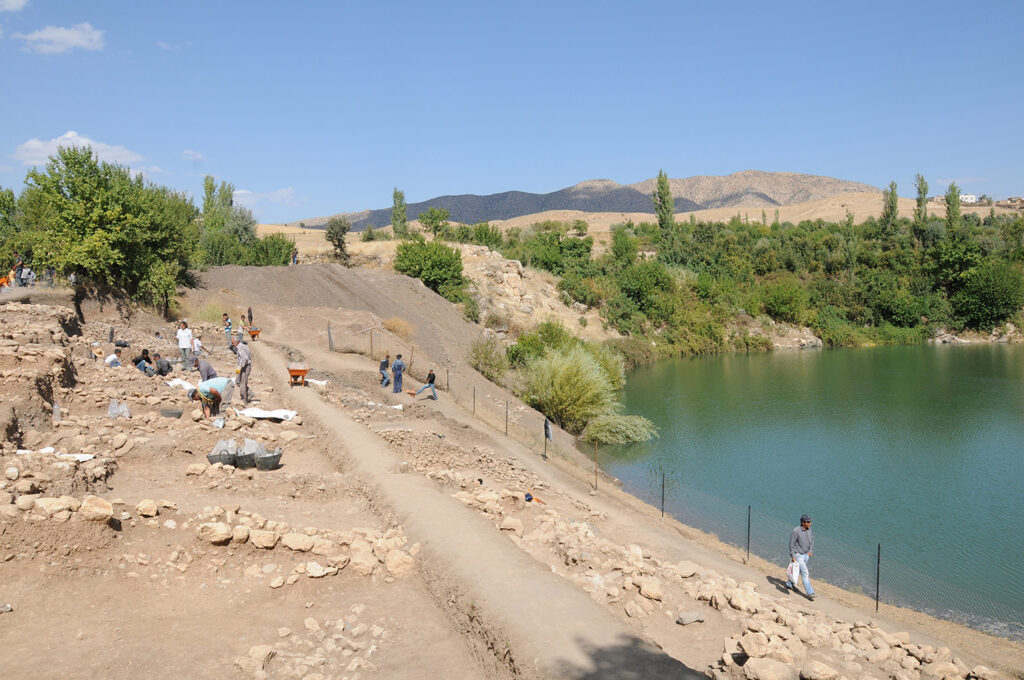
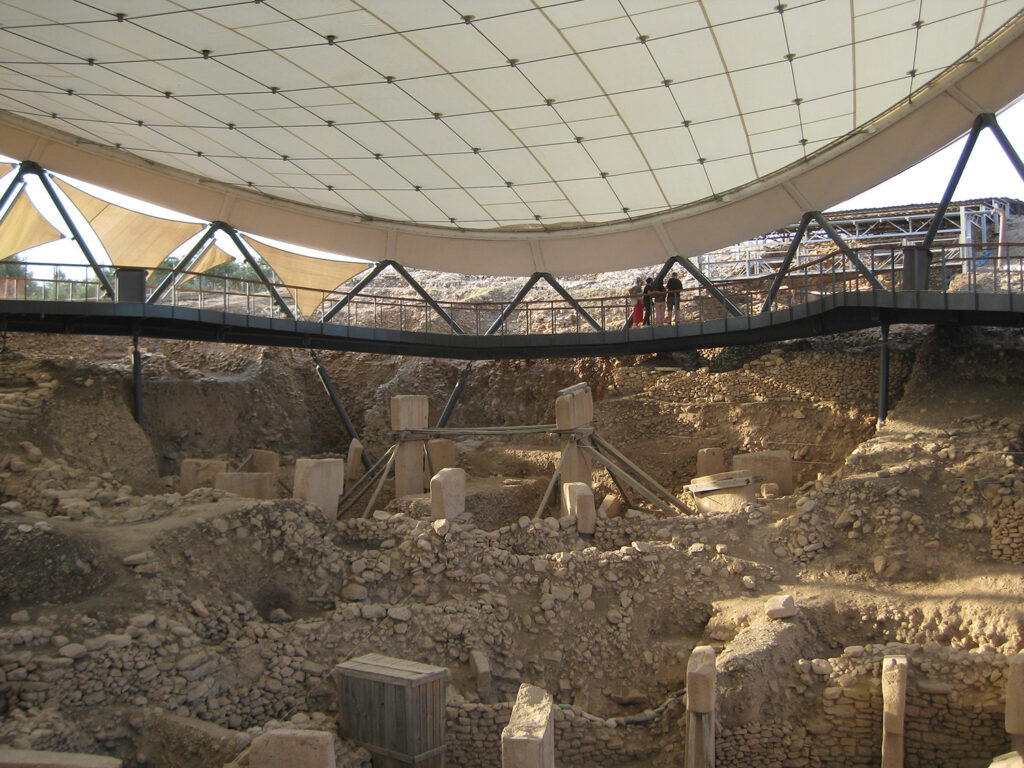
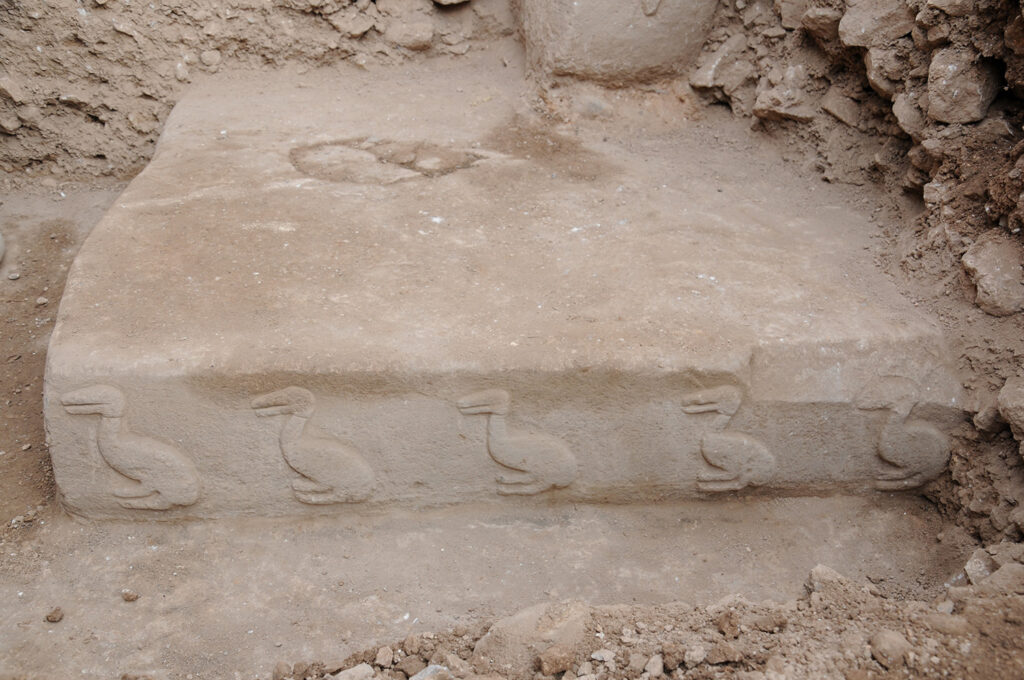
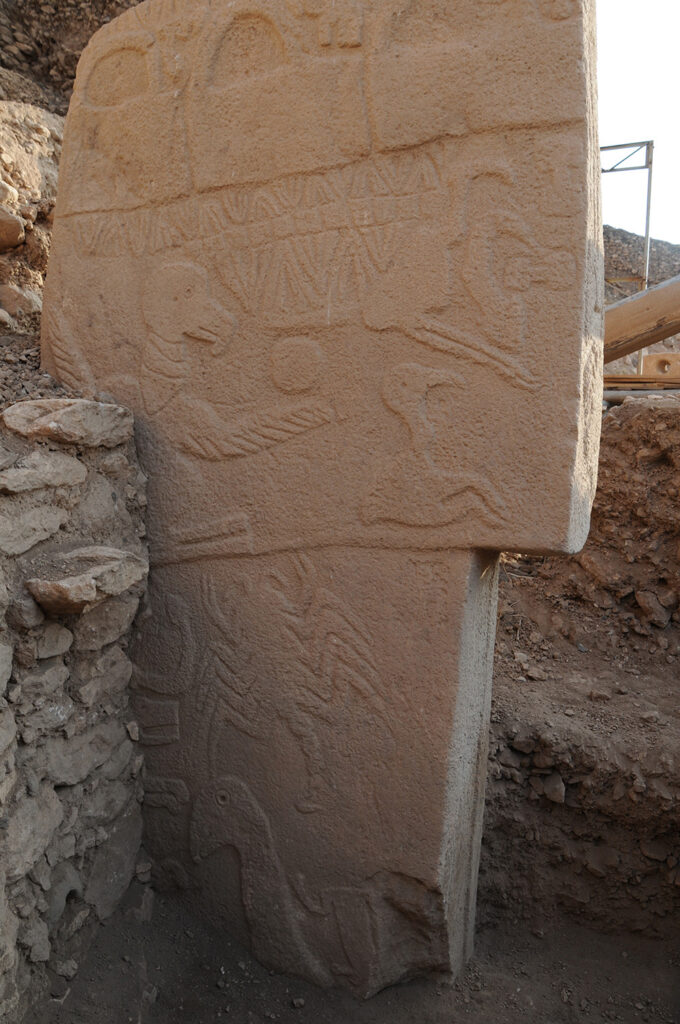
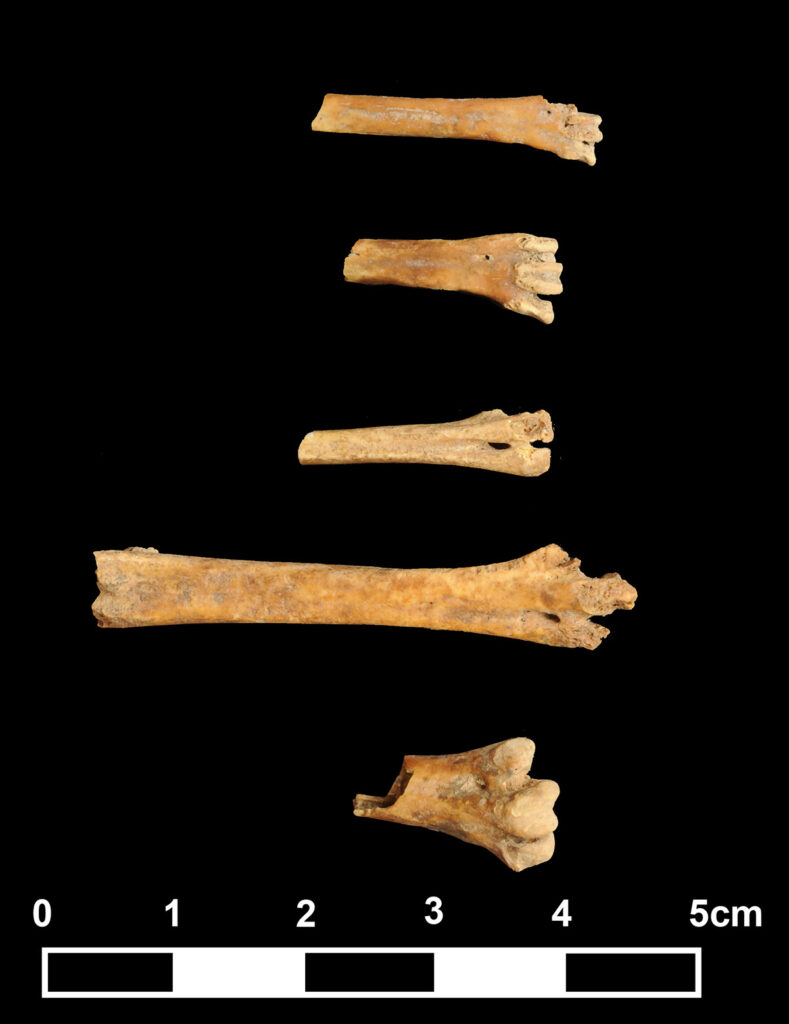
(Photo: N. Pöllath, SNSB-SPM)
Long-lived lakes as driving force behind the evolution of freshwater snails
Bayerische Staatssammlung für Paläontologie und Geologie
In long-lived lakes that existed for millions of years freshwater snails developed a particularly high diversity of species. A new study by SNSB paleobiologist Thomas A. Neubauer now shows the importance of these ecosystems for the evolution of freshwater snails on a global and deep-time scale. Neubauer has summarized the evolutionary history of snails in freshwater ecosystems over the past 340 million years. Analysis of literature and available data on distributions and diversity of species through time led to a new understanding of long-lived lakes as islands of evolution.
Snails (Gastropoda) are a stroke of luck for paleontologists: because of their hard shells, these animals are very often preserved as fossils. Snails therefore form an important and well represented group of animals in the fossil record of Earth’s history. Most snail species lived in the sea, but fossils of terrestrial and freshwater snails are also commonly found by paleontologists.
Thomas A. Neubauer, curator at the Bavarian State Collection of Paleontology and Geology (SNSB-BSPG) compiled the most extensive data set to date for fossil freshwater snails in a review to identify patterns and relationships in their evolutionary history. He analyzed the global expansion and distribution of species from their early beginnings in the Carboniferous period, about 340 million years ago, to the Ice Age (Pleistocene), about 12,000 years ago.
The new study on the evolutionary history of freshwater snails has now shown, among other results, that so-called long-lived lakes were the driving force behind the evolution of snails. These lakes often existed for hundreds of thousands or several million years in Earth’s history. In these ecosystems, the snails developed a particularly high diversity of species, often with special morphological adaptations. An example from the recent geological past is Lake Pannon, which stretched between Austria in the west and Romania in the east about 11.6 to 4.5 million years ago. At its greatest expansion, the lake covered an area about two-thirds the size of Germany. This paleolake preserved the highest known diversity of freshwater snails in the world so far. During the more than 7 million years of its existence, Lake Pannon was home to about 580 species and produced many unique evolutionary lineages. Today‘s long-lived (ancient) lakes, such as Lake Ohrid in the Balkan Peninsula, Lake Baikal in Siberia, and Lakes Malawi and Tanganyika in East Africa, are comparable islands of evolution.
“These rare ecosystems are archives of evolution,” Neubauer says. “Their longevity – we’re talking often several million years – makes them very different from most other lakes, which are often only a few thousand years old. They allow a closer look into how species change through time. Time plays the decisive role in evolution. Only in long-lived ecosystems species have enough time to ‘experiment’. The most extraordinary examples of morphological changes, special ecological adaptations or size increases in snails come from long-lived lakes. Similar examples exist for many other animal groups.”
Long-lived lakes have influenced the diversity and distribution of freshwater gastropods worldwide. Their formation and longevity are determined by tectonic and climatic processes over millions of years. These ancient ecosystems are rare and important islands for the development of freshwater organisms – a so-called ecological opportunity, according to Neubauer, where animals and plants have been able to flourish undisturbed over long periods of time and continue to do so today.
Publication:
Neubauer, T.A. (2023), The fossil record of freshwater Gastropoda – a global review. Biol Rev. https://doi.org/10.1111/brv.13016
Contact:
Dr. Thomas A. Neubauer
SNSB – Bayerische Staatssammlung für Paläontologie und Geologie
Richard-Wagner-Straße 10, 80333 München
E-mail: neubauer@snsb.de
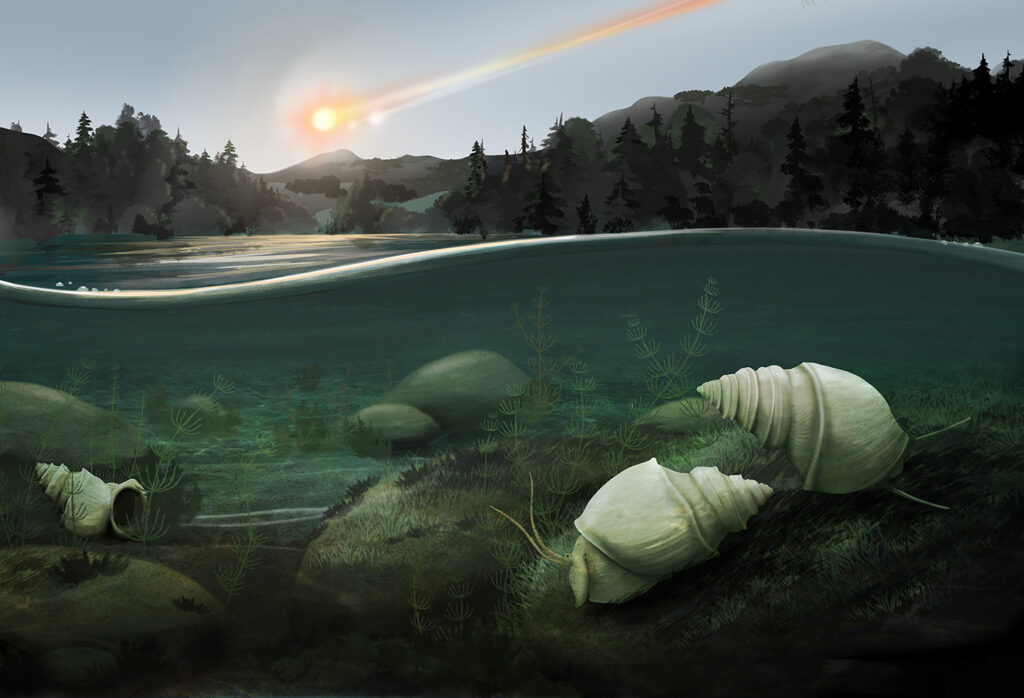
Artist Alexandra Viertler
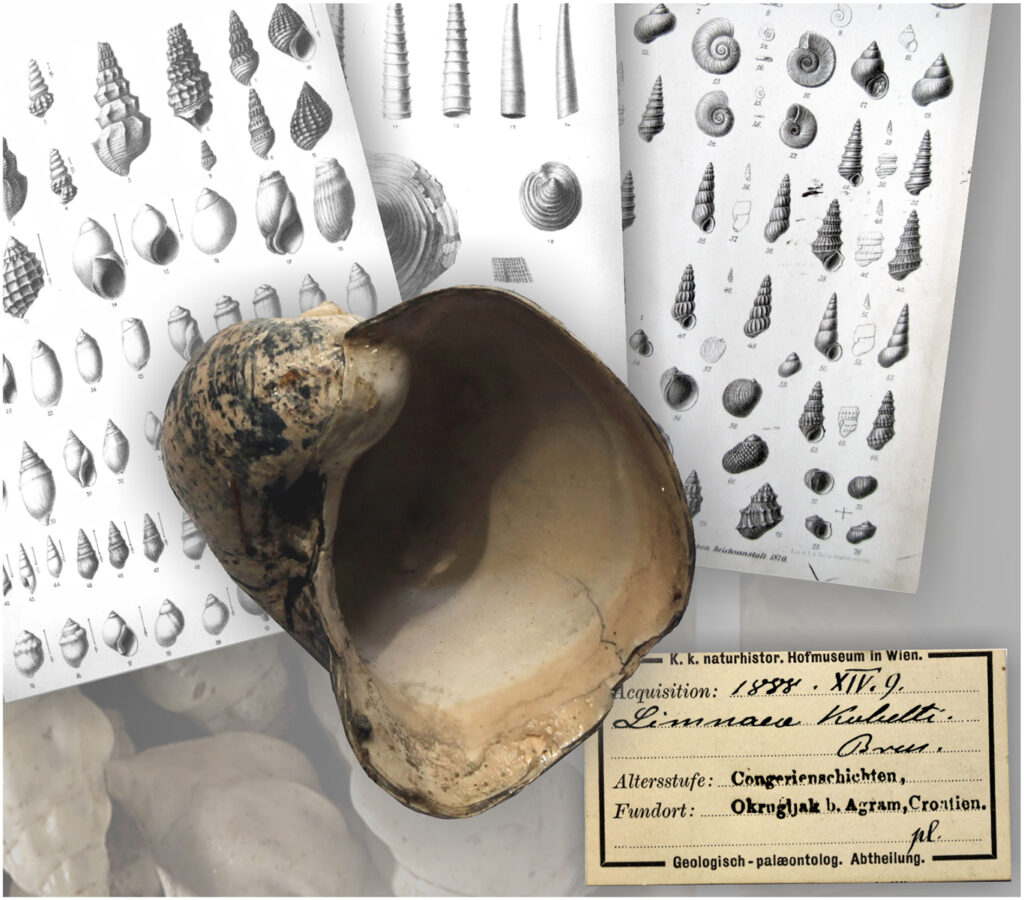
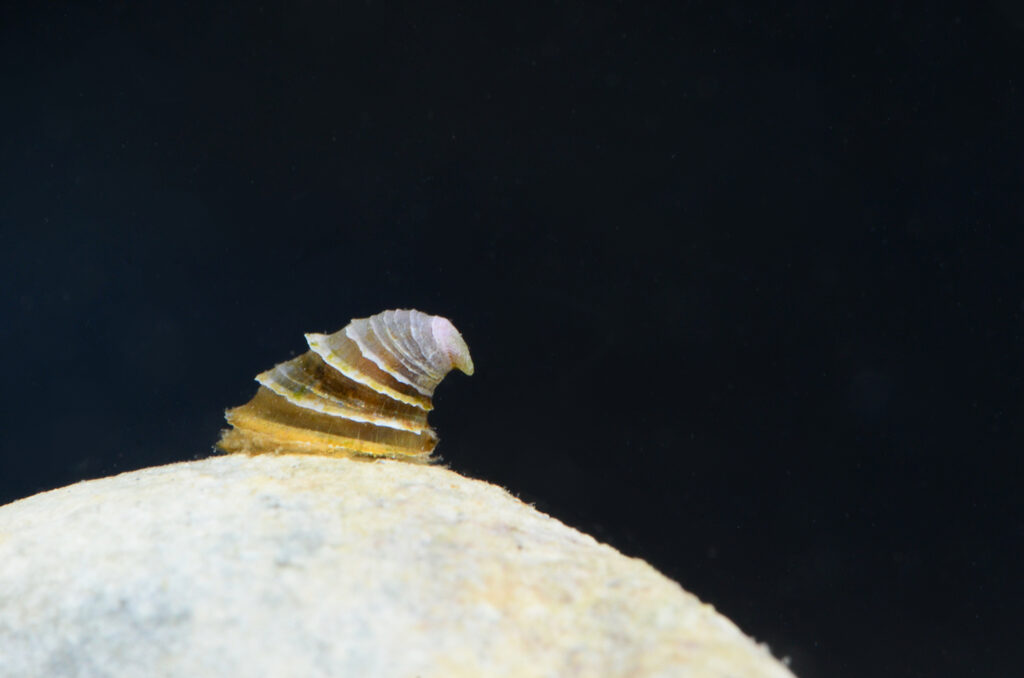
Bavaria’s digital treasury bavarikon presents the artistic world of fungi of the Botanische Staatssammlung München
Two valuable collections of fungi watercolours preserved at the Botanische Staatssammlung München (SNSB-BSM) are now available on the Bavarian state‘s website „bavarikon“, an online service provided by the Bayerische Staatsbibliothek. The illustrations by the two artists and fungi experts Konrad Schie-ferdecker and Dr. Fritz Wohlfarth are not only scientifically important, but they are also a unique artistic and cultural treasure: The collection data previously only available on international natural science portals is now published Bavaria’s digital treasury.
The approximately 3,300 scientific illustrations of fungi are maintained at the Bavarian State Collection of Botany (Botanische Staatssammlung München – BSM). Their digital indexing and presentation on the internet started in 2000. The data sets were among the first botanical objects available on internatio-nally renowned biodiversity data networks such as the Global Biodiversity Information Facility (GBIF). As part of the initiative of the Bavarian State Ministry of Science and Art, the data scientists and software developers of the SNSB IT Center now organized the technical transformation of the data to integrate the two digital collections of fungi watercolors by Konrad Schieferdecker (1902 – 1965) and Dr. Fritz Wohlfarth (1906 – 2005) into the infrastructure of the online portal bavarikon.
bavarikon is the internet portal of the Free State of Bavaria for the presentation of art, culture and stocks of knowledge from Bavarian institutions. It provides worldwide free access to a broad spectrum of cultural assets and is aimed at both the culturally interested public and academic users. More than 440,000 items from over 150 cultural institutions are available online so far. These now include the Bavarian Natural History Collections (Staatliche Naturwissenschaftliche Sammlungen Bayerns – SNSB) with their botanical state collections (BSM). bavarikon is a joint project of the Bavarian State Ministry of Science and the Arts and the State Ministry of Digital Affairs. The Bayerische Staatsbibliothek is respon-sible for the ongoing editorial, technical and organizational operation.
The Bavarian State Collection of Botany houses around 3.2 million objects, mainly dried plants, fungi and lichens. The Schieferdecker and Wohlfarth fungi watercolor collections document many native fungi species with their appearance and detailed structures and features, as well as the time and place of their discovery. “The two collections present 3,300 magnificent artworks of scientific botanical pain-ting of the second half of the last century. In the naturalistically correct depictions, the craftsmanship and artistic skill of Schieferdecker and Wohlfarth – combined with their specialist scientific expertise – becomes clear,” explains Dr. Dagmar Triebel, responsible collection curator and head of the digitization project.
Ever since Carl von Linné began creating herbaria and fungaria, collections of dried plants and fungi, the visual documentation of the shape and appearance of the objects in their living state has played an important role. Unlike other botanical objects, fungi lose both shape and color during the drying pro-cess. In addition to the dried specimens images are necessary to identify species.
“With the widespread introduction of color photography in the 1970s, artistic watercolors are rarely added to collection objects at the Bavarian State Collection of Botany,” regrets Prof. Gudrun Kadereit, director of the Bavarian State Collection of Botany as well as the Botanical Garden Munich-Nymphenburg. “Therefore, digitization and preservation of these historical illustrations is more im-portant than ever. The images are real treasures of knowledge. Their precise representation, richness of detail and naturalistic focus on relevant features are currently gaining new importance in the age of AI.”
The bavarikon platform now makes this artistic digital world of fungi of around 1,600 native species accessible to interested citizens. The realization of the technical connection to bavarikon opens up new possibilities for data exchange between library and archive services and Diversity Workbench-based data repositories of natural science research collections.
The Bavarian State Collection of Botany is part of the Bavarian Natural History Collections (SNSB). It was founded in 1813 as the “Herbarium Regium Monacense” (Royal Munich Herbarium) by King Max I Joseph and the Bavarian Academy of Sciences and Humanities (Bayerische Akademie der Wissenschaf-ten). It houses more than 3.2 million herbarium specimens – including historical specimens, collected in the late 17th century.
Links:
- Collection of fungi watercolours by Dr. Fritz Wohlfarth in bavarikon
- Collection of fungi watercolours by Konrad Schieferdecker in bavarikon
- Botanische Staatssammlung München
- bavarikon – Bavaria’s digital treasury
Contact:
Dr. Dagmar Triebel
SNSB Botanische Staatssammlung München & SNSB IT Zentrum
Tel.: 089 17861 252
E-mail: triebel@snsb.de
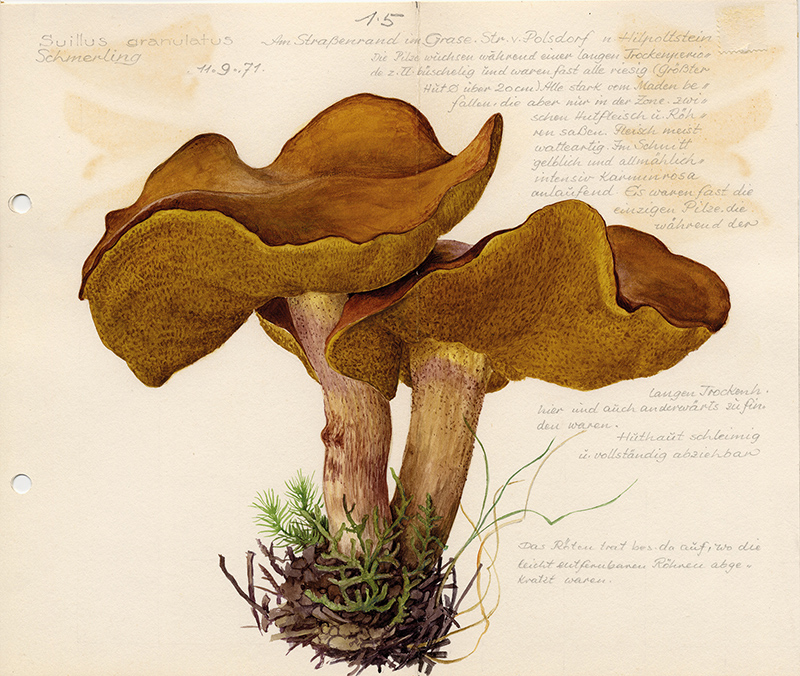
(Größe: 19,5 x 23,0 cm) (Foto: SNSB-BSM)
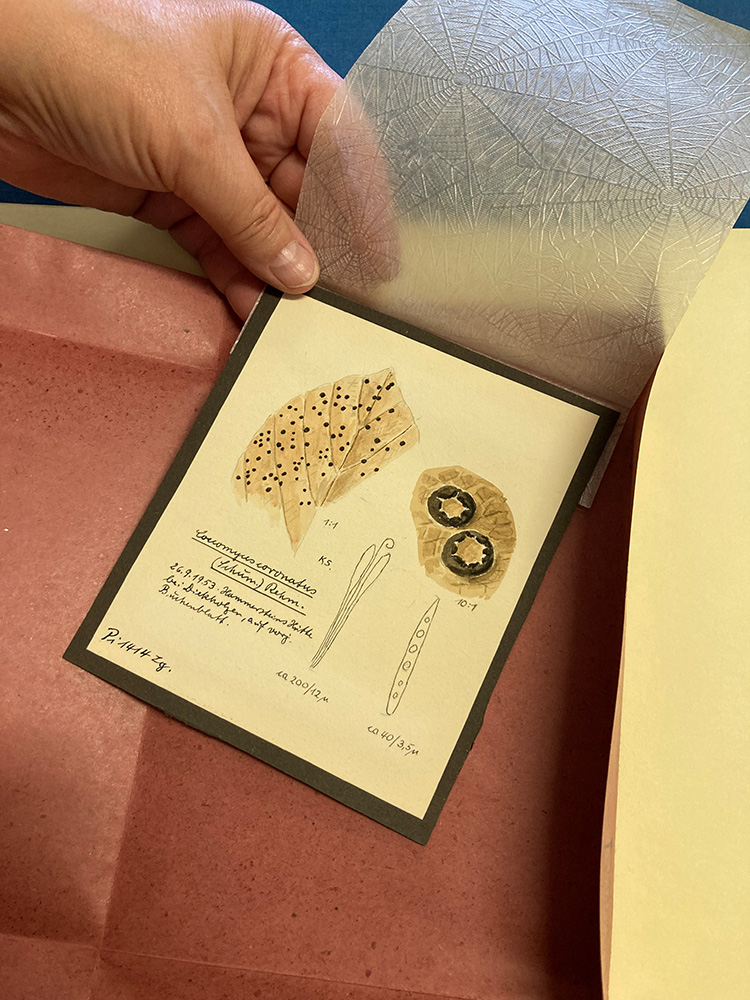
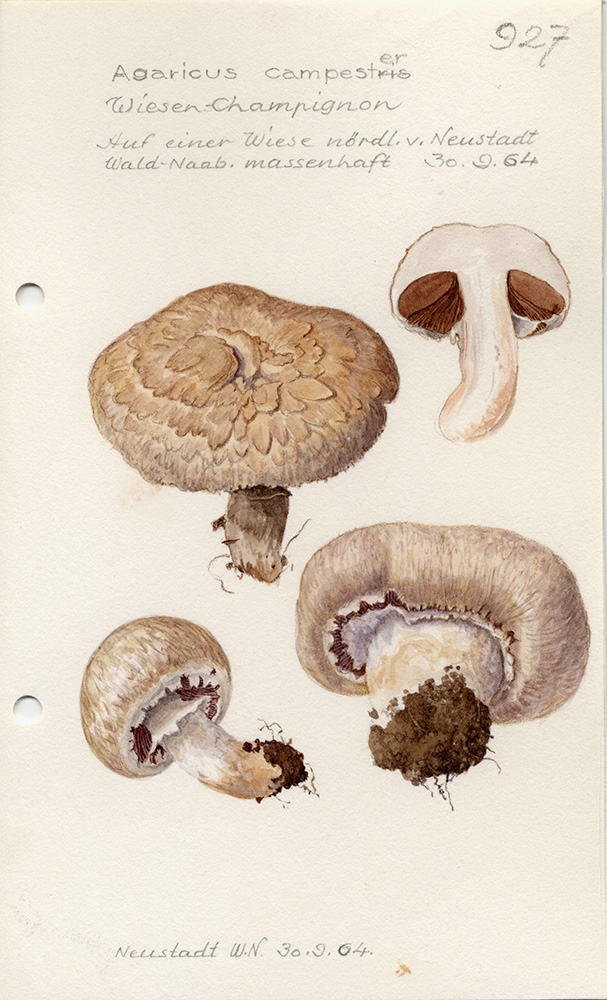
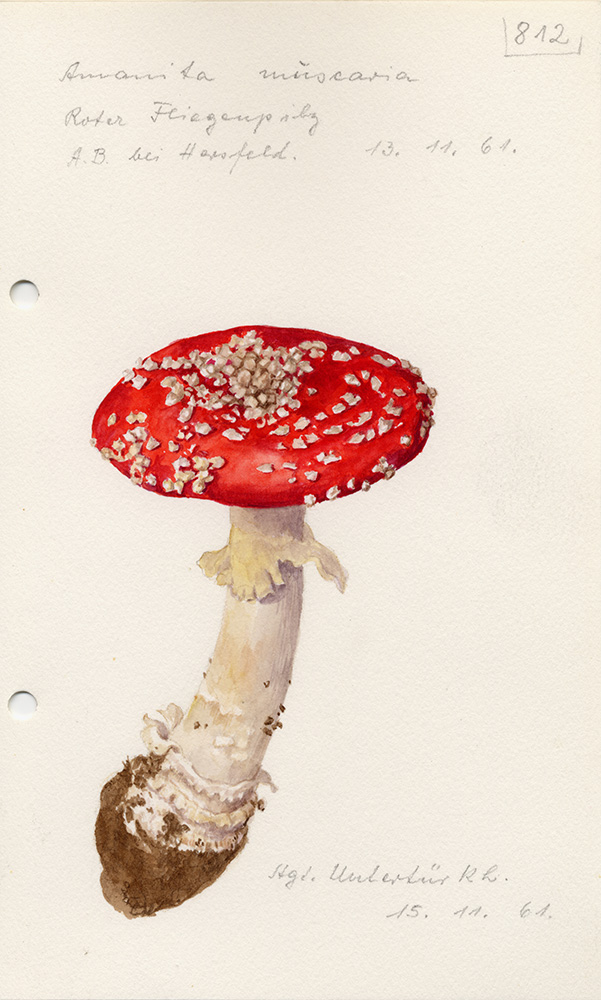
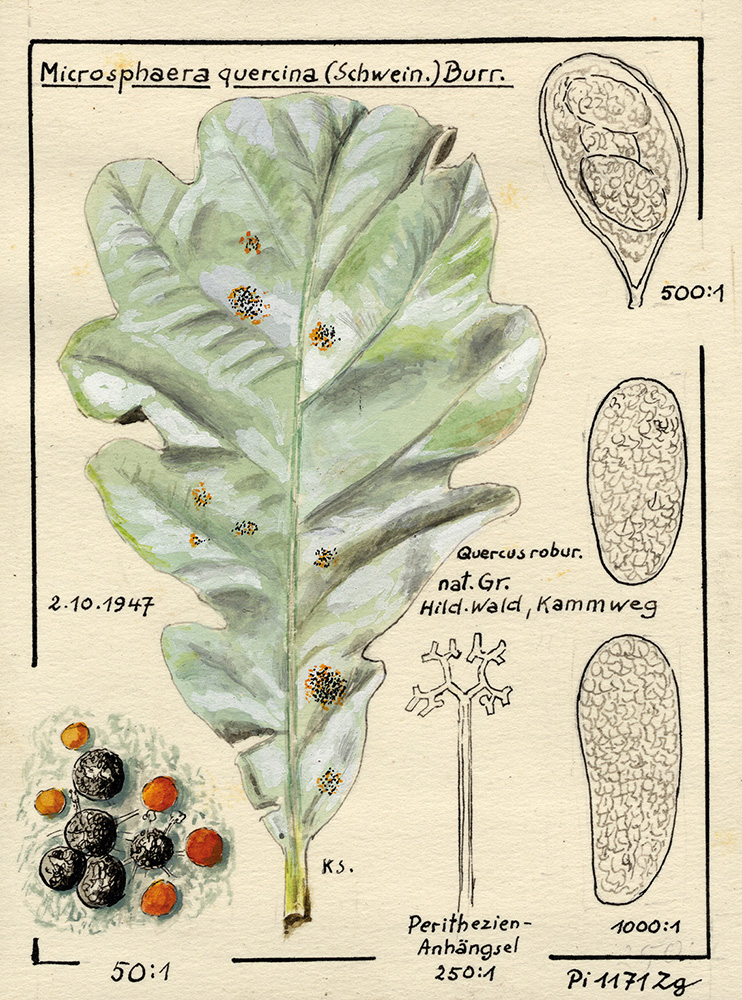
Competition for food? Jaw analyses show what cave bears and brown bears ate
Zoologische Staatssammlung München
The differences are in the details: Special 3D shape analyses of the jaws and dentitions of cave bears and brown bears living at the same time from the fossil site in the caves of Goyet in Belgium show their clearly different food spectrum. In contrast, the diet of brown bears living around 30,000 years ago differs only slightly from that of their North American relatives still living today. SNSB zoologist Anneke van Heteren has now published her comparative study together with a colleague from the Royal Belgian Institute of Natural Sciences (RBINS) in the scientific journal Boreas.
The brown bear Ursus arctos living today is the closest living relative of the cave bear Ursus spelaeus, which became extinct around 25,000 years ago. 1.3 million to 25,000 years ago, brown bears and cave bears lived side by side in the same areas and probably competed for plant food, including in the Namur region of Belgium. The caves of Goyet and Trou des Nutons contain the remains of both bear species, which are about 30,000 years old.
In their new study, Anneke van Heteren, mammal curator at the Zoologische Staatssammlung München (SNSB-ZSM), and her colleague Mietje Germonpré of the Royal Belgian Institute of Natural Sciences (RBINS) showed that the two contemporaries fed differently. The cave bear was a pure vegan, whereas the brown bear was an omnivore even then – as it is today. The shape and biomechanics of the jaws of the two bear species differ significantly. But the researchers were also able to detect small differences in the jaws of the fossil brown bears compared to their conspecifics still living today. “Presumably, the fossil brown bears from Belgium ate slightly more plant food than the brown bears from North America today,” Anneke van Heteren, lead author of the paper, interprets the results.
Anneke van Heteren and her Flemish colleague also analyzed cubs of cave bears from Belgium as part of their work. Their jaws were probably less well suited to chewing solid food than those of adult cave bears. “Presumably, the young bears were also still being fed milk by their mothers. Their jaws first had to adapt to the later development of their permanent dentition,” Anneke van Heteren adds.
The biomechanical differences in the jaws are particularly evident in their gape angles when chewing their food. The researchers from Munich and Belgium used what is known as geometric morphometrics for their studies. This is the measurement of skeletal parts with the help of measuring points, so-called landmarks. The method allowed the researchers to visualize the bears’ jawbones in three dimensions and compare them using statistical methods.
Publication:
van Heteren, A. H. & Germonpré, M. (2023) Geometric morphometric assessment of the fossil bears of Namur, Belgium: Allometry and ecomorphology. Boreas. https://doi.org/10.1111/bor.12629
Contact:
PD Dr. habil. Anneke H. van Heteren
SNSB – Zoologische Staatssammlung München (SNSB-ZSM)
Münchhausenstraße 21, 81247 München
Tel.: +49 151 651 617 15
E-Mail: vanheteren@snsb.de
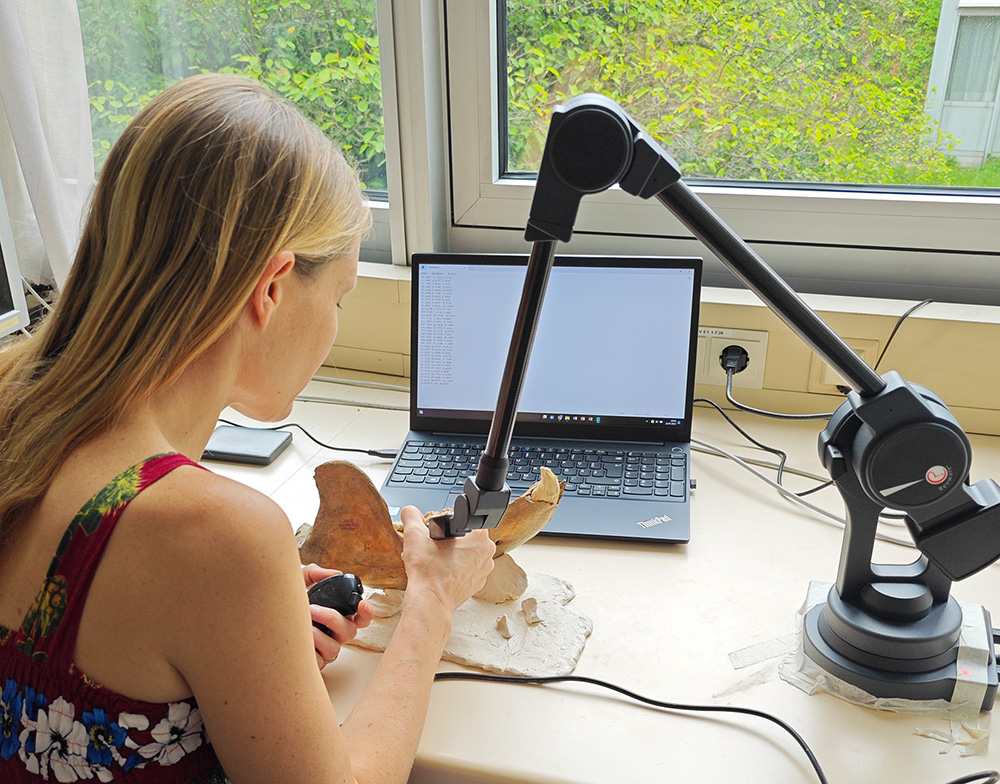
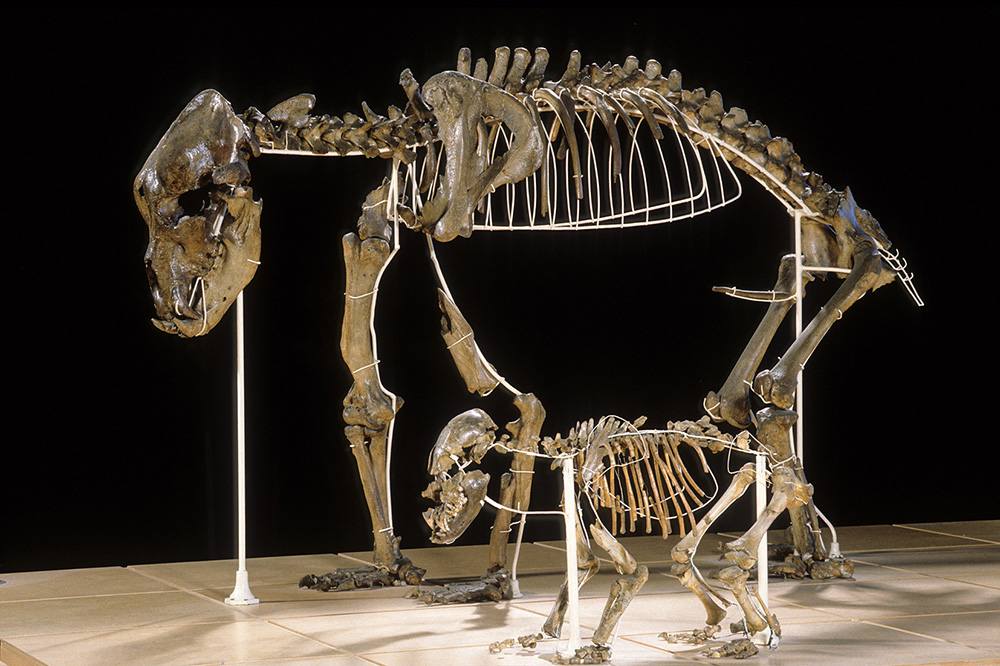
BIOTOPIA Lab
Website BIOTOPIA Lab: biotopialab.snsb.de
Governance
Provisional management Naturkundemuseum Bayern: Dr. Michael Apel
Founding director Naturkundemuseum Bayern: Prof. Dr. Michael John Gorman
Management BIOTOPIA Lab: Ursula Wöst
The BIOTOPIA Lab is a dynamic exhibition space, an event platform and an experimental workshop all at the interface of science, art, design and culture. At the same time, the BIOTOPIA Lab offers an insight into the development process of the future Naturkundemuseum Bayern.
With workshops, raised garden beds, an experimental space, changing mystery objects and special exhibitions as well as interdisciplinary events, it arouses curiosity about the topics of the future Naturkundemuseum Bayern.
To enter, you must pass through the main entrance of the Botanical Garden:
Botanical Garden München-Nymphenburg
Menzinger Straße 61 – 65
80638 München
Contact
BIOTOPIA Lab
Botanisches Institut
Menzinger Str. 67
80638 München
Tel.: 089 178 61-411
Email: lab@biotopia.net
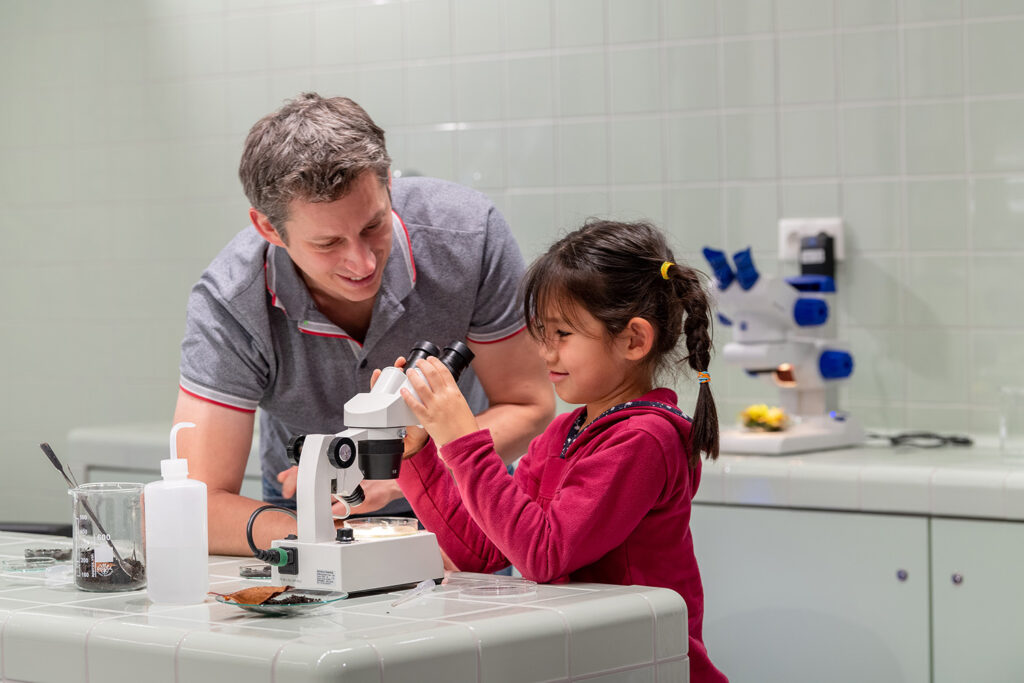
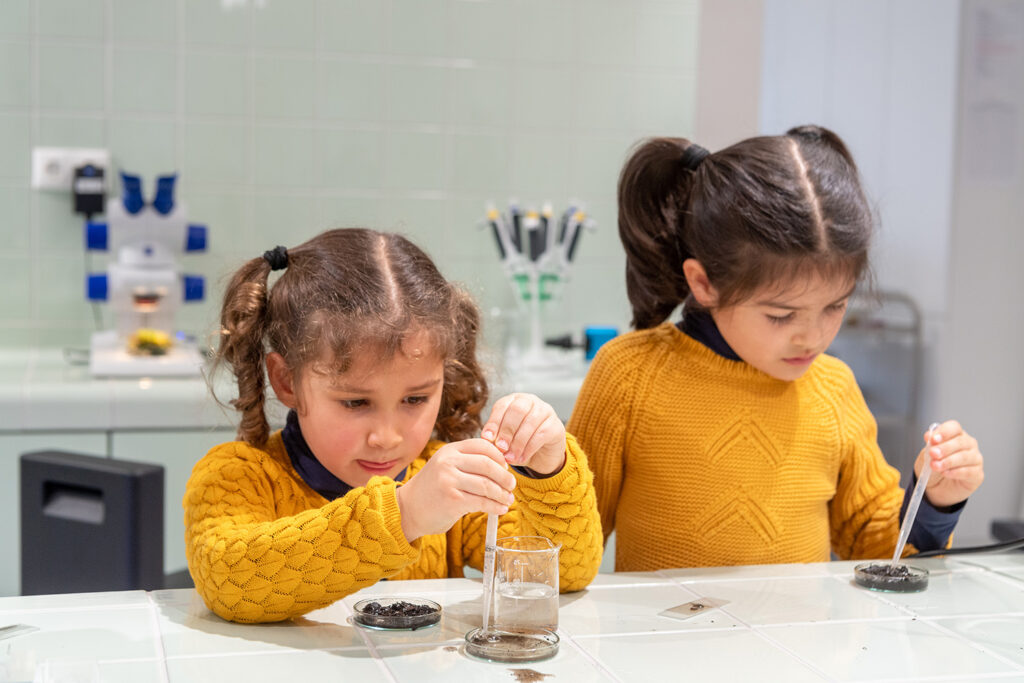
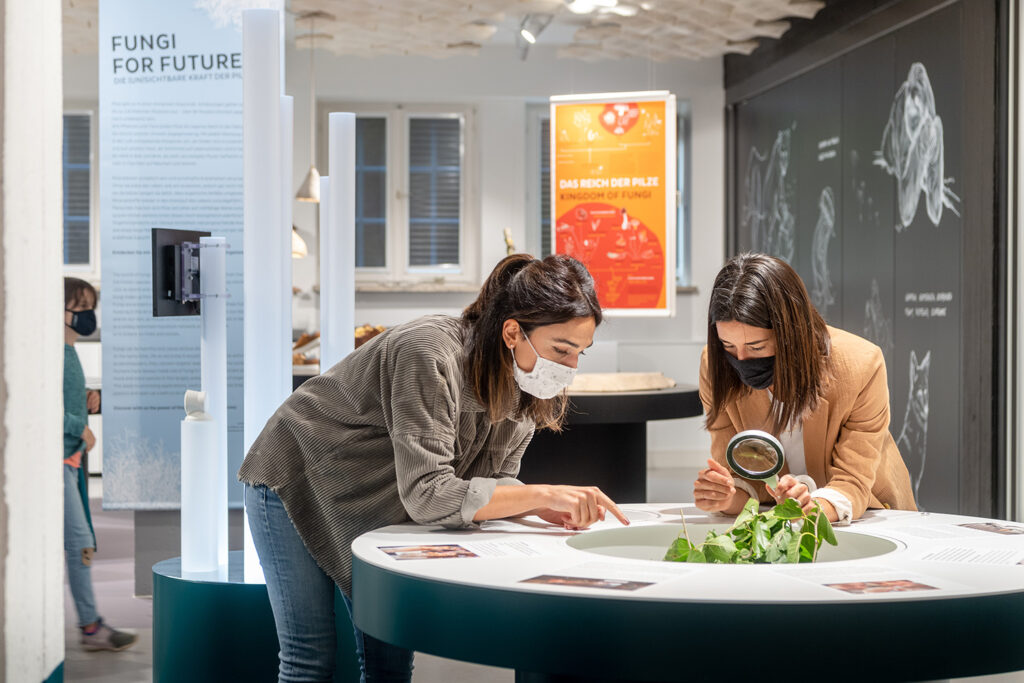
Researchers find new species of bizarre crocodile relatives in East Greenland
Paleontologists from Portugal, Denmark and Germany have discovered a new species of phytosaur – a bizarre crocodile-like reptile from the Late Triassic – in more than 215 million-year-old river and lake sediments in Jameson Land, East Greenland. SNSB paleontologist Dr. Oliver Wings was also involved in the discovery and description of the fossil. The researchers recently published their findings in the Journal of Vertebrate Paleontology.
Four specimens of a new phytosaur species were discovered by paleontologists in Jameson Land in East Greenland. Also involved in the excavations at the Triassic fossil site (215 million years old) was Dr. Oliver Wings, director of the Natural History Museum Bamberg, one of five regional museums of the SNSB. The findings surprised even experienced paleontologists. Paleontological expeditions to Jameson Land have been done since the early 20th century, but only during expeditions in 2012 and 2016 the first phytosaur remains were found.
Phytosaurs lived on nearly every continent during the Late Triassic period and became extinct about 204 million years ago. The animals resembled crocodiles and lived like crocodiles, but are only distantly related to them. They have a particular characteristic that differentiates from crocodiles and other reptiles. “In these reptiles, the nostrils are retracted to the back of the skull, near the eyes,” explains Víctor López-Rojas, a doctoral student at NOVA University of Lisbon and first author of the study. The researchers found parts of skulls, as well as bone remains from the trunk and limbs of the new species from Greenland and named the fossil Mystriosuchus alleroq. The remains belong to at least four individuals of juveniles and adults. This also allowed the scientists to study their ontogeny, their biological development. The study involved researchers from NOVA University of Lisbon, Portugal, the University of Copenhagen and Geomuseum Faxe, Denmark, as well as the University of Bonn and the Natural History Museum Bamberg.
The new species from Greenland is closely related to the European phytosaurs known so far. This finding fits with previous studies on the close relationship of many animal groups from East Greenland and Europe at the end of the Triassic such as giant amphibians, fish or early dinosaurs.
Publication
Víctor López-Rojas, Lars B. Clemmensen, Jesper Milàn, Oliver Wings, Nicole Klein & Octávio Mateus (2023) A new phytosaur species (Archosauriformes) from the Upper Triassic of Jameson Land, central East Greenland,Journal of Vertebrate Paleontology,DOI: 10.1080/02724634.2023.2181086
Contact
Dr. Oliver Wings
Naturkundemuseum Bamberg
Tel: 0951 8631 246
E-mail: wings@snsb.de
More Info
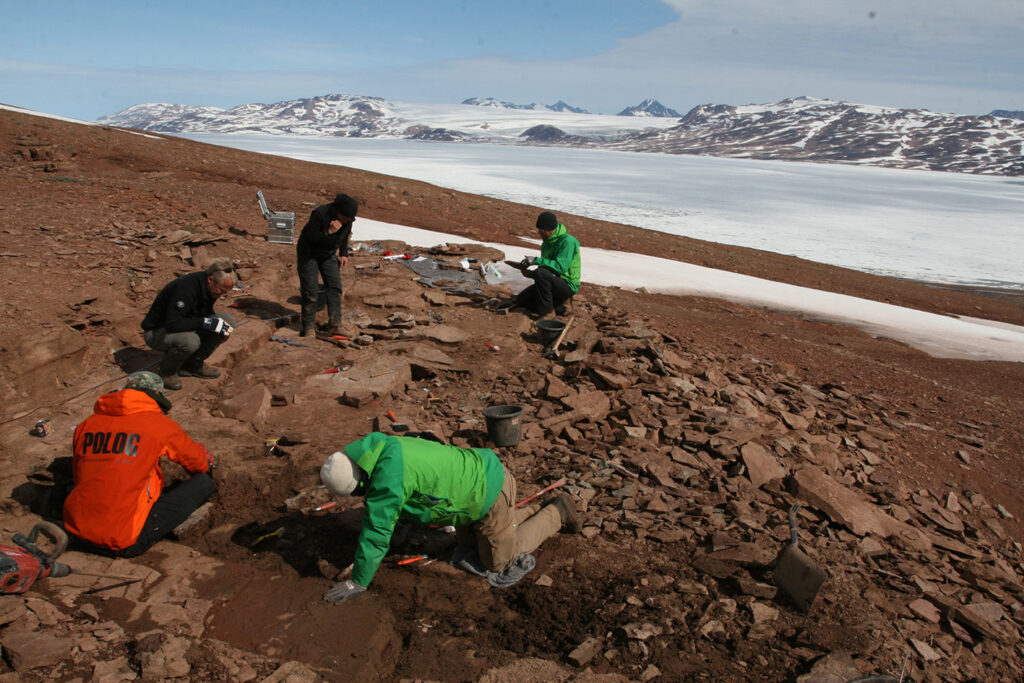
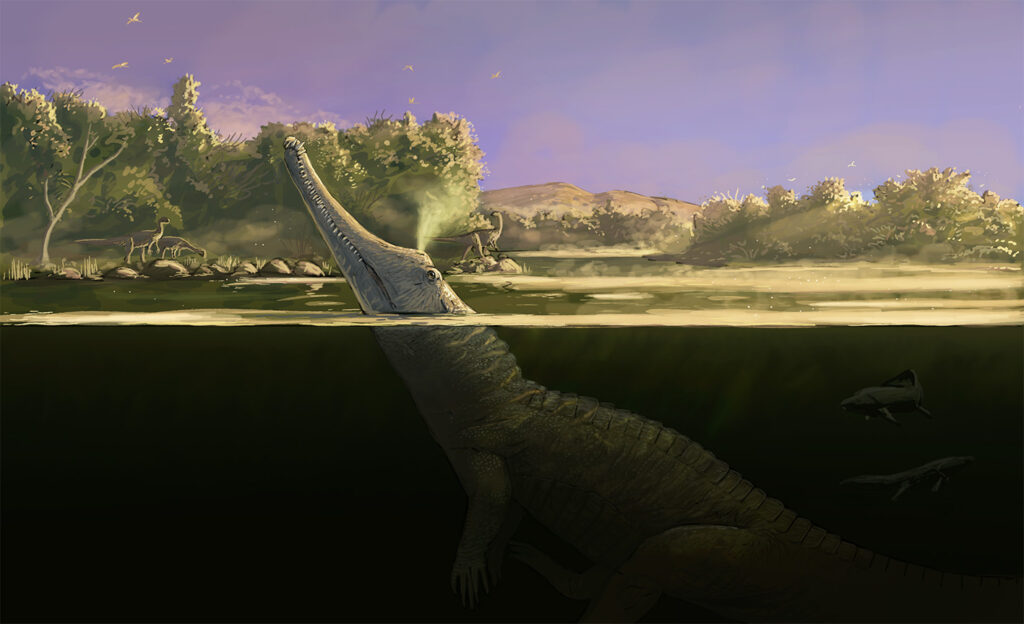
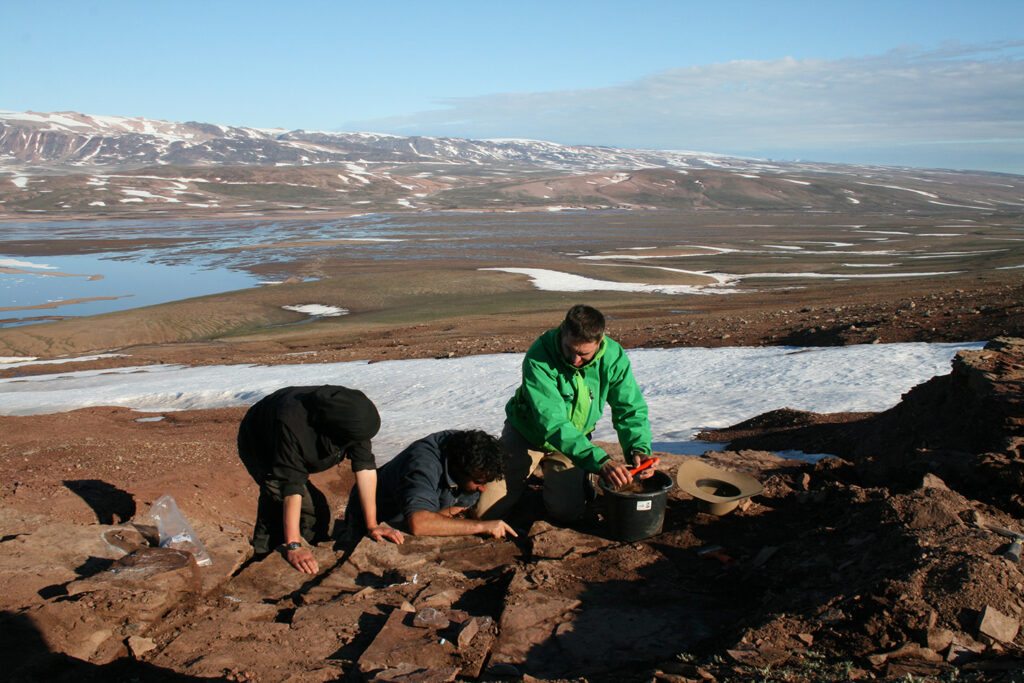
Header: Phytosaur-Paleoart – by Victor Carvalho
Contact
Staatliche Naturwissenschaftliche Sammlungen Bayerns
Menzinger Straße 71, 80638 München
Opening hours: Monday to Friday 10 to 12 AM and 2 to 3 PM
Tel. 089 179 99 – 240, Fax 089 179 99 – 255
Director General
Prof. Dr. Joris Peters
Phone: 089 178 61 – 111
E-Mail: peters@snsb.de
Secretary General
Dr. Elisabeth Schepers
Phone 089 179 99 – 241,
E-Mail: generalsekretariat@snsb.de
Scientific Management
Greta Küppers (parental leave replacement)
Phone 089 17861 – 122,
E-Mail: kueppers@snsb.de
Central Administration
Team Assistance
Anette Kessler, Phone 089 179 99 – 240, E-Mail: generalsekretariat@snsb.de
Budget
Management: Steven Daskalov, Phone 089 179 99 – 249, E-Mail, daskalov@snsb.de
Processing:
Vida Horvat, Phone 089 179 99 – 243, E-Mail: mittelbewirtschaftung@snsb.de
Thomas Scherlies, Phone 089 179 99 – 244, E-Mail: mittelbewirtschaftung@snsb.de
Ulla Biener-Miller, Phone 089 179 99 – 246, E-Mail: drittmittel@snsb.de
Human Resources
Management: Susann Windisch, Phone 089 179 99 – 245, E-Mail: personal@snsb.de
Processing:
Mandy Kolbe, Phone 089 17999 – 242, E-Mail: personal@snsb.de
Legal affairs
Nicole Friedlin, Phone 089 17999 – 247, E-Mail: friedlin@snsb.de
Construction and Real Estate
Pietro Papic Boero, Tel.: 089 178 61 – 440, E-Mail: papic@snsb.de
Alexandra von Uckermann, Tel.: 089 178 61 – 439, Email: uckermann@snsb.de
Communications & Media Relations
Management: N.N.
Dr. Thassilo Franke, link collections – Naturkundemuseum Bayern, Phone 089 178 61 – 446, E-Mail: franke@snsb.de
Katja Henßel, press office, websites, Phone 089 178 61 – 121, E-Mail: henssel@snsb.de
Helene Tobollik, internal communication, Phone 089 17861 – 123, E-Mail: tobollik@snsb.de
IT Service
N.N.
Representatives
Equal Opportunities Officers
PD Dr. Gertrud Rößner, Phone 089 2180 – 6609
Brigitte Ertl (deputy)
E-Mail: gleichstellung@snsb.de
Inclusion Officers
Bettina Schmalzl
Susann Windisch, Phone 089 17999 245
E-Mail: inklusion@snsb.de
Ombudsperson for Good Scientific Practice
Dr. Frank Glaw (deputy), Tel: 089 8107 114, E-mail: glaw@snsb.de
Data Protection Officer
Jörg Hermann, Tel: 089 200 033 580, E-Mail: info@jmh-datenschutz.de
Core Facilities
IT-Center
Prof. Dr. Alexander Nützel (Head of Collection Committee), E-Mail: nuetzel@snsb.de
Dr. Stefan Seifert (Head of IT Center), Phone 089 17861-245, E-Mail: seifert@snsb.de
Genomics Core Facility (GCF)
Prof. Dr. Gudrun Kadereit (Head of Research Committee), E-Mail: kadereit@snsb.de
Dr. Agnes Scheunert (Head of GCF), Phone 089 17861 206 E-Mail: scheunert@snsb.de
Collection Management
Prof. Dr. Alexander Nützel (Head of Collection Committee), E-Mail: nuetzel@snsb.de
Dr. Nora Battermann (Head of Collection Management), E-Mail: battermann@snsb.de
Staff Council
Bärbel Stock-Dietl (chair), Tel.: 089 8107 157
Nina Mahovlic (deputy), Tel.: 089 8107 153 and 0152 03007678
Kaja Herzog (deputy), Tel.: 089 17861 358 oder 0162 21 96 352
E-Mail: personalrat@snsb.de
Representative for Severely Disabled Persons
Nina Mahovlic, Phone 089 8107-153 and 0152 0300 7678
Stefan Sónyi (deputy), Phone 089 2180-6610
E-Mail: schwerbehindertenvertretung@snsb.de
Crown-of-thorns seastar from Red Sea is endemic species
LMU, Bavarian State Collection for Palaeontology und Geology, Bavarian State Collection for Zoology
LMU and SNSB researchers have identified coral-eating crown-of-thorns seastars in the Red Sea as distinct species that occurs only in this location.
Tropical coral reefs are among the most endangered ecosystems on Earth. In addition to climate change, coral-eating crown-of-thorns seastars (Acanthaster spp.) pose one of the biggest threats in parts of the Indo-Pacific region. Up to 40 cm in length, these creatures feed mainly on the polyps of fast-growing stony corals. Mass outbreaks are not uncommon, whereby the seastars propagate at a rapid rate and many thousands of individuals can destroy large areas of coral reef. Such mass outbreaks have become increasingly frequent over recent decades, partly because the natural enemies of the seastars have been decimated by overfishing.
Crown-of-thorns seastars are widely distributed throughout the Indo-Pacific region. They get their name from the large venomous spines that protrude from their arms. Based on regional morphological differences, various species had been described in the past. However, the relationships between them remained somewhat hazy. “It was long assumed that the first species in the genus described, Acanthaster planci, was distributed from the Red Sea and the Indian Ocean over the entire Pacific,” says Gert Wörheide, Professor of Paleontology and Geobiology at LMU. However, DNA barcoding data from a doctoral thesis supervised by Wörheide showed more than 10 years ago that A. planci can be subdivided into four strongly diverging genetic lineages, which presumably represent different species. A team led by Wörheide and Gerhard Haszprunar, Professor of Systematic Zoology at LMU, has now demonstrated with the aid of morphological investigations and genetic analyses that the crown-of-thorns seastar native to the Red Sea form a distinct species, which has been given the name Acanthaster benziei. “This underlines once again the importance of the Red Sea as an ecosystem with unique fauna and numerous endemic species,” emphasizes Wörheide. The new species name honors John Benzie, Professor at University College Cork, who has done pioneering work with his groundbreaking genetic studies on crown-of-thorns seastars in the 1990s and his comprehensive collection.
Fewer arms, thinner spines
With A. benziei, the scientists managed to describe a new species of crown-of-thorns seastar for the first time in several decades. “Although isolated particular features had already been observed in crown-of-thorns seastars from the Red Sea, such as a tendency to a more nocturnal lifestyle and probable lower toxicity of the spines, we didn’t know yet that it was actually a distinct species,” says Wörheide. The research confirmed clear differences between A. benziei and the other species of the “A. planci” species complex. In addition to characteristic sequences in the mitochondrial DNA, this included morphological features such as a lower number of arms and thinner, differently shaped spines.
“Now that we know it’s a distinct species, we can direct our attention to the biology, ecology, and toxicology of A. benziei and the other Acanthaster species,” says Wörheide. In the past, scientists had also observed a lower tendency for mass outbreaks in Red Sea crown-of-thorns seastars. “Such outbreaks are known primarily from Acanthaster cf. solaris in the western Pacific and regularly cause major damage to the Great Barrier Reef, whereas the phenomenon appears to be less severe in the Red Sea – whether species-specific characteristics are a contributing factor could be the object of future investigations,” says Wörheide. Most data that have been gathered to date on the biology and ecology of crown-of-thorns seastars comes from Acanthaster cf. solaris from the western Pacific. “By clearly distinguishing the various species of coral-eating crown-of-thorns seastars, we can carry out more detailed research into the dynamics of mass outbreaks, one of the multiple stressors that affect tropical reefs. Ultimately, this is a step in the direction of better management of reef ecosystems.”
Publication
Gert Wörheide, Emilie Kaltenbacher, Zara-Louise Cowan, Gerhard Haszprunar. A new species of crown-of-thorns sea star, Acanthaster benziei sp. nov. (Valvatida: Acanthasteridae), from the Red Sea. ZOOTAXA, 2022. DOI: 10.11646/zootaxa.5209.3.7
Contact:
Prof. Dr. Gert Wörheide
Bayerische Staatssammlung für Paläontologie und Geologie (SNSB-BSPG)
Department of Earth and Environmental Sciences, Paleontology & Geobiology & GeoBio-Center
LMU Munich
Phone: +49 (89) 2180- 6646 / or 6602
Email: geobiologie@geo.lmu.de
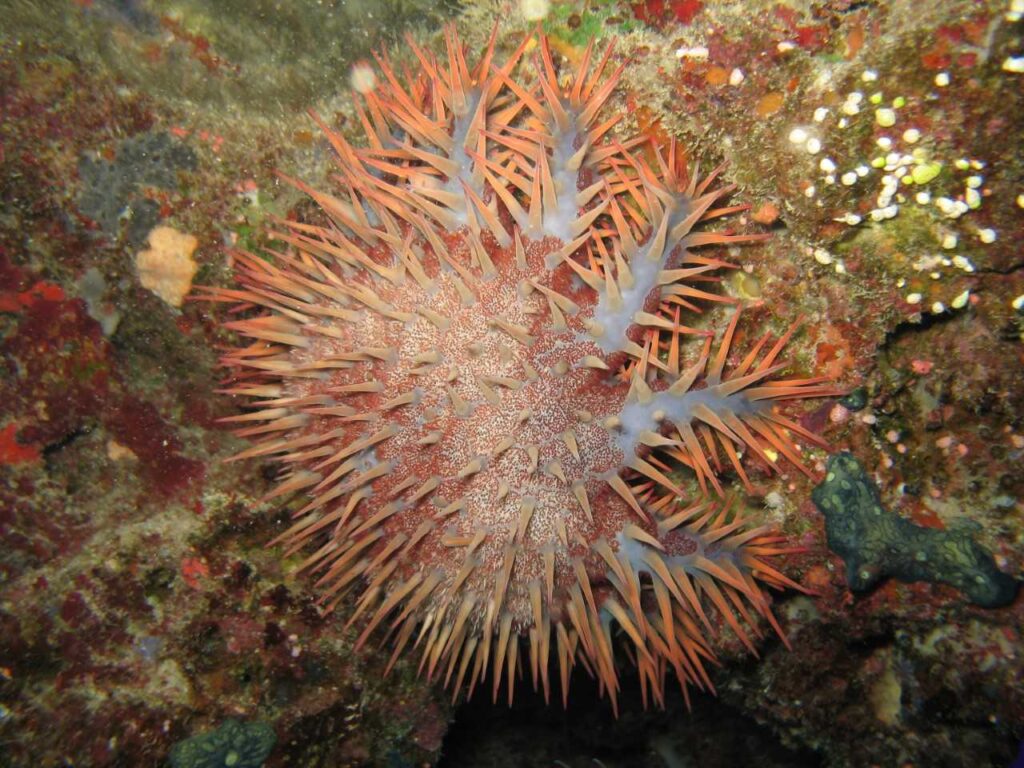
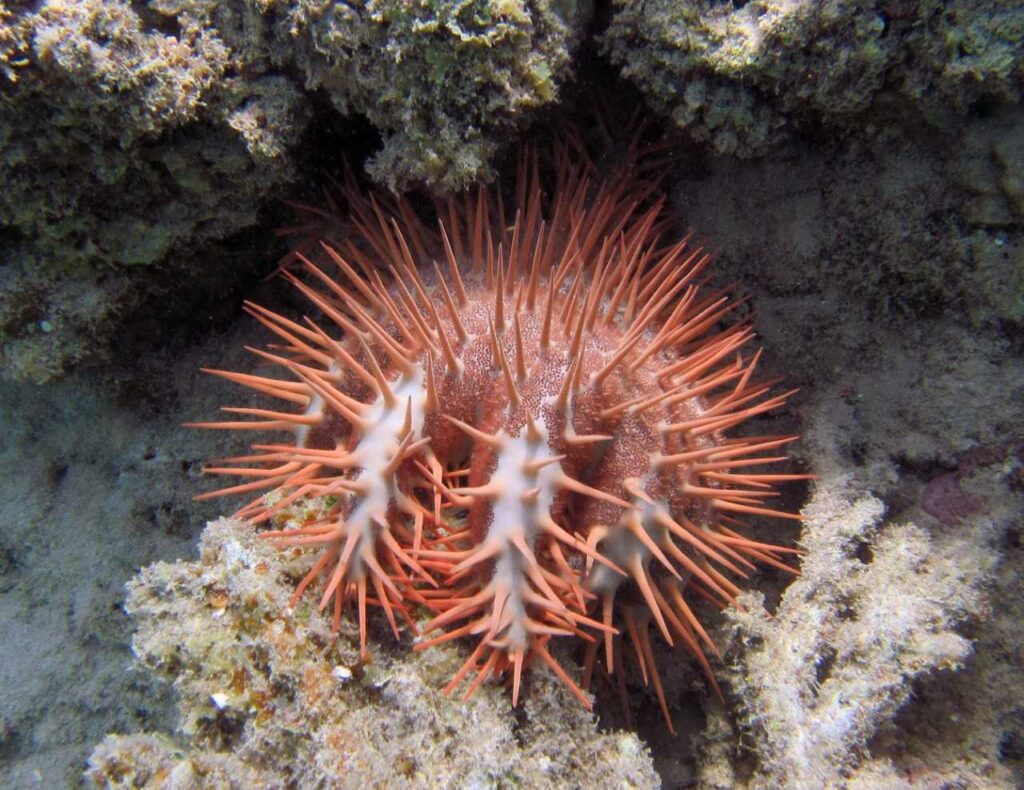
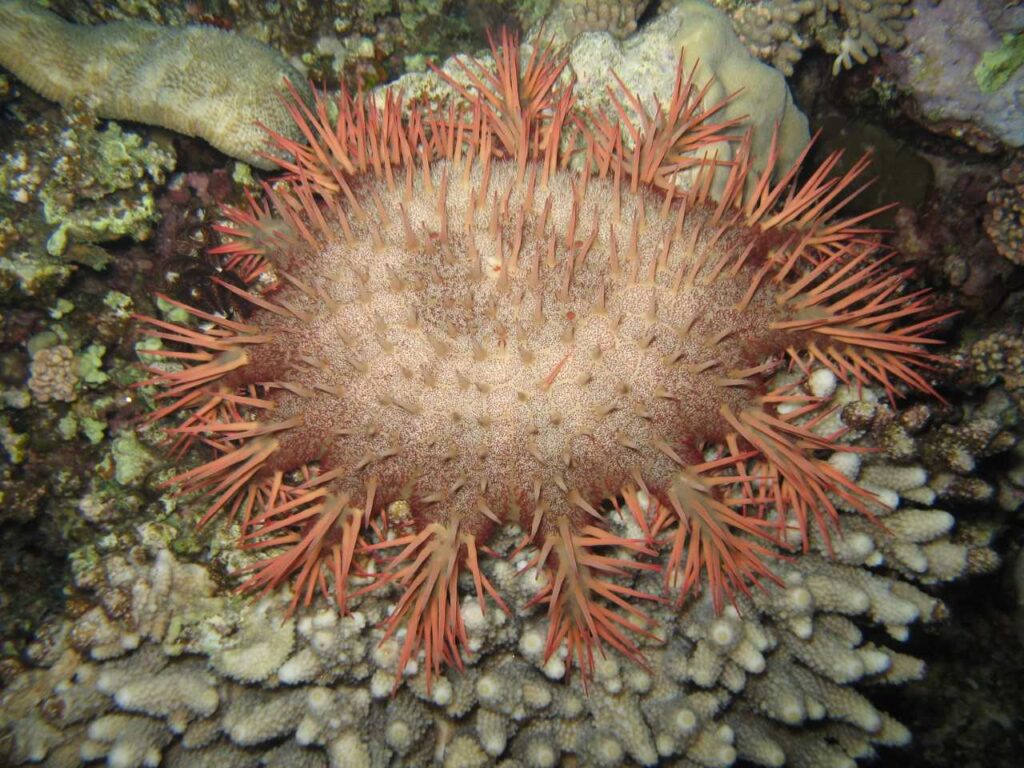
Cross-border data pipeline for the flora of the Bohemian Forest
A German-Czech research team presents a new binational data infrastructure. Over the past four years, the project “Flora of the Bohemian Forest” has made scientific data available from historical species monitoring projects in both countries as well as new data on the current plant diversity of the Bohemian Forest (Šumava). The data is publicly online available in German and Czech language. The scientists, on the Bavarian side led by the Bavarian Natural History Collections (SNSB), recently published their results in the Biodiversity Data Journal. The established services will be further developed in the coming years within the framework of the NFDI4Biodiversity Consortium and the SNSB data project on the flora of Bavaria.
The Bohemian Forest is a biologically unique area in Central Europe, which deserves special attention in the exploration and documentation of its biodiversity and nature conservation. Despite a long tradition of floristic and biogeographic research in this region in both countries, there has never been a transboundary survey and analysis. Different methodological approaches and research foci as well as linguistic and political barriers significantly limited the cooperation between experts in the past. The Bohemian Forest extends beyond the two national parks Bavarian Forest and Šumava, from the area of the Großer Arber to the Austrian Mühlviertel.
The great challenge for the biodiversity data scientists was the development of a new and sustainable technical infrastructure that brings together several million data sets from Czech and Bavarian data management systems in a dynamic and quality-controlled way. “To merge the two data management systems, the technical and content-related translation of categories, structures and formats was necessary,” explains Dr Stefan Seifert, senior biodiversity computer scientist at the SNSB IT Center. The task was to combine scientific names, information on origin, geographical localisation, endangerment status and extinction risk of the plants in a new common data infrastructure. The consolidation of all information is of great importance in order to be able to jointly develop suitable measures for the conservation of species and ecosystems on both sides of the border. This includes, for example, monitoring the population development of rare and endangered species.
In 2018, the cross-border initiative “Flora of the Bohemian Forest – Květena Šumavy – Flora Silvae Gabretae” was launched to provide data regardless of national borders. Partners are the Department of Botany at the University of South Bohemia in České Budějovice, the Bavarian Forest National Park, the Czech Šumava National Park, the Charles University Prague and the Bavarian Natural History Collections(SNSB) with its SNSB IT Center.
The new data portal on the flora of the Šumava presents information and data on occurrence and distribution of plants in German, Czech and English language, via distribution maps, species lists and species descriptions of the regional vascular plants. The website is aimed at plant and nature lovers, citizen scientists as well as professional botanists, foresters, farmers and ecologists from the Czech Republic and Germany.
The SNSB IT Center was largely responsible for the background processes of data management in the Diversity Workbench network and for data integration: the research group lead by Dr. Dagmar Triebel controlled the data import and the technical provision of historical and current distribution data of the Bavarian side of the Bohemian Forest. In addition to its expertise in data science and software development, the SNSB IT Center, as part of the Bavarian State Collection for Botany (SNSB-BSM), also provided its botanical expertise: BSM botanists took over the scientific supervision of the Bavarian species lists, the identification of difficult species, the collaboration on species profiles and the classification within the regional red List of threatened species. Data gathering in the field is done using the smartphone app DiversityMobile developed by the SNSB IT Center.
“The project has sustainably promoted intercultural exchange between Czech and German scientists. At the same time, the new technical services professionalise the exchange of biodiversity data with an environmental indicator function between the two countries. In the future, we would like to expand the digital network and also include Austrian data, thus covering the study area completely,” explains Dr. Dagmar Triebel, curator at the Bavarian State Collection for Botany and head of the SNSB IT Center. The individual services and software components will be further developed within the framework of the citizen science project “Koordinationsstelle Bayernflora” and integrated into the National Research Data Infrastructure (NFDI). The project “Flora of the Bohemian Forest” was funded by the European Union within the framework of the “European Territorial Cooperation” (ETC) programme for cross-border cooperation between Bavaria and the Czech Republic.
Publication:
Novotný, P., Seifert, S., Rohn, M., Diewald, W., Štech, M. & Triebel, D. 2022. Software infrastructure and data pipelines established for technical interoperability within a cross-border cooperation for the flora of the Bohemian Forest. Biodiversity Data Journal 10: e87254: 1-21, https://doi.org/10.3897/BDJ.10.e87254
Links
https://www.florasilvaegabretae.eu/de/
https://snsb.de/nfdi/
https://snsb.de/flora-von-bayern/
Contact:
Dr. Dagmar Triebel
Botanische Staatssammlung München / SNSB IT Zentrum
Menzinger Straße 67, 80638 München
Tel.: 089 17861 252
Email: triebel@snsb.de
Dr. Stefan Seifert
Botanische Staatssammlung München / SNSB IT Zentrum
Menzinger Straße 67, 80638 München
Tel.: 089 17861 245
Email: seifert@snsb.de
Romans brought mules with them
Staatssammlung für Paläoanatomie München
Genetic analyses by an international team involving researchers from the Bavarian State Collection for Paleoanatomy an the LMU Munich show that the Romans were the first to bring mules to Central Europe. Before horses were the only riding animals used by people there.
Until the end of the Iron Age in the first century before Christ, the peoples in Celtic settlements in the northern Alpine foothills exclusively bred horses. Highly prized by the Celts as “animals for the elite,” horses were chiefly used for military operations. When Romans pushed into the regions north of the Alps shortly before the birth of Christ and settled there, they took mules with them from the Mediterranean area. Mules were esteemed by the military as pack and work animals. Romans valued the horse-donkey hybrids particularly for their strength, endurance, and sure-footedness in mountainous terrain. In addition, mules can survive on less valuable feed and are more resistant to diseases than horses and donkeys.
Pack and work animals: Pack mule carrying load on Tour de Mont Blanc long distance path.
Before now, the beginning of the economic and military significance of mules for the peoples in settlement regions north of the Alps was fraught with uncertainties. Even for experts, it is tricky to distinguish the archeological remains of Equidae – that is to say, horses, donkeys, and their hybrids, mules and hinnies – from each other. Most skeleton parts of animals from this family are just too similar. A team of researchers from the Chair of Paleoanatomy, Domestication Research, and the History of Veterinary Medicine at LMU, the University of Vienna, and the State Collection for Paleoanatomy Munich has now investigated ancient DNA from more than 400 equids from one Celtic and seven Roman settlements in the northern provinces of the Roman Empire – today’s southern Germany, eastern Switzerland, and Austria.
The researchers compared the genetic analyses with the results of traditional methods of species identification – analysis of the morphology, shape, and size of mandibular teeth and particular bones. Remains of mules were found only in the Roman settlements. Furthermore, the investigations revealed that mules can be identified not only from their ancient DNA, but also through the characteristics of their premolar teeth in particular.
Reference collection
“However, the secure identification of the horse-donkey hybrids is contingent upon access to comprehensive reference collections of equid skeletons, so that researchers can compare them against archeological finds,” explains Joris Peters, Director of the State Collection for Paleoanatomy Munich and Chair of Paleoanatomy at LMU. “DNA is not always sufficiently well preserved in archeological material to be able to identify animals with certainty. Building up comprehensive natural history collections is therefore also essential for research into past cultures.”
Publication:
Sharif MB, Mohaseb AF, Zimmermann MI, Trixl S, Saliari K, Kunst GK, Cucchi T, Czeika S, Mashkour M, Orlando L, Schaefer K, Peters J, Mohandesan E (2022) Ancient DNA refines taxonomic classification of Roman equids north of the Alps, elaborated with osteomorphology and geomric morphometrics, Journal of Archaeological Science, Vol. 143, 105624
https://doi.org/10.1016/j.jas.2022.105624
Contact:
Prof. Dr. Joris Peters
Lehrstuhl für Paläoanatomie, Domestikationsforschung und Geschichte der Tiermedizin der LMU München
Staatssammlung für Paläoanatomie (SNSB-SPM)
Kaulbachstr. 37 III, 80539 München
Tel: +49 (0)89 / 2180 – 5711
E-Mail: peters@snsb.de
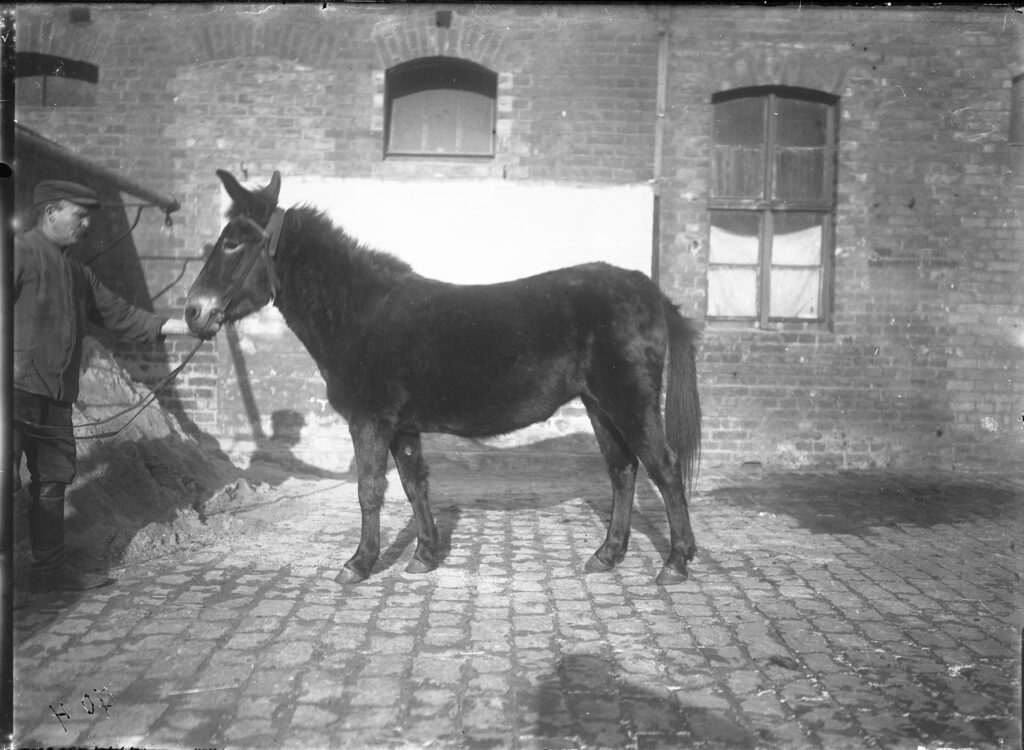
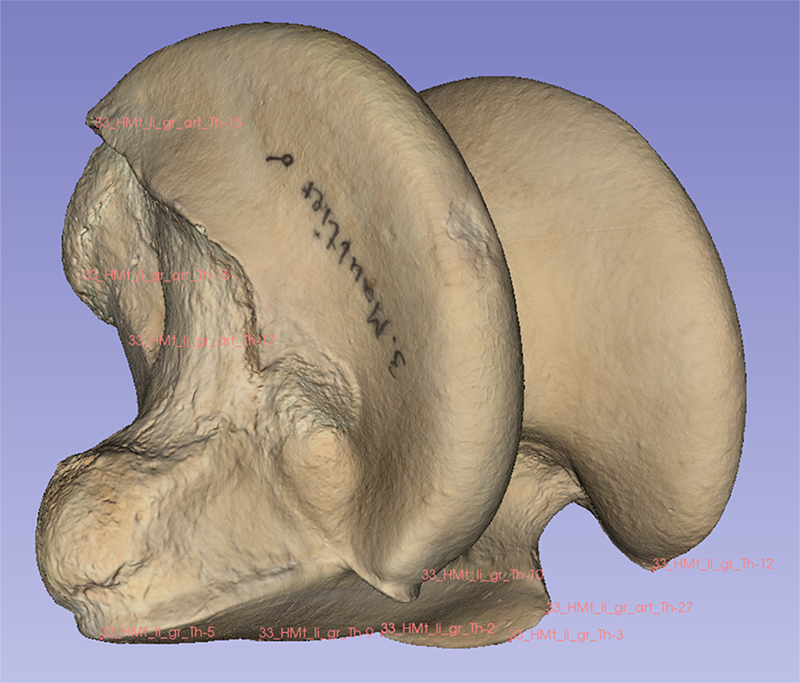
Major new international research reveals new evidence about when, where, and how chickens were domesticated
New research transforms our understanding of the circumstances and timing of the domestication of chickens, their spread across Asia into the west, and reveals the changing way in which they were perceived in societies over the past 3,500 years. Experts have found that an association with rice farming likely started a process that has led to chickens becoming one of the world’s most numerous animals. They have also found evidence that chickens were initially regarded as exotica, and only several centuries later used as a source of ‘food’.
Previous efforts have claimed that chickens were domesticated up to 10,000 years ago in China or Southeast Asia, and that chickens were present in Europe over 7,000 years ago.
The new studies show this is wrong, and that the driving force behind chicken domestication was the arrival of dry rice farming into southeast Asia where their wild ancestor, the red jungle fowl, lived. Dry rice farming acted as a magnet drawing wild jungle fowl down from the trees, and kickstarting a closer relationship between people and the jungle fowl that resulted in chickens.
This domestication process was underway by around 1,500 BC in the Southeast Asia peninsula. The research suggests that chickens were then transported first across Asia and then throughout the Mediterranean along routes used by early Greek, Etruscan and Phoenician maritime traders.
During the Iron Age in Europe, chickens were venerated and generally not regarded as food. The studies have shown that several of the earliest chickens are buried alone and un-butchered, and many are also found buried with people. Males were often buried with cockerels and females with hens. The Roman Empire then helped to popularise chickens and eggs as food. For example, in Britain, chickens were not regularly consumed until the third century AD, mostly in urban and military sites.
The international team of experts re-evaluated chicken remains found in more than 600 sites in 89 countries. They examined the skeletons, burial location and historical records regarding the societies and cultures where the bones were found. The oldest bones of a definite domestic chicken were found at Neolithic Ban Non Wat in central Thailand, and date to between 1,650 and 1,250 BC.
The team also used radiocarbon dating to establish the age of 23 of the proposed earliest chickens found in western Eurasia and north-west Africa. Most of the bones were far more recent than previously thought. The results dispel claims of chickens in Europe before the first millennium BC and indicate that they did not arrive until around 800 BC. Then, after arriving in the Mediterranean region, it took almost 1,000 years longer for chickens to become established in the colder climates of Scotland, Ireland, Scandinavia and Iceland.
The two studies, published in the journals Antiquity and The Proceedings of the National Academy of Sciences USA, were carried out by academics at the universities of Exeter, Munich, Cardiff, Oxford, Bournemouth, Toulouse, and universities and institutes in Germany, France and Argentina.
Professor Naomi Sykes, from the University of Exeter, said: “Eating chickens is so common that people think we have never not eaten them. Our evidence shows that our past relationship with chickens was far more complex, and that for centuries chickens were celebrated and venerated.”
Professor Greger Larson, from the University of Oxford, said: “This comprehensive re-evaluation of chickens firstly demonstrates how wrong our understanding of the time and place of chicken domestication was. And even more excitingly, we show how the arrival of dry rice agriculture acted as a catalyst for both the chicken domestication process and its global dispersal.”
Dr Julia Best, from Cardiff University said: “This is the first time that radiocarbon dating has been used on this scale to determine the significance of chickens in early societies. Our results demonstrate the need to directly date proposed early specimens, as this allows us the clearest picture yet of our early interactions with chickens.”
Professor Joris Peters, from LMU Munich and the Bavarian State Collection of Palaeoanatomy, said: “With their overall highly adaptable but essentially cereal-based diet, sea routes played a particularly important role in the spread of chickens to Asia, Oceania, Africa and Europe.”
Dr Ophélie Lebrasseur, from the CNRS/Université Toulouse Paul Sabatier and the Instituto Nacional de Antropología y Pensamiento Latinoamericano, said: “The fact that chickens are so ubiquitous and popular today, and yet were domesticated relatively recently is startling. Our research highlights the importance of robust osteological comparisons, secure stratigraphic dating and placing early finds within their broader cultural and environmental context.”
Professor Mark Maltby, from Bournemouth University, said, “These studies show the value of museums and the importance of archaeological materials to reveal our past.”
Publikationen:
Peters J, Lebrasseur O, Irving-Pease E, Paxinos PD, Best J, Smallman R, Callou C, Gardeisen A, Trixl S, Frantz L, Sykes N, Fuller D, Larson G (2022) The biocultural origins and dispersal of domestic chickens. Proceedings of the National Academy of Sciences USA
https://www.pnas.org/cgi/doi/10.1073/pnas.2121978119
Best J, Doherty S, Armit I, Boev Z, Büster L, Cunliffe B, Foster A, Frimet B, Hamilton-Dyer S, Higham T, Lebrasseur O, Miller H, Peters J, Seigle M, Skelton C, Symmons R, Thomas R, Trentacoste A, Maltby M, Larson G & Sykes N (2022) Redefining the timing and circumstances of the chicken’s introduction to Europe and north-west Africa. Antiquity 2022 Vol. 0 (0): 1–15
https://doi.org/10.15184/aqy.2021.90
Kontakt:
Prof. Dr. Joris Peters
Staatssammlung für Paläoanatomie (SNSB-SPM)
& LMU München
Kaulbachstr. 37 III, 80539 München
Tel: +49 (0)89 / 2180 – 5711
E-Mail: peters@snsb.de
-
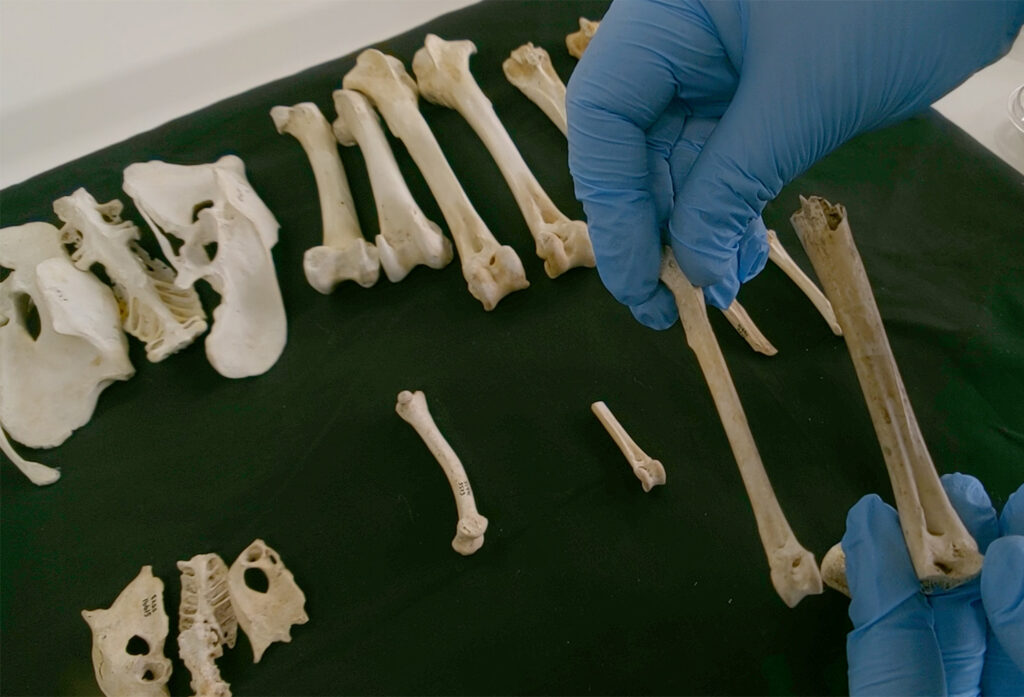
For the study, researchers compared the bones of modern chickens with those from archaeological sites – like the lower leg bones of two chickens shown here. (Image: Jonathan Rees, Universität Cardiff) -
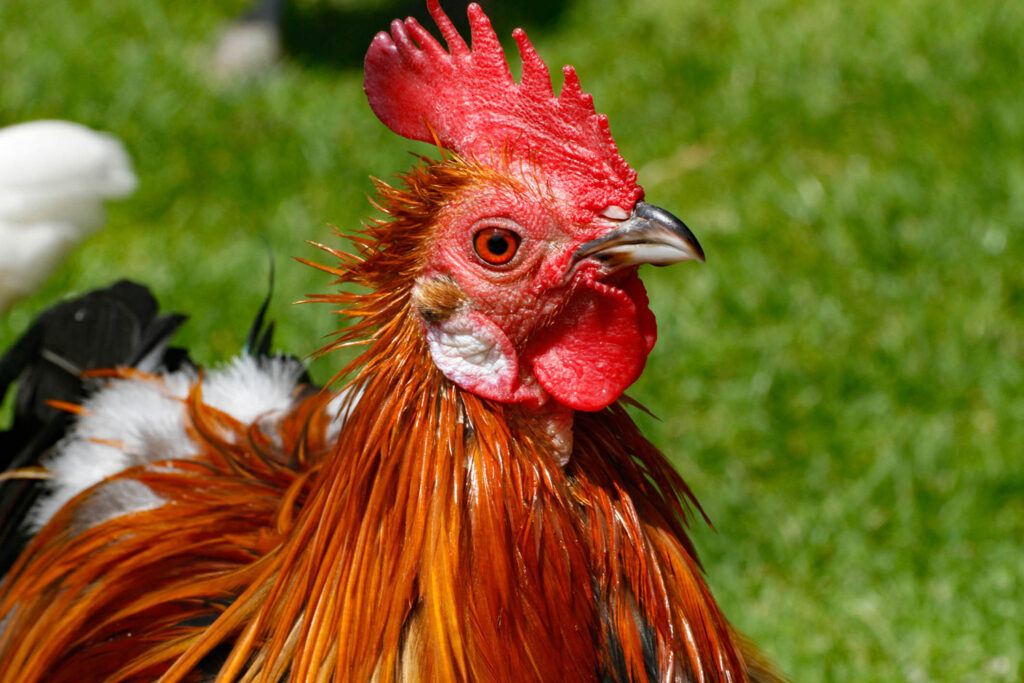
Domestic rooster – Image: Markus Unsöld, SNSB-ZSM -
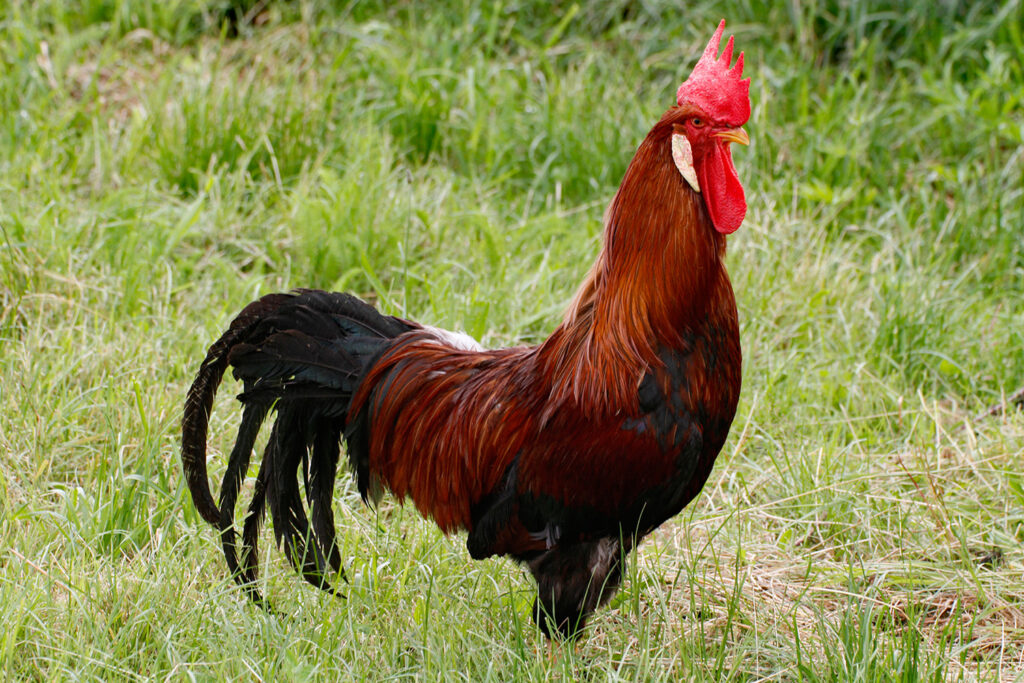
Domestic rooster – Image: Markus Unsöld, SNSB-ZSM
SNSB develops new diagnostic app for natural science objects
Bavarian Statecollection of Botany / SNSB IT-Center
The IT Center of the Bavarian Natural History Collections (SNSB) presented its new app ‘DiversityNaviKey’ (DNK) – a tool for reliable identification of natural science objects. The application is based on scientific data sources managed by the established database system of the SNSB, Diversity Workbench.
The freely accessible software application DiversityNaviKey (DNK) is a generic tool primarily designed for identification of organisms. The tool was recently released in a new version by the SNSB IT Center. It now provides important additional functions of interactive identification and diagnosis of organisms and other specimens of natural history and culture collections.
„DiversityNaviKey is easy to use: The new application is realised as a Progressive Web Application (PWA). It is running on every common browser and is usable by each kind of device such as smartphone, tablet or PC. Currently six nature science data sources are open and freely available for diagnosis and identification purposes with use of DiversityNaviKey. These include, for example, large data sets of fungi and lichens, but also of chemical constituents of some organisms,” says Ariane Grunz, the developer of DiversityNaviKey.
The diagnosis in the app works text-driven. The system answers questions such as: “Which of more than 11,000 lichens has a yellow colour, grows on bark and has an ingredient known to be toxic?” Or, “Which of the five bacterial cultures described grows at over 25 °C and has a specific molecular signature?” Or, “Which of the approximately 200 medicinal plants from Bavaria has blue flowers, blooms in spring and has alkaloids?”
The new application is based on data repositories of natural science collections from the Diversity Workbench database system, also developed at the SNSB IT Center. “The app links biodiversity research and specialized data sources,” explains Dr. Dagmar Triebel, head of the SNSB IT Center “We develop innovative concepts in the field of biodiversity and environmental informatics. The freely available Diversity Workbench is a modular and well-documented database system for long-term data management. Standardized and long-term curated subject datasets and digital collections are a hallmark of the SNSB and its IT unit in the field of ‘Data Science’. The recording and archiving of digital collections of scientific name data, nature science classifications and terms are within our core competence.”
How can new data sources be generated and made publicly available for diagnostics and identification in the app? As a first step, researchers create a database consisting of organisms, minerals, or other collection objects and their characteristics. Phenological (microscopic, macroscopic, ecological or chemical), but also molecular features such as gene sequence data are diagnostically suitable. To use such data matrices without restriction, they have to be released under a Creative Common license. The helpdesk team at the SNSB IT Center provides advice on all steps of the data management and publication process in cooperation with the NFDI4Biodiversity consortium and GFBio e.V.
The prototype of DiversityNaviKey was first presented to the research community in fall 2021 at the ‘Computer Science for Biodiversity’ workshop – an event organized by the German Informatics Society (GI) and co-chaired by the Bavarian Natural History Collections (SNSB). The DNK data pipelines at the SNSB are universally applicable and are offered together with technologies of the National Research Data Infrastructure (NFDI) and freely available datasets. DiversityNaviKey was developed by the SNSB IT Center and the University of Bayreuth and funded by the Bavarian State Ministry of Science and the Arts.
Links:
Web App: https://divnavikey.snsb.info/
Background info: https://diversityworkbench.net/Portal/DiversityNaviKey
Databases: https://diversityworkbench.net/Portal/DWB_DiversityNaviKey_data_sources
DiversityNayiKey on CS4biodiversity Workshop:
https://www.nfdi4biodiversity.org/de/cs4biodiversity/
Publication:
Triebel, D., Grunz, A., Seifert, S., Link, A. & Rambold, G., 2021. DiversityNaviKey, a Progressive Web Application for interactive diagnosis and identification. In: INFORMATIK 2021. Gesellschaft für Informatik, Bonn. (S. 517–538). DOI: 10.18420/informatik2021-040; https://dl.gi.de/handle/20.500.12116/37705
Contact:
Dipl.-Inf. Ariane Grunz und Dr. Dagmar Triebel
SNSB – Botanische Staatssammlung München – SNSB IT-Zentrum
Menzinger Str. 67, 80638 München
E-Mail: It-center@snsb.de
Tel: 089 17861 265
Members of the Naturkunde Netz Bayern
(Bavarian Natural History Network)
Activities of the Naturkunde Netz Bayern
(Bavarian Natural History Network)
Looking inside the stomach of carnivorous plants – genetic “botanical crime scene investigation” reveals diet
SNSB researchers determine the exact diet of Australian carnivorous plants by analyzing the genes of their prey. Even tiny parasites on captured insects could be detected in this way. The scientists have now published the results of their study in the journal Scientific Reports.
Carnivorous plants attract, catch and digest small animals in order to obtain extra nutrients which they cannot get from the nutrient-poor soils they grow in. Hence, carnivorous plants have found a way to thrive in habitats where other plants barely manage to exist. Many of the approximately 860 species of carnivorous plants known today are threatened by habitat destruction, environmental pollution, and climate change. To develop conservation plans, it is essential to understand their biology, which includes what they eat: their natural prey spectra. Equivalent to dietary studies in threatened animals, this kind of research aims to find out how many and what kind of insects the various species of carnivorous plants use as food. Quite often, several carnivorous plant species are found in one habitat, and the question arises if different species may rely upon different food sources. This can also help to understand the evolution and diversification of carnivorous plants.
However, studying prey spectra of carnivorous plants in their natural habitats has thus far been hampered by the fact that a) the areas with great diversity of these botanical predators are often quite remote and difficult to access, b) long-term studies would require many weeks of observation which kind of insects are trapped by a certain carnivorous plant species, and c) – most importantly – digested insect prey is often hard to identify, even by trained entomologists. Soft-bodied insects such as midges often turn into unidentifiable crumbs during digestion on the carnivorous leaves.
In order to solve these problems, researchers from Curtin University, Western Australia, and the Botanical and Zoological Natural History Collections (SNSB BSM & ZSM), Munich, Germany and the University of Munich (LMU) jointly developed a new method to study the prey spectra of carnivorous plants. They did so by combining macro photography of the captured insects with the cutting-edge method of insect identification by DNA metabarcoding. Any insect that is captured by a carnivorous plant will contain traces of its genetic material (DNA), even after digestion by the plant. As a study organism, the researchers chose carnivorous plants of the genus Drosera, known as sundews. “Drosera are perfect for this kind of research because their glistening sticky leaves constitute open traps, hence prey can easily be seen and photographed, and the insect prey dries up quickly after digestion, which helps to preserve DNA. Water is the big enemy for DNA preservation, hence the famous pitcher plants would not have worked that well”, says Dr Andreas Fleischmann from the Botanical Natural History Collection and LMU Munich, senior author of the study.
To document what these plants fed upon, and to collect the leaves with the adhering insects for DNA studies in the lab, PhD student Thilo Krueger from Curtin University went on a 6,000 km journey to the remote Kimberley region of tropical northern Australia, where many of these unique sundews grow. Initially, this study was planned as a joint fieldwork project between researchers from Munich and Curtin universities two years ago, however travel restrictions due to the COVID-19 pandemic made this impossible. “The group of sundews we studied are all annual plants which are especially dependant on their insect prey. They only have a short time frame of a few months in the growing season to gain nutrients from their insect prey which they invest in growth, flowering and seed set to ensure survival through the dry season”, says Curtin’s Dr Adam Cross, a botanist and restoration ecologist.
The leaf samples were collected in sample tubes and stored in pure alcohol to preserve the DNA, and DNA sequences were analysed in the lab later on. In addition, Thilo Krueger made thousands of photographs of individual prey items sticking to the Drosera leaves studied, which were used as a control for the DNA metabarcoding data. “This way, we were able to compare the obtained results from the genetic prey barcoding with the photos of the actually captured insects for each leaf of each sundew species studied. And the results were astonishing: we could match every single prey item we documented in the photographs to a DNA barcode, which gave us confidence in the DNA metabarcoding identification of the insects.”, says Thilo Krueger. Of course, obvious false-positives could also be identified by this photographic plausibility control. For example, some bees and wasps detected by the metabarcoding could have freed themselves from the leaves, leaving traces of DNA behind on the leaf, or they could have been present in the stomach contents of spiders which were then itself caught by the sundew. This method of DNA metabarcoding is so sensitive that it even detected these tiny amounts of DNA of insects that are not obvious to the researchers from field examination and macro photographs. “Hence, our study of carnivorous prey spectra using genetic DNA fingerprints from the captured insects resembled reconstructing a crime scene. Just that our crime scene investigation was about finding out what a set of carnivorous plants had for lunch”, says Andreas Fleischmann. The results of their studies were just published in the scientific journal Scientific Reports.
Publication:
Krueger, T.A., Cross, A.T., Hübner, J., Morinière, J., Hausmann, A. & Fleischmann, A. (2022). A novel approach for reliable qualitative and quantitative prey spectra identification of carnivorous plants combining DNA metabarcoding and macro photography. Scientific Reports 12: Article 4778. https://doi.org/10.1038/s41598-022-08580-8
Contact:
PD Dr. Andreas Fleischmann
SNSB – Botanische Staatssammlung München
Menzinger Str. 67, 80638 München
E-Mail: fleischmann@snsb.de
Tel.: 089 17861 240
Dr. Axel Hausmann
SNSB – Zoologische Staatssammlung München
Münchhausenstr. 21, 81247 München
E-Mail: hausmann.a@snsb.de
Tel.: 089 8107 158
“Kungas” – the Oldest Equine Hybrids
Bavarian State Collection of Palaeoanatomy
The Sumerians evidently used horse-like animals in their war campaigns as early as 4,500 years ago. For the first time, a team of French researchers has been able to use ancient DNA analyses to taxonomically classify the earliest hybrid animals bred by humans, which were used in warfare in Mesopotamia in the 3rd millennium B.C. – and thus long before the appearance of domestic horses in that region. Prof. Joris Peters, Director of the Bavarian State Collection of Paleoanatomy and Chair of Paleoanatomy, Domestication Research and History of Veterinary Medicine at the LMU Munich, was also involved in the study. The scientists have now published their results in the scientific journal SCIENCE ADVANCES.
Horses played an essential role in the history of organized and higher warfare. In addition to horses, the equid family also includes various species of wild donkeys and zebras. While domesticated horses were not used in warfare south of the Caucasus until about 4,000 years ago (Guimaraes et al., 2020), the Sumerians were already using donkeys several hundred years earlier to pull chariots carrying war equipment. One such situation is evidenced by the famous “Standard of Ur,” a c. 4,650-year-old Sumerian mosaic from the southern Mesopotamian city of Ur in present-day Iraq. However, the taxonomic classification of the draught animals used and their relationships have remained a mystery to researchers to this day. On cuneiform tablets of that time, the animals were described as valuable and socially highly regarded so-called “kungas”. A team of researchers led by Dr. Eva-Maria Geigl of the Institut Jacques Monod, Université de Paris, the University Museum of Archaeology and Anthropology, Philadelphia, and Johns Hopkins University, with the participation of the Bavarian State Collection for Paleoanatomy, has now solved the mystery.
A study of ancient genes has shown: The Bronze Age “kungas” appear to be the earliest human-bred hybrids between two donkey species, because they were first-generation offspring of crosses between female domestic donkeys (Equus asinus asinus) and male Syrian wild donkeys (Equus hemionus hemippus). The latter became extinct at the beginning of the 20th century.
The so-called ancient DNA analyses – the examination of DNA from ancient tissues, which were carried out in Paris – provided information. For their study, the scientists examined the DNA of equine bones from the approximately 4,500-year-old elite burial site of Umm el-Marra in what is now northern Syria. They compared their analyses with DNA signatures in a c. 11,000-year-old bone of a Syrian wild ass from the Early Neolithic cult site of Göbekli Tepe (Turkey), the analysis and identification of which was performed by longtime Göbekli Tepe researcher and animal bone expert Prof. Joris Peters, director of the Bavarian State Collection for Paleoanatomy (SNSB-SPM) and chair of paleoanatomy, domestication research and history of veterinary medicine at LMU Munich. The last living specimens of the Syrian wild donkeys lived in the Schönbrunn Zoo in Vienna at the end of the 19th and beginning of the 20th century. Their bones are preserved in the Natural History Museum of Vienna. The ancient genomes of the bones found at Umm el-Marra, as well as their burial in elite tombs, suggest that these hybrid equids correspond to the “kungas”, which were mentioned several times on Bronze Age cuneiform tablets and were considered comparatively expensive, as one paid six times as much for such an animal as for a domestic donkey. With the introduction of the horse in the 2nd millennium B.C. the probably not quite uncomplicated breeding of donkey hybrids became insignificant, since now a domestic animal was available, which, in comparison to the domestic donkey, was hardly inferior to the kungas regarding speed.
Publication:
Bennett, E.A., Weber, J., Bendhafer, W., Champlot, S., Peters, J., Schwartz, G., Grange, T., Geigl, E.-M. (2022) The genetic identity of the earliest human-made hybrid animals, the kungas of Syro-Mesopotamia. Science Advances. Vol.8, Issue 2. DOI: 10.1126/sciadv.abm0218
Contact:
Prof. Dr. Joris Peters
Staatssammlung für Paläoanatomie (SNSB-SPM)
Kaulbachstr. 37 III, 80539 München
Tel: +49 (0)89 / 2180 – 5711
E-Mail: peters@snsb.de
Haast’s eagle preferred giant prey like a vulture
Bavarian State Collection of Zoology
The extinct Haast’s eagle (Hieraaetus moorei) is the largest known eagle. New research findings suggest that the giant eagle was an active hunter using its talons and beak to restrain and kill huge terrestrial birds, then feeding on the carcass like a vulture due to a preference for internal organs. An international team of scientists led by SNSB zoologist Anneke van Heteren used 3D computer models to compare the skulls and talons of extant hunting and scavenging birds to those of the Haast’s eagle. The researchers have now published their results in the journal Proceedings of the Royal Society B: Biological Sciences.
The extinct giant Haast’s eagle, was twice the size of any living eagle. The oldest fossil record of the giant eagle comes from New Zealand and is about 35,000 years old. Researchers suggest the bird disappeared about 800 years ago. Despite its size, the Haast’s eagle is related to one of the world’s smallest eagles, the Australian little eagle Hieraaetus morphnoides. Debate over whether the Haast’s eagle displays vulture-like features and what their function might be continues to be highly contentious.
An international team of researchers led by Anneke van Heteren, head of the mammalogy section at the Bavarian State Collection of Zoology (SNSB-ZSM), has now discovered that the giant eagle was probably an active hunter and preyed on huge terrestrial birds that were significantly larger than itself. Then he fed on the carcass like a vulture due to a preference for internal organs.
The shape of the skull, beak and talons of birds of prey are adaptations to their way of feeding. The researchers compared the shape and biomechanical performance of the Haast‘s eagle’s skull and talons with those of five extant scavenging and predatory birds: They used the geometric morphometrics method: 3D computer models marked with significant measuring points, so-called digital “landmarks”. The scientists combined these analyses with computer-based simulations to visualize the biomechanical performance of the skulls and talons during killing and feeding.
The shape of the Haast‘s eagle’s neurocranium is vulture-like, its beak and talons eagle-like. The biomechanical performance of the bird’s head movements showed that the average strain of the skull bone while killing was lowest in the Haast’s eagle. Apparently, its bite was more powerful than that of the extant eagles. However, the giant eagle then fed more vulture-like: its skull shows typical vulture-like strains when pulling back and shaking its head sideways. These strains are quite similar to the Andean condor‘s skull, which mainly extracts the internal organs of carcasses. The talons of Hieraaetus moorei were eagle-like: large, curved, and pointed. The simulated strains on Haast’s eagle’s talons when grasping prey was significantly lower than in the other birds, indicating it was capable of withstanding extremely high forces.
“The biomechanical simulations of the talons and skulls show us that Haast‘s eagle’s prey was probably significantly larger than itself. Only vultures usually feed on prey this large. Eagles tend to kill and eat smaller prey. We suggest that the Haast‘s eagle stuck its head deep into carcasses to extract internal organs, like a vulture. Evolutionary processes on islands are often quite rapid. The Haast‘s eagle is very different from its closest living relative the Australian little eagle. The evolution of a mosaic of eagle- and vulture-like traits, like in Hieraaetus moorei, could have been a response to very strong selection pressures”, Anneke van Heteren interprets the results of the study.
The results of the computer simulations are additionally supported by fossil findings from New Zealand: the prey of Haast‘s eagle included moas – extinct large New Zealand landbirds. The largest moa weighed about 200 kilos. Haast‘s eagle possibly even looked quite similar to a bald vulture, as a Maori rock art depiction discovered on the South Island of New Zealand shows.
Publication:
van Heteren A. H., Wroe S., Tsang L. R., Mitchell D. R., Ross P., Ledogar J. A., Attard M. R. G., Sustaita D., Clausen P., Scofield R. P. and Sansalone G. 2021 New Zealand’s extinct giant raptor (Hieraaetus moorei) killed like an eagle, ate like a condor Proc. R. Soc. B. 2882021191320211913
http://doi.org/10.1098/rspb.2021.1913
Contact:
PD Dr. Anneke H. van Heteren
Zoologische Staatssammlung München (SNSB-ZSM)
Münchhausenstraße 21, 81247 München
Tel.: 0151 651 617 15
E-Mail: vanHeteren@snsb.de
-
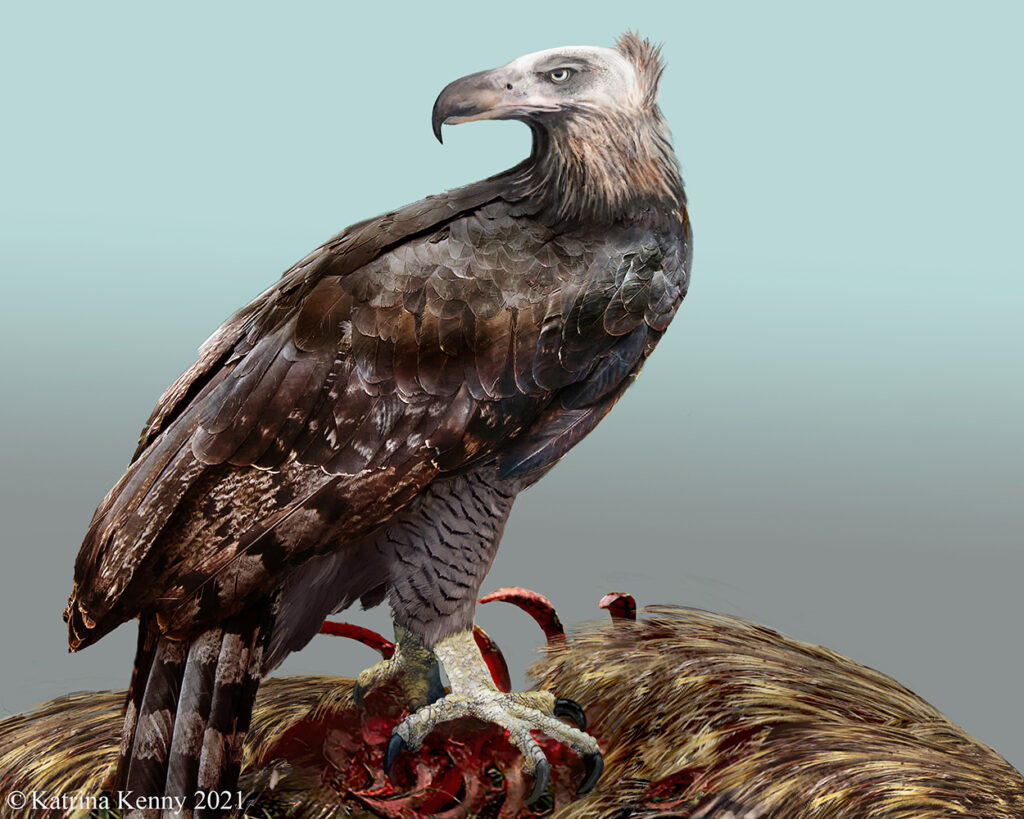
Reconstruction of the Haast’s eagle (Artist: Katrina Kenny) -
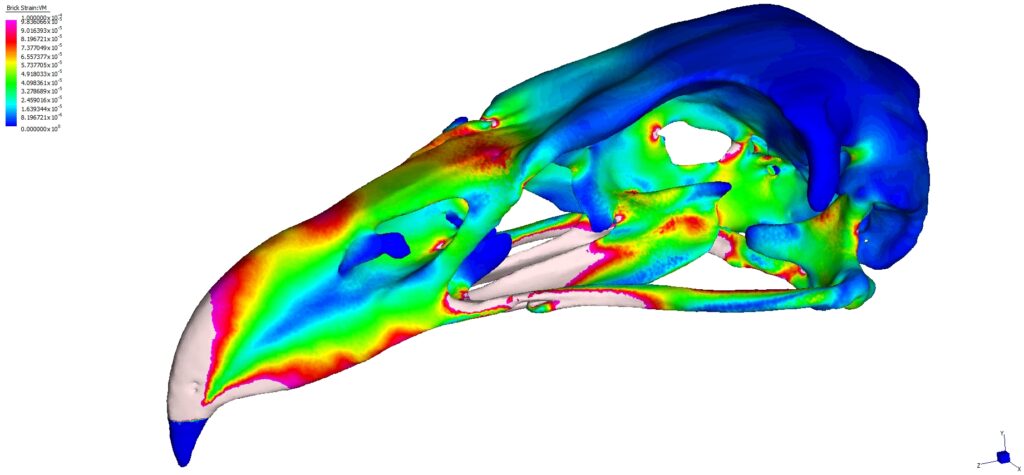
Distribution of strain through the Haast’s eagle skull while pulling the skull back during feeding. Under the pullback simulation, Haast’s eagle showed relatively low strains (cooler colours, like blue and green), comparable to that of the scavenging Andean Condor and cinereous vulture. The wedge-tailed eagle, the whistling kite and its closest relative, the little eagle, recorded higher strains. (Image: Anneke van Heteren, SNSB) -
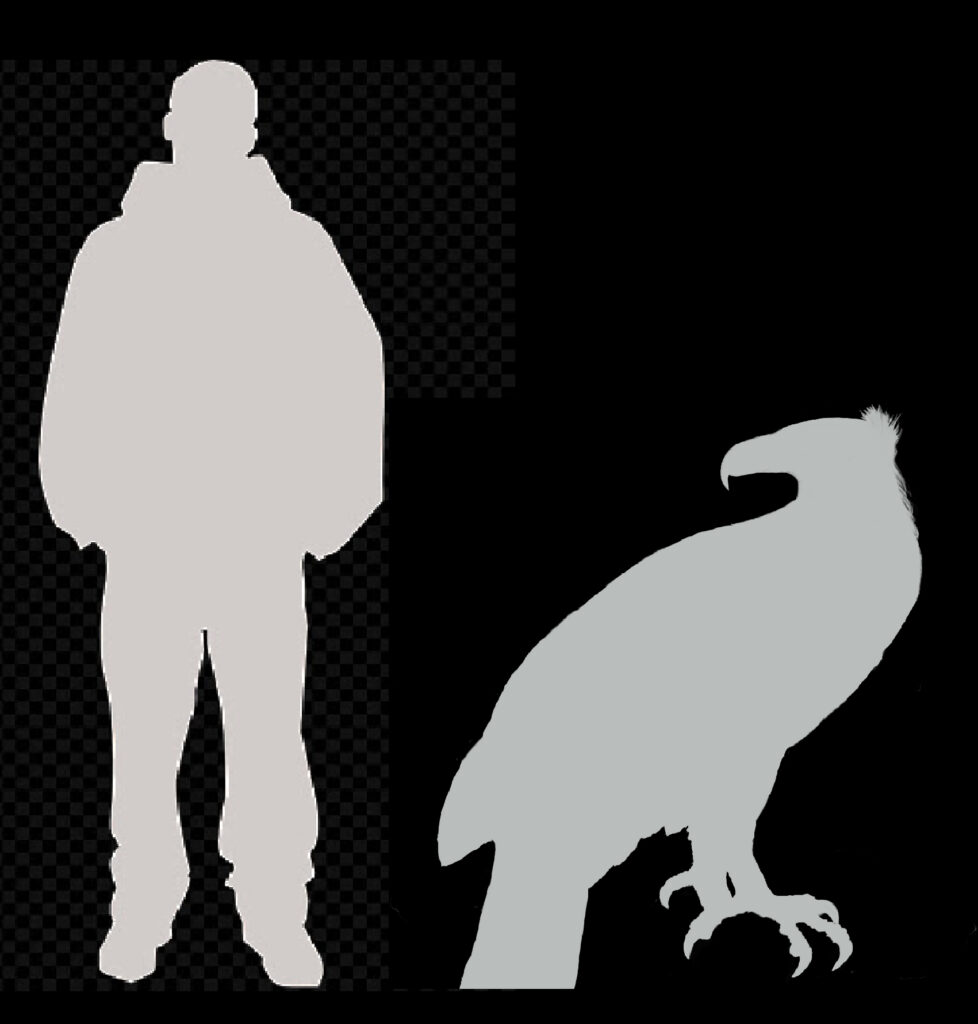
The silhouettesof man and Haast’s eagle (Image: Stephen Wroe)
Changing biosphere
Natural history collections are essential to demonstrate and study the aspects of the changing biosphere. Botanical, zoological and anthropological collections reflect different aspects of the development of the biosphere, while palaeontological and geological collections shed light on the changes of the geosphere and biosphere in earth’s history.
Geodiversity
The SNSB’s mineralogical research is devoted to phosphate minerals, among others. Phosphate is a strategically important raw material for plant nutrition. The mineral is found in nature only in a few isolated, mostly biologically formed deposits. One deposit in Bavaria is the so-called phosphate pegmatite of Hagendorf in the Upper Palatinate. It showes the highest diversity of phosphate minerals in the world.
Geo- and biosphere change through impacts using the example of the Nördlinger Riesl Nördlinger Ries
The Nördlinger Ries, an impact crater of an asteroid about one kilometer in size in the northern foothills of the Alps, is unique. Ries reseach is of supraregional importance as the planet Earth was formed by so-called impact processes.
Together with the LMU and other cooperation partners, SNSB scientists are investigating, how matter changed into “exotic” state forms under extreme thermomechanical conditions and whether exotic iron compounds still present in rocks today can be used to reconstruct the repercussions of impacts on the Earth’s magnetic field. They also want to answer the question of how the biosphere regenerates after an impact event and which life forms play a special role in this.
Biodiversity and diversity dynamics
The SNSB are striving for a detailed species inventory for the entire Bavarian flora and fauna. Such inventories create an indispensable data basis for all monitoring activities. The SNSB develops methods and the establishment of necessary infrastructure and the underlying taxonomy.
The SNSB research focuses on the Afrotropical fauna, the fauna of Southeast Asia and the fauna of the neotropical lowland rainforest, especially on the basis of the Panguana research station.
Another research focus is the molecular biodiversity of Indo-Pacific sponges and echinoderms, in particular the deep-water Crinoidea and the crown-of-thorns starfishes.
Questions of biodiversity and diversity dynamics of fossil communities are addressed at the SNSB with the help of the extensive palaeontological collections:
Paleontological research topics include structure and abiotic control of coral-dominated reef communities from the Upper Jurassic of the Franconian Alb, microorganisms and microbial interactions in the Lower Devonian fossil deposits Rhynie- and Windyfield-Cherts, as well as composite structures of the biominerals and biopolymers that make up skeletons, teeth and eyes of living and fossil organisms today.
Speciation processes and evolution
Processes of speciation and the resulting species complexes of terrestrial and aquatic animals are currently the subject of intensive research at the SNSB, especially in fish, amphibians and reptiles, but also in some insect and mollusc groups. The SNSB houses the largest butterfly collection in the world and the only large mollusc research collection with a marine focus in Germany, as well as the only Pycnogonida collection in Germany. In addition, integrative analyses of phylogeny and evolutionary history have been carried out for years within the framework of several third-party funded projects.
Processes of speciation and evolution in plants are studied in the genera Drosera (Droseraceae) and Utricularia (Lentibulariaceae). In the case of carnivorous plants, the aspect that they depend on insects both as prey and for reproduction (pollinator-versus-prey conflict) is also included. Topics of evolutionary research in palaeontology at the SNSB are e.g. the evolution of terrestrial vertebrate faunas in the middle Mesozoic (Jurassic-Lower Cretaceous), the importance of Europe as a biogeographical “hub” of terrestrial vertebrate faunas in the Upper Jurassic and Lower Cretaceous, phylogenetic uncertainty and evolutionary processes in rapid radiates, the diversity of mycorrhizal fungi in the Lower Devonian Rhynie and Windyfield Cherts, studies on the origin and evolutionary history of apodid sea cucumbers, and processes and mechanisms of antler formation
Plattenkalk research
The approximately 150-million-year-old southern German Plattenkalk fossil deposits (Solnhofen Archipelago; Wattendorfer and Nusplinger Plattenkalke) represent a period before the Alps existed and former habitats that lay on a vast, tropical to subtropical carbonate platform at the northern edge of the Jurassic Tethys Ocean. Future projects focus on faunas and floras of the various Plattenkalk troughs. This research work by the Bavarian State Collection of Palaeontology and Geology and the SNSB regional museums in Eichstätt and Bamberg also involves numerous international and national collaborations.
Life strategies in transition
With the scientific investigation of archaeological skeletal material of humans and animals, the two State Collections of Anthopology and Palaeoanatomy in Munich contribute to the elucidation of long-term processes and key events in prehistoric and early historic times. The focus is on cultural discontinuities and new beginnings.
Research is also conducted into bio-cultural responses to challenges in the past. The projects based here focus on the causes and consequences of drastic natural and cultural events with a view to the biological and cultural responses of humans.
Furthermore, with the help of diachronic, cross-cultural analyses of faunal remains, the SNSB is investigating the multifaceted and complex role of animals beyond their function as livestock, which ensured the everyday supply of food and secondary products such as wool and milk.
Alpine systems
SNSB research focuses on the understanding of alpine systems, the change and interaction of bio- and geodiversity in this natural area, but also its settlement history and anthropogenic influence.
Alpine geosystems
Scientists of the Mineralogische Staatssammlung Munich study rocks and deposits. They focus on mineral formations and associations as well as the question of provenance analysis of gold artifacts (e.g. from Spain, Austria, Turkey). Today, gold deposits are important sources of information for the study of geodiversity and to address archaeological and historical questions.
Another research area of the SNSB in the field of alpine orogeny, the last process of mountain building in Earth’s history, is the Turkish Taurides. So-called ophiolites, rocks that formed the seafloor between the European and African continents, are being studied.
“Alpine geosystems” combine the two main research areas “Alpine systems” and “Changing biospere” at the SNSB. The former marine sediments folded up in the Alps and thus accessible at the Earth’s surface are important archives for the study of living environments and environmental conditions in the geological past.
Earlier life forms in the Alpine region
Scientists of the Bavarian State Collection of Paleontology and Geology provide answers to questions about the diversity of ecosystems in the early Mesozoic and the mass extinction at the end of the Triassic and its impact on the diversity of fauna and flora. Various long-term research projects focus on the paleodiversity of the Upper Triassic Cassian Formation in the Italian Dolomites as well as the Late Triassic rock sequences in the Bavarian and Austrian Alps.
Another focus is on the floras of the Alpine region and the Germanic Zechstein Basin of Upper Permian age.
The main regions of Bavarian mammal fossil finds are the Northern Alpine Foreland and Molasse Basin as well as the Swabian-Franconian Jurassic, all influenced by the Alpine orogeny. Southern Bavarian mammal fossils form a substantial part of the record of Central European mammal history.
The Bavarian fossilsites offer unique insights into evolution.
Flora of the Alps
The Alps create the geological and climatic conditions for an enormous range of plant communities. Today, the Alps, together with the upland and lowland moors at various altitudes, are home to an estimated 4,500 species of higher plants. The Alpine region of Bavaria is unique and has a particularly species-rich flora.
The Bavarian State Collection for Botany in Munich is compiling a new Flora of Bavaria: for this purpose, all existing floristic data are being brought together and made accessible online by the SNSB IT Center. At the Botanical Garden München-Nymphenburg, research also focuses on the flora of alpine mountains, including the Alps, the Himalayas and the Caucasus.
The Alpine Garden Schachen (1860m, more than 1,000 plant species) as a branch of the Botanical Garden München-Nymphenburg offers ideal conditions for phenological and climatic studies and is to become more important as a research location (also for zoological questions) in the future.
Fauna of the Alps
The faunas of Alpine regions provide data particularly for studies on biodiversity dynamics. Due to the strongly fluctuating altitudinal gradients and the dramatically heterogeneous geo and climate dynamics of the past millennia, they serve as a natural experiment for research.
DNA data sets of about 24,000 (of a total of about 36,000) recorded species were produced during the large-scale campaign “Barcoding Fauna Bavarica”. The campaign created solid identification tools for many taxa and their life stages for the first time. Together with colleagues from Austria and Switzerland, the existing Bavarian database is to be expanded specifically for the Alpine region. Through increased digitisation of the Alpine collections, we expect to be able to make verifiable statements on the biological effects of climate change.
Alpine environment as human habitat
The SNSB’s extensive anthropological and archaeozoological collections form the basis for research into the colonisation of alpine systems by humans. Despite the geographical barrier formed by the Alps, the inhabitants of the Bavarian foothills of the Alps were always in exchange with population groups of the inner and southern Alpine habitat and in some cases maintained far-reaching contacts in other regions.
In alpine habitats, regional cultural phenomena occurred at all times that do not correspond to the general picture. The Munich State Collection of Anthropology documents and interprets these bio-cultural manifestations in close cooperation with archaeological sciences. In this way, it contributes to the expansion of our understanding of history and culture
Research infrastructure
SNSB scientists use numerous methods and techniques for their research, including molecular phylogeny and taxonomy, DNA barcoding, DScan digitization, µCT and digital X-ray, 3D laser scanning, 3D reconstruction, morphometrics, ultrastructural research, Raman spectroscopy, and isotopic analysis.
Bavarian State Collection for Palaeontology and Geology
SNSB
- 3D reconstruction (Amira, VGStudio MAX)
- Special libraries paleontology (Paläozoologie und -botanik)
- Rock, slurry and acid preparation laboratories (e.g. micropaleontology)
- High-resolution 4K digital microscopy incl. fluorescence and 3D reconstruction (Keyence VHX 5000, 7000)
- Scanning electron microscopy (desktop-REM Phenom XL G2; high and low vacuum) incl. energy dispersive X-ray spectroscopy (EDX) and secondary electron detector (SED) for element analysis; sputter coating for deposition
- High-resolution digitization (book2net) of archive and collection objects (A2 size, up to 10 cm thickness)
LMU – cooperation „Münchner Modell“
- Geomicrobiology laboratory
- Research aquaria (seawater)
- S1 Molecular laboratories (130 sqm, 23 workstations)
- Rotor-Gene qPCR
- Fluorescence microscopes and stereomicroscopes
- Genomics Lab
- Illumina MiniSeq (Next Generation Sequencing)
- High-Performance Computing Infrastructure: Linux Cluster
Bavarian State Collection for Botany
SNSB
- Various light microscopes and stereo microscopes, stacking microscope
- Cameras/digitization: 1 HerbScan, 1 mounted camera (incl. accessories, illumination, etc.), 1 PhaseOne for digitization of specimens up to 2 cm thickness.
- The molecular biology laboratory of BSM is a registered S1 laboratory: Genetically modified organisms can be used here by expert staff. There is a PCR and a qPCR device and an Eppendorf refrigerated centrifuge 5810R.
- SNSB-IT Center
LMU – cooperation „Münchner Modell“
- REM (incl. sputtercoater (gold, platinum, carbon), low vacuum use in SEM possible)
- FISH laboratory, S1 lab, genomics lab, histology lab
- various microscopes (incl. fluorescence; reflected light, digital microscope)
- Climatic chambers and climatic cabinets
- Special library
Botanical Garden Munich-Nymphenburg
- Special library
- Experimental greenhouse
- SiMa Bank (collection of plant samples dried in silica gel for research purposes)
Bavarian State Collection for Mineralogy
SNSB
- Raman spectroscopy (with light microscopic spatial resolution, non-destructive analysis of organic and anorganic substances).
- FTIR spectroscopy (infrared spectroscopy for the identification of organic or anorganic substances, mobile instrument)
- High-resolution digital light microscopy for 3-D reconstruction (Keyence)
- Polarization microscopy in transmitted and reflected light
LMU – cooperation „Münchner Modell“
- X-ray diffraction (polycrystals/powders in reflection and transmission, single crystals)
- Analytical FE scanning electron microscopy (1 nm image resolution, elemental analysis with EDX, phase and microstructure analysis with EBSD, KL, STEM)
- Mössbauer spectrometry
- Electron-Probe-Micro-Analyser (precise element analysis in the 1 micrometer range)
- further analytical methods
Bavarian State Collection for Anthropology
SNSB
- Laboratory for sample preparation of stable isotopes (expected to be completed in 2022)
- Osteological reference series “Winthir collection” comprising over 200 individuals
Bavarian State Collection for Palaeoanatomy
SNSB
- 3D scanner for small and large objects
LMU – cooperation „Münchner Modell“
- Ancient DNA laboratory
- Special librarie paleoanatomy
Bavarian State Collection for Zoology
SNSB
- Histology laboratory
- X-ray analysis and micro-computer tomography (3D)
- 3D reconstruction (Amira, VGStudio MAX)
- S1 Molecular laboratories
- Preparation for Next Generation Sequencing
- Collection digitization
- High-resolution macro- and microphotography
- Special library zoological systematics
LMU – Kooperation „Münchner Modell“
- Light optical and electron microscopic surface and section analysis: High quality light optics, SEM, TEM
- Next Generation Sequencing
RiesCraterMuseum Nördlingen
SNSB
- Isotope analysis of heavy elements
- Microscopes/rock saws
SNSB IT Center

Menzinger Straße 67
80638 München
Email: it-center@snsb.de
Website: www.snsb.info
Head
Dr. Stefan Seifert
Management of bio- and geodiversity data
The Information Technology Center of the Staatliche Naturwissenschaftliche Sammlungen Bayerns is the institutional repository for scientific data of the natural history collections and museums belonging to the SNSB. Its major tasks focus on the management of bio- and geodiversity data using different kinds of information technological structures. The facility guarantees a sustainable curation, storage, archiving and provision of such data.
The mission comprizes research activities in the field of biodiversity informatics and the implementation of generic information technology like easy-to-use working environments for handling scientific data. The software is mainly designed and set up following the concepts of the Diversity Workbench developer platform. DWB software tools are registered in bio.tools, a service of ELIXIR Europe.
The SNSB IT Center supports scientists and institutions by offering services to manage the whole data life cycle starting with data entry up to persistent storage and provision as well as delivery of approved and quality-controlled data to national and international portals. Most of the data is managed by DWB network and installations.
Partner for biodiversity informatics
Based on about 20 years IT experience the SNSB IT Center was established in 2006. The in-house technical staff is administrating a server cluster using LINUX and MS Windows platforms with around 60 TByte storage units. The back up systems and archives of the regional computing center Leibniz-Rechenzentrum München are essential part of the storage concepts.
The SNSB IT Center is participating on several national and international initiatives within the field of biodiversity informatics, e. g. acting as a GBIF data publisher and GFBio data center, running a BiNHum search portal for SNSB collections (prototype) and providing a number of services and products, e.g. in connection with the Nationale Forschungsdateninfrastruktur (NFDI). It hosts data for universitary and non-universitary research partner organisations.
At the EU level the SNSB IT Center contributes significantly to the information science and technology concept development of the CETAF consortium, the design set up of the Distributed System of Scientific Collections (DiSSCo) and its German part DiSSCo-D. DiSSCo is a priority project on the Roadmap 2018 of the European Strategy Forum on Research Infrastructures (ESFRI) and will provide unified access to European Natural Science Collections. The SNSB are chairing training activities of the EU COST Action CA17106 – Mobilising Data, Policies and Experts in Scientific Collections (MOBILISE).
The SNSB IT Center offers the direct assignment of Digital Object Identifiers (DOIs) for research datasets published via GFBio services and data pipelines, using DataCite services.
SNSB IT-Zentrum und Botanische Staatssammlung
Some scientists and guest scientists of the Bavarian State Collection for Botany work in joint projects with the SNSB IT Center (Section Collections Online)
Team of the SNSB IT-Center
Dr. Stefan Seifert
Head of the SNSB IT-Center
Biodiversity- and Geo-Informatics Scientist, Senior Software Developer, System Engineer
Phone: +49-(0)89-17861-245
Email: seifert@snsb.de
Dipl.-Ing. Anton Link
Application Developer
Phone: +49-(0)89-17861-244
Email: link@snsb.de
Dipl.-Math. Dieter Neubacher
System Administrator and Software Developer
Phone: +49-(0)89-17861-244
Email: neubacher@snsb.de
Dipl.-Inf. Wolfgang Reichert
Senior Software Developer
Phone: +49-(0)89-17861-303
Email: reichert@snsb.de
Dipl.-Biol. Tanja Weibulat
Data Scientist and Research Data Curator
Phone: +49-89-17861-304
Email: weibulat@snsb.de
Dipl.-Biol. Ingo Wendt
Data Scientist and Research Data Curator
Phone: +49-089 17861-304
Email: wendt@snsb.de
Genomics Core Facility
Menzinger Str. 67
80638 München
Phone: +49-(0)89 17861 206
Modern research in the life sciences is increasingly based on the use of DNA-based analysis methods. Numerous research groups at the SNSB use genetic analysis methods. The Genomics Core Facility (GCF) bundles the progress already made in this field.
The GCF is located in the building of the Botanische Staatssammlung München. Since its launch in 2021, the GCF has been successively equipped with laboratory equipment and bioinformatics infrastructure.
Team of the GCF
Dr. Agnes Scheunert
Lab Head
Phone: +49-(0)89 17861 206
E-Mail: scheunert@snsb.de
Dr. Om Kulkarni
Bioinformatics, Data Analyst
Phone: +49-(0)89 17861 206
E-Mail: kulkarni@snsb.de
Lilia Galvez
Technical Assistant
Phone: +49-(0)89 17861 206
E-Mail: galvez@snsb.de
Joint projects
German National Research Data Infrastructure for Biodiversity (NFDI4BioDiversity) – BSM, SNSB IT Center
The SNSB IT Center is responsible for the long-term management and archiving of research and collection data, tools and services, and the certification of data center.
German Barcode of Life Project GBOL III: Dark Taxa – ZSM, SNSB IT Center
Genetic Library of German Fauna and Flora
COST Action – MOBILISE: Mobilising Data, Policies and Experts in Scientific Collections
Marie Skłodowska-Curie Innovative Training Network (ITN) IGNITE: Comparative Genomics of Non-Model Invertebrates http://www.itn-ignite.eu/projects/
German Federation for the Curation of Biological Data (GFBio) – SNSB IT Center
Providing of a sustainable, service oriented, national data infrastructure facilitating data sharing and stimulating data intensive science in the fields of biological and environmental research
Flora of Bavaria – Data flow DWB and FIS-Natur , communication platform, Koodinationsstelle für Florenschutz in Bayern – BSM, SNSB-IT-Zentrum
Flora of the Bohemian Forest – Květena Šumavy – Flora Silvae Gabretae – BSM, SNSB IT Center
The EU-funded project “Flora of the Bohemian Forest” aims to strengthen cross-border cooperation between Bavaria and the Czech Republic (Ziel ETZ, INTERREG A; EU-Projektnummer 216). The aim is to mobilize available data on the distribution and ecological requirements of vascular plants of the Bohemian Forest; Data collection with DiversityMobile, data transformation, development of interoperability between the Diversity Workbench network “Flora von Bayern” and the Czech Pladias databases.
Knoten für Wirbellose II von GBIF-Deutschland (GBIF-D Wirbellose II) – ZSM
The node Evertebrata II represents the molluscs (Mollusca) the Chelicerata, with the spiders and mites, and the myriapods (Myriapoda), containing millipedes and centipedes.ür GBIF International
Knoten Pilze und Flechten von GBIF Deutschland (GBIF-D Pilze & Flechten) – BSM
GBIF-D node for fungi and lichens
Transalpine Mobilität und Kulturtransfer, DFG research group (FOR 1670)
Establishment of an isotopic fingerprint for bioarchaeological finds.
Towards an integrative and comprehensive standard for meta-omics data of collection objects (MOD-CO) – SNSB IT Center
Setting up of standards to mobilize research-related information from environmental samples at Natural History Collections
Mobilizationg of spider data (ARAMOB) – SNSB IT Center
Semantic enrichment and mobilization of data in distributed repositories for taxonomy and ecology: Solving a Gordian knot in the taxonomy of neotropical jumping spiders and trait-based ecological habitat assessment with spider assemblages; Diversity Workbench (DWB) Software engineering; IT infrastructure
Deformed Skulls – SAM
“Traces of female mobility and multicultural societies at the beginning of Europe” and “Pictorial representation of project objects and results”
DFG (German Science Foundation)-funded-projects of SNSB-scientists:
Information System for DFG-funded projects (GEPRIS)
The Research Infrastructure Portal: RIsources
e.g.: Diversity Workbench – Software components for building and accessing biodiversity information (DWB) der SNSB
more info: DFG-Good Scientific Practice
Bayerischer Pakt für Forschung und Innovation
The Bavarian Natural Science Collections (SNSB) had been the first research institution in Bavaria concluding a target agreement with the Staatsministerium für Wissenschaft und Kunst (Bavarian State Ministry of Science and Arts) in June 2018 as part of the funding programme „Bayerischer Pakt für Forschung und Innovation“ (BayPFI). This agreement guarantees annual funds for the years 2019 to 2022 with an increase of 3% per year.
Press release of the Staatsministerium für Wissenschaft und Kunst, 11.06.2018 (in German):
„Gemeinsam für eine erfolgreiche Zukunft der Staatlichen Naturwissenschaftlichen Sammlungen Bayerns“
Wissenschaftsministerin Prof. Dr. med. Marion Kiechle schließt Zielvereinbarung
im Rahmen des Bayerischen Paktes für Forschung und Innovation ab
The goal is to strengthen the SNSB as a leading non-university research institution in the field of geo- and biodiversity research.
The following projects have so far been funded by the Bavarian Pact for Research and Innovation at the SNSB:
- SNSB research program “SNSB innovativ” for the initiation of third-party funded pilot projects as well as for the promotion of young scientists and women in science.
- Establishment of a competence center for special legal issues of natural science collections, especially with regard to the Nagoya Protocol and correlated legislation
- Development and implementation of a new corporate design including new logos for SNSB and all state collections
- In addition, general strengthening of scientific public relations
ABS – Access and Benefit Sharing
The SNSB, as part of the CETAF consortium of non-commercial scientific research institutions in Europe, implements the Convention of Biological Diversity (CBD) and the Nagoya Protocol. The scientific activities of the SNSB are focused on taxonomic and systematic research, which serve the implementation of the objectives of the CBD. SNSB research activities support the achievement of the goals of the Global Taxonomy Initiative of the Conference of the Parties to the CBD, the Global Strategy for Plant Diversity Conservation, and the Aichi Biodiversity Targets. Together with CETAF, SNSB staff helped develop the CETAF Code of Conduct to comply with European and national ABS laws, and to ensure equitable benefit sharing with source countries.
Current legal situation regarding the implementation of the Nagoya Protocol in the EU and the national implementation in Germany
- EU law 511/2014
- Current EU guidance on the provisions and application of Regulation (EU) Nr. 511/2014
- EU Implementing Regulation 2015/1866
- Federal Law: Law on the implementation of the obligations under the Nagoya Protocoll
Further information from the Federal Agency for Nature Conservation (BfN) (Bundesamt für Naturschutz)
- ABS – einfach erklärt
- Handlungsempfehlungen in 10 Schritten
- Legaler Zugang zu in Deutschland in-situ gesammelten GR
- Broschüre zum Nagoya-Protokoll
- German Nagoya Protocol HuB
Further information from the German Research Foundation (DFG)
DFG – Informationsmaterial zu Nagoya-Protokoll-relevanten Forschungsvorhaben
DFG – Erläuterungen zu Forschungs- und/oder Entwicklungsvorhaben der DFG (März 21)
Besondere Relevanz:
- Abschnitt 1.10: Gebotene Sorgfaltspflichten
- Abschnitt 2: Planung und Durchführung eines Forschungs- und/oder Entwicklungsvorhabens im Hinblick auf ABS-Anforderungen.
Further practical information on the topic of Nagoya & ABS
- CETAF-Homepage
- CETAF code of Conduct (aktuelle Version)
- Pressemitteilung: Europäische Kommission erkennt „CETAF Code of Conduct and Best Practices“ an
- Wiki-Seite der Society for the Preservation of Natural History Collections Society for the Preservation of Natural History Collections (SPNHC)
- Neumann et al. 2014 Access and Benefit Sharing – Global Implications for Biodiversity Research, Collections and Collection Management arising from the Nagoya Protocol
- ABS Information Forum
- Bonn Guidelines (website)
- Collection Forum. Vol.28 (Sept 2014) SPNHC
Kontakt: abs@snsb.de
SNSB Benefit Sharing
The SNSB scientists take their obligations regarding their benefit sharing with the countries of origin of genetic resources very seriously. Services to countries of origin of genetic resources (until December 2021):
A B C D E F G H I J K L M N O P Q R S T U V W X Y Z
Afganistan
Joint publications
- Provision of faunistic, taxonomic and ecological information in joint publications (ZSM section Lepidoptera)
Algeria
Joint publications
- Provision of faunistic, taxonomic and ecological information in joint publications (ZSM section Lepidoptera)
Argentina
Scientific collaboration:
- Identification of butterflies by correspondence and processing of rental material (e.g. agricultural and forest pests) (ZSM section Lepidoptera)
Joint publications:
- Provision of faunistic, taxonomic and ecological information in joint publications (ZSM section Lepidoptera)
Armenia
Joint publications:
- Provision of faunistic, taxonomic and ecological information in joint publications (ZSM section Lepidoptera)
Australia
Joint publications: & Scientific collaboration:
- Joint projects and publications with the Western Australian Universtity in Perth (ZSM-Section Mollusca)
- Provision of faunistic information in publications (ZSM section Lepidoptera)
- Generation of data sets of identified butterflies on internet-based open access information systems (BOLD, GenBank) (ZSM section Lepidoptera)
Field training and capacity builiding acitivities:
- Knowledgetransfer (taxonomy, morphology, floral ecology, DNA-barcoding) and supervision of an Honours and Masters student at Curtin University, Perth, Australia, 2020/21 (BSM).
Austria
Scientific collaboration:
- Lending of material from the Botanical State Collection Munich (BSM)
Bangladesh
Field training and capacity builiding acitivities:
- Capacity building for students/young scientists in the context of third-party funded research stays at the ZSM, training internships and supervision of theses
(e.g training in the fields of preparation, taxonomy & systematics and curatorial supervision of entomological collections ( ZSM sections Lepidoptera, Hymenoptera)
Belgium
Scientific collaboration:
- Collaboration with Africamuseum, Tervuren (ZSM Ichtyology)
Bolivia
Joint publications:
- Provision of faunistic, taxonomic and ecological information in joint publications (ZSM section Lepidoptera)
Brasil
Joint publications
- Provision of faunistic, taxonomic and ecological information in joint publications (ZSM section Lepidoptera)
Capacity builiding acitivities
- Supervision of doctoral students at the ZSM (joint material collections, regulations, publications) (ZSM section Mollusca)
- Supervision of doctoral thesis & transfer of expertise on molecular-phylogenetic and zygotic methods (BSM)Provision of faunistic information in publications (ZSM section Lepidoptera)
- Supervision of Erasmus scholarship holders and doctoral students at the ZSM (mollusc anatomy, histology, 3D reconstructions, joint material collections, regulations, publications)
- Capacity Building within the context of third-party funded research stays at the ZSM in the fields of preparation, taxonomy & systematics and curatorial supervision of entomological collections
- Lectures by BGM scientists
- Training and co-supervision of PhD students (ZSM, Lepidoptera)
Scientific collaboration
- Expert opinion, cooperation agreement and information exchange with the Zoological Museum Sao Paulo (ZSM-Section Mollusca)
- Identification of butterflies by correspondence and processing of rental material (e.g. agricultural and forest pests) (ZSM section Lepidoptera)
Cameroon
Scientific collaboration:
- Identification of butterflies by correspondence and processing of rental material (e.g. agricultural and forest pests) (ZSM section Lepidoptera)
- Generation of data sets of identified butterflies on internet-based open access information systems (BOLD, GenBank) (ZSM section Lepidoptera)
Chile
Joint publications: & Scientific collaboration:
- Projects with Universidad Austral Valdivia and Universidad Católica de Valparaíso, Chile (ZSM-Section Mollusca)
- Provision of faunistic information on Decapoda and Pycnogonida; joint projects and publications on Decapoda and Pycnogonida of Chilean fjords with Huinay Scientific Field Station and the University Puerto Montt. (ZSM, Arthropoda varia)
- Identification of butterflies by correspondence and processing of rental material (e.g. agricultural and forest pests) (ZSM section Lepidoptera)
- Generation of data sets of identified butterflies on internet-based open access information systems (BOLD, GenBank) (ZSM section Lepidoptera)
- Provision of faunistic information in publications (ZSM section Lepidoptera)
Field training and capacity builiding acitivities:
- Capacity building for students/young scientists in the context of third-party funded research stays at the ZSM, training internships and supervision of theses (ZSM section Lepidoptera)
China
Joint publications: & Scientific collaboration:
- publications, provision of type photographs of hydrozoans, provision of CT scans of hydrozoans and brachiopods (ZSM, Evertebrata varia)
- Generation of data sets of identified butterflies on internet-based open access information systems (BOLD, GenBank) (ZSM section Lepidoptera)
- Provision of faunistic, taxonomic and ecological information in joint publications (ZSM section Lepidoptera)
- Identification of butterflies by correspondence and processing of loan material (e.g. agricultural and forest pests) (ZSM section Lepidoptera)
Field training and capacity builiding acitivities:
- Capacity building for students/young scientists in the context of third-party funded research stays at the ZSM, training internships and supervision of theses (ZSM section Lepidoptera)
- Capacity building in the field of mollusc anatomy, histology, 3D-reconstructions, molecular genetics, genomics: supervision of a Chinese PhD student (EU-project) (ZSM-Section Mollusca)
Colombia
Field training and capacity builiding acitivities:
- Seminars at the Universidad Nacional de Colombia in Bogotá, provision of literature and laboratory material as well as field equipment (ZSM, Coleoptera)
- Guidance for postdoctoral students (ZSM, Lepidoptera)
- Training in the context of third-party funded research stays at the ZSM in the areas of preparation, taxonomy & systematics and curatorial supervision of entomological collections 2020 (ZSM, Hymenoptera)
- Supervision of Master students 2020 (ZSM, Hymenoptera)
Joint publications:
- Provision of faunistic information in publications (ZSM section Lepidoptera)
- Joint publication activities (ZSM, Coleoptera)
DR Congo
Scientific collaboration:
- Identification of butterflies by correspondence and processing of rental material (e.g. agricultural and forest pests) (ZSM section Lepidoptera)
- Generation of data sets of identified butterflies on internet-based open access information systems (BOLD, GenBank) (ZSM section Lepidoptera)
Field training and capacity builiding acitivities:
- Training of students, DNA sequencing. (ZSM, Ichthyology)
- Supervision and training (molecular genetics) of PhD students of the University of Lubumbashi
- Implementation and assumption of costs for expeditions to collect fish in the province of Katanga as part of the VW project “Exploiting the genomic record of living biota to reconstruct the landscape evolution of South Central Africa”.
- Supervision and training of a student of Univ. Bukavu within the MBISA-Congo project
- Several weeks of training in next generation sequencing methods and data analysis for PhD students from the Democratic Republic of Congo from the MBISA Congo project (2019, ZSM Ichtyology)
- Training of doctoral students incl. supervision of their thesis, DNA sequencing and analysis. (ZSM Ichtyology)
Costa Rica
Field training and capacity builiding acitivities:
- “Governance of Biological Diversity“, half-day advanced training in the Botanical Garden Munich-Nymphenburg, 2015
Scientific collaboration:
- Identification of butterflies by correspondence and processing of rental material (e.g. agricultural and forest pests) (ZSM section Lepidoptera)
Joint publications:
- Provision of faunistic, taxonomic and ecological information in joint publications (ZSM section Lepidoptera)
Croatia
Joint publications: & Scientific collaboration:
- Provision of faunistic information about Decapoda, Pycnogonida, Mollusca and Echinodermata (Brijuni National Park and Ministry of Environment and Energy); (ZSM, Arthropoda varia)
- Projects on marine invertebrates with the Rudjer Boskovic Institute in Rovinj and the Brijuni National Parc and the University of Pula (ZSM, Arthropoda varia)
- Collaboration with Naturhistorisches Museum Rijeka (ZSM Ichtyology)
Field training and capacity builiding acitivities:
- Capacity Building for young scientists during research stays at the ZSM (Rudjer-Boskovic-Institute) (ZSM, Arthropoda varia)
Cuba
Field training and capacity builiding acitivities:
- Capacity building for students/young scientists within the context of third-party funded research stays at the ZSM, training internships and supervision of final theses (ZSM section Lepidoptera)
- Guidance for postdoctoral students (ZSM, Lepidoptera)
Joint publications:
- Provision of faunistic, taxonomic and ecological information in joint publications (ZSM section Lepidoptera)
Cyprus
Joint publications
- Provision of faunistic information in publications (ZSM section Lepidoptera)
Czechia
Field training and capacity builiding acitivities:
- Capacity building for students/young scientists in the context of third-party funded research stays at the ZSM, training internships and supervision of theses (ZSM section Lepidoptera)
- Training and co-supervision of PhD students (ZSM section Lepidoptera)
Scientific collaboration:
- Lending of material from the Botanical State Collection Munich (BSM)
Dominican Republic
Field training and capacity builiding acitivities:
- „Governance of Biological Diversity“, half-day advanced training in the Botanical Garden Munich-Nymphenburg, 2015
El Salvador
Field training and capacity builiding acitivities:
- „Governance of Biological Diversity“, half-day advanced training in the Botanical Garden Munich-Nymphenburg, 2015
Ecuador
Scientific collaboration:
- Identification of butterflies by correspondence and processing of rental material (e.g. agricultural and forest pests) (ZSM section Lepidoptera)
- Generation of data sets of identified butterflies on internet-based open access information systems (BOLD, GenBank) (ZSM section Lepidoptera)
Field training and capacity builiding acitivities:
- Lectures by BGM scientists
Joint publications:
- Provision of faunistic, taxonomic and ecological information in joint publications (ZSM section Lepidoptera)
Egypt
Joint publications
- Provision of faunistic information in publications (ZSM section Lepidoptera)
Scientific collaboration:
- Identification of butterflies by correspondence and processing of rental material (e.g. agricultural and forest pests) (ZSM section Lepidoptera)
Estonia
Scientific collaboration:
- Loan of material from the Botanical State Collection Munich (BSM)
Ethiopia
Scientific collaboration:
- Identification of butterflies by correspondence and processing of rental material (e.g. agricultural and forest pests) (ZSM section Lepidoptera)
- Establishment of national reference collections (ZSM section Lepidoptera)
- Generation of data sets of identified butterflies on internet-based open access information systems (BOLD, GenBank) (ZSM section Lepidoptera)
Joint publications:
- Provision of faunistic, taxonomic and ecological information in joint publications (ZSM section Lepidoptera)
Field training and capacity builiding acitivities:
- Capacity building for students/young scientists in the context of third-party funded research stays at the ZSM, training internships and supervision of theses (ZSM section Lepidoptera)
France
Scientific collaboration & Field training and capacity building:
- Exchange of collection material
- Identification of butterflies by correspondence and processing of loan material (e.g. agricultural and forest pests) (ZSM section Lepidoptera)
- Supervision of scientific guests
- joint supervision of doctoral students with French institutions
Gabon
Scientific collaboration:
- Determination of new collections for checklists and floras (BSM)
Georgia
Field training and capacity builiding acitivities:
- Knowledge Transfer: The Botanical Garden Munich-Nymphenburg supports Batumi Botanic Garden (Georgia) in the creation of an Alpine Garden in the Lesser Caucasus (2016). Planning workshop on site. Transfer of expertise to future director of the Alpine Garden in the Munich Alpine Collection.
Joint publications:
- Provision of faunistic, taxonomic and ecological information in joint publications (ZSM section Lepidoptera)
Greece
Joint publications:
- Provision of faunistic information in publications (ZSM section Lepidoptera)
Scientific collaboration:
- Identification of butterflies by correspondence and processing of loan material (e.g. agricultural and forest pests) (ZSM section Lepidoptera)
Guatemala
Field training and capacity builiding acitivities:
- „Governance of Biological Diversity“, half-day advanced training in the Botanical Garden Munich-Nymphenburg, 2015
Guinea
Scientific collaboration:
- Identification of butterflies by correspondence and processing of rental material (e.g. agricultural and forest pests) (ZSM section Lepidoptera)
- Generation of data sets of identified butterflies on internet-based open access information systems (BOLD, GenBank) (ZSM section Lepidoptera)
Great Britain
Scientific collaboration
- Loan of material from the Botanical State Collection Munich (BSM)
- Identification of butterflies by correspondence and processing of loan material (e.g. agricultural and forest pests) (ZSM section Lepidoptera
Honduras
Field training and capacity builiding acitivities:
- „Governance of Biological Diversity“, half-day advanced training in the Botanical Garden Munich-Nymphenburg, 2015
Joint publications:
- Provision of faunistic, taxonomic and ecological information in joint publications (ZSM section Lepidoptera)
Hungary
Field training and capacity building activities:
- Training and co-supervision of PhD students (ZSM)
India
Field training and capacity builiding acitivities:
- Capacity building for students/young scientists in the context of third-party funded research stays at the ZSM, training internships and supervision of theses (ZSM section Lepidoptera)
- Training and co-supervision of PhD students (ZSM section Lepidoptera)
Scientific collaboration:
- Generation of data sets of identified butterflies on internet-based open access information systems (BOLD, GenBank) (ZSM section Lepidoptera)
- Identification of butterflies by correspondence and processing of rental material (e.g. agricultural and forest pests) (ZSM section Lepidoptera)
Joint publications:
- Provision of faunistic, taxonomic and ecological information in joint publications (ZSM section Lepidoptera)
Indonesia
Joint publications: & Scientific collaboration:
- Provision of faunistic, taxonomic and ecological information in joint publications (ZSM section Lepidoptera)
- Identification of butterflies by correspondence and processing of rental material (e.g. agricultural and forest pests) (ZSM section Lepidoptera)
- Preparation of the establishment of national reference collections (ZSM section Lepidoptera)
- Project with Universität Manado, Indonesia; (ZSM, Mollusca)
- Sample repatriation as part of the INDOBIOSYS project (18,000 DNA samples were collected from Canada and personally transferred to Indonesia, voucher specimen prepared, labelled, packaged and also personally transferred to Indonesia), joint publications and application, 2016 (ZSM)
- Within the context of ongoing DNA barcoding projects, 12,500 individuals from Indonesia were processed and approximately 3000 prepared voucher specimens repatriated to Indonesia, 2017/2018/19 (ZSM)
- Sample repatriation within the INDOBIOSYS project, joint publications and application, 14-day collection and coordination trip together with MZB LIPI. (ZSM, Section Coleoptera, 2019)
- All project data were uploaded into the global “Barcode of Life Database” (BOLD) and are available there for the Indonesian project partners. All data and results will be freely available at the end of the project.
- Water beetle research: curatorial work at the Museum Zoologicum Borienses (ZSM)
- Joint publication activities (ZSM, Coleoptera)
Field training and capacity builiding acitivities:
- Supervision of an Indonesian doctoral student, (DAAD for INDOBIOSYS project)
- Capacity Building within the context of third-party funded research stays at the ZSM in the fields of preparation, taxonomy & systematics and curatorial supervision of entomological collections.
Iran
Scientific collaboration:
- Gobiid Research Cooperation, University Shiraz, Iran.
- Generation of data sets of identified butterflies on internet-based open access information systems (BOLD, GenBank) (ZSM section Lepidoptera)
- Provision of faunistic information in publications (ZSM section Lepidoptera)
- Collaboration wirh University of Shiraz (ZSM Ichtyology)
Field training and capacity builiding acitivities:
- entomological training and technical advice for PhD student, 2018 (ZSM, Hymenoptera)
- Capacity building for students/young scientists in the context of third-party funded research stays at the ZSM, training internships and supervision of theses (ZSM section Lepidoptera)
- Supervision of a PhD student (Ichneumonidae, January-February 2019), entomological training and expert advice. (ZSM section Hymenoptera)
- Assumption of travel expenses of a scientist of the Univ. Shiraz, Iran, sponsored by the “Freunde der Zoologischen Staatssammlung München e.V.”
Joint publications:
- Provision of faunistic, taxonomic and ecological information in joint publications (ZSM section Lepidoptera)
Ireland
Joint publications: & Scientific collaboration:
- Joint projects and publications with Queen’s University Belfast (ZSM-Section Mollusca)
Israel
Field training and capacity builiding acitivities:
- Capacity building for students/young scientists in the context of third-party funded research stays at the ZSM, training internships and supervision of theses (ZSM section Lepidoptera)
Scientific collaboration:
- Identification of butterflies by correspondence and processing of rental material (e.g. agricultural and forest pests) (ZSM section Lepidoptera)
- Preparation of the establishment of national reference collections (ZSM section Lepidoptera)
- Generation of data sets of identified butterflies on internet-based open access information systems (BOLD, GenBank) (ZSM section Lepidoptera)
Joint publications:
- Provision of faunistic information in publications (ZSM section Lepidoptera)
Italy
Joint publications:
- Provision of faunistic information in publications (ZSM section Lepidoptera)
Scientific collaboration:
- Identification of butterflies by correspondence and processing of rental material (e.g. agricultural and forest pests) (ZSM section Lepidoptera)
- Generation of data sets of identified butterflies on internet-based open access information systems (BOLD, GenBank) (ZSM section Lepidoptera)
Field training and capacity builiding acitivities:
- Capacity building for students/young scientists in the context of third-party funded research stays at the ZSM, training internships and supervision of theses (ZSM section Lepidoptera)
Ivory Coast
Scientific collaboration:
- Generation of data sets of identified butterflies on internet-based open access information systems (BOLD, GenBank) (ZSM section Lepidoptera)
Field training and capacity builiding acitivities:
- Capacity building for students/young scientists in the context of third-party funded research stays at the ZSM, training internships and supervision of theses (ZSM section Lepidoptera)
Scientific collaboration:
- Generation of data sets of identified butterflies on internet-based open access information systems (BOLD, GenBank) (ZSM section Lepidoptera)
- Identification of butterflies by correspondence and processing of rental material (e.g. agricultural and forest pests) (ZSM section Lepidoptera)
Joint publications:
- Provision of faunistic information in publications (ZSM section Lepidoptera)
Indonesia
Joint publications: & Scientific collaboration:
- Provision of faunistic information in publications (ZSM section Lepidoptera)
- Identification of butterflies by correspondence and processing of rental material (e.g. agricultural and forest pests) (ZSM section Lepidoptera)
- Preparation of the establishment of national reference collections (ZSM section Lepidoptera)
- Project with Universität Manado, Indonesia; (ZSM, Mollusca)
- Sample repatriation as part of the INDOBIOSYS project (18,000 DNA samples were collected from Canada and personally transferred to Indonesia, voucher specimen prepared, labelled, packaged and also personally transferred to Indonesia), joint publications and application, 2016 (ZSM)
- Within the context of ongoing DNA barcoding projects, 12,500 individuals from Indonesia were processed and approximately 3000 prepared voucher specimens repatriated to Indonesia, 2017/2018/19 (ZSM)
- Sample repatriation within the INDOBIOSYS project, joint publications and application, 14-day collection and coordination trip together with MZB LIPI. (ZSM, Section Coleoptera, 2019)
- All project data were uploaded into the global “Barcode of Life Database” (BOLD) and are available there for the Indonesian project partners. All data and results will be freely available at the end of the project.
- Water beetle research: curatorial work at the Museum Zoologicum Borienses (ZSM)
Field training and capacity builiding acitivities:
- Supervision of an Indonesian doctoral student, (DAAD for INDOBIOSYS project)
- Capacity Building within the context of third-party funded research stays at the ZSM in the fields of preparation, taxonomy & systematics and curatorial supervision of entomological collections.
Iran
Scientific collaboration:
- Gobiid Research Cooperation, University Shiraz, Iran.
- Generation of data sets of identified butterflies on internet-based open access information systems (BOLD, GenBank) (ZSM section Lepidoptera)
- Provision of faunistic information in publications (ZSM section Lepidoptera)
Field training and capacity builiding acitivities:
- entomological training and technical advice for PhD student, 2018 (ZSM, Hymenoptera)
- Capacity building for students/young scientists in the context of third-party funded research stays at the ZSM, training internships and supervision of theses (ZSM section Lepidoptera)
- Supervision of a PhD student (Ichneumonidae, January-February 2019), entomological training and expert advice. (ZSM section Hymenoptera)
- Assumption of travel expenses of a scientist of the Univ. Shiraz, Iran, sponsored by the “Freunde der Zoologischen Staatssammlung München e.V.”
Ireland
Joint publications: & Scientific collaboration:
- Joint projects and publications with Queen’s University Belfast (ZSM-Section Mollusca)
Israel
Field training and capacity builiding acitivities:
- Capacity building for students/young scientists in the context of third-party funded research stays at the ZSM, training internships and supervision of theses (ZSM section Lepidoptera)
Scientific collaboration:
- Identification of butterflies by correspondence and processing of rental material (e.g. agricultural and forest pests) (ZSM section Lepidoptera)
- Preparation of the establishment of national reference collections (ZSM section Lepidoptera)
- Generation of data sets of identified butterflies on internet-based open access information systems (BOLD, GenBank) (ZSM section Lepidoptera)
Joint publications:
- Provision of faunistic information in publications (ZSM section Lepidoptera)
Italy
Joint publications:
- Provision of faunistic information in publications (ZSM section Lepidoptera)
Scientific collaboration:
- Identification of butterflies by correspondence and processing of rental material (e.g. agricultural and forest pests) (ZSM section Lepidoptera)
- Generation of data sets of identified butterflies on internet-based open access information systems (BOLD, GenBank) (ZSM section Lepidoptera)
Field training and capacity builiding acitivities:
- Capacity building for students/young scientists in the context of third-party funded research stays at the ZSM, training internships and supervision of theses (ZSM section Lepidoptera)
Ivory Coast
Scientific collaboration:
- Generation of data sets of identified butterflies on internet-based open access information systems (BOLD, GenBank) (ZSM section Lepidoptera)
Jamaica
Joint publications:
- Provision of faunistic, taxonomic and ecological information in joint publications (ZSM section Lepidoptera)
Japan
Field training and capacity builiding acitivities:
- Preparation and dispatch of extensive photographic documentation of collection material in place of material rental, especially type material of hydrozoans, support of researchers from the field of origin of the material (Japanese Sea), (ZSM Evertebrata varia)
Scientific collaboration:
- Lending of material from the Botanical State Collection Munich (BSM)
Jordan
Scientific collaboration:
- Identification of butterflies by correspondence and processing of loan material (e.g. agricultural and forest pests) (ZSM section Lepidoptera)
Joint publications
- Provision of faunistic information in publications (ZSM section Lepidoptera)
Kasachstan
Scientific collaboration:
- Identification of butterflies by correspondence and processing of rental material (e.g. agricultural and forest pests) (ZSM section Lepidoptera)
- Generation of data sets of identified butterflies on internet-based open access information systems (BOLD, GenBank) (ZSM section Lepidoptera)
Joint publications:
- Provision of faunistic information in publications (ZSM section Lepidoptera)
Kenya
Field training and capacity builiding acitivities:
- Preparation of a workshop lasting several days; information of scientists and students on professional collection management and a mobile network with DWB, 2015 (BSM)
Joint publications:
- Provision of faunistic, taxonomic and ecological information in joint publications (ZSM section Lepidoptera)
Kyrgyzstan
Field training and capacity builiding acitivities:
- Capacity building for students/young scientists within the context of third-party funded research stays at the ZSM, training internships and supervision of final theses in 2015 (ZSM section Lepidoptera)
Scientific collaboration:
- Identification of butterflies by correspondence and processing of rental material (e.g. agricultural and forest pests) (ZSM section Lepidoptera)
- Generation of data sets of identified butterflies on internet-based open access information systems (BOLD, GenBank) (ZSM section Lepidoptera)
Joint publications
- Provision of faunistic information in publications (ZSM section Lepidoptera)
Laos
Scientific collaboration:
- Generation of data sets of identified butterflies on internet-based open access information systems (BOLD, GenBank) (ZSM section Lepidoptera)
- Identification of butterflies by correspondence and processing of rental material (e.g. agricultural and forest pests) (ZSM section Lepidoptera)
Lebanon
Joint publications
- Provision of faunistic information in publications (ZSM section Lepidoptera)
Liberia
Scientific collaboration:
- Generation of data sets of identified butterflies on internet-based open access information systems (BOLD, GenBank) (ZSM section Lepidoptera)
- Identification of butterflies by correspondence and processing of rental material (e.g. agricultural and forest pests) (ZSM section Lepidoptera)
Madagascar
Field training and capacity builiding acitivities:
- Workshop at the ZSM to update the IUCN Redlist Assessment for Malagasy Amphibians (ZSM-Section Herpetology)
Scientific collaboration:
- 50% of the specimens collected are donated to the Malagasy University Collection (UADBA) (ZSM Herpetology Section).
- Redetermination of numerous reptiles in the UADBA collection (ZSM herpetology section)
- Scientific cooperations with Malagasy colleagues and students (ZSM-Section Herpetology)
- Cooperation in updating the species lists of Madagascan protected areas (CEPF project) (ZSM herpetology section)
- Collaboration on the 2nd edition of the book “The Natural History of Madagascar” (ZSM-Section Herpetology)
Joint publications:
- Collaboration in publication of photo guides for Madagascan reptiles (ZSM section herpetology)
Malawi
Scientific collaboration:
- Generation of data sets of identified butterflies on internet-based open access information systems (BOLD, GenBank) (ZSM section Lepidoptera)
Joint publications:
- Provision of faunistic, taxonomic and ecological information in joint publications (ZSM section Lepidoptera)
Mali
Scientific collaboration:
- Identification of butterflies by correspondence and processing of rental material (e.g. agricultural and forest pests) (ZSM section Lepidoptera)
- Generation of data sets of identified butterflies on internet-based open access information systems (BOLD, GenBank) (ZSM section Lepidoptera)
- Development of national reference collections (ZSM-Section Lepidoptera)
Field training and capacity builiding acitivities:
- Capacity building for students/young scientists in the context of third-party funded research stays at the ZSM, training internships and supervision of theses (ZSM section Lepidoptera)
Joint publications:
- Provision of faunistic, taxonomic and ecological information in joint publications (ZSM section Lepidoptera)
Morocco
Joint publications:
- Provision of faunistic information in publications (ZSM section Lepidoptera)
Scientific collaboration:
- Generation of data sets of identified butterflies on internet-based open access information systems (BOLD, GenBank) (ZSM section Lepidoptera)
- Identification of butterflies by correspondence and processing of rental material (e.g. agricultural and forest pests) (ZSM section Lepidoptera)
Mexico
Field training and capacity builiding acitivities:
- “Governance of Biological Diversity”, training courses in the Botanical Garden, 2015
Joint publications:
- Provision of faunistic, taxonomic and ecological information in joint publications (ZSM section Lepidoptera)
Scientific collaboration:
- Identification of butterflies by correspondence and processing of rental material (e.g. agricultural and forest pests) (ZSM section Lepidoptera)
Mongolia
Scientific collaboration:
- Generation of data sets of identified butterflies on internet-based open access information systems (BOLD, GenBank) (ZSM section Lepidoptera)
Joint publications:
- Provision of faunistic information in publications (ZSM section Lepidoptera)
Myanmar
Scientific collaboration:
- Determination of new collections for checklists and Floren (BSM)
Nepal
Joint publications:
- Provision of faunistic, taxonomic and ecological information in joint publications (ZSM section Lepidoptera)
Nigeria
Field training and capacity builiding acitivities:
- Supervision of collections and works, Univ. Ile-Ife, Nigeria, following the project “Inventory of the fish of the Jos Plateau” (ZSM, Ichtyologie)
- “Capacity Building” for students and prospective scientists through supervision of internships (ZSM section Lepidoptera)
Norway
Scientific collaboration:
- Collaboration with Stavanger Museum (ZSM Ichtyology)
Oman
Scientific collaboration:
- Generation of data sets of identified butterflies on internet-based open access information systems (BOLD, GenBank) (ZSM section Lepidoptera)
- Identification of butterflies by correspondence and processing of rental material (e.g. agricultural and forest pests) (ZSM section Lepidoptera)
Panama
Field training and capacity builiding acitivities:
- “Governance of Biological Diversity”, training courses in the Botanical Garden, 2015
Joint publications:
- Provision of faunistic, taxonomic and ecological information in joint publications (ZSM section Lepidoptera)
Papua New Guinea
Joint publications:
- Provision of faunistic information in publications (ZSM section Lepidoptera)
Scientific collaboration:
- Identification of butterflies by correspondence and processing of rental material (e.g. agricultural and forest pests) (ZSM section Lepidoptera)
Field training and capacity builiding acitivities:
- Training and co-supervision of PhD students (ZSM section Lepidoptera)
Peru
Joint publications:
- Projects with University of Cayetano Heredia, Lima (ZSM-Sektion Mollusca)
- Provision of faunistic, taxonomic and ecological information in joint publications (ZSM section Lepidoptera)
Scientific collaboration:
- Identification of butterflies by correspondence and processing of rental material (e.g. agricultural and forest pests) (ZSM section Lepidoptera)
- Generation of data sets of identified butterflies on internet-based open access information systems (BOLD, GenBank) (ZSM section Lepidoptera)
- Provisions of entomological material for the Peruvian nature conservation authority SERFOR (with several colleagues from ZSM)
- Lecture in Lima (ZSM)
- joint research project “Biodiversidad de Fauna y Flora en la Estación Biológica Panguana (ZSM)
- SNSB Cooperation Agreement and Information Exchange with the Museo de Historia Natural, Universidad Nacional Mayor de San Marcos in Lima (= “national supporting institution” in Peru) (ZSM)
- Barcoding contract with the Peruvian Nature Conservation Authority (SERFOR, Ministerio de Agricultura y Riego) (ZSM)
- Accommodation of Peruvian scientists at the Panguana Biological Research Station in 2015 (ZSM)
- Provision of literature for Peruvian institutions (ZSM)
- Deposition of Holo- and Paratypes in the Museo de Historia Natural (UNMSM) in Lima. (ZSM, Arthropoda varia)
- Workshop in the framework of a DAAD Summer School in Panguana, two lectures in Panguana and Lima, a panel discussion in Lima, Peru. (ZSM)
Field training and capacity builiding acitivities:
- Continuing education of a Peruvian botanist on work processes in different areas of the Botanical Garden as part of the Weltwärts Program, an intercultural initiative supported by the BMZ (Sept. 2019-Aug. 2020), BGM
- Practical training of Peruvian entomologists in joint field research, joint publications planned (ZSM, Arthropoda varia)
- Capacity Building within the context of third-party funded research stays at the ZSM in the fields of preparation, taxonomy & systematics and curatorial supervision of entomological collections.
- Teaching biodiversity of the tropical rainforest, its importance and worthiness of protection at the Panguana station to students and inhabitants of the surrounding villages (Yuyapichis, Pampas Verde, Tahuantinsuyo); teaching collection and preparation techniques. (ZSM, 2019)
- 2019 to 2021: Training of visiting scientists on work processes in different areas of the Botanical Garden (BGM).
- February to April 2020: 2-month course “Ecosistemas Andino-Amazonicos Christopher Davidson y Sharon Christoph” at Jardín Botánico de Missouri, Oxapampa for local students (BGM)
Philippins
Scientific collaboration:
- Generation of data sets of identified butterflies on internet-based open access information systems (BOLD, GenBank) (ZSM section Lepidoptera)
- Identification of butterflies by correspondence and processing of rental material (e.g. agricultural and forest pests) (ZSM section Lepidoptera)
Further training (field training and capacity builiding activities):
- 14-day course (DNA-Barcoding) at the Ateneo de Manila University, Manila.
Joint publications
- Provision of faunistic information in publications (ZSM section Lepidoptera)
Poland
Scientific collaboration:
- Loan of material from the Botanical State Collection Munich (BSM)
Russia
Joint publications: & Scientific collaboration:
- Joint projects and publications with the universities in Moscow and Vladivostok (ZSM section Mollusca)
- Generation of data sets of identified butterflies on internet-based open access information systems (BOLD, GenBank) (ZSM section Lepidoptera)
- Course for PhD student and head of department of the Laboratory of Lichenology and Bryology, Komarov Botanical Institute, St. Petersburg for the introduction to work in a molecular biology laboratory, 2015 (BSM)
- Consolidation of the molecular-phylogenetic knowledge of a Russian doctoral student during a four-month stay, 2018 (BSM)
- Provision of faunistic, taxonomic and ecological information in joint publications (ZSM section Lepidoptera)
- Identification of butterflies by correspondence and processing of rental material (e.g. agricultural and forest pests) (ZSM section Lepidoptera)
- Collaboration with Russian scientists, Yelisovw und Moscow (ZSM Ichtyology)
Field training and capacity builiding acitivities:
- Capacity Building within the context of third-party funded research stays at the ZSM in the fields of preparation, taxonomy & systematics and curatorial supervision of entomological collections.
- Supervision of a Russian PhD student in the Molecular Laboratory (BSM)
- Training and co-supervision of PhD students, postdocs (ZSM; Lepidoptera)
Sambia
Scientific collaboration:
- Generation of data sets of identified butterflies on internet-based open access information systems (BOLD, GenBank) (ZSM section Lepidoptera)
Joint publications:
- Provision of faunistic information in publications (ZSM section Lepidoptera)
Samoa
Field training and capacity builiding acitivities:
- Field training/seminar for Research Assistants of the Division of Environment and Conservation (Apia) (ZSM, Coleoptera)
Santo Domingo
Joint publications:
- Provision of faunistic, taxonomic and ecological information in joint publications (ZSM section Lepidoptera)
Sao Tomé
Scientific collaboration:
- Generation of data sets of identified butterflies on internet-based open access information systems (BOLD, GenBank) (ZSM section Lepidoptera)
Saudi Arabia
Joint publications:
- Provision of faunistic information in publications (ZSM section Lepidoptera)
Seychelles
Field training and capacity builiding acitivities:
- Joint herpetological excursions with employees of the NGO’s “Seychelles Island Foundation”(SIF) and the Island Conservation Society (ICS) on the Seychelles islands of Praslin and Silhouette.
Singapur
Scientific collaboration:
- Determination of new collections for checklists and floras (BSM)
Slowenia
Joint publications: & Scientific collaboration:
- Projects with the National Institute of Biology in Piran
Spain
Joint publications: & Scientific collaboration:
- Joint projects with the Universität Cádiz (ZSM-Sektion Molluska)
- Generation of data sets of identified butterflies on internet-based open access information systems (BOLD, GenBank) (ZSM section Lepidoptera)
- Identification of butterflies by correspondence and processing of rental material (e.g. agricultural and forest pests) (ZSM section Lepidoptera)
- Provision of faunistic information in publications (ZSM section Lepidoptera)
- Loan of material from the Botanical State Collection Munich (BSM)
Field training and capacity building activities:
- Capacity Building for students/and young scientists at the ZSM in 2020 (ZSM, Lepidoptera)
- supervision of a Spanish guest student (Erasmus), 2021, ZSM section Mollusca
Sri Lanka
Scientific collaboration:
- Generation of data sets of identified butterflies on internet-based open access information systems (BOLD, GenBank) (ZSM section Lepidoptera)
Sudan
Scientific collaboration:
- Cooperations with Fisheries Research Institute, Khartoum; Sudan Natural History Museum and Darfur Land Commission, Government of the Sudan (Section Ichthyology)
- Project: “First inventory of freshwater fishes of Western Darfur, Sudan” and Diversity of the Nile fish fauna (Section Ichthyology
Field training and capacity builiding acitivities:
- Workshops: “Theoretical and practical determination of Nile fish” (section Ichthyology) in Khartoum in cooperation with government officials of Sudan in the context of the projects for the inventory of fish of the lower Nile and the Darfur region.
- Collection management training and provision of collection containers as part of the SNSB’s cooperation agreement with the Sudan Natural History Museum, Khartoum, Sudan.
- Capacity Building within the context of third-party funded research stays at the ZSM in the fields of preparation, taxonomy & systematics and curatorial supervision of entomological collections.
South Africa
Field training and capacity builiding acitivities:
- Capacity building for students/young scientists in the context of third-party funded research stays at the ZSM, training internships and supervision of theses (ZSM section Lepidoptera)
- Several weeks of training in next generation sequencing methods and data analysis for a South African scientist of the South African Institute for Aquatic Biodiversity, (ZSM section Ichtyology)
Scientific collaboration:
- Identification of butterflies by correspondence and processing of rental material (e.g. agricultural and forest pests) (ZSM section Lepidoptera)
- Generation of data sets of identified butterflies on internet-based open access information systems (BOLD, GenBank) (ZSM section Lepidoptera)
- Collaboration with South African Institute of Aquatic Biodiversity (SAÍAB) (ZSM, Coleoptera)
Joint publications:
- Provision of faunistic information in publications (ZSM section Lepidoptera)
Sweden
Scientific collaboration:
- Loan of material from the Botanical State Collection Munich (BSM)
Switzerland
Scientific collaboration:
- Lending of material from the Botanical State Collection Munich (BSM)
Taiwan
Joint publications:
- Provision of faunistic, taxonomic and ecological information in joint publications (ZSM section Lepidoptera)
Tajikistan
Joint publications
- Provision of faunistic, taxonomic and ecological information in joint publications (ZSM section Lepidoptera)
Scientific collaboration:
- Identification of butterflies by correspondence and processing of rental material (e.g. agricultural and forest pests) (ZSM section Lepidoptera)
Tanzania
Scientific collaboration:
- Identification of butterflies by correspondence and processing of rental material (e.g. agricultural and forest pests) (ZSM section Lepidoptera)
- Generation of data sets of identified butterflies on internet-based open access information systems (BOLD, GenBank) (ZSM section Lepidoptera)
Joint publications
- Provision of faunistic, taxonomic and ecological information in joint publications (ZSM section Lepidoptera)
Thailand
Field training and capacity builiding acitivities:
- Seminars (expertise, collection methods) for lecturers and students at Srinakharinwirot University, Bangkok (ZSM, Insecta varia)
Joint publications: & Scientific collaboration:
- Joint publication activity, field courses, determination exercises, establishment of a comparative collection (ZSM, Coleoptera)
- Within the framework of the project “Water Beetles of Thailand” (recording of the water beetles of Thailand, in cooperation with Srinakharinwirot University, Bangkok) about 500 floating beetles were determined on site in Bangkok and included in a database. (ZSM, Insecta varia)
- Provision of faunistic, taxonomic and ecological information in joint publications (ZSM section Lepidoptera)
- Definition of new collections for checklists and floras (BSM)
- Lending of material from the Botanical State Collection Munich (BSM)
- Collections identified and annotated for floras and checklists of the respective countries (BSM)
- Identification of butterflies by correspondence and processing of rental material (e.g. agricultural and forest pests) (ZSM section Lepidoptera)
Turkey
Scientific collaboration:
- Identification of butterflies by correspondence and processing of rental material (e.g. agricultural and forest pests) (ZSM section Lepidoptera)
Field training and capacity builiding acitivities:
- Capacity building for students/young scientists in the context of third-party funded research stays at the ZSM, training internships and supervision of theses (ZSM section Lepidoptera)
- Capacity building in mollusc anatomy, histology, 3D reconstructions, molecular genetics, genomics: Year-round supervision of a Turkish guest student (ZSM Section Mollusca)
Joint publications:
- Provision of faunistic, taxonomic and ecological information in joint publications (ZSM section Lepidoptera)
Turkmensitan
Joint publications:
- Provision of faunistic, taxonomic and ecological information in joint publications (ZSM section Lepidoptera)
Tunisia
Field training and capacity builiding acitivities:
- Capacity building for students/young scientists in the context of third-party funded research stays at the ZSM, training internships and supervision of theses (ZSM section Lepidoptera)
Scientific collaboration:
- Identification of butterflies by correspondence and processing of rental material (e.g. agricultural and forest pests) (ZSM section Lepidoptera)
- Generation of data sets of identified butterflies on internet-based open access information systems (BOLD, GenBank) (ZSM section Lepidoptera)
Joint publications:
- Provision of faunistic information in publications (ZSM section Lepidoptera)
Uganda
Scientific collaboration:
- Generation of data sets of identified butterflies on internet-based open access information systems (BOLD, GenBank) (ZSM section Lepidoptera)
Joint publications:
- Provision of faunistic, taxonomic and ecological information in joint publications (ZSM section Lepidoptera)
Ukraine
Field training and capacity builiding acitivities:
- Capacity Building within the context of third-party funded research stays at the ZSM in the fields of preparation, taxonomy & systematics and curatorial supervision of entomological collections.
United Arab Emirates
Scientific collaboration:
- Identification of butterflies by correspondence and processing of loan material (e.g. agricultural and forest pests) (ZSM section Lepidoptera)
USA
Scientific collaboration:
- Generation of data sets of identified butterflies on internet-based open access information systems (BOLD, GenBank) (ZSM section Lepidoptera)
Ukraine
Field training and capacity builiding acitivities:
- Capacity Building within the context of third-party funded research stays at the ZSM in the fields of preparation, taxonomy & systematics and curatorial supervision of entomological collections.
United Arab Emirates
Scientific collaboration:
- Identification of butterflies by correspondence and processing of loan material (e.g. agricultural and forest pests) (ZSM section Lepidoptera)
USA
Scientific collaboration:
- Generation of data sets of identified butterflies on internet-based open access information systems (BOLD, GenBank) (ZSM section Lepidoptera)
- Lending of material from the Botanical State Collection Munich (BSM)
Venezuela
Joint publications:
- Provision of faunistic, taxonomic and ecological information in joint publications (ZSM section Lepidoptera)
Field training and capacity building activities:
- Training in the context of third-party funded research stays at the ZSM in the areas of preparation, taxonomy & systematics, and curatorial care of entomological collections (ZSM, Hymenoptera)
Scientific collaboration:
- Identification of butterflies by correspondence and processing of rental material (e.g. agricultural and forest pests) (ZSM section Lepidoptera)
Vietnam
Field training and capacity builiding acitivities:
- Conducting entomological trainings for Vietnamese colleagues and students and accompanying scientific investigations (ZSM, Hymenoptera)
- April-May 2019 trip to Vietnam (Cuc Phuong National Park), with entomological training for Vietnamese colleagues and students and accompanying scientific research.
- Within the framework of the VietBio project, scientists from Saigon Hanoi were invited to Munich (SNSB-ZSM) in September 2019 and supported.
Scientific collaboration:
- Generation of data sets of identified butterflies on internet-based open access information systems (BOLD, GenBank) (ZSM section Lepidoptera)
- October-November 2019 collective trip to Vietnam (cooperation with Cuc Phuong NP and Bidoup NP)
- Identification of butterflies by correspondence and processing of loan material (e.g. agricultural and forest pests) (ZSM section Lepidoptera)
- Coordination trip to Hanoi/Vietnam, preparation of joint applications, 2020 (ZSM)
- Several thousand individuals from Vietnam were processed in 2020/21 as part of ongoing DNA barcoding projects. All project data were uploaded to the global “Barcode of Life Database” (BOLD), where they are globally available
Joint publications:
- Provision of faunistic information in publications (ZSM section Lepidoptera)
- Joint publications (ZSM, Coleoptera)
Yemen
Field training and capacity builiding acitivities:
- Capacity building for young scientists during research stays at the ZSM.
Scientific collaboration:
- Generation of data sets of identified butterflies on internet-based open access information systems (BOLD, GenBank) (ZSM section Lepidoptera)
Joint publications:
- Provision of faunistic information in publications (ZSM section Lepidoptera)
Zimbabwe
Scientific collaboration:
- Generation of data sets of identified butterflies on internet-based open access information systems (BOLD, GenBank) (ZSM section Lepidoptera)
Various countries
- The online portal LIASlight for the interactive identification of more than 10,000 lichens worldwide is available in 20 languages. High-resolution images and data of collection documents were made available to botanists and mycologists from other countries and thus repatriated, via web-based databases or by sending them directly to external researchers (BSM).
- The new webapp DiversityNaviKey enables the interactive identification of more than 10,000 lichens worldwide (BSM)
- Project data in global “Barcode of Life Database” (BOLD) and freely available there (ZSM)
- Generation of Datasets of identified butterflies (sequence data early release/open access in GenBank) of the fauna of countries on all continents, ZSM Section Lepidoptera
- Collections from tropical Africa and several South American countries identified and annotated for floras and checklists of the respective countries (BSM)
- International cooperation projects with joint conference contributions and publications. Editorial and review work for scientists from all over the world 2020 (ZSM)
- Knowledge Transfer: Through the “Weltwärtsprogramm”, an intercultural initiative funded by the BMZ, volunteers from the global south are placed for a full year. (BGM)
- Project data in global “Barcode of Life Database” (BOLD) and freely available there (ZSM)
- Collections from tropical Africa and several South American countries identified and annotated for floras and checklists of the respective countries (BSM)
- International cooperation projects with joint conference contributions and publications. Editorial and review work for scientists from all over the world 2020 (ZSM)
- Knowledge Transfer: Through the “Weltwärtsprogramm”, an intercultural initiative funded by the BMZ, volunteers from the global south are placed for a full year. (BGM)
Flora of Bavaria
The “Flora of Bavaria” initiative aims to describe all of Bavaria’s more than 4.000 flowering plants and ferns, including naturally occurring, newly naturalized, invasive, and also extinct species. The project records and documents the flora of Bavaria over time and space. The information thus available is of high importance for questions of changes due to immigration or loss of plants and the basis of species protection. To realize this project, the cooperation of volunteer mappers as well as numerous individual projects, societies and associations in all regions of Bavaria is crucial. Citizen scientists are called upon to support the project with their own observations. Here you can register for cooperation with the team “Flora of Bavaria”.
Coordination Office for the Bavarian Flora
In May 2018, a coordination office was created at the Botanical State Collection Munich (SNSB-BSM) with the support of the Bavarian State Office for the Environment (Bayerisches Landesamt für Umwelt – LfU Bayern). The coordination office aims to connect volunteer plant experts, state authorities, learned societies, universities and scientists in Bavaria and to function as a data hub between science, voluntary work and authorities concerning issues of flora conservation. Topics concerning the occurrence and distribution of species, the composition of the flora as well as the protection of species and habitats in Bavaria are addressed. Since August 2022 the office is continuing its work as coordination office for the Bavarian flora, compiling data on the flora of Bavaria from a wide variety of sources, optimizing them technically and, above all, curating the information content as required by the specific scientific domain. Thus, together with a number of experts, the coordination office creates the basis for a sustainable documentation and understanding of the extent and causes of change in Bavaria’s native flora. Within the next years we will contribute to the planned publication of a printed new “Flora von Bayern” and implement new methods for data analysis to answer socially relevant issues with relation to biodiversity.
Flora of Bavaria – Communication platform
Since October 2013, the project BFL – Communication Platform provides an interactive communication platform for people interested in the flora and vegetation of Bavaria. The platform is intended to address both floristically active volunteer mappers and citizens interested in science, as well as relevant university institutes and official nature conservation. Volunteer data curators and staff members are supported and questions about the initiative “Flora of Bavaria” are answered. We encourage all interested citizens to actively participate in the content development of the interactive Wiki communication platform on the “Flora of Bavaria”!
Working Group Flora of Bavaria
The Working Group Flora of Bavaria consists of the steering group, which organizes the project. On the other hand, it consists of regional coordinators who have a say in the content. The working group is accompanied by an advisory board with representatives from the voluntary sector, nature conservation authorities and science. The independent regional flora projects and associations are also part of the working group as well as all volunteer mappers. Furthermore, the project is supported by a large number of working groups, societies and associations. The cooperation of all interested parties is the prerequisite to achieve the common goal of publishing a new “Flora of Bavaria”.
Number of “Citizen Scientists” working on the project
Currently, more than 120 experts are involved in the “Flora of Bavaria” project, mostly on a voluntary basis. More than 80 experts collect observation data throughout Bavaria, about 30-40 regularly edit data in the central DWB installations of the “Flora of Bavaria” databases. Often the “Citizen Scientists” are organized regionally, e.g. in associations. Since the beginning of the “Flora of Bavaria” project, a total of about 200 volunteer Citizen Scientists have participated in the initiative.
Fossil excavations
Research excavation in the Plattenkalke of Brunn/Upper Palatinate
In cooperation with the association “Bildungs- und Dokumentationszentrum Ostbayerische Erdgeschichte e.V.” (Regensburg), the Bavarian State Collection for Paleontology and Geology Munich (SNSB-BSPG) has been conducting fossil excavations in the former, now abandoned Pielenhofen forest quarry (between Wischenhofen and Brunn, northwest of Regensburg) since the mid-1990s.
The Brunner excavation site has provided a rich Upper Jurassic (Upper Kimmerdigian; ca. 153 million years old) Plattenkalk fauna and flora for now more than 25 years. Typical organisms of the Late Jurassic in Europe, including numerous new species, as well as purely endemic (i.e. only found here) forms, have been recorded. These include primarily marine-dwelling ammonites, bivalves, crabs, sea urchins, and bony fish, but also animals and plants of former surrounding islands, such as palm ferns, tuataras, and pterosaurs.
The Brunn plate limestones have become particularly well known for their abundance of otherwise unknown juveniles of various organisms. Highlights of this excavation site are various pterosaurs, tuataras, fish, echinoderms and plants. In the last excavation season, the complete finding of a baby crocodile of the species Crocodilaemus robustus was achieved; a very rare crocodile, which was previously known with only a few specimens from the French Cerin (Département Ain).
During the annual excavation season, an average of 4-6 volunteer excavation assistants work here under the scientific direction of the Bavarian State Collection of Paleontology and Geology (SNSB-BSPG).
Research excavation Ettling
The research excavation of the Jura Museum Eichstätt in the slab limestone quarry of Ettling (Markt Pförring) mainly yields fossil fish of great scientific importance (see SNSB press releases). The preservation of these fishes is extraordinary and includes a 150 million year old fish fauna from the late Jurassic period with numerous, as yet undescribed species. The site provides a more detailed insight into the early evolution of modern fishes and their ecosystem. Ettling is a unique window into the history of the earth!
It also provides detailed insights into the formation of the Plattenkalke and the fossilization processes that led to the formation of the world-famous fossils. So far, these are poorly understood in detail. Many of the open questions can be answered by the data collection during the research excavation and accompanying analyses. First results have been presented at several international conferences.
Since 2008, 8-12 volunteers have been working on the fossil excavation every year. Interested laymen, hobby collectors and students actively help to generate data for research and thus make an active contribution to current research questions alongside the scientific community.
Fossil excavation in the Upper Jurassic plate Plattenkalke of Wattendorf
In the lime and dolomite quarry of Andreas Schorr near Wattendorf in the district of Bamberg, surprisingly very fossil-rich plate limestones of the upper Jurassic period were cut in 2000, which are comparable to the Solnhofen plate limestones. Since 2004, a team from the Naturkunde-Museums Bamberg has been conducting scientific excavations there, through which a large number of spectacular and scientifically valuable vertebrate fossils have been and are being recovered. This is a long-term finite deposit, so as many fossils as possible should be recovered promptly. This can only be done with the help of experienced volunteer excavation staff, as the museum’s human resources are too limited for this.
There are currently seven excavation volunteers working on the project.
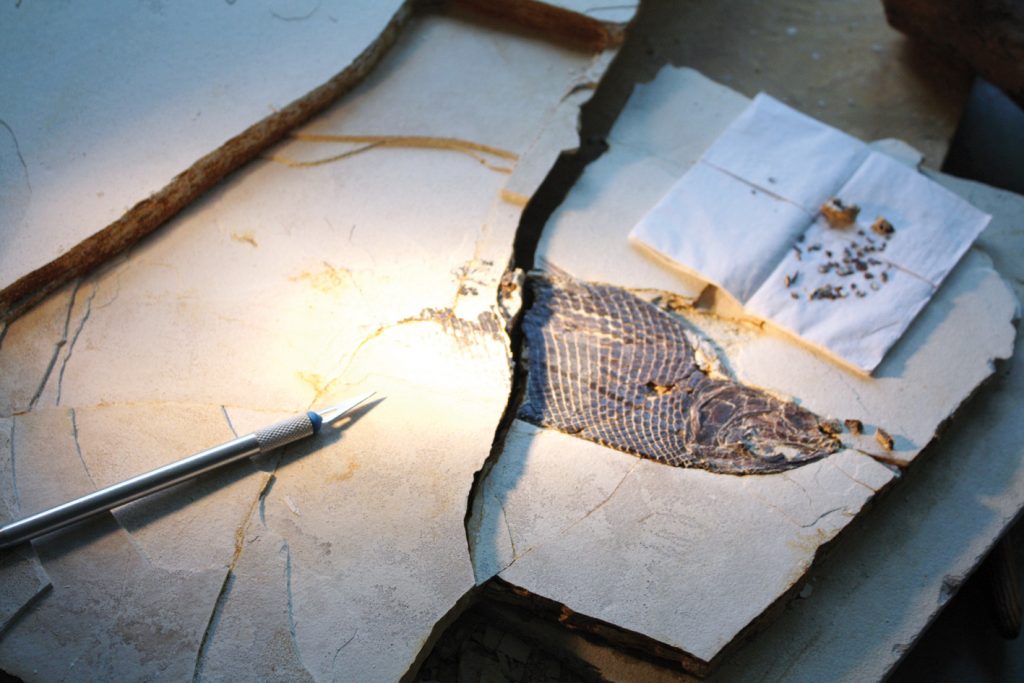
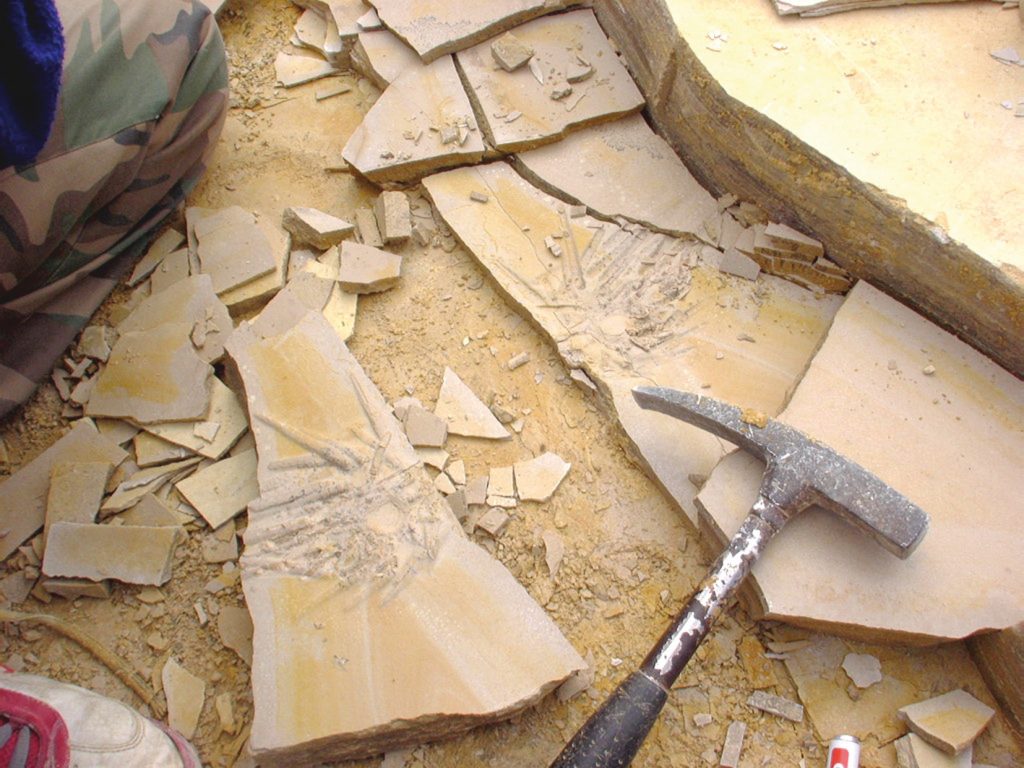
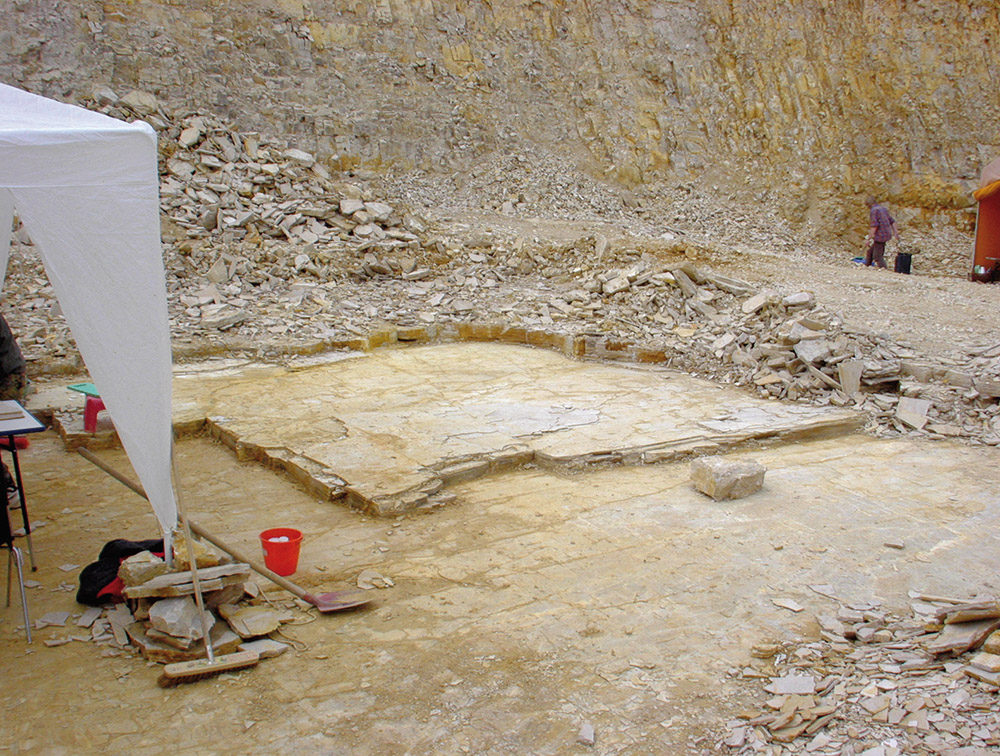
Fossil excavation Mistelgau clay pit
In the former clay pit of Mistelgau near Bayreuth, numerous fossils of marine reptiles, primarily ichthyosaurs, have been found, recovered and prepared since the 1990s during regular scientific excavations by the Urwelt-Museum Oberfranken. The finds, mostly more or less complete but often partially disarticulated skeletons of animals of the genera Stenopterygius, Eurhinosaurus and Temnodontosaurus, but also partial skeletons of sauropterygians of the genus Plesiosaurus represent a unique collection of marine tetrapods, especially ichthyosaurs from the Upper Tarcian (Lower Jurassic).
Fossil excavation Hammerschmiede clay pit
In cooperation with the SNSB, Prof. Dr. M. Böhme, Eberhard-Karls-Universität Tübingen, has been leading the fossil excavations in the clay pit Hammerschmiede in Ostallgäu since 2021. The site became famous for the discovery of the remains of the ape fossil Danuvius guggenmosi, called “Udo”, which were discovered in 2019. The Hammerschmiede clay pit holds a rich fauna from the Middle to Upper Miocene period. The molasse sediments deposited there originate from river courses that once meandered in the foothills of the Alps. They contain the fossil remains of animals that lived in and along the river 11.6 million years ago, including fish, turtles, toads or beavers as well as elephants, rhinos, pandas, deer piglets and many more. The Free State of Bavaria supported the excavation with special funds.
Some of the Hammerschmiede fossils are on display in the special exhibition “Molassic Park – Eine Expedition zu Bayerns Menschenaffen, Urelefanten und subtropischen Wäldern”. The special exhibition is a joint project of the Museum Mensch und Natur, the Botanical Garden München-Nymphenburg, the Bavarian State Collection of Paleontology and Geology, Naturkundemuseum Bayern and the Eberhard Karls University of Tübingen. “Molassic Park” travels to all SNSB regional museums and can be visited there.
Image gallery for bees, wasps and other hymenoptera
Wild bees and other biting insects are highly endangered and, like many other insects, strongly affected by species decline. To be able to protect these animals, it is important to reliably identify them and gather further knowledge about the species.
With a new online image gallery of bees, wasps, ants and other hymenoptera, the Munich State Zoological Collection (SNSB-ZSM), the only one of its kind in the world, aims to contribute to better knowledge of species, including among the general public. The web gallery is intended not only to appeal to committed nature lovers, but also to researchers, in order to bring them closer to this group of insects and to enable species identification.
The project is one of several scientific projects with citizen participation „Citizen Science” at the Munich State Zoological Collection (SNSB-ZSM). The image gallery is also an important addition to the projects to create a genetic library of life based on genetic identification sequences. So-called „DNA barcoding” has been carried out at the ZSM for over 10 years as part of several large-scale projects, such as the current project “GBOL III: Dark Taxa”.
See corresponding press release: Wild bee identification on the web: Munich entomologists launch online gallery for Hymenoptera
-
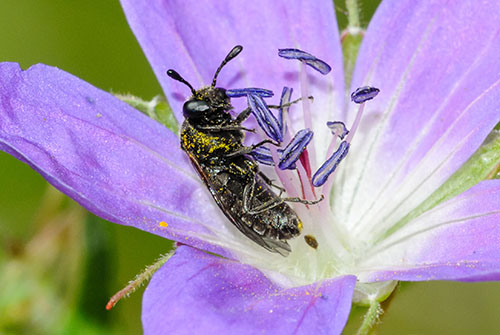
Corynis obscura F. in Geranium flower -
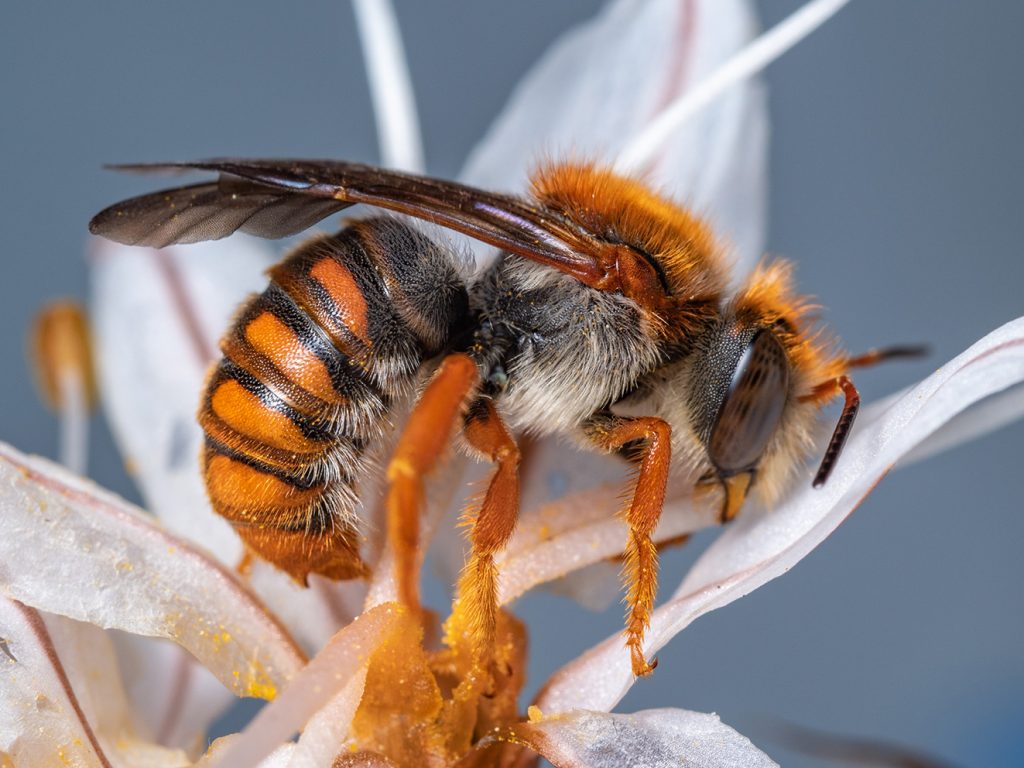
Rhodanthidium sticticum (Foto: Stefan Schmidt, SNSB-ZSM) -
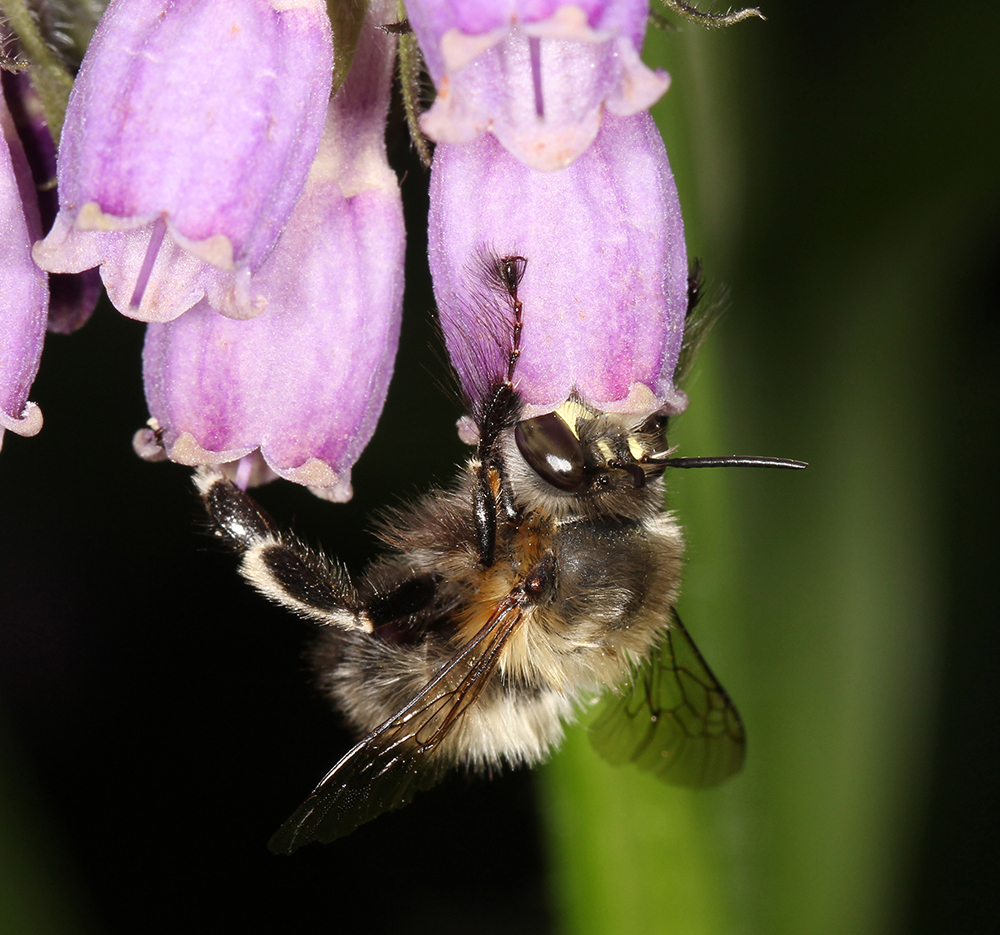
Anthophora plumipes (Foto: Christian Schmid-Egger)
Amateur experts in mineralogy
Ore deposits of the Betic Cordillera
Amateur experts support the Bavarian State Collection for Mineralogy (SNSB-MSM) in the investigation of deep hydrothermal mineral formations in polymetallic ore deposits of the Betic Cordillera in southern Spain. Their activities include sampling in the oxidation zone of polymetallic deposits (gold, silver, lead, antimony, zinc, arsenic) as well as the investigation of deep hydrothermal mineral formations and the study of the formation conditions.
The investigation and redescription of previously unknown minerals and thermodynamic calculations as well as the modeling of paragenesis formation are also partly carried out by these highly specialized citizen scientists.
A total of five amateur experts work for the project – two of them in Germany, three in Spain. Their knowledge in this specialized field far exceeds that of an average graduate mineralogist. Two of them are also co-authors of some scientific publications.
Volunteers in paleontology
Bavarian State Collection for Palaeontology and Geology
Geo- and biodiversity research, taxonomy (history of the earth)
The Bavarian State Collection for Palaeontology and Geology (SNSB-BSPG) has extensive collections of fossils and rocks from all over the world, in the precise identification, documentation and analysis of which the staff on site are also supported by volunteers. Some of these also participate in the publication of research results or the public presentation of these investigations, for example in the form of exhibitions or lectures.
Currently, about 15 volunteers work for the Bavarian State Collection for Palaeontology.
The Palaeontological Museum Munich and the Geological Museum Munich
Public Relations
Numerous volunteers from the two sponsoring associations of the BSPG – the Friends of the Bavarian State Collection of Palaeontology and Geology Munich e.V. and the Friends of the Geological State Collection Munich e.V. – have long provided intensive support for the public relations work of the BSPG. Their support is especially effective at the monthly Sunday openings of the two BSPG museums or during annually recurring events, such as the Long Night of Munich Museums or the Munich Mineral Days. In addition, both sponsoring associations organize regular lecture series on various geoscientific topics.
Approximately 50-60 particularly active volunteers are involved in this area.
Jura Museum Eichstaett
At the Jura Museum Eichstaett and herewith at the Natural History Collection of the Eichstaett Seminary, respectively, volunteers regularly assist with their work. Their activities include, for example, the care of the herbarium, the preparation of fossils from the slab limestone collection and the preparation of UV photographs of selected fossils.
Amateur experts in zoology
Biodiversity research, taxonomy (especially in tropical countries)
Many private collectors invest a considerable amount of time and money in their research, especially for collection building as well as for literature studies, museum visits, exhibitions, lectures and publication of research results.
Between 80-100 volunteer entomologists (the majority of which are butterfly and beetle specialists), and about 10 mollusk collectors are involved in this field of activity, with individual cases in the other groups.
DNA Barcoding (ZSM-Projekte)
The leading European position of the Bavarian State Collection for Zoology (ZSM) in DNA barcoding would not have been possible without the contribution of the many private collectors and amateur experts. They helped and still help the ZSM in research projects such as Barcoding Fauna Bavarica (BFB), German Barcode of Life (GBOL), and Intensive versus Organic Production (HIPP) by collecting and providing suitable sample material. For this reason, more than 50% of the native fauna is already represented in the genetic reference library.
At present, a total of almost 100 volunteers, mainly entomologists, work in this field of activity.
Monitoring of the Bavarian fauna
Many private collectors are active in monitoring the Bavarian butterfly and beetle fauna and meet in various forums and working groups (e.g. determination evenings at the ZSM; Munich Entomological Society; Working Group of Southeast Bavarian Lepidopterists). The data obtained in this way are continuously published in specialist journals such as the “Nachrichtenblatt der bayerischen Entomologen” and are also included in the continuously updated checklist of the butterflies of Bavaria.
About 80 volunteer entomologists (mainly butterflies) are engaged in this field of activity.
Active nature conservation
Many private collectors – supported by the SNSB/ZSM – their expertise on the ecological requirements and needs of native vertebrates (especially birds) and insects. For insects, care advice is provided, especially for butterflies, beetles, grasshoppers, and dragonflies, for official, regional, and municipal conservation, as well as specific suggestions for improving or restoring the structural and chemical integrity of habitats. In addition, recording data is supplied to the Bavarian State Office for Environmental Protection in Augsburg, among other things for the development of species and biotope protection plans. General environmental awareness is also raised through lectures, excursions and other activities at schools and adult education centers.
The Ornithological Society of Bavaria, the Munich Entomological Society, the Friedrich-Held Society for Molluscology work closely together with the Munich State Zoological Collection.
A total of almost 50 volunteers are enthusiastically working in this field of activity.
Botanical Garden Munich-Nymphenburg: Wild bee project
To find out more about endangered wild bee species, scientists from the Bavarian State Collection for Botany (SNSB-BSM) and Ludwig Maximilian University Munich (LMU) conducted a “hands-on project” in the Botanical Garden Munich-Nymphenburg (SNSB-BGM) in 2017 and 2018. In the process, hundreds of wild bees were given back numbers. By individually marking the out-migrating wild bees, of which there are over 100 species in the Botanical Garden, it was possible to find out how far these bees fly in search of pollen or nectar from specific flowers, mates, or new nesting sites. In spring 2017 and 2018 Munich citizens were called upon to discover the numbered wild bees and report their observations.
In both years, over 200 “Citizen Scientists” participated in the project and reported their bee sightings.
Furhter information about the wild bee project can be found in the SNSB Annual Bulletin 2016/2017 and in the corresponding press releases.
New light on Patagonian long-necked dinosaur
Bavarian State Collection for Palaeontology and Geology
Paleontologists of the Bayerische Staatssammlung für Paläontologie und Geologie (SNSB-BSPG) examined the remains of the long-necked dinosaur Patagosaurus fariasi (175 million years) from Argentina as part of a new description. These investigations have great significance for the understanding of sauropod evolution. The researchers published their results in the scientific journal Geodiversitas.
As its name already gives it away, the dinosaur Patagosaurus fariasi originated in what is now Patagonia, Argentina, and lived there about 175 million years ago. It belongs to the group of sauropods (long-necked dinosaurs), the largest land animals that have ever lived on Earth. Some of the best known representatives of the long-necked dinosaurs are Diplodocus or Brachiosaurus. Although not as spectacularly big as its younger cousin Patagotitan (length up to 37 meters), 14 meters long Patagosaurus plays an important role in understanding sauropod evolution.
Patagosaurus shows a mixture of basal and derived traits of more highly developed sauropods. One such derived trait is the so-called pneumatization of its vertebral bones: in the course of their evolution, the land giants developed ever lighter bones with numerous cavities in order to make their bones as light as possible. So they could become as big as, for instance, Patagotitan, the largest land animal ever lived on Earth. Comparison with other basal sauropods from the same time from different areas showed that they also already had pneumatized bones.
“The early pneumatization that Patagosaurus displays was apparently already widespread in many basal sauropods. We therefore suggest that sauropods probably were distributed worldwide even earlier than the early Middle Jurassic. Our redescription helps to better understand the interrelationships of sauropods,” first author Femke Holwerda said.
The transition from the Early to the Middle Jurassic (from about 180 to about 170 million years ago) was a crucial period for the spread and evolution of dinosaurs. Already 5-10 million years later, in the Middle and Late Jurassic, sauropod dinosaurs had reached a global distribution. Unfortunately, there is not much known about the critical time interval when sauropods had their major evolutionary diversification. Argentina is one of the few places in the world where sauropod fossils from this period are found, including Patagosaurus. Since the oldest known long-necked dinosaurs are not much older, but much more incomplete than Patagosaurus, these remains are of special importance to our understanding of the evolution of this important group of dinosaurs.
The fossil was originally announced in 1979 and briefly described in 1986. The paleontologist Femke Holwerda has now reexamined and described the fossils in detail as part of her doctoral thesis at the Bayerische Staatssammlung für Paläontologie und Geologie (SNSB-BSPG) and the Ludwig-Maximilians-Universität in Munich, in collaboration with Oliver Rauhut, curator at the SNSB-BSPG, and the Argentine scientist Diego Pol (Museo Paleontológico Egidio Feruglio, Trelew). The redescription of Patagosaurus fariasi recently appeared as a monograph in the journal Geodiversitas and contains new insights into its evolutionary history and its relationships to other Early and Middle Jurassic sauropods.
However, the extensive material, originally described under the name Patagosaurus, likely contains remains of at least one other previously unknown sauropod species. The researchers therefore suspect that several species of long-necked dinosaurs existed shortly after their origin and played an important role as the largest herbivores of ecosystems at that time. This finding is consistent with the recent hypothesis that sauropods owed their success to rapid climate change toward the end of the lower Jurassic, which led to a marked change in flora and thus the extinction of earlier herbivores. This hypothesis, based on work by Diego Pol and Oliver Rauhut, was also based on remains from Patagonia – underscoring how important this region is to our understanding of dinosaur evolution.
Publication:
Holwerda F. M., Rauhut O. W. M. & Pol D. 2021. — Osteological revision of the holotype of the Mid-dle Jurassic sauropod dinosaur Patagosaurus fariasi Bonaparte, 1979 (Sauropoda: Cetiosauridae). Geodiversitas 43 (16): 575-643. http://geodiversitas.com/43/16
DOI: 10.5252/geodiversitas2021v43a16
Contact:
Dr. Oliver Rauhut
Bavarian State Collection for Palaeontology and Geology (SNSB-BSPG)
Richard-Wagner-Str. 10, 80333 Munich
Tel.: +49 (0)89 2180 6645
E-Mail: rauhut@snsb.de
Dr. Femke Holwerda
Royal Tyrrell Museum of Palaeontology
1500 N Dinosaur Trail, Drumheller, T0J 0Y0 Alberta, Canada
Tel.: +1 403 821 2127
E-Mail: femke.holwerda@gov.ab.ca
f.m.holwerda@gmail.com
-
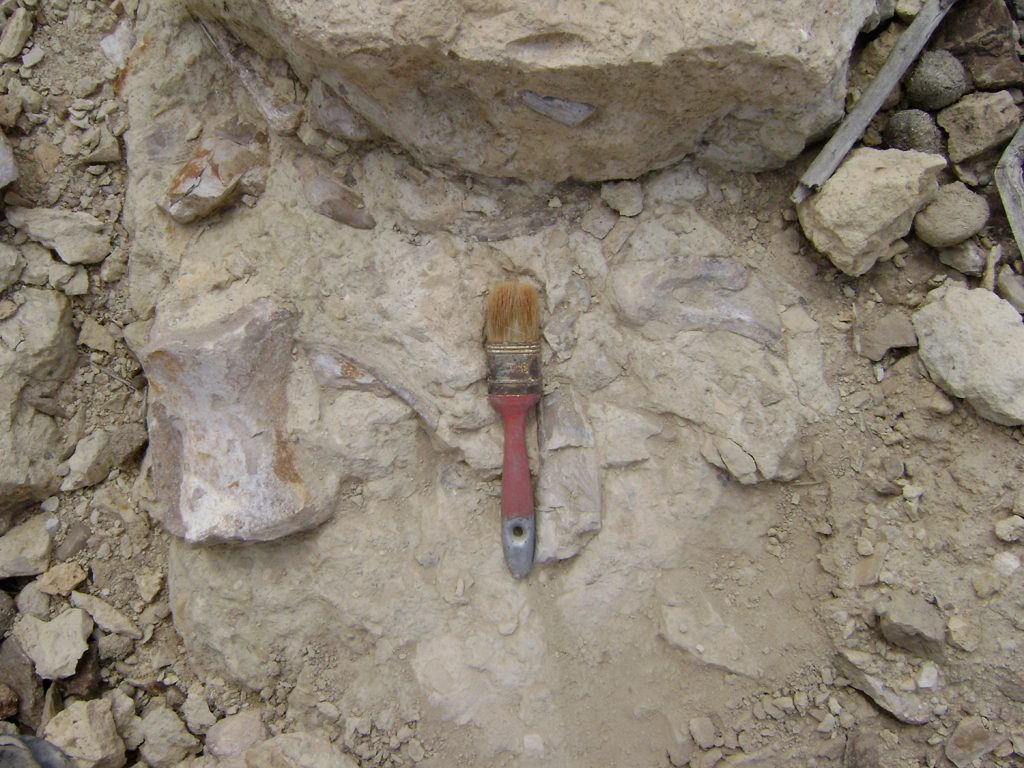
Sauropod bones in rock from a fossil site in Patagonia (image: Oliver Rauhut, SNSB-BSPG) -
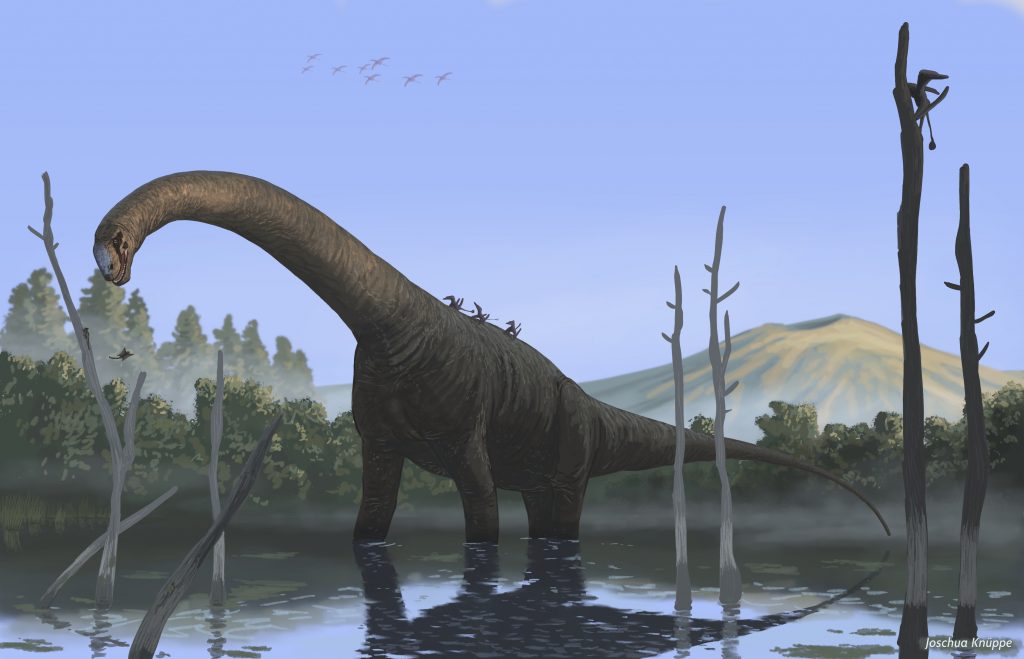
Illustration of the sauropod Patagosaurus fariasi. (artist: Joschua Knüppe)
Jura-Museum Eichstätt
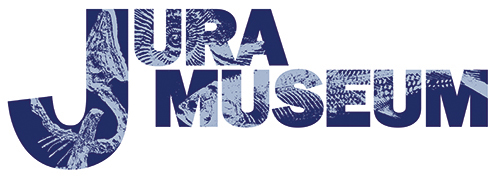
Website: https://jura-museum.de
Management
PD Dr.Christina Ifrim
Museum
The Jura-Museum at the Willibaldsburg Castle in Eichstätt, high above the Altmühl Valley, is one of the most beautifully situated natural history museums in Germany. The focus of the exhibition is on the fossils of the Solnhofen plate limestones, which were unearthed by the intensive quarrying activity in the region.
The fossils allow visitors to travel back in time to a tropical island, reef and lagoon landscape around 150 million years ago, which was populated by fish dinosaurs and crocodiles, coral fish and crabs, insects and pterosaurs. Among the most impressive fossils are the world’s only specimen of the predatory dinosaur Juravenator and an original of the famous prehistoric bird Archaeopteryx. Magnificent aquariums with reef corals, colourful coral fish and “living fossils” bring to life the colourful diversity of marine life from the Jurassic period, 150 million years before today. A multimedia museum guide, which guests can use on their own smartphones, offers a tour of the most important exhibits. Videos and interactive elements provide exciting insights into the Jurassic period.
Changing special exhibitions offer deep insights into the museum’s main research areas or natural history topics. The Jura Museum also offers an extensive programme of guided tours, workshops and lectures. Its proximity to other attractions at Willibaldsburg Castle (e.g. the Museum of Prehistory and Early History and the Bastion Garden) make the Jura Museum a worthwhile destination for an excursion.
The Jura Museum is responsible for curating the collection of the Bischöfliche Seminar Eichstätt. It is the largest collection of fossils from the Solnhofen plate limestones, which are justifiably world-famous for the uniquely good preservation of their fossils. They represent a window into the world 150 million years ago that is unrivalled in its quality. Researchers from all over the world visit the collection. In addition to its own research projects, the Jura Museum also maintains its own fossil excavation. The excavation dates are published on www.jura-museum.de/Forschung. The research results are published in high-ranking journals and communicated directly at the Jura Museum.
Contact
Burgstraße 19
85072 Eichstätt
Tel.: 08421 602980
Fax: 08421 6029835
info@jura-museum.de
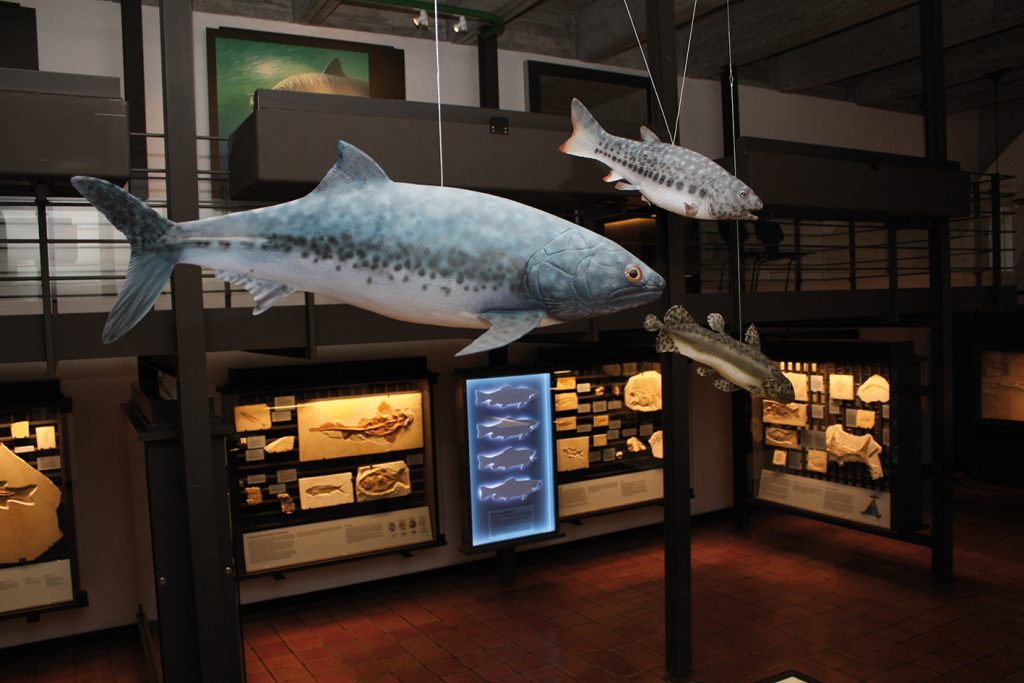
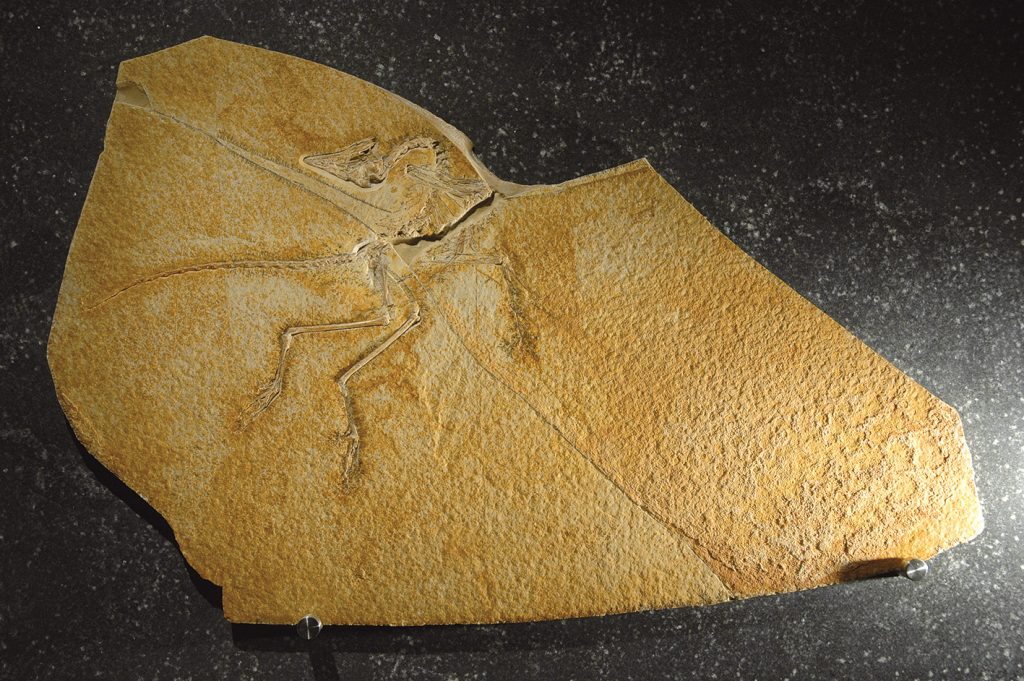
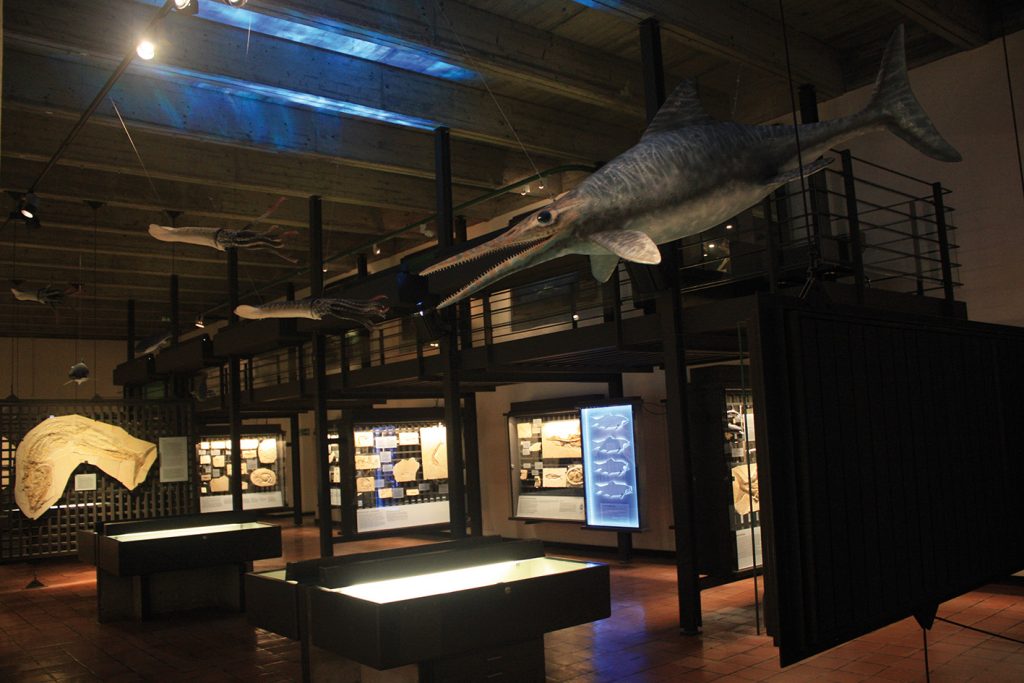
Museum Mensch und Natur

Website: https://www.mmn-muenchen.de
Management
Dr. Michael Apel
Museum
The Museum Mensch und Natur was opened in 1990 as the central exhibition forum of the Bavarian Natural Science Collections (SNSB) It presents selected items from the state collections as well as scientific findings from biological and earth sciences to the public. With its exhibitions designed according to modern museum educational aspects, the museum has attracted more than five million visitors so far. With more than 200,000 visitors annually, it is one of the most visited state museums in Bavaria and one of the most frequented natural history museums in Germany.
Contact
Schloss Nymphenburg
80638 München
Tel. 089 17 95 89 0
museum@musmn.de
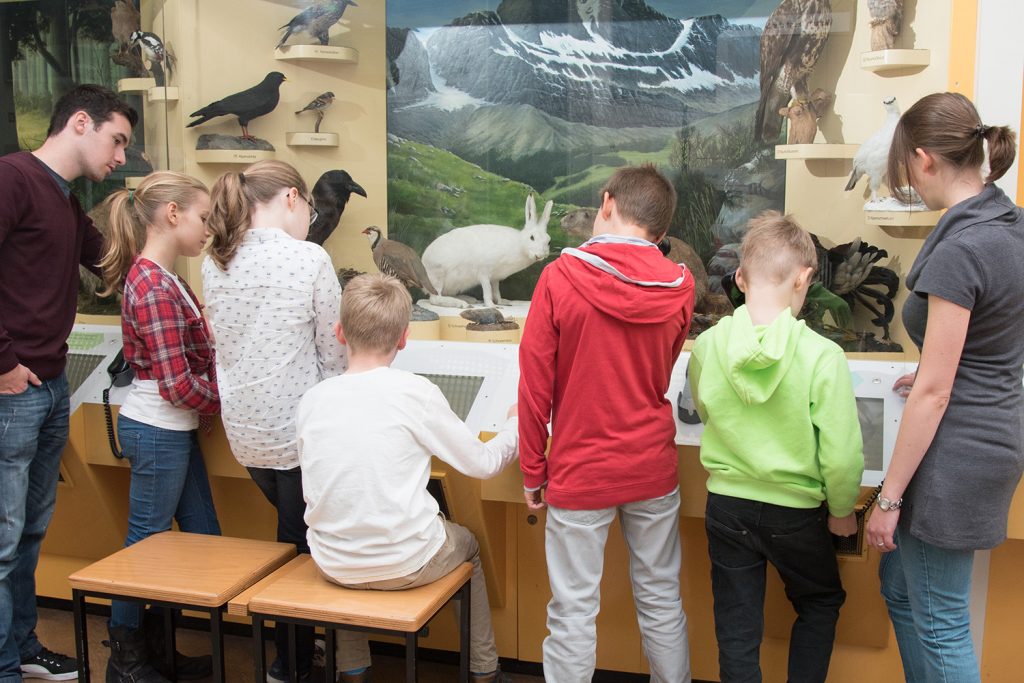
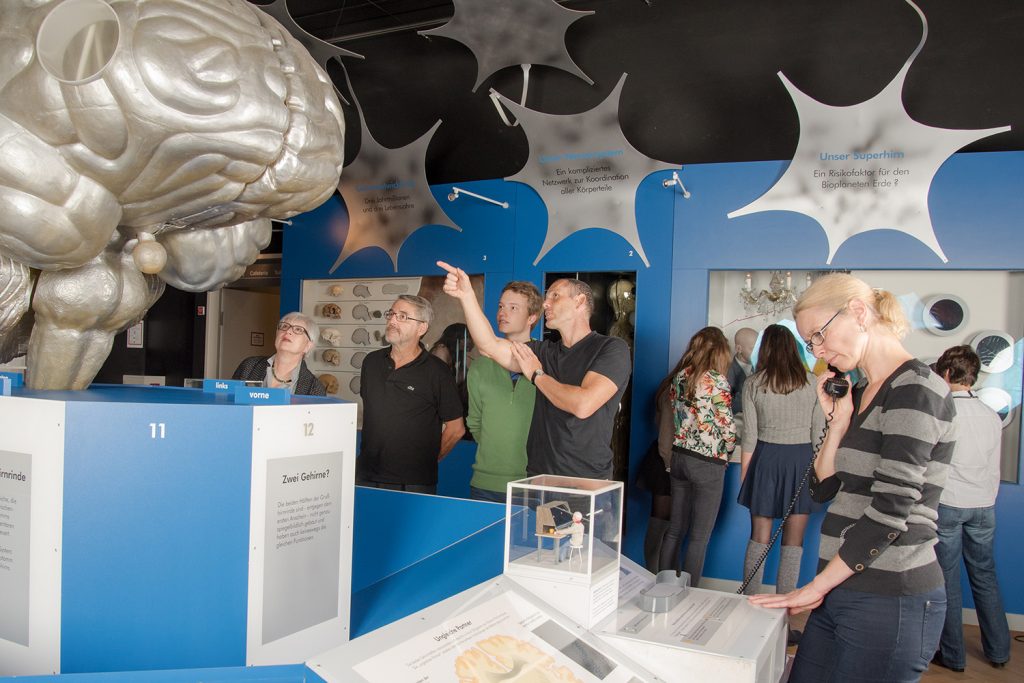
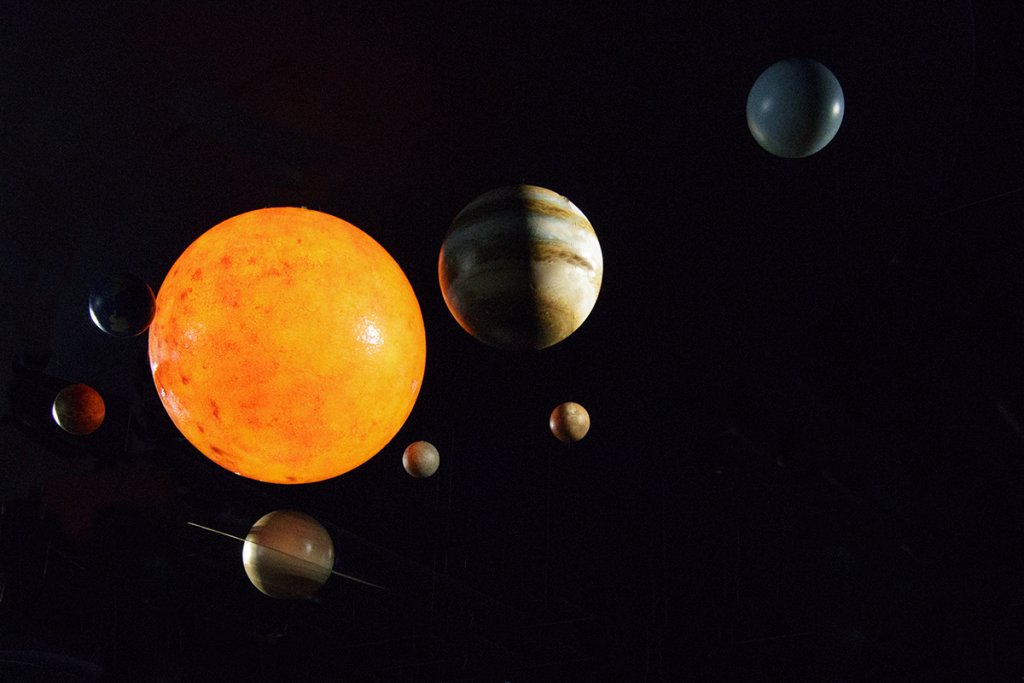
Palaeontological Museum Munich

(Paläontologisches Museum München)
Website: https://bspg.snsb.de
Management
Director: Prof. Dr. Gert Wörheide
Museum
The Palaeontological Museum Munich (Paläontologisches Museum München) is a museum that forms part of the Bavarian Natural History Collections. It invites you to visit plants and animals from ancient times, the world of dinosaurs, extinct elephants and sabre-toothed tigers. The highlight of the museum is the 7th specimen of the first bird Archaeopteryx from the Solnhofen limestones. The “Fossil of the Month” features extraordinary fossils from the treasury of the collections. Guided tours and special exhibitions complete the exhibitions. In addition, multimedia presentations are given on Sundays.
The museum is also worth a visit from an architectural point of view, as it is housed in a 150 year old building, the former municipal school for Applied Arts.
Contact
Richard-Wagner-Straße 10
80333 München
Tel.: 089 2180 6630
palmuseum@snsb.de
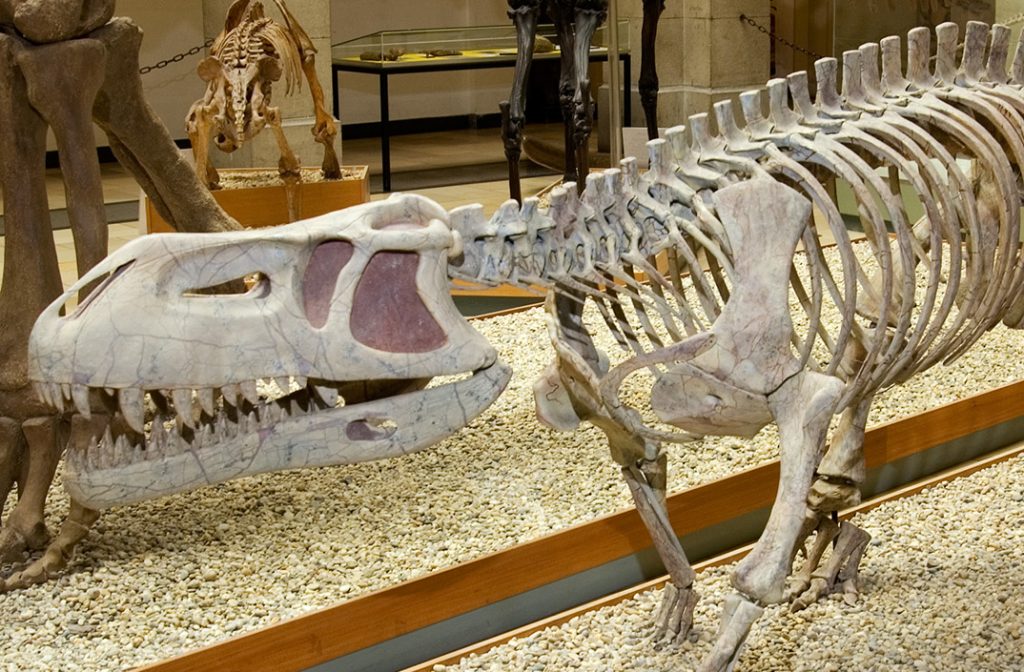
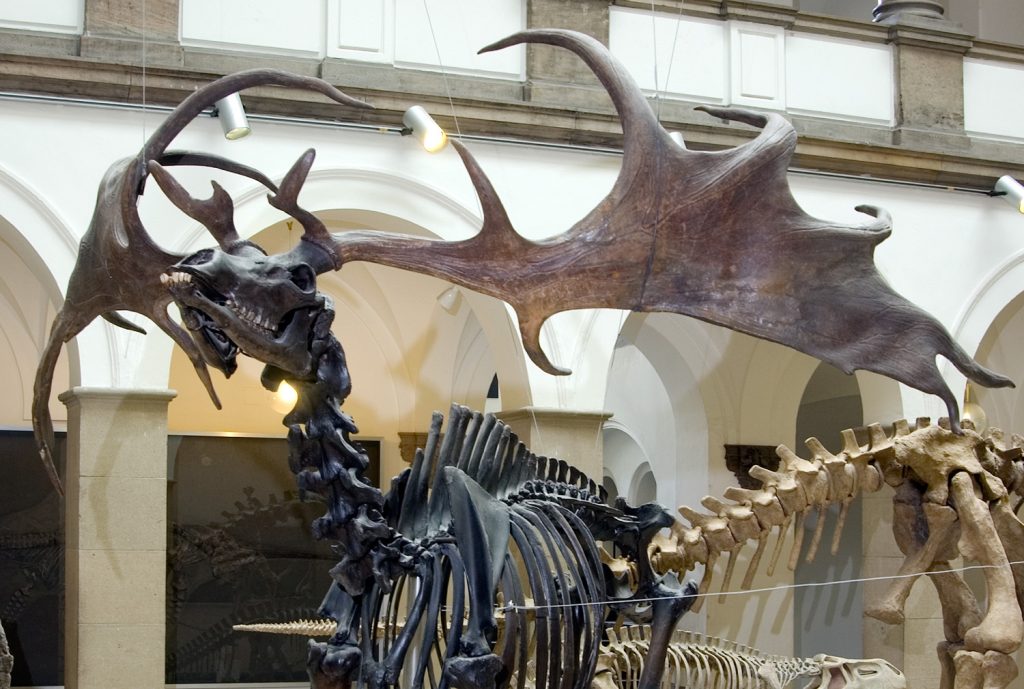
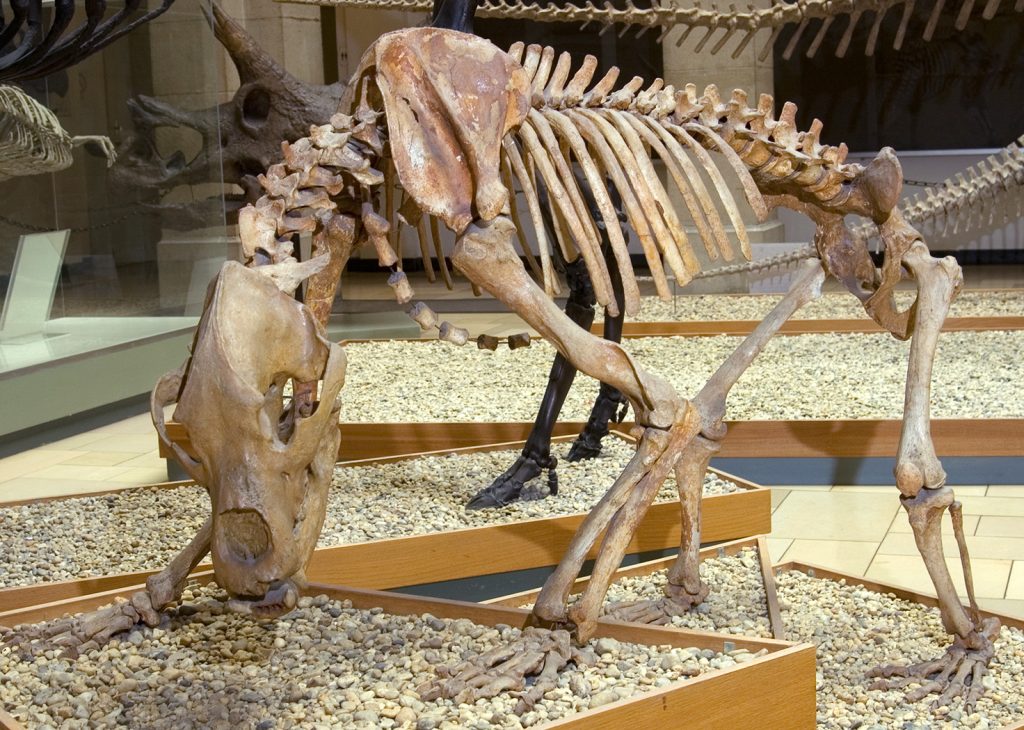
Where do we feel changes?
The Bavarian State Collection of Zoology Munich (ZSM)
Checklist of butterflies
Even here in Germany, the manifestations of climate change can be seen in a loss of biodiversity. Researchers at the Bavarian Natural History Collections are observing the changes in biodiversity and the distribution of faunal and floral species in nature. They compile broad species lists based on collection material, which allows for comparisons of a species‘ spatial and temporal propagation over decades and centuries. The Bavarian State Collection of Zoology Munich compiled an extensive checklist of all Bavarian butterflies in 2016. The list is based on 250 years of butterfly studies and more than 400,000 data records. As for Bavaria, over 3,200 species have been established, even including a new discovery from the grass miner moths family (Elachistidae). However, a 13% loss of species was confirmed and even many of the „ordinary species“ like the blood-vein (Timandra comae) or the garden tiger (Arctia caja) are declining rapidly.
Source: Systematic, revised and commented checklist of Bavaria’s butterflies (Insecta: Lepidoptera)
Publication: Systematische, revidierte und kommentierte Checkliste der Schmetterlinge Bayerns (Insecta: Lepidoptera)
Alfred Haslberger & Andreas H. Segerer
Mitteilungen der Münchner Entomologischen Gesellschaft (2016) 106 (Supplement), 1–336.
Further information checklist of butterflies
The Bavarian Botany and Mycology State Collection Munich (BSM)
Flora of Bavaria
The last time Bavaria’s flora was recorded in a comprehensive work was in 1914 . The initiative „Flora of Bavaria“ at the Botany and Mycology State Collection Munich (BSM) aims to document and compile a record of the flora for the entire state of Bavaria. This will help to evaluate changes in it caused by climate change and land use. Thanks to comparative studies of recent and historic evidence stemming from the Botany Collection, it is possible to compile valuable information such asthe „Red Lists“ of threatened species.
Link to Website Flora von Bayern
The Bavarian Botany and Mycology State Collection Munich (BSM)
Flora of Munich
The last published list of species covering Munich’s plants is more than 100 years old. Since that time, the number of inhabitants has multiplied by nearly ten. In this time, there has been a huge decline in species, but also the introduction of new ones, which can be seen by a direct comparison with the mapping project „Flora of Munich“, running since 2006. The Indian strawberry (Duchesnea indica), which today is widely spread in the city area, is an example for a new addition that was entirely unknown in this part of the world 100 years ago, or the bee-bums (Impatiens glandulifera), which, on the one hand, suppresses indigenous plants, but, on the other, grants valuable phacelia in late summer.
Link to Website Flora von München
Bavarian State Collection for Paleontology and Geology
Fossils as witnesses of the past
Fossils are witnesses of past life on Earth. Comprehensive collections of fossils from a specific geological formation or a certain region provide clues to the habitat or climate of the past. Such as the fossils and rocks from the Solnhofen Limestone area, which show that around 150 million years ago, there was a tropical climate in Bavaria. The landscape in Upper Jurassic times was characterised by a warm shallow sea, divided into lagoons and reefs. A research project at the Bavarian State Collection for Paleontology and Geology (BSPG) focused intensely on a variety of fish fossils from the Solnhofen Limestone, which areextraordinary well preserved.
Link to Bayerischen Staatssammlung für Paläontologie und Geologie (BSPG)
Munich Botanical Garden (GBM)
Woody plants and climate change
How do native and non-native woody plants cope with climate change? This question is being addressed in the Munich Botanical Garden. For six years now, there have been experimetal studies on how the leaves of over 1000 individuals out of 500 species of trees and shrubs sprout. Out of 500 species, some 85 % are not from Central Europe, but from Asia or North America. It is this very variety of species growing next to each other that allows us to find out about their genetically predisposed strategies, since they are all exposed to the same conditions. This way, their „genotype“ is accessible to research. This fundamental research approach is only possible in Munich Botanic Garden and has led to a number of unexpected events: it appeared, for instance, that North American species sprout after a much longer winter period than European or Asian ones and that on average, their leaves bloom three weeks less than those of all the other species. Because the winter period in Munich has shortened by four weeks in the past 100 years, especially American woody plants tend to struggle in this part of the world.
Munich Botanical Garden (BGM)
Botanical Garden, a home for wild bees
The Munich Botanical Garden is home to 107 of the 571 wild bees species found in Germany. Has this number or the range of species changed in the course of the past years? Both questions could be answered by a Master’s thesis, since the garden’s species of bees had already been compiled once before in 1997, guided by scientists of the Zoological and Botanical Collections (ZSM and BSM). Twenty years ago, 79 species were found. Out of the newly added species, eight are thermophilic, whereas 16 species which could not be found anymore, are adapted to colder conditions. The thermal preference for nest-building and forage crops of many our bees is still unknown though. The studies are thus carried on in a PhD thesis. One of the possible logical explanations for the monitored changes is the rise in temeperature in Munich of 0.5 °C between 1997 and 2017. Generally speaking, the variety of bees increases in warmer regions.
Publication https://link.springer.com/article/10.1007%2Fs00442-018-4110-x
Naturkundemuseum Bamberg
Natural History Museum Bamberg
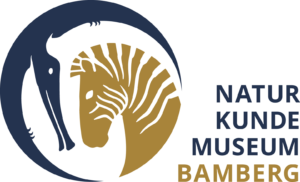
Website: https://naturkundemuseum-bamberg.de
Management
Dr. Oliver Wings
Museum
The Naturkundemuseum Bamberg is a museum that forms part of the Bavarian Natural History Collections. The museum has a long history, starting in the year 1791 when Archbishop Franz Ludwig von Erthal founded a collection of scientific specimens as the basis for a professorship in Natural History. To house this collection a spacious exhibition hall, two storeys high, was built in what was then a Jesuit school. The central part of this former museum, the beautiful neoclassical hall, can still be visited in its original state as a “museum within the museum”.
This neoclassical hall forms a charming contrast to the modern exhibition area, where visitors are made familiar with different topics of natural history. Here the focus is on Upper Franconia. The museum shows a multitude of functional models, dioramas, audio programs and, of course, excellent exhibits, i.e. some of the famous Lying Stones of Dr. Beringer. The exhibitions deal with geology, mineralogy and soil science as well as with indigenous mammals and fossils.
Contact
Fleischstr. 2
96047 Bamberg
Tel.: 0951 8631249
Fax: 0951 8631250
info@naturkundemuseum-bamberg.de
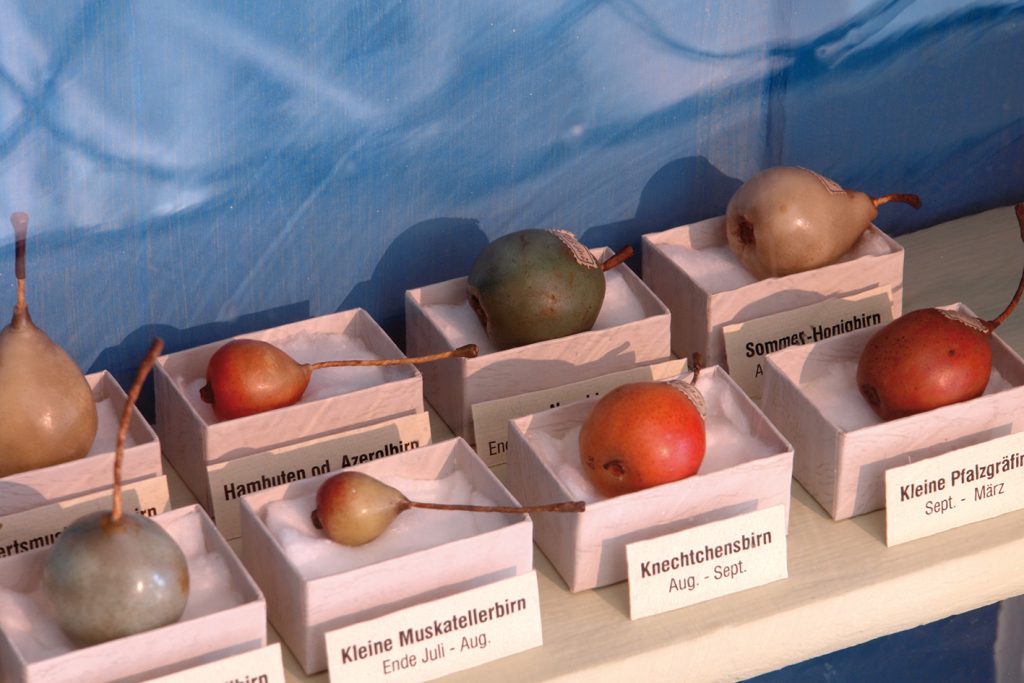
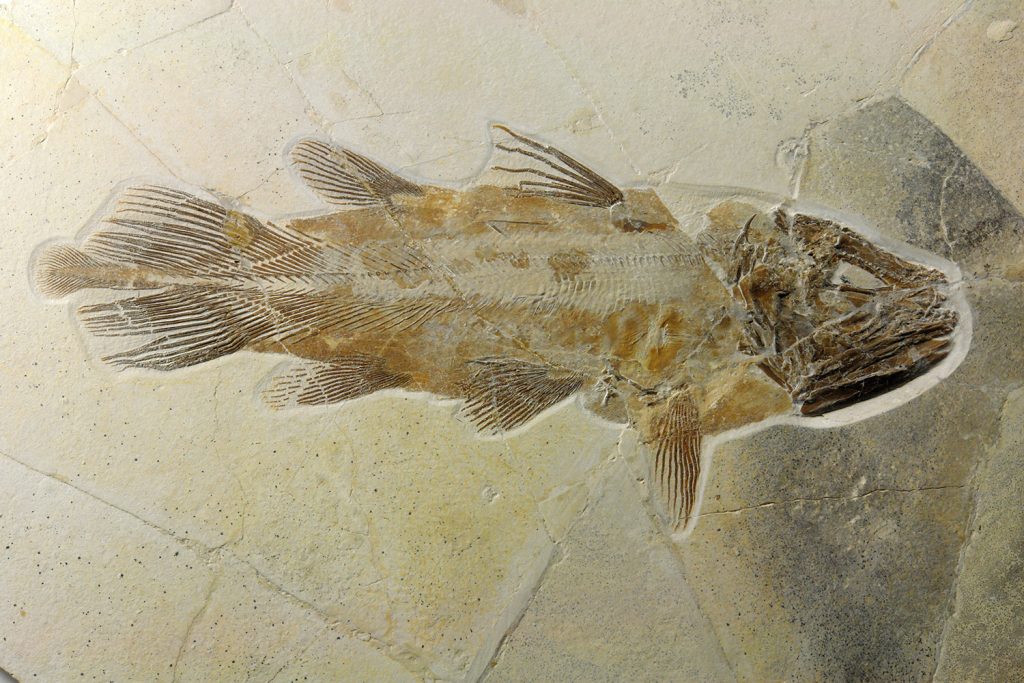
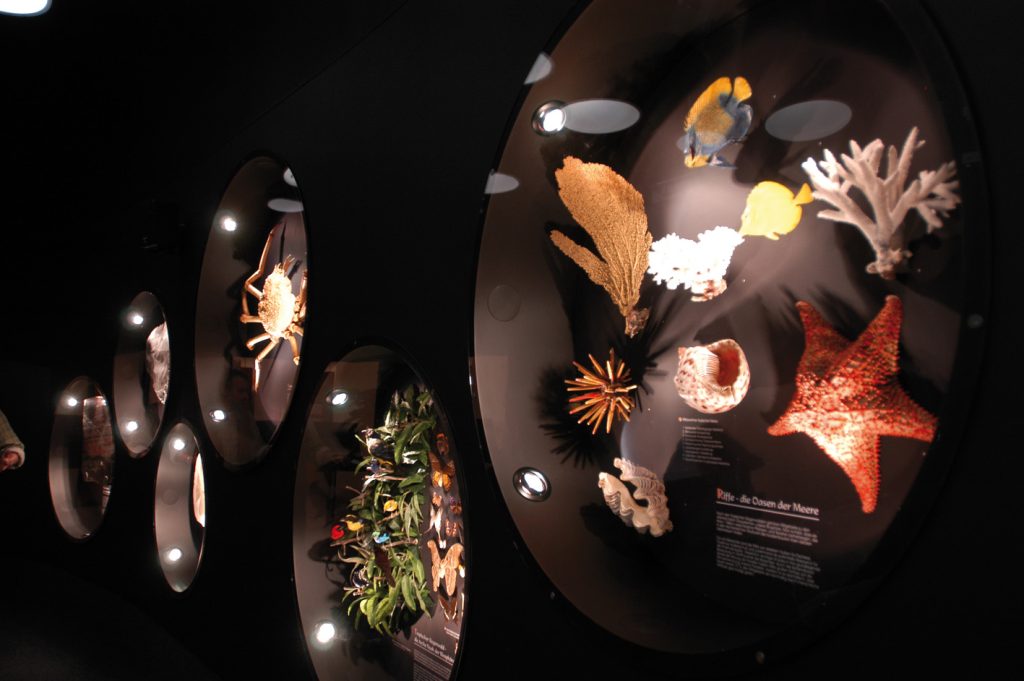
Geological Museum Munich
(Geologisches Museum München)

Website: https://bspg.snsb.de
Management
Director: Prof. Dr. Gert Wörheide
Museum
The Geological Museum Munich (Geologisches Museum München) is a museum that forms part of the Bavarian Natural History Collections. Its permanent exhibition “Earth´s Changing Crust” (Erdkruste im Wandel) demonstrates the fundamentals of geology, including topics such as sedimentation, mountain building, volcanism, and plate tectonics. In “Bavaria´s Rocky History” (Bayerns steinige Geschichte) the visitors take a journey back into the millions-of-years-old Bavarian past. This exhibition invites the visitors themselves to examine the rocks and stones; these are contained in the drawers of the showcases. A wall newspaper called “Geo-Forum” presents information on current events in geology, such as earthquakes, volcanic eruptions, recent research of general interest, etc.
The museum is a public part of the Bavarian State Collection for Paleontology and Geology.
The museum is directly adjacent to the Palaeontological Museum Munich.
Contact
Richard-Wagner-Straße 10
80333 München
Tel.: 089 2180 6547
geomuseum@snsb.de
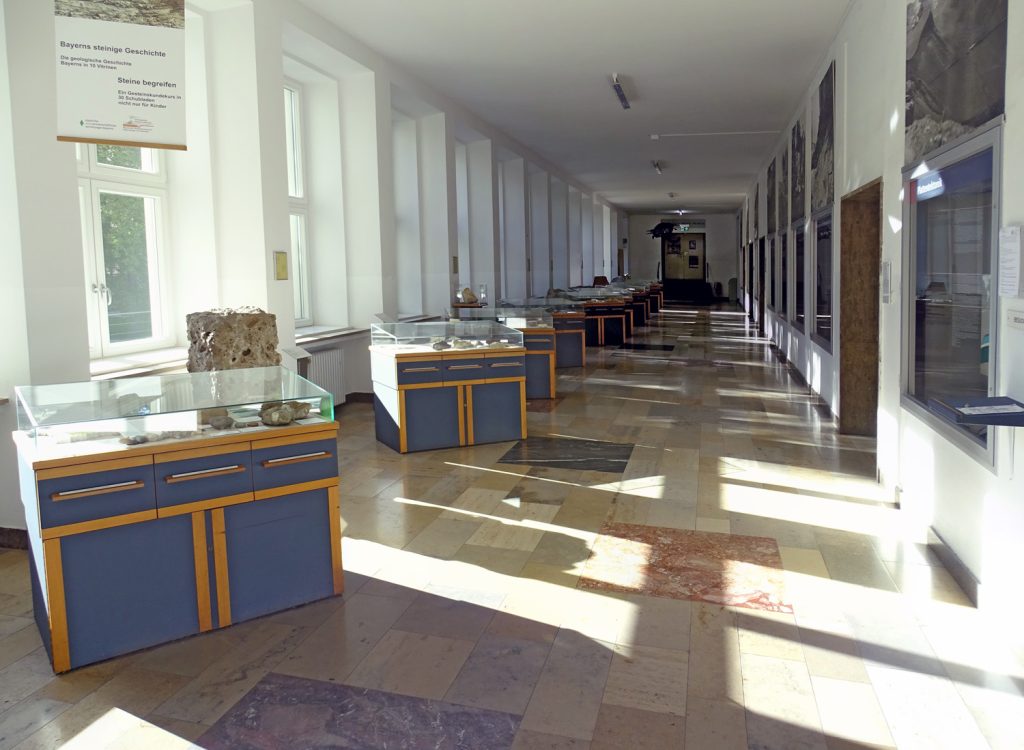
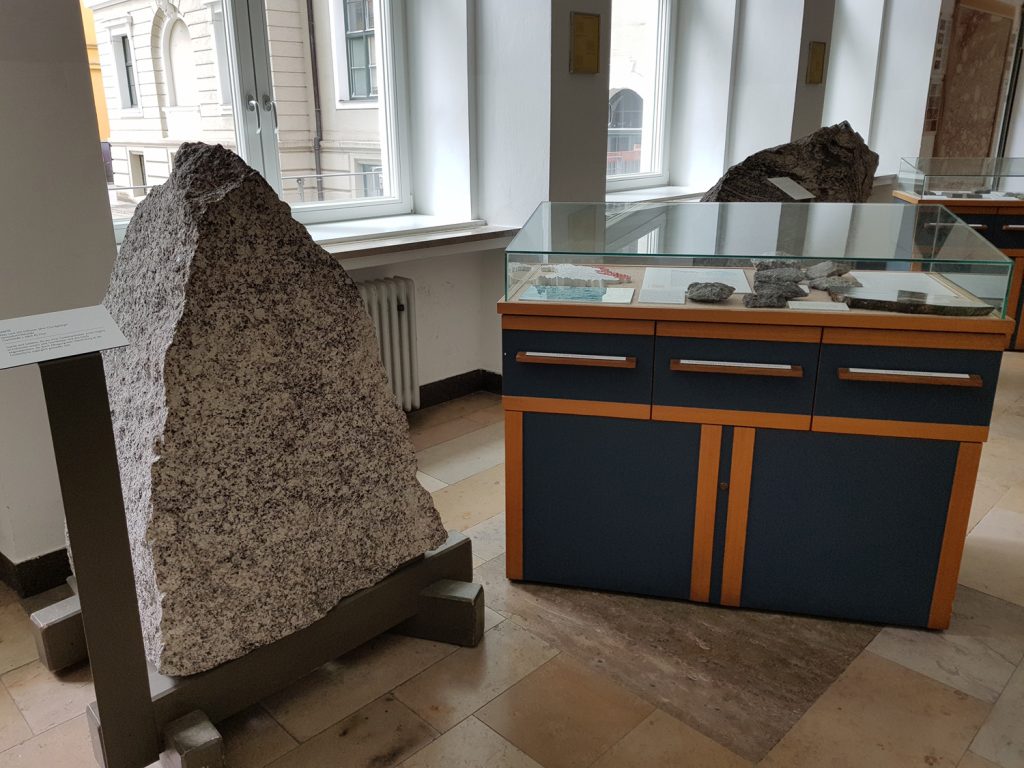
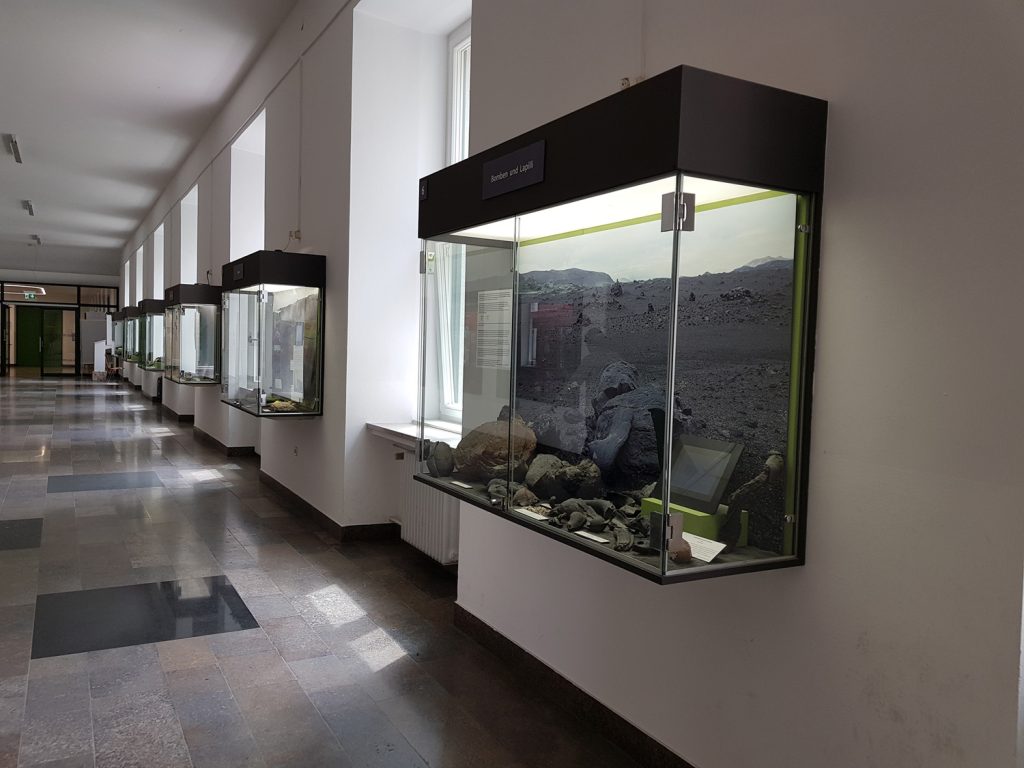
RiesCraterMuseum Nördlingen

Website: https://www.rieskrater-museum.de
Management
Prof. Dr. Stefan Hölzl
Museum
About 15 million years ago, an asteroid with a diameter of about 1 km collided with the earth. The result of this cosmic encounter is the Nördlinger Ries, a striking terrain formation in the Swabian-Franconian Alb. The approximately 25 km large, almost circular impact crater is one of the best preserved craters of this size. The ejecta blanket of the Ries crater with the two most important rock formations, Suevite and coloured breccia (Bunte Brekzie), is excellently exposed and already served the Apollo astronauts as a training area for their moon missions.
The RiesKraterMuseum is a natural science museum with one central topic: the formation and significance of impact craters, especially the Nördlinger Ries. In a lavishly renovated medieval barn building dating back to 1503, the Ries event is presented in six rooms, with its planetary roots and its earthly effects, which continue to have an impact today.
Contact
Eugene-Shoemaker-Platz 1
86720 Nördlingen
Tel.: 09081 84710
Fax: 09081 84720
rieskratermuseum@noerdlingen.de
Museum Mineralogia Munich
Website: https://msm.snsb.de
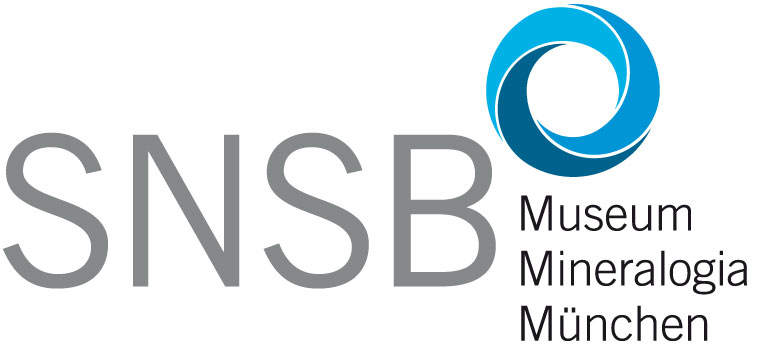
Management
Director: Prof. Dr. Wolfgang Schmahl
Museum
The Museum Mineralogia Munich is a museum that forms part of the Bavarian Natural History Collections. It presents a didactically structured exhibition and gives a highly aesthetic insight into the world of minerals, crystals and gemstones.
Special exhibitions show additional themes such as diamonds, rocks from Mars, and gemstones. Numerous lectures and guided tours through the museum, as well as the advanced training opportunities for teachers, pupils and students, are designed to make the visitors aware of the mineralogical treasures of our planet.
The Museum Mineralogia Munich is the public part of the Bavarian State Collection for Mineralogy.
Contact
Theresienstr. 41
D-80333 München
Tel.: 089 2180 4312
Fax: 089 2180 4334
E-Mail: mineralogische.staatssammlung@snsb.de
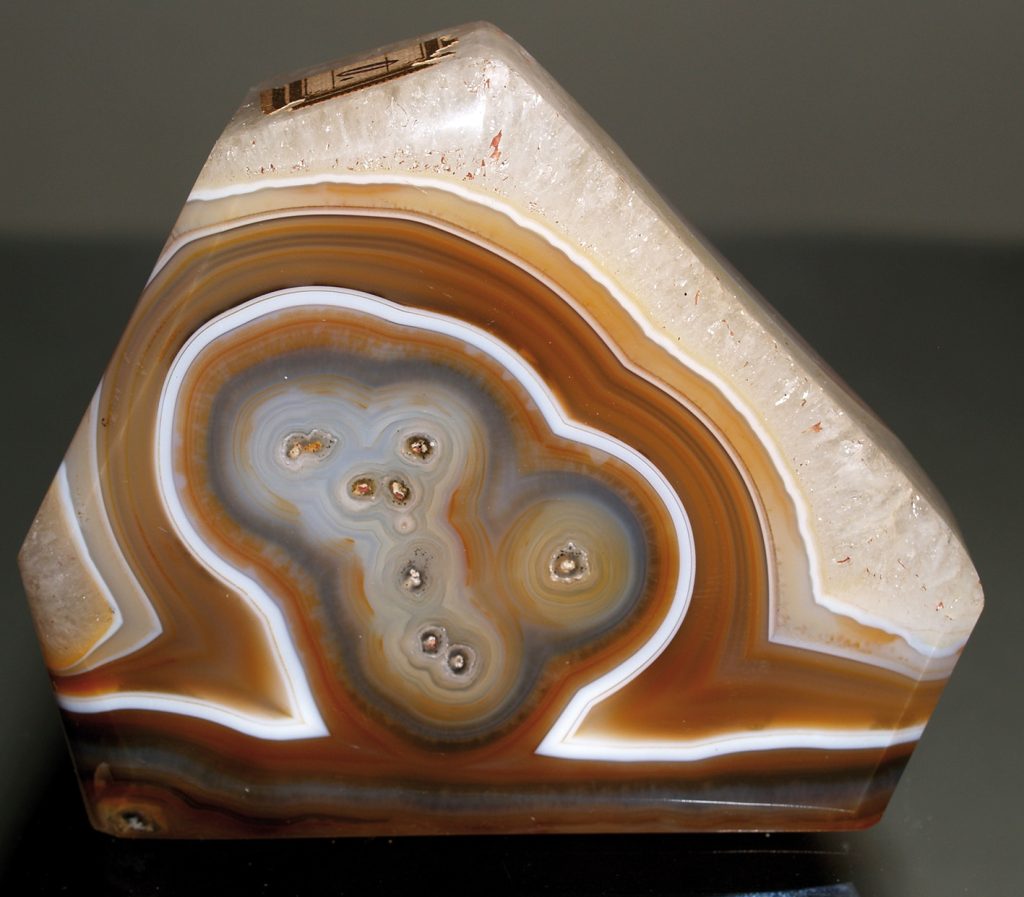

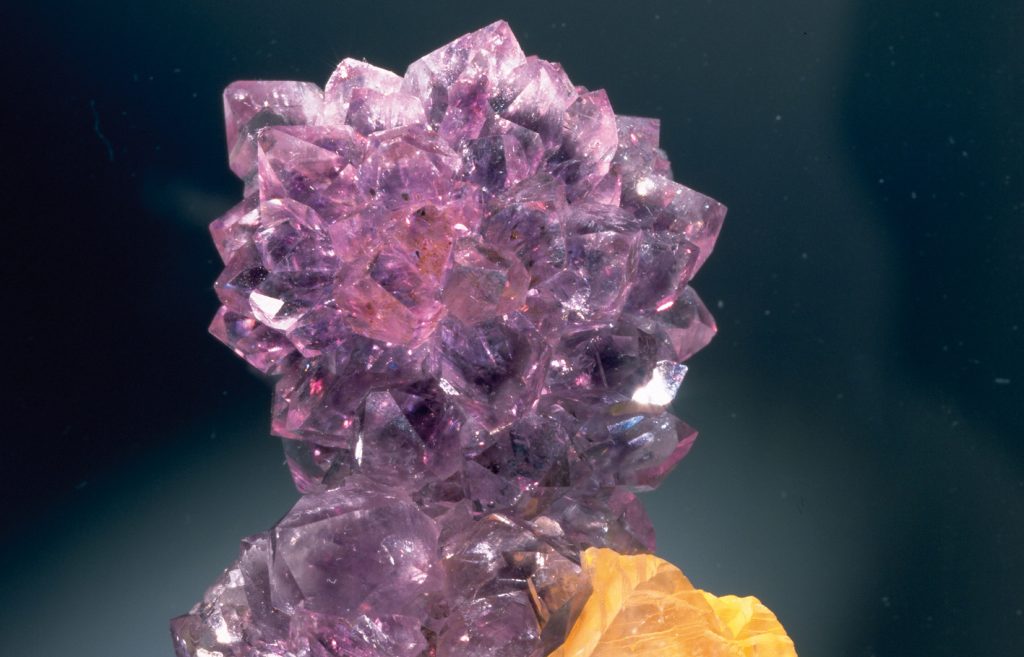
Evolutionary research
Bavarian State Collection for Paleontology and Geology (BSPG)
Light long-necked ones
Dinosaurs, especially those belonging to the group of long-necked dinosaurs, were impressive animals. The impact of their sometimes huge physical dimensions on metabolism, mobility and biomechanics is being studied by researchers of the Bavarian State Collection for Paleontology and Geology (BSPG). For instance, an examination of sauropod dorsal vertebrae reveal , a stable, lightweight bone structure containing numerous air-filled cavities instead of massive bone tissue.
Corresponding publication: Rauhut, O.W.M. 2005a. 40 m lang und 100 t schwer – Der Gigantismus der sauropoden Dinosaurier. Fossilien 22 (4): 208-213; 5 Abb.
The Bavarian State Collection of Zoology Munich (ZSM)
Beetle evolution
The Bavarian State Collection of Zoology Munich (ZSM) investigates the question of how biodiversity is developing in time and space. To accomplish this, modern methods such as DNA-analysis, and micromorphological examinations, as well as comparitive examinations using the collections are employed. In order to better understand the evolution of diving beetles, about 20,000 bugs were collected during several expeditions in New Guinea and Australia. In this way, a precise picture of the evolution of beetles in the respective area can be revealed.
List containing diverse publications concerning the research of diving beetles in New Guinea and Australia
The Bavarian State Collection of Zoology Munich (ZSM)
How new species develop
Clever fish hybridise: the emergence of new biological species is the core of evolution. Zoological collections are the basis for research on the evolution of new species. New methods including DNA-analysis, sometimes lead to surprising results, such as the speciation research on cichlids from a small crater lake in Cameroon by ZSM scientists. Some of the indigenous species did not develop in the usual way through genetic mutation, but by hybridisation of different species (as it is the case with many plants). These so called hybrids often occupy extraordinary ecological niches, such as the sponge consuming cichlid Pungu maclareni, which has a very special set of teeth and powerful masticatory musculature.
Link to the corresponding publication: https://frontiersinzoology.biomedcentral.com/articles/10.1186/1742-9994-1-5
Bavarian State Collection for Paleontology and Geology (BSPG)
Evolution of teeth
Teeth are typical features of vertebrates (including humans) and outstanding products of evolution. Each of their properties, such as shape, function, microstructure and biogeochemistry is the result of over 500 million years of evolution. Depending on the ecological, anatomical and physiological conditions, countless types of teeth were created, which are adapted to the respective needs of the individual species. Therefore, teeth not only provide important information about the nutrition and life history of their owners, but also for their identification. Because tooth enamel is the hardest biomineral in the world, teeth can survive thousands and millions of years after death, providing insights into their natural history.
All we know about the existence of many extinct mammals, their distribution and biology, a research focus at the Bavarian State Collection of Paleontology and Geology, is mainly based on their fossilized teeth. Dentists and dental technicians derive criteria for optimal implant therapy, that is based on the knowledge of the evolutionary history of teeth developed by BSPG scientists.
Links to the corresponding publications:
https://link.springer.com/article/10.1007/s10914-015-9313-xhttps://zslpublications.onlinelibrary.wiley.com/doi/full/10.1111/jzo.12518
https://www.tandfonline.com/doi/abs/10.1080/08912963.2018.1525366
https://epub.ub.uni-muenchen.de/40474/1/21_roessner_359_367.pdf
https://www.sciencedirect.com/science/article/pii/S1616504711000814
Discovering new species
The Bavarian State Collection of Zoology Munich (ZSM)
Mysterious life on earth
So far, only about 10% of all multicellular living organisms on Earth have been discovered. A large part of life is thus still unknown! Especially within the group of insects, large numbers of new species are constantly being discovered, all in all around 20,000 new species per year. Through genetic identification of species and by comparison with known DNA sequences, many new discoveries can be quickly and accurately identified. In this way, scientists at the Bavarian State Collection of Zoology Munich (ZSM) were able to identify more than 100 new weevil species from New Guinea within a fairly short period of time. Presently, the ZSM has genetically classified approximately 16,000 beetle species.
Link to the corresponding publication https://onlinelibrary.wiley.com/doi/full/10.1111/1755-0998.12354
The Bavarian State Collection of Zoology Munich (ZSM)
Biodiversity in Madagscar
The study of Madagascar’s biodiversity, especially the examination of frogs, lizards, snakes and turtles, most of which are not found anywhere else in the world, constitutes one of the ZSM‘s main research focuses. The number of new discoveries, particularly within the group of amphibians, has risen enormously over the past 20 years. Unfortunately, biodiversity research also shows just how endangered many of these species are due to habitat destruction.
Link to a list of diverse publications concerning biodiversity in Madagascar
The Bavarian Botany and Mycology State Collection Munich (BSM)
Discovering a new plant species on Facebook
For the first time, botanists discovered and described a new plant species only by looking at a photograph that had been posted on the social network service „Facebook“. An international team of botanists from Brazil, the United States and the Bavarian Botany and Mycology State Collection Munich (BSM) identified the plant with certainty as a new species by comparing it with already known sundew species from the BSM’s collections. Drosera magnifica, a microendemic sundew, turned out to be the largest sundew of the Americas known to date. In comparison with other known sundew species, this plant features distinctive characteristics, however, does also show several common traits.
Link to the corresponding publication https://biotaxa.org/Phytotaxa/article/view/phytotaxa.220.3.4
Detecting environmental impacts
The Bavarian State Collection of Zoology Munich (ZSM)
Insects sensing the water quality
Aquatic insects figure prominently as biological indicators when it comes to determining the water quality of streams, rivers and lakes. Many species, especially those of dayflies, caddisflies and stoneflies, are optimally adapted to their habitats and react very sensitively to smallest changes in their environment caused by pollution or increases in water temperature. The State Collection of Zoology Munich (ZSM) has compiled a genetic species database for a quicker and easier way on how to identify theses insects. This provides great assistance to ecologists in the assessment of a water body’s „health“.
Link to the publication https://onlinelibrary.wiley.com/doi/abs/10.1111/1755-0998.12683
The Bavarian Botany and Mycology State State Collection Munich (BSM)
Lichens: Indicators for bad air and climate change
Lichens have been known for being reliable indicators for air pollution for a long time. However, scientists at the Botany and Mycology State Collection Munich (BSM) also do research on certain lichen species that are very sensitive to temperature and rainfall changes, and therefore climate change. The common greenshield lichen Flavoparmelia soredians is one of those typical indicators for climate change, athough it has been indigenous to Germany only for some years. Thanks to a large collection of lichens and such databases, as well as to modern genetic determination methods at the BSM, even species that are quite hard to identify can now be precisely identified, which in turn helps to demonstrate changes affecting the climate.
The lichens database of the Botany and Mycology State Collection Munich
Education and training
The Bavarian Natural History Collections (SNSB)
Collections for all
The broad population’s education in terms of natural history is the core task of the SNSB’s museums and collections. Humans are ready to protect and preserve only what they know. The great variety on earth is presented in numerous permanent and special exhibitions by the Bavarian Natural History Collections (SNSB) with attention drawn to changes and dangers. Objects of our collections and research activities are exhibited in our numerous museums. Additionally, we open our collection magazines during our open house days and show our collections‘ great holdings to the general public. In several „Citizen Science Projects“, we frequently include committed field amateurs and interested members of the public in our research. For example, within the framework of a wild bees-catching project initiated by the Botany and Mycology State Collection (BSM), we asked Munich’s inhabitants for their assistance in the search of numbered wild bees in order to assess their range. There is also continued, active participation of dedicated members of the public interested in botany, especially when it comes to the collection of plants within the „Flora of Munich“ Project, aimed at the study of changes in the urban flora.
Urwelt-Museum Oberfranken
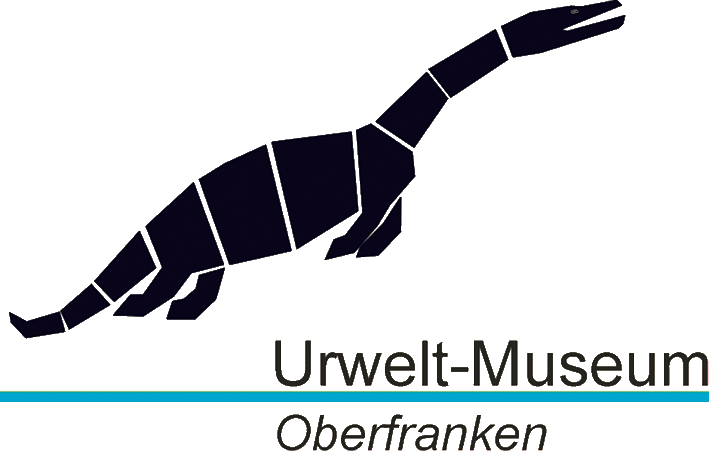
Website: http://www.urwelt-museum.de
Management
Dr. Joachim M. Rabold
Museum
The Urwelt-Museum Oberfranken is a museum that forms part of the Bavarian Natural History Collections. It is mainly focused on the past and present natural history of Upper Franconia. Numerous exhibits (such as the skeleton and model of the early aquatic reptile Nothosaurus) introduce the visitors to this subject. Superb exhibitions of rare minerals and other attractions help to understand the inanimate nature of Upper Franconia. A world-wide unique highlight is a 3×3 meter model of a gold crystal which can be entered by visitors. Interactive and instructive computer games within the exhibitions invite children (but also adults) to play with sciences.
Located in the centre of the city of Bayreuth, the Urwelt-Museum Oberfranken is famous for its numerous special exhibitions and performances, making it an exciting place to become acquainted with prehistory.
Contact
Kanzleistraße 1
95444 Bayreuth
Tel.: 0921 511211
verwaltung@urwelt-museum.de
Health of animals and humans
The Bavarian State Collection of Anthropology Munich (SAM)
10,000 years of history of health
Research on the evolution of human health worldwide is made possible by studying human skeletons. Scientists from all over the world compare information on age, height, sex and illnesses recorded from skeletons originating from 10,000 year history of humankind,. Particular attention is paid to the social history of women and children, the segment of society, who for various reasons, have hardly left their mark in historical written sources. The Bavarian State Collection of Anthropology and Palaeoanatomy is project partner of the international Global History of Health Project.
The Bavarian State Collection of Zoology Munich (ZSM)
Parasite identification
Tourists or business travellers increasingly introduce new parasites to Germany. In addition, there is also an increase in new animal species migrating to Germany, which could pose a threat to humans . For instance, non-localticks or mosquito species can transmit a variety of tropical diseases. By comparing their genetic databases, the researchers at the Bavarian State Collection of Zoology Munich have in many cases already been able to define rare parasites that affected humans, for example, the maggot of a botfly (Hypoderma sinense) found underneath the skin of a tourist from Munich that visited Nepal.
DNA barcoding project at the Bavarian State Collection of Zoology Munich
Research for agriculture
The Bavarian State Collection of Zoology Munich (ZSM)
Utilization and protection of wild bees
Wild bees figure prominently in pollination of wild and crop plants. Thus, they play a central role in biodiversity and ensure the good harvest of numerous crop plants. Especially in the cultivation of fruits and berries, wild bees are already bred and employed for pollination. Furthermore, ecologists frequently investigate wild bees for monitoring and conservation of nature, and landscape planning.
Through the genetic evaluation of over 4000 wild bee individuals, the Bavarian State Collection of Zoology Munich managed to compile a nearly complete list of German wild bees species. This contributes not only to a more efficient, target oriented use of bees, but also to the protection of this critically endangered insect group, numerous species of which are listed on the IUCN Red List of Threatened Species in Germany.
Link to the corresponding publication: https://onlinelibrary.wiley.com/doi/full/10.1111/1755-0998.12363
The Bavarian State Collection of Zoology Munich (ZSM)
Identifying pests – rescuing the harvest
In addition to the known types of pests in agriculture and forestry, there is an increase in those introduced through tourism or imports. Recently climate change has also resulted in an increased invasion of many thermophilic species from the Mediterranean area. Some of these pests are dreaded since – compared to the indigenous ones – they oftentimes do not have natural enemies, which allows them to spread more rapidly. For example, the cherry vinegar fly Drosophila suzukii causes extensive damage to grapes and cherries in Northern Italy and Spain: In 2011, it was also observed for the first time in Germany. Since 2013, the seabuckthorn fly Rhagoletis batava originating from Russia, spread all over the eastern part of Germany and acutely threatens the cultivation of seabuckthorn there. For farmers and experts in the offices of plant protection, the problem with such pests is often that they cannot precisely define the insects because only larvae are present. In both cases, the State Collection of Zoology can help to genetically identify these organisms by way of comparison with specimens in their collection.
Link to DNA-Barcoding at ZSM
The Bavarian Botany and Mycology State Collection Munich (BSM)
Imported disease
In the field of botany, an increased infiltration of harmful organisms can also be observed. In 1999, powdery mildew (Erysiphe flexuosa) was first identified in Germany. This fungus originates from the United States and Canada and is responsible for the large scale growth onthe leaves of the horse chestnut. Scientists from the Botany and Mycology State Collection Munich (BSM) helped identify the fungus in this part of the world and to document its distribution. The BSM has a specific mildew-database at its disposal, in which over 12,000 mildew cases around the globe are digitally recorded.
Link to mildew-database of the Bavarian Botany and Mycology State Collection Munich
Bavarian State Collection for Palaeontology and Geology
Bayerische Staatssammlung für Paläontologie und Geologie (BSPG)

Homepage: https://bspg.snsb.de
Governance
Director: Prof. Dr. Gert Wörheide
Deputy Director: Prof. Dr. Alexander Nützel
Research
Corresponding to one of the core functions of our institution founded in 1843, the scientific staff of the Bavarian State Collection for Palaeontology and Geology (BSPG) has been engaged in special research topics of invertebrate and vertebrate paleontology, paleobotany and micropaleontology, and geology for more than 100 years. Our current academic staff consists of one conservator and six conservators/curators who, in addition to their work for our institution, also study a variety of different research topics. Much of this research focuses on fossils (and present-day organisms) from Bavaria, Europe, South- and North-America, Asia, the Pacific and Atlantic Oceans.
The current research at the BSPG is related to different paleontological, geobiological and zoological topics; the most important ones are in detail:
- Paleoecology, fauna & flora, sedimentology, and genesis of Paleozoic, Mesozoic, and Cenozoic ecosystems and fossil deposits
- Mesozoic mosses, ferns and gymnosperms
- Evolution, systematics and taxonomy of the gastropods
- Paleobiology, systematics and evolution of free-moving echinoderms
- Systematics and paleoecology of reef-building organisms and calcareous algae (middle Paleozoic, Mesozoic)
- Evolution of Saurischia (theropods (except birds) and sauropodomorph dinosaurs)
- Phylogeny of deer and other extinct ruminants
- Diversity of fossil faunas and floras of Bavaria
- History of science (especially paleontology, geology and zoology)
The BSPG enjoys a high reputation worldwide due to the outstanding achievements of its researchers, as well as the national and international importance of its collections and publications. The BSPG is affiliated with the Department of Earth and Environmental Sciences (Chair of Paleontology & Geobiology) of the LMU. Several staff members of the BSPG therefore also hold lectures and supervise qualification theses (BSc, MSc, PhD).
Palaeontological Museum Munich and Geological Museum Munich
The Palaeontological Museum Munich (Palaeontologisches Museum München) and the Geological Museum Munich (Geologisches Museum München) represent the publicly accessible parts of the Bavarian State Collection for Palaeontology and Geology.
Contact
Richard-Wagner-Str. 10
D-80333 München
Tel: +49 (0)89 2180 6630
Fax: +49 (0)89 2180 6601
Email: bspg@snsb.de
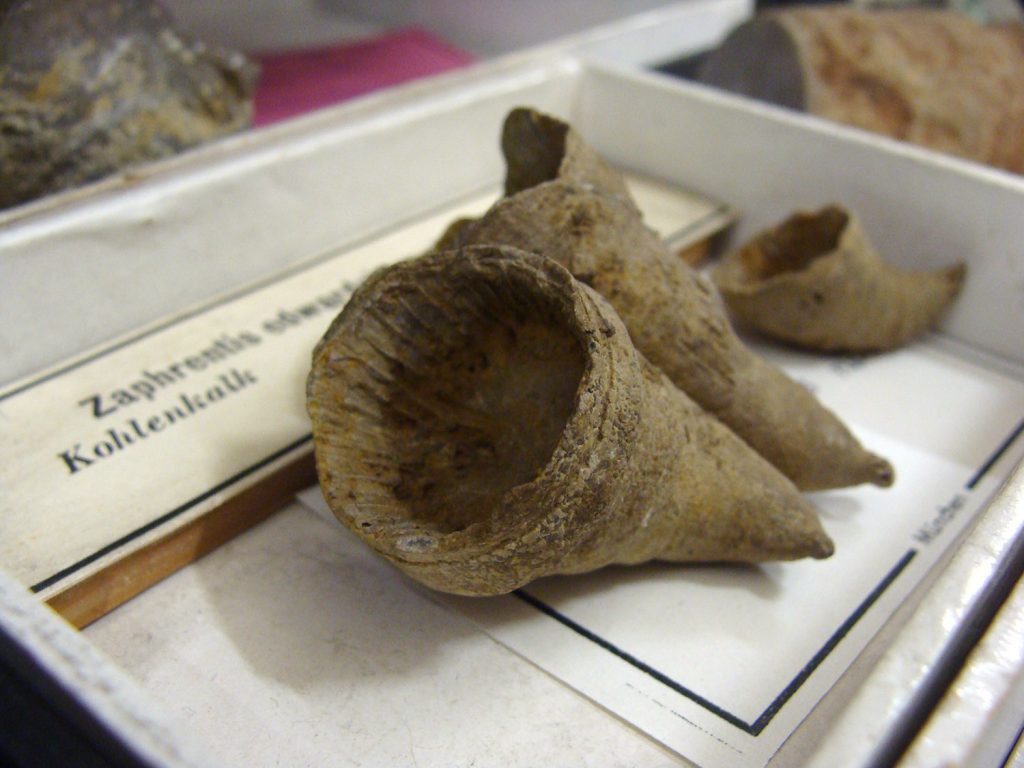
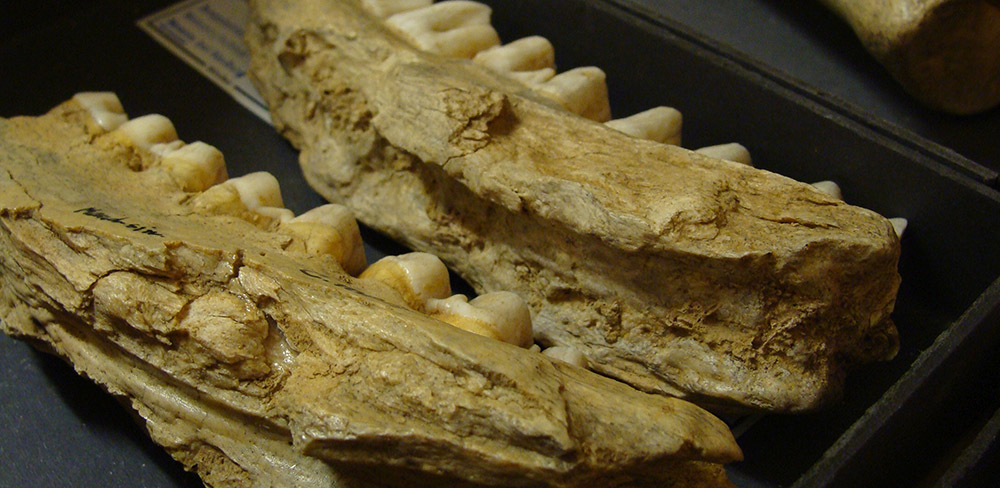

Bavarian State Collection for Botany
Botanische Staatssammlung München (BSM)
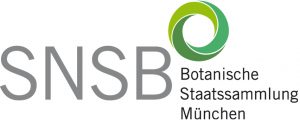
Homepage: bsm.snsb.de
Governance
Director: Prof. Dr. Gudrun Kadereit
Deputy Director: PD Dr. Andreas Beck
Research
The Botanical State Collection Munich (BSM) researches the diversity of plants and fungi. It also provides online access on collection material data and develops suitable online information systems for this purpose, with a particular focus on sustainability of data flows and solutions. With 54 published datasets since 2007, the Bavarian Natural History Collections (SNSB) is a successful data publisher in the GBIF network. Listing 3.7 million georeferenced data, including 1 million data on collection objects (often with digitized data), the SNSB is now third among the 33 german data providers.
An ongoing research project deals with the collections of P. F. von Siebold (1796-1866), the pioneer of botanical exploration in Japan, which are housed at the BSM. The aim is to find and digitize type material for the species described by Siebold together with the BSM curator J. G. Zuccarini (1797-1848). The family of spurge plants (Euphorbiacaee), which is distributed worldwide, is also being taxonomically processed.
Another research focus of the Seed Plant Department is the biology and evolution of carnivorous plants, especially the Droseraceae. A particularly spectacular new species described recently is Drosera magnifica which was first discovered in a photo on the internet. The research focus of the Department of Lichens and Mosses is the symbiotic coexistence of fungi with algae of the family Trebouxiaceae. Molecular data have shown that the algae have taken up genes from “their” fungi and stably integrated them into their own genome. For these studies, the Munich State Botanical Collection has established sophisticated techniques to isolate and culture the algae living in the lichens.
Research and infrastructure projects in the field of biodiversity informatics are carried out at the SNSB IT Center, a department of the Botanical State Collection. For this purpose, open-source software for research is being developed. Among other projects, data on the flora of Bavaria is being made accessible. These range from data collections from the grid and biotope mapping since 1946 to data from the digitization of handwritten old herbarium labels aswell as to “hand-knitted” data inventories of individual collectors. The project is supported by WWF Germany and the Bavarian State Office for the Environment, among others.
Contact
Menzinger Str. 67
D-80638 Munich
Tel: +49 (0)89 17861 265
Fax: +49 (0)89 17861 193
Email: office.bsm@snsb.de
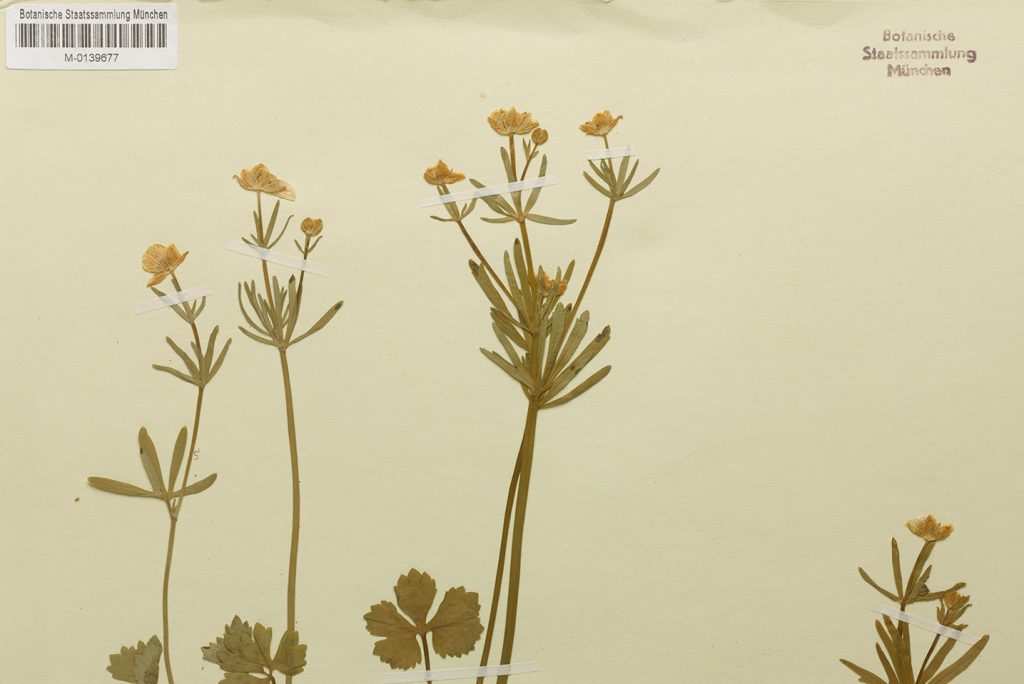

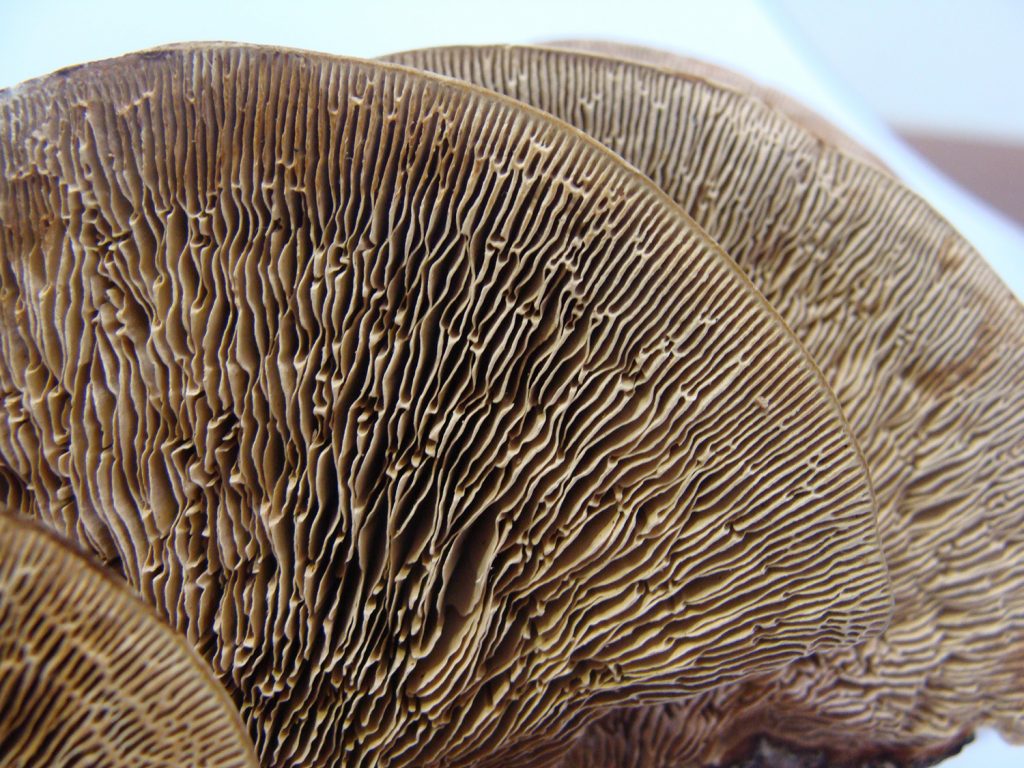
Bavarian State Collection for Mineralogy
Mineralogische Staatssammlung München (MSM)

Homepage: https://msm.snsb.de
Governance
Director: Prof. Dr. Wolfgang Schmahl
Deputy Director: PD Dr. Melanie Kaliwoda
Forschung
Biomineralization is a research focus of the Bavarian State Collection for Mineralogy (MSM). Among other things, the structure of mineralized tissues and their mechanical properties are investigated. This enables researchers to draw conclusions about the geological or archaeological past.
Mineralized tissues such as bones, shells or teeth not only play an important role in biology and medicine, they are also the material carriers of the fossil record about the development of life on Earth and its environmental conditions. This possibility of “reconstructing the past” by examining material objects such as bones is equally important in relation to anthropological, archaeological and forensic medicine issues. Recently, biomaterials have also served as prototypes for the development of new, energy-efficient and environmentally compatible lightweight materials. This line of work is a branch of biomimetics.
Another focus at the MSM is the study of rocks of the Earth’s mantle (ophiolites, mantle xenoliths) and the raw materials found therein (e.g., platinum group elements, chromium ores). But also the investigation of meteorites, especially those originating from Mars, is of particular importance at the Collection. Their investigation allows conclusions to be drawn about our neighboring planet and its formation, but also about the early development of our Earth and our planetary system.
The working group of the MSM is also one of the few research groups worldwide that received material from the asteroid Itokawa from the Japanese space agency for examination. In addition, it is particularly dedicated to Bavarian meteorites, such as Neuschwanstein, Machtenstein and Stubenberg.
For the field of materials research, the provision of natural mineral samples and their crystal-chemical investigation is now of great importance. The main focus of the MSM in this field is on phosphates, which are used in technology as cathode material for lithium-ion batteries (e.g. triphylin) or as storage minerals (alunite supergroup). Raman spectroscopy is becoming increasingly important as a non-destructive examination method in mineralogy and materials research. The microraman spectrometer of the MSM is used both for own research, e.g. on meteorites, compounds of the sodalite group, tourmalines or phosphate minerals, and as a service for researchers of the LMU.
Contact
Theresienstr. 41
D-80333 Munich
Tel.: +49 (0)89 2180 4312
Fax: +49 (0)89 2180 4334
Email: mineralogische.staatssammlung@snsb.de
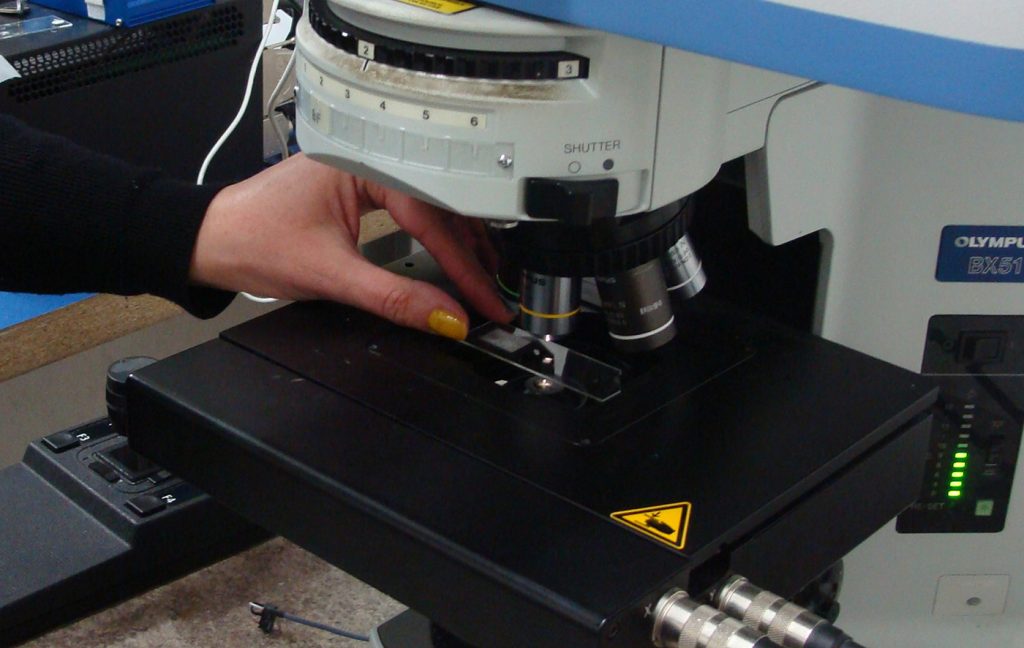
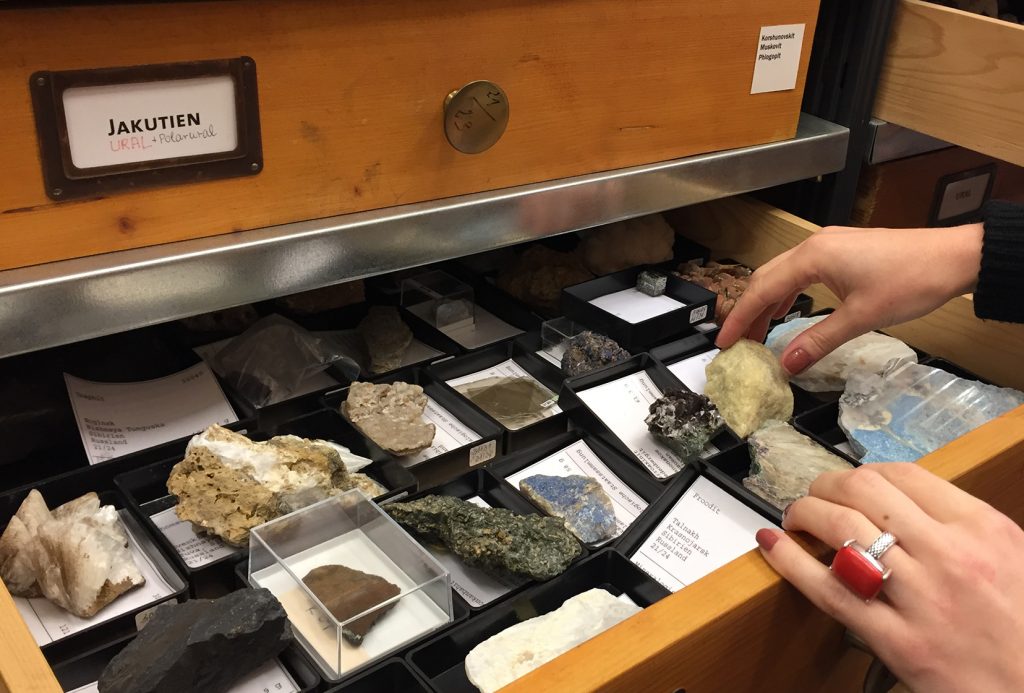
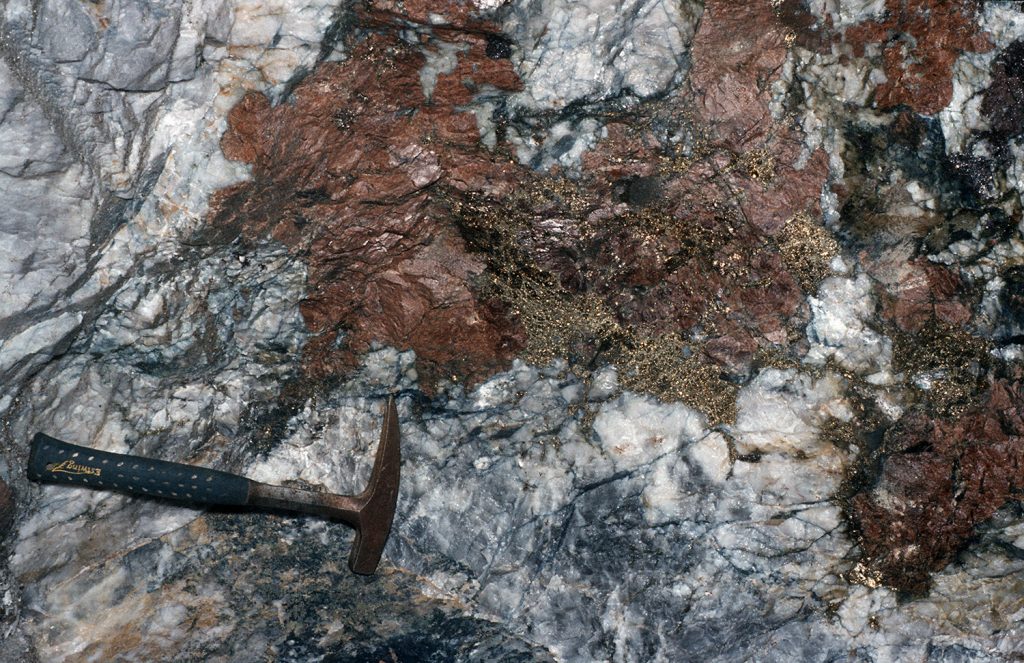
Bavarian State Collection for Anthropology
Staatssammlung für Anthropologie München (SAM)
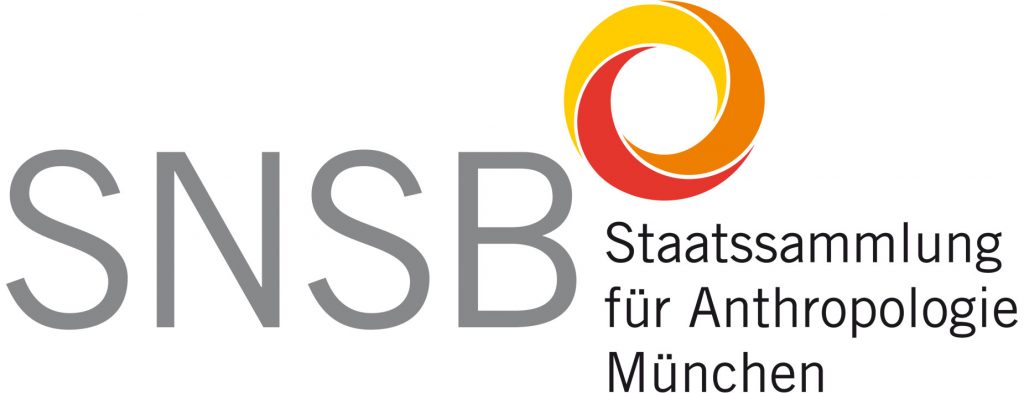
Homepage: https://sam.snsb.de
Governance
Provisional Director: Prof. Dr. Albert Zink
Research
The Bavarian State Collection for Anthropology (SAM) is a research institution that forms part of the Bavarian Natural History Collections. It is in charge of the scientific investigation of preserved corporeal relics of humans from prehistoric and historic times and deals with the analysis of past human populations, mainly from the Bavarian region. Archaeological human skeletal finds are preserved in the collection and made available for research and educational purposes.
The SAM does not have its own museum. The collections are open to scientific guests by arrangement with the collection management or the conservators.
Contact
Karolinenplatz 2a
D-80333 Munich
Tel: +49 (0)89 5488 438 0
Fax: +49 (0)89 5488 438 17
Email: sapm@snsb.de
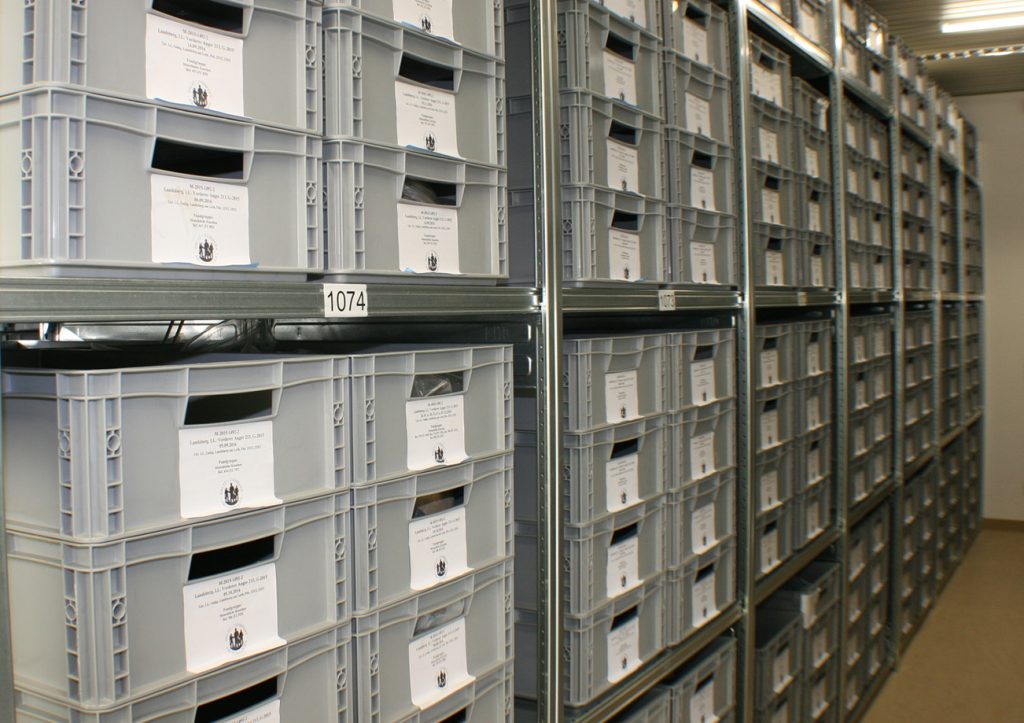
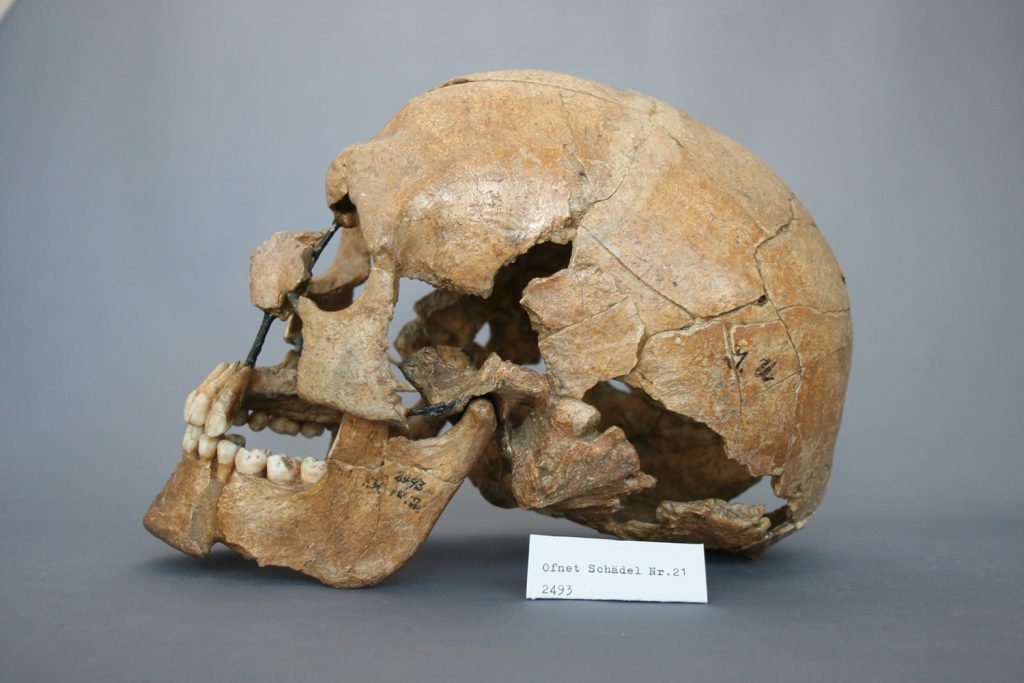
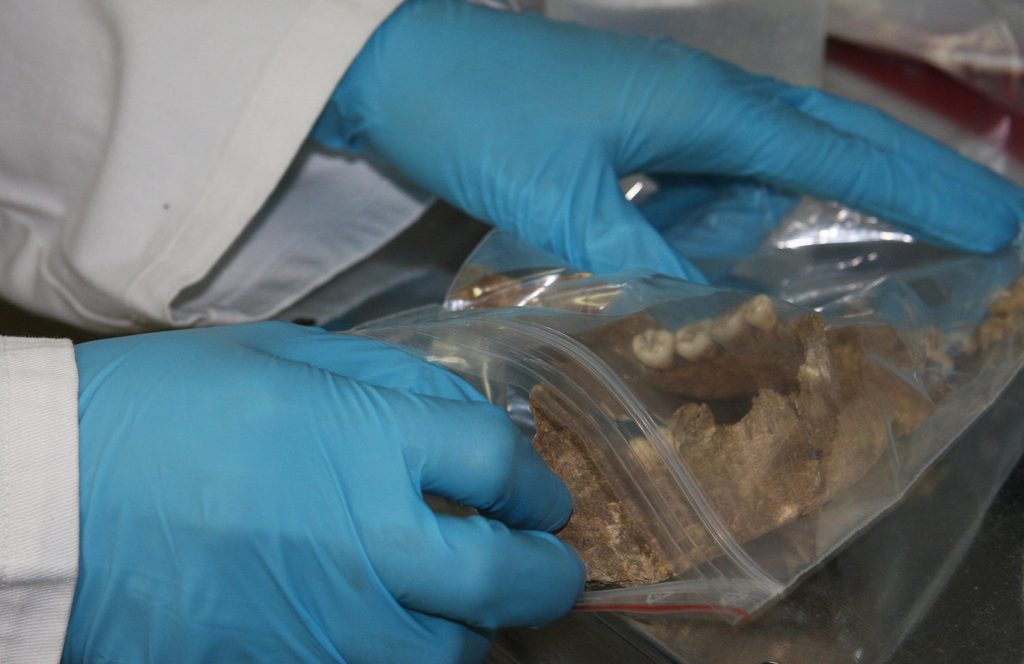
Bavarian State Collection for Palaeoanatomy
Staatssammlung für Paläoanatomie München (SPM)
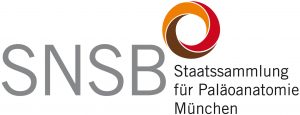
Homepage: spm.snsb.de
Governance
Director: Prof. Dr. Joris Peters
Research
The Bavarian State Collection for Palaeoanatomy (SPM) is a research institution that forms part of the Bavarian Natural History Collections. It is in charge of the scientific investigation of preserved corporeal relics of animals from prehistoric and historic times.
The research focuses on the reconstruction of Bavaria’s earlier landscapes, environments and fauna. Depending on the research projects, archaeological skeletal finds from other regions are included in the investigations, for example material from the “Fertile Crescent” – considered the geographical origin of agriculture. The methodological spectrum covers all osteological levels from gross morphology to chemical composition, and preserved biomolecules.
The SPM has no public exhibition. Access to the collections is possible for scientific visitors only, after consultation with the directorate or curators.
Current projects: Transalpin-Projekt, Säugetiersammlung, Fischsammlung, Göbekli Tepe, Milet
Contact
Abt. Paläoanatomie
Kaulbachstr. 37 III
D-80539 Munich
Secretarial Office
Karolinenplatz 2a
D-80333 Munich
Tel: +49 (0)89 5488 438 0
Fax: +49 (0)89 5488 438 17
Email: sapm@snsb.de
Office Poing
Halle 2
Gruber Str. 64-68
D-85586 Poing
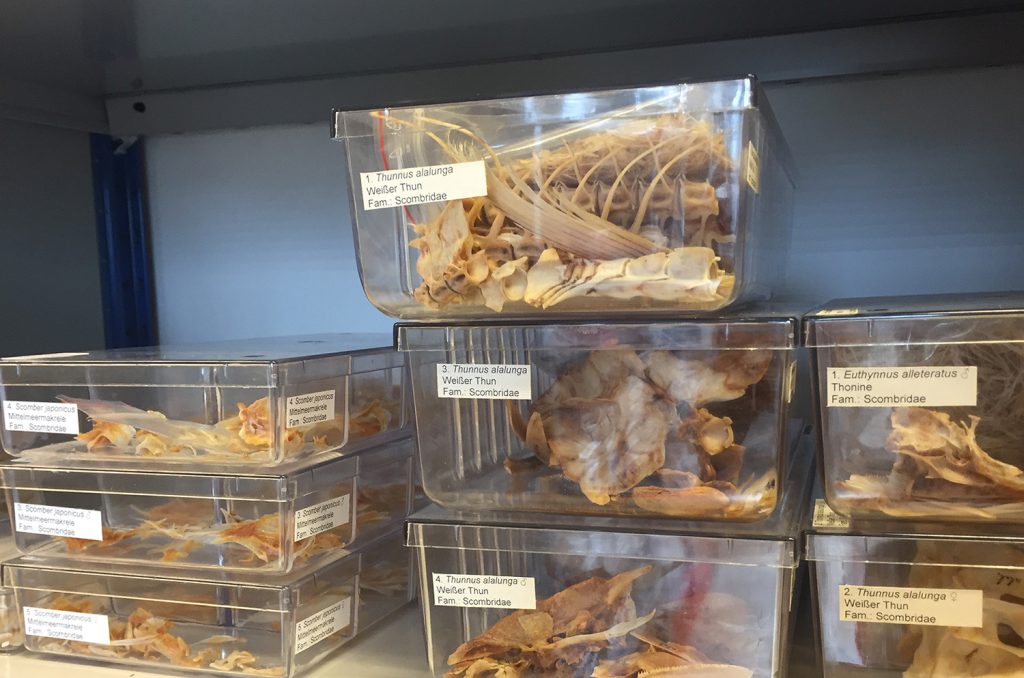
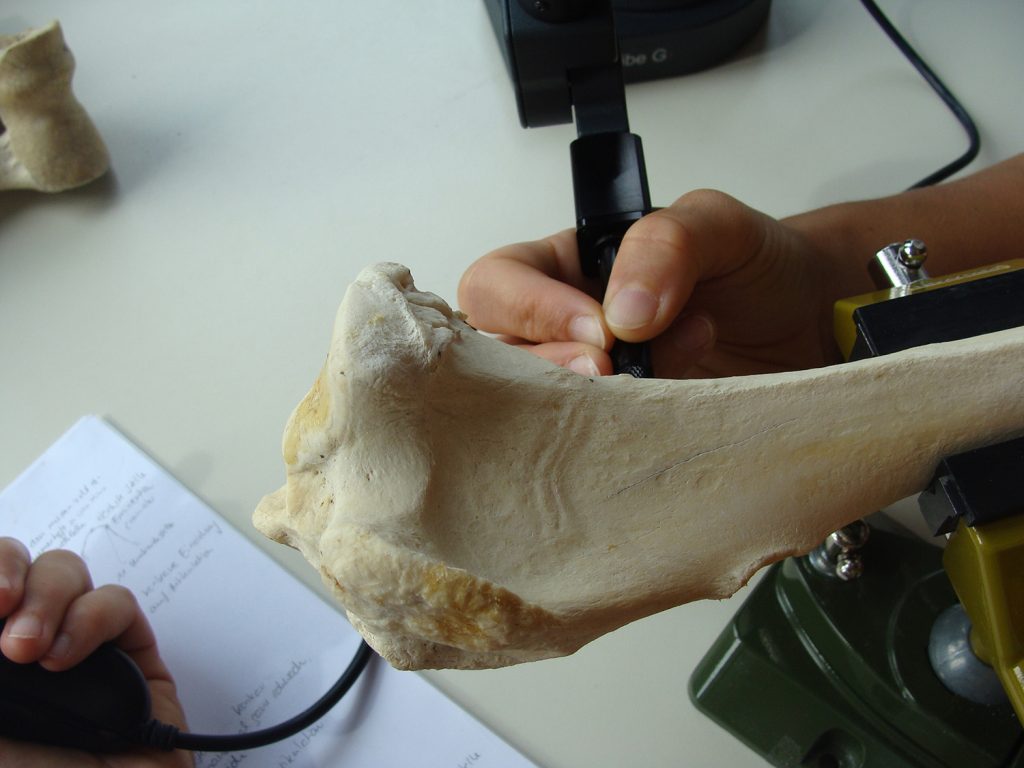
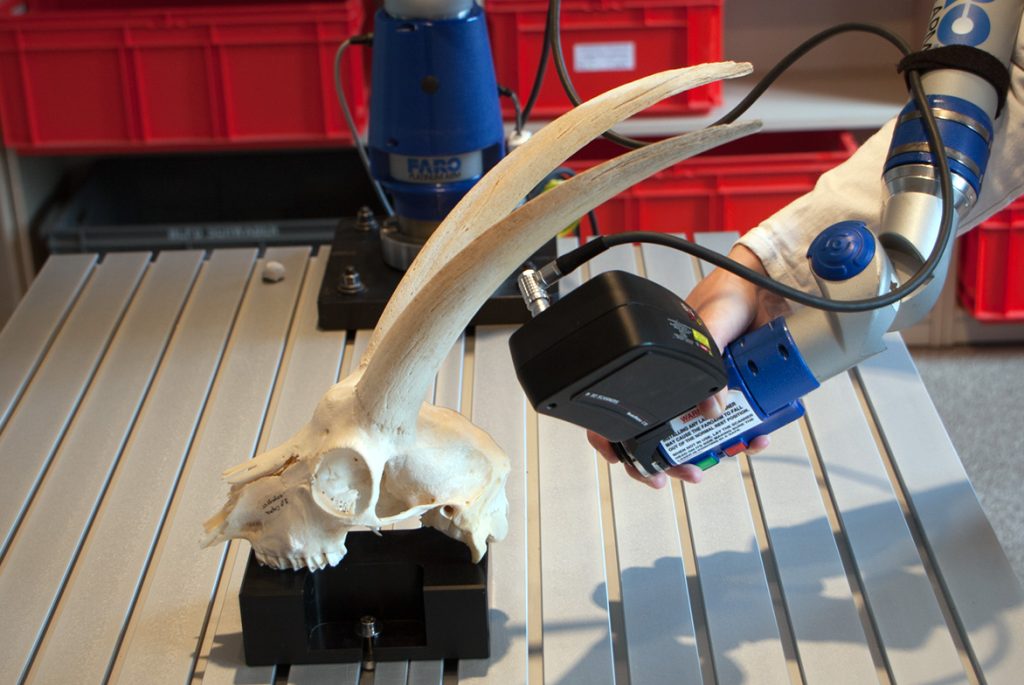
Bavarian State Collection for Zoology
Zoologische Staatssammlung München (ZSM)

Homepage: zsm.snsb.de
Governance
Management Board: (interim)
Dr. Michael Balke
PD Dr. Michael Raupach
Dr. Stefan Schmidt
Dr. Elisabeth Schepers
Director: NN
Research & Collections
Systematics is a basic biological discipline that investigates and describes the biodiversity on our planet. The science conducted at the Bavarian State Collection involves research on the taxonomy, phylogeny, and natural history of animals, and provides an adequate and sustainable depository for zoological specimens.
The ZSM is, with almost 22 million zoological objects (labels), one of the largest natural history collections in the world. Many of these specimens have been collected by staff and other collectors during the 200 year long history of the ZSM. One of our main aims is to protect the enormous biological information associated with each zoological object and to make this information available to the scientific and general public.
A major initiative of the ZSM is creating a genetic reference library of all, ca. 35,000 Bavarian animal species, to allow their accurate identification, including all life history stages (eggs, larvae or tissue samples). The project “Barcoding Fauna Bavarica thus opens a new era in Bavarian biodiversity research and faunistics.
Contact
Münchhausenstr. 21
D-81247 Munich
Tel.: +49 (0)89 8107 0
Fax: +49 (0)89 8107 300
Email: zsm@snsb.de
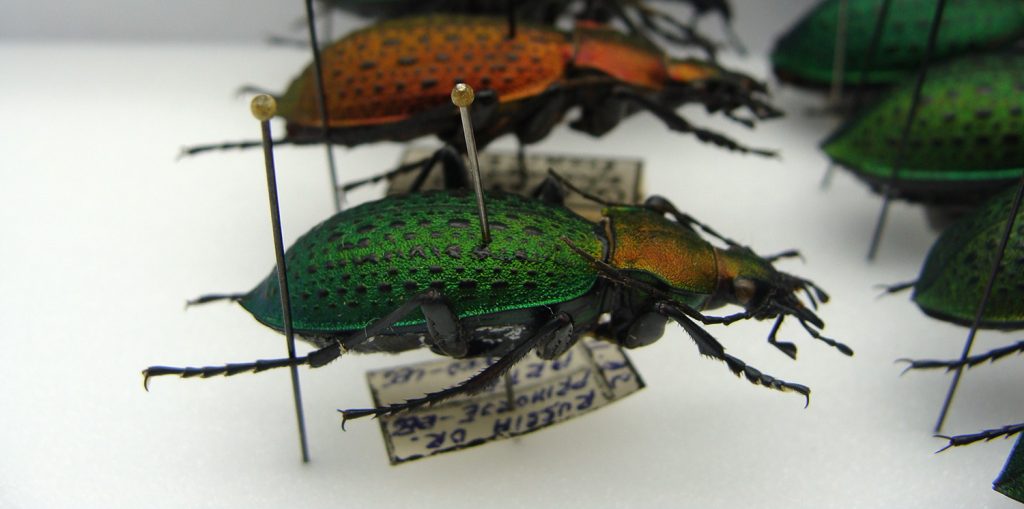
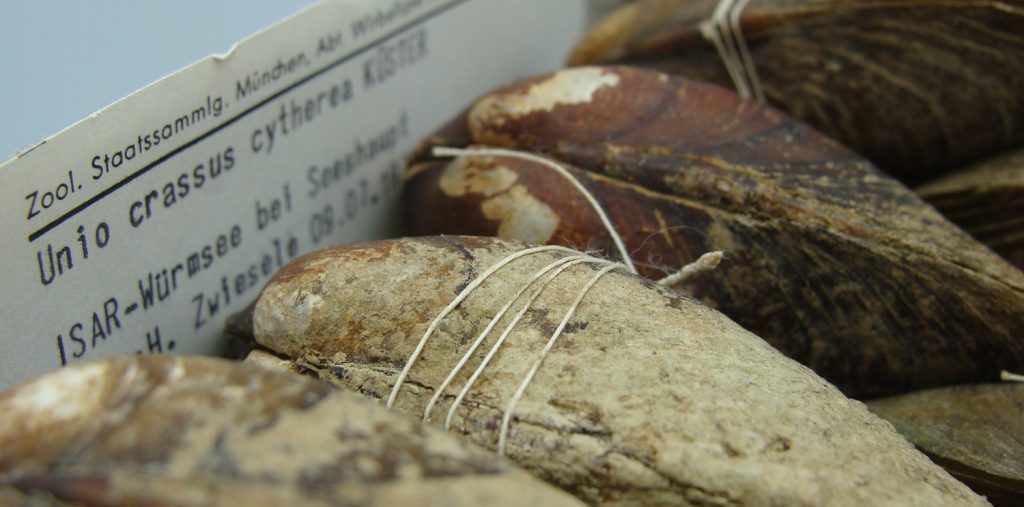
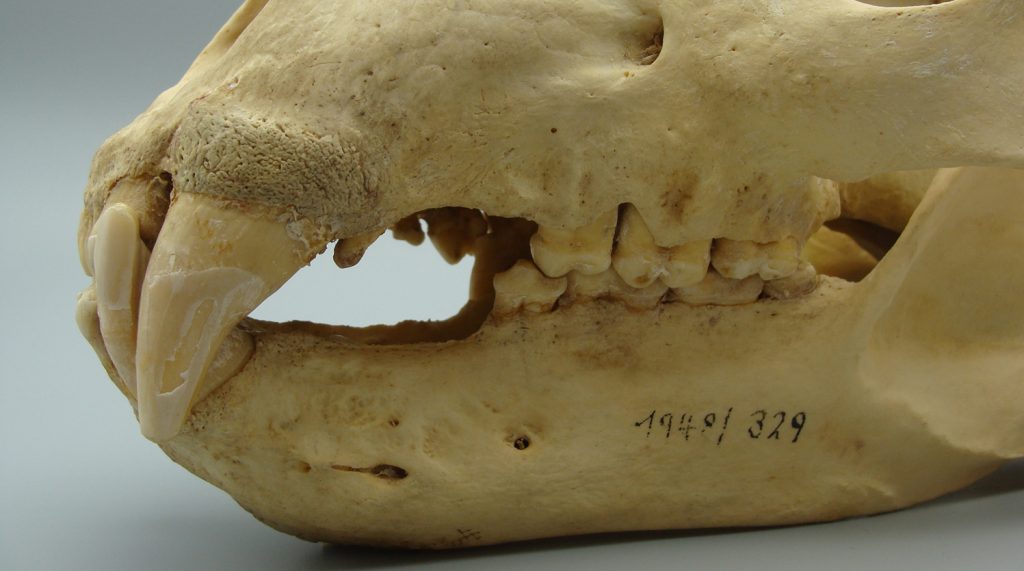
Botanical Garden München-Nymphenburg
Botanischer Garten München-Nymphenburg (BGM)
Homepage: www.botmuc.de
Governance
Director: Prof. Dr. Gudrun Kadereit
Research
In the Botanical Garden München-Nymphenburg (BGM), with an area of 21.2 hectares, around 19.600 species and subspecies are cultivated. Together with the Alpine Garden at Schachen (at an altitude of 1.860 m), the Botanical Garden is involved in national and international research projects providing important material and observation data. The Botanical Garden München-Nymphenburg collects, studies, cultivates and exhibits wild and cultivated plants from all over the world and thus from different climatic regions according to scientific criteria. Its collection of living plants also serves research purposes.
At the Botanical Garden’s extensive orchid collection, the chemistry of orchid scents is explored. For the technically complex analyses, the Botanical Garden collaborates with chemists who can use the orchids for their investigations thanks to the expertise available at the garden in the cultivation of orchids: scents can only be obtained from living flowers. This is a good example of the importance of botanical gardens for basic research in chemical ecology.
Another focus are studies of chromosomes of the papaya family (Caricaceae) and the arum family (Araceae) using state-of-the-art molecular cytogenetic methods. Research questions concern the role of chromosome loss and sex chromosomes.
A third focus are ongoing experiments on the perception of temperature and daylight by buds in spring and related to this the effect of climate warming on leaf emergence and frost damage in spring.
Contact
Menzinger Str. 61-65
D-80638 Munich
Tel.: +49 (0)89 17 861-321 (central information)
Tel.: +49 (0)89 17 861-350 (cashdesk)
Tel.: +49 (0)89 17 861-310 (general administration)
Fax: +49 (0)89 17 861-340
Email: botgart@snsb.de
Forensics & Collections
The Bavarian State Collection of Zoology Munich (ZSM)
Forensic entomology
Police detectives take advantage of the multi-phased infestation of a dead body by beetle larvae and fly maggots in terms of determining the time of death. By cooperating with the Bavarian State Office of Criminal Investigation in Munich, the State Collection of Zoology Munich (ZSM) is currently compiling a reference database for such „dead body loving“ organisms in order to facilitate and accelerate their future identification.
Link to the publication: DNA Barcoding in Forensic Entomology
The Bavarian State Collection of Mineralogy Munich (MSM)
Teeth recording the origin
Also the State Collection of Mineralogy Munich (MSM) could already be of help in terms of solving homicide cases: By examining lead isotopes from the teeth of an unidentified dead body, an Eastern European origin of the dead person could be disclosed. For this purpose, the isotope data had been compared with mineral samples from the MSM. The place of origin of the dead body was determined soaccurately that local police were able to identify the victim and convict the offenders.
The Bavarian Botany and Mycology State State Collection Munich (BSM)
Plant traces leading to the crime scene
The biologists from the Bavarian State Office of Criminal Investigation regularly resort to the expertise and the comparison with flora specimens from the Botany State Collection (BSM), for instance, in order to determine the origin of plant fragments. In so doing, they can draw conclusions as to the possible scene of a crime. As of late, there is an increased request for comparing plant material from new types of drugs.
Nature protection
The Bavarian State Collection of Zoology Munich (ZSM) & The Bavarian Botany and Mycology State Collection Munich (BSM)
Research station Panguana
Scientific collections of animals or plants provide a data basis for the protection of ecologically unique habitats. Researchers at the ZSM and the BSM have, for example, gathered highly diverse animal and plant groups in the research station Panguana in the Peruvian rainforest – a true hotspot of biodiversity – and evaluated them scientifically. In 2011, the approximately 10 km2 area around Panguana has been declared a nature conservation area by the Peruvian Department of Environment.
Information on Panguana including publications
The Bavarian State Collection of Zoology Munich (ZSM)
Biodiversity in Madagascar
Human impact on the landscape of Madagascar has resulted in habitat destruction of many amphibians, lizards, snakes and turtles. Many species in the same area have yet to be discovered. It is only by studying the biodiversity that the threat for many animal groups can be determined at all. This also makes a valuable contribution towards recognizing regions of Madagascar that are particularly worth protecting.
List of publications on Madagascar’s biodiversity
The Bavarian State Collection of Zoology Munich (ZSM)
It’s buzzing in the Bavarian Forest!
Also in Germany, there are areas that stand out due to their high density of biodiversity – so called hotspots, such as the national park Bavarian Forest. An insect-capture project of the ZSM aiming to study the biodiversity there produced some surprising results. The scientists found that, there are many more native insect species than initially thought in the Bavarian Forest. In only five months, almost 30,000 insects representing 2,530 species were captured in a single insect trap installed in the national park,. This is an enormous number, if you consider that so far, only 3,257 insect species have been recorded within the entire national park. It is thus presumed that many more species than expected exist there. Especially with regard to the ongoing species extinction which can still be observed, this result is surprising.
Link to Malaise-trap project
Early dinosaur breathed like a bird
Bavarian State Collection for Palaeontology and Geology
Pelecanimimus polyodon from the Lower Cretaceous (125 Ma) is the first predatory dinosaur found in Spain. An international team of paleontologists now discovered features on the fossil that are typical of dinosaurs closely related to birds, as well as birds. The researchers published their findings in the prestigious British journal Zoological Journal of Linnean Society.
Pelecanimimus polyodon belongs to a group of bipedal dinosaurs called Ornithomimosauria (“bird imitating lizards”), its body structure resembles that of modern ostriches. Pelecanimimus is the earliest representative of the group found in Europe.
New analyses of the Pelecanimimus fossil show features typical of dinosaurs closely related to birds, as well as birds: Pelecanimimus is the only ornithomimosaur that preserves an ossified sternum. Its morphology is similar to the sternums of other dinosaurs closely related to birds, such as velociraptors or oviraptors, and primitive birds. Moreover, Pelecanimimus is the only known representative of this group with so-called uncinate processes. These small, hook-shaped bones are associated to the ribs and are also present in extant and extinct birds. Researchers assume that uncinate processes are related to the breathing apparatus because they are insertion areas for intercostal muscles, whose function is moving the ribs and sternum.
“The fact that Pelecanimimus preserved these processes suggests that it also had a bird-like breathing mechanism,” said Elena Cuesta, lead author of the study. “Apparently, the origin of such avian-like features is older and more widespread than thought. However, the evolutionary history of both the ossified sternum and uncinate processes is still unclear. Nevertheless, their detection in Pelecanimimus confirms that these elements were present in Ornithomimosauria as well as in other dinosaurs.”
The Spanish-Japanese team of paleontologists, including Elena Cuesta, a postdoctoral researcher at the SNSB-Bayerische Staatssammlung für Paläontologie und Geologie (SNSB-BSPG), also discovered distinctive features on the fossil’s hands. Pelecanimimus has conspicuously elongated metacarpals and phalanges, a feature also found in some later ornithomimosaur species. Therefore, the authors of the study identified and named a new group within the ornithomimosaurs: the Macrocheiriformes, which means “forms with large hands.”
The dinosaur Pelecanimimus polyodon dates from the Lower Cretaceous (125 Ma) and was discovered back in 1993 at the Las Hoyas fossil site in Spain. Preserved are the anterior half of an articulated skeleton with complete skull as well as soft tissue. The new analysis of the fossil now gives the researchers new insights into the early evolution of the group Ornithomimosauria. They compared their data on Pelecanimimus polyodon with other fossil finds belonging to this dinosaur group from the last three decades.
Publikation:
Elena Cuesta, Daniel Vidal, Francisco Ortega, Masateru Shibata, José L Sanz, Pelecanimimus (Theropoda: Ornithomimosauria) postcranial anatomy and the evolution of the specialized manus in Ornithomimosaurs and sternum in maniraptoriforms, Zoological Journal of the Linnean Society, 2021, https://doi.org/10.1093/zoolinnean/zlab013
Kontakt:
Dr. Elena Cuesta
Bavarian State Collection for Palaeontology and Geology (SNSB-BSPG)
Richard-Wagner-Str. 10, 80333 Munich
Tel.: +49 (0)89 2180 6644
E-Mail: cuesta@snsb.de
-
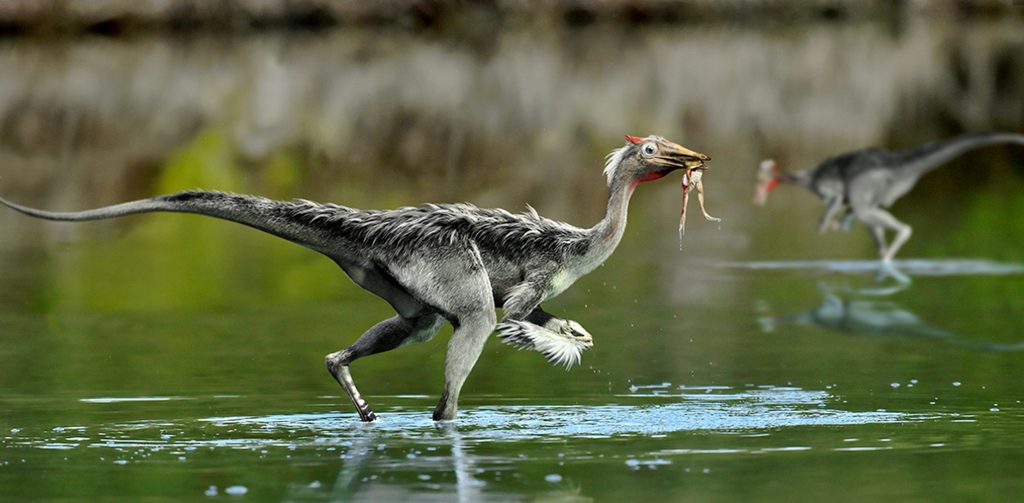
Reconstruction of Pelecanimimus polyodon (Artist: José Antonio Peñas Artero)
SNSB receive idw Prize for Science Communication
The Science Information Service (idw) has awarded the press office of the Bavarian Natural History Collections (SNSB) the idw Prize for Science Communication. The SNSB took 3rd place for their press release on the rediscovery of the Voeltzkow chameleon in Madagascar on October 30, 2020. The prize is endowed with 500 €. Due to the pandemic, the award ceremony took place virtually on 6th of May 2021.
The award-winning SNSB press release “Short-lived and very colorful: Lost chameleon rediscovered after more than 100 years” received a lot of attention in many media – from print to online to television. She reports on the rediscovery of the lost chameleon Furcifer voeltzkowi after more than 100 years in Madagascar. Dr. Frank Glaw, curator for reptiles and amphibians at the Bavarian State Collection for Zoology (SNSB-ZSM) discovered the colorful reptile on an expedition and published his discovery in the scientific journal Salamandra. Jury member Magdalena Schaeffer, advisor for press and public relations at the DFG and idw board member, nominated the press release and praised in particular “the excellent technical implementation of the topic”.
“We are very happy about this great recognition of our press work. Our work benefits greatly from the good and close exchange with our committed scientists. We help them to make their exciting research visible to the public” says Dr. Eva-Maria Natzer, Scientific Director of the SNSB, on the award, endowed with 500 €.
The Science Information Service (idw) awards three press offices the idw Prize for Science Communication every year. The award recognizes press releases published in idw that are “of high technical professionalism, have outstanding news value and are scientifically relevant”.
SNSB press release “Short-lived and very colorful: Lost chameleon rediscovered after more than 100 years”: https://idw-online.de/de/news756785
Further informations on idw Prize for Science Communication:
https://nachrichten.idw-online.de/2021/05/06/idw-preis-fuer-wissenschaftskommunikation-erfolge-in-serie/?groupcolor=6
https://www.youtube.com/watch?v=Vnp401U5IPg
Contact:
Dr. Eva-Maria Natzer, Scientific Director of the SNSB
Bavarian Natural History Collections (SNSB)
Menzinger Str. 67, 80638 Munich
Tel.: +49 (0)89 17861 122
E-Mail: natzer@snsb.de
-
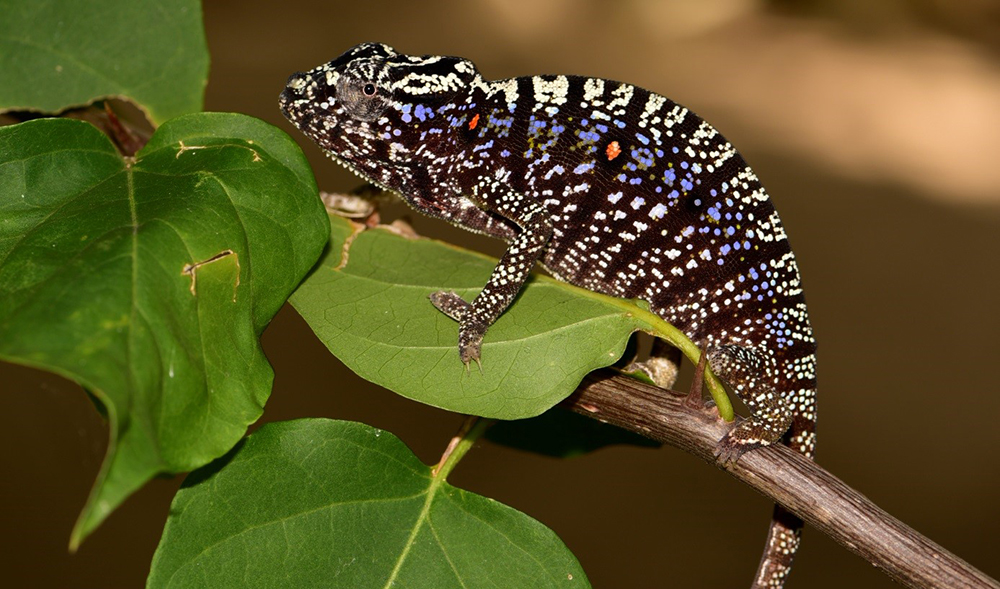
Females of the Furcifer voeltzkowi chameleon in the splendid coloration. (Photo: Kathrin Glaw, SNSB)
Endangered Plant Species in Bavaria
Individual Successes and Unfortunately Many Further Deteriorationsle weitere Verschlechterungen
In cooperation and with funding from the Bavarian State Office for the Environment (LfU), a new Red List of endangered ferns and flowering plants of Bavaria is currently being compiled by scientists from the Bavarian State Collection for Botany (SNSB-BSM), as well as volunteer botanists and mappers from Bavaria. The aim is to take into account the development of the populations of rare and endangered plant species, especially over the past 30 years. There is some good news about species that were on the verge of extinction 20 years ago, whose populations have however recovered well thanks to targeted species assistance programs in Bavaria. The majority of Bavaria’s endangered plant species continue to fare poorly, or their status has even deteriorated significantly since the last Bavarian Red List was published in 2003.
Bavaria is home to almost 5,000 different species of ferns and flowering plants, of which 3,156 are naturally occurring native (indigenous) species and the rest are so-called neophytes and adventitious flora, i.e. newcomers to our native flora that have been intentionally or unintentionally introduced by humans. These species numbers are known from the last inventory of the Bavarian flora, which was published in 2014 (and updated in 2018) under the leadership of Prof. Lenz Meierott and Dr. Wolfgang Lippert and the Bavarian Botanical Society (BBG e.V.). However, for many species there is insufficient knowledge of their current population numbers, endangerment, and population trends; the most recent data on this were collected as part of the last Red List of Plants of Bavaria in 2003. A new, updated Red List of naturally occurring ferns and flowering plants in Bavaria (neophytes are explicitly excluded) has been under development since 2017 and is scheduled for publication in early 2022. Special attention will be paid to those plant species that are endangered in their populations, i.e. those that are considered “threatened with extinction” (Red List category 1), “critically endangered” (RL category 2), or “endangered” (RL category 3) in Bavaria.
The downward trend of many endangered plant species in Bavaria, like in all of Germany, unfortunately continues unabated, as the new data show. For example, many plant species that were still classified as “critically endangered” in 2003 must now already be placed in the highest endangerment category “threatened with extinction” because their populations have continued to decline, so that extinction of these plant species in Bavaria is likely in the next few years or decades.
“Bavaria is the most botanically diverse state in Germany – there are even some plant species that globally only occur in Bavaria and nowhere else. Unfortunately, all these endemics and botanical rarities can now be found in the Red List of Threatened Species,” says Dr. Andreas Fleischmann, a scientist from the Bavarian State Collection for Botany (SNSB-BSM) and first chairman of the Bavarian Botanical Society, who was involved in the preparation of the new Red List. Together with six freelance botanists, he is currently compiling the inventory and status of Bavaria’s rare and endangered plant species. And in many cases things are unfortunately not looking good. “The rare yellow-white strawflower, Pseudognaphalium luteoalbum, could not be found at any of the only 6 known growing sites in Bavaria anymore, the species is probably extinct in our country,” says Jürgen Klotz from Regensburg, who has remapped many of the known occurrences of rare plant species on behalf of the LfU. “Even the sand rush, Juncus tenageia, a very rare plant species that occurs in Bavaria only in the Erlangen pond area, has disappeared from 9 of the 10 known growing sites where it still occurred in the 1990s and early 2000s,” Klotz continues. Unfortunately, he could cite many more such examples. Nearly every other plant species he mapped, which was already listed as “threatened with extinction” in Bavaria’s Red List in 2003, has seen its population decline again in the last 20 years.
There have, of course, been efforts for decades to counteract this downward trend in species diversity. “One measure that works well in many cases are the species assistance programs,” says Marcel Ruff of the LfU’s newly founded Bavarian Species Conservation Center. He coordinates botanical species conservation programs throughout Bavaria. “But in most cases, the successes of such targeted species assistance programs depend on the dedication of a few individuals who continuously and meticulously carry out biotope maintenance and protection measures. Their efforts cannot be praised highly enough for species conservation in Bavaria – without their commitment, we would already have lost many botanical treasures completely,” says Ruff.
One example of successful botanical species conservation is the white-flowered spring pasqueflower, Pulsatilla vernalis. In Germany, it can only be found in Bavaria (it is already extinct in all other German states), and there has always been found only in a few places with acidic soils – outside the Alps, mainly in sparse sand pine forests in eastern Bavaria. For more than 20 years Martin Scheuerer has been taking care of species conservation measures for the preservation of the extra-alpine populations of this rare species. The populations at 6 growing sites in the sandy areas in the district of Kelheim have fortunately increased in the meantime, but a survival of this rare plant species will also depend on the care measures of botanical species protection in the long term.
Further Literature:
Scheuerer, M. (2020). Artenhilfsmaßnahmen zu Pulsatilla vernalis in Bayern außerhalb der Alpen – eine Zwischenbilanz. Hoppea, Denkschriften der Regensb. Bot. Gesellschaft 81 (im Druck).
Zehm, A., Klotz, J., Horn, K., Wecker, M., von Brackel, W., Blachnik, T., von Brackel, J., Buchholz, A., Diewald, W.,Elsner, O., Feulner, M., Kohler, U., Lausser, A., Radkowitsch, A., Ruff, M., Schön, M., Wagner, A., Wagner, I. & Wimmelbücker, A. (2020). Rückgang seltenster Pflanzenarten ist ungebremst – Freilanduntersuchungen zur Bestandsentwicklung vom Aussterben bedrohter Gefäßpflanzenarten Bayerns. Berichte der Bayerischen Botanischen Gesellschaft 90: 5-42.
Contact:
Dr. Andreas Fleischmann
Botanische Staatssammlung München (SNSB-BSM)
Menzinger Str. 67, 80638 München
Tel.: 089 17861 240
E-Mail: fleischmann@snsb.de
Detecting the Problems of Neolithic Sheep Farmers
Staatssammlung für Anthropologie und Paläoanatomie
The study of the remains of unborn and newborn lambs shows researchers the fundamental problems our ancestors had to face in keeping sheep during the early Neolithic period (about 10,000 years ago). In order to draw conclusions on possible causes of lamb mortality in prehistoric livestock farming, it is necessary to accurately determine the age at which the animals died. A group of researchers led by the SNSB has now developed a statistical reference model for such age determination in prehistoric lambs. The scientists have published their results in the Journal of Archaeological Science.
As early as the 8th millennium BC, the first sheep farmers learned that the housing conditions of their animals had an impact on the mortality of unborn and very young lambs. In a study, an international group of researchers led by Dr. Nadja Pöllath, curator at the Bavarian State Collection for Anthropology and Paleoanatomy (SNSB-SPM), and Prof. Dr. Joris Peters, director of the same collection, examined bones of yet unborn and newborn lambs. These were unusually numerous in the findings from the Early Neolithic settlement of Aşıklı Höyük (central Turkey, ca. 8350 and 7300 BC). Over the course of the long settlement duration, lamb survival after birth appears to have improved, while fetal mortality appears to have remained about the same.
The researchers attribute the fact that the mortality of suckling lambs at Aşıklı Höyük decreased over time to improvements in livestock management such as pasturing the herds outside the settlement. The Early Neolithic site of Aşıklı Höyük is the largest and best-studied settlement in Central Anatolia and was permanently inhabited from ca. 8350 BC to ca. 7300 BC. Aşıklı Höyük provides valuable insights into architecture, culture, human and animal nutrition, vegetation, and the development of agriculture and livestock farming in the Neolithic period. While hunting was still important for the meat supply of the inhabitants at the beginning of settlement, livestock farming gained importance later on, with sheep being the most important livestock species. Evidence of abortions and thick manure packages in and between the houses prove that the inhabitants kept their sheep within the settlement for long periods of time.
In order to find out what problems Neolithic sheep farmers were confronted with and what measures they took to overcome them, it is crucial to first determine the exact age of an animal’s death. From this, the causes of death can be determined. Traditional methods for assessing an animal’s age of death are based, for example, on the examination of teeth. However, most methods are not accurate enough for distinguishing the developmental stages in young sheep – fetus, newborn, young animal. In this study, Nadja Pöllath and her colleagues developed a new statistical model to determine the age at death of sheep fetuses and lambs as accurately as possible. For the age determination, the researchers analyzed humerus bones from modern sheep of known age in reference collections in the USA, UK, Spain, Portugal and Germany. From this, they created a model that helped to accurately determine the age of prehistoric lamb finds from Aşıklı Höyük. “Our analyses have contributed significantly to narrowing down the causes of mortality in fetal and young lambs. We can now better understand the difficulties people faced during early sheep rearing and domestication in Aşıklı Höyük,” Nadja Pöllath explains. The main causes of death for fetuses and lambs, she says, were infections combined with malnutrition and underfeeding, as well as overly confined housing.
The study was carried out with funding from the DFG as part of the long-term project “The prehistoric societies of Upper Mesopotamia and their subsistence”.
Publication:
Pöllath N, García-González R, Kevork S, Mutze U, Michaela I. Zimmermann MI, Mihriban Özbaşaran M, Peters J (2021) A non-linear prediction model for ageing foetal and neonatal sheep reveals basic issues in early Neolithic husbandry. Journal of Archaeological Science DOI:10.1016/j.jas.2021.105344
https://www.sciencedirect.com/science/article/pii/S0305440321000145
Contact:
Dr. Nadja Pöllath
Staatssammlung für Anthropologie und Paläoanatomie München (SNSB-SAPM)
Paläoanatomie
Kaulbachstr. 37, III, 80539 München
Tel.: 08121 7089 33
E-Mail: poellath@snsb.de
-

Aşıklı Höyük. Layer packages in depth section. Foto: Nadja Pöllath (SNSB-SAPM) -

Heutige Nachfahren der ersten Hausschafe Zentralanatoliens. Dank der erfolgreichen Experimente der frühneolithischen Vorfahren mit der Haltung von Schafen basiert auch heute noch die Landwirtschaft dieser Region zu einem großen Teil auf großen Schafsherden. Foto: Nadja Pöllath (SNSB-SAPM)
Meet the Nano-Chameleon, a new contender for the title of ‘World’s Smallest Reptile’
Bavarian State Collection of Zoology
An international team, led by the Bavarian State Collection of Zoology (ZSM-SNSB), has discovered a minuscule new species of chameleon. The sole known, apparently adult male of the new species has a body size of just 13.5 mm, making it the smallest known male of the roughly 11,500 known non-avian reptiles. A comparison with 51 other chameleon species showed that the new species has exceptionally large genitals. The study was published in the open access journal Scientific Reports.
On an expedition in the North of Madagascar, a joint team of German and Malagasy scientists came across a new contender for the title of ‘world’s smallest reptile’. They have named the new species Brookesia nana. ‘At a body length of just 13.5 mm and a total length of just 22 mm including the tail, the male Nano-Chameleon is the smallest known male of all “higher vertebrates”’ says Frank Glaw, Curator of Herpetology at the Bavarian State Collection of Zoology (ZSM-SNSB) and first author on the study. The female is larger at 19 mm body length and 29 mm total length. In spite of intensive efforts, the authors were only able to find two individuals.
‘With the aid of micro-CT scans – essentially three-dimensional x-rays – we were able to identify two eggs in the female specimen, and so demonstrate that it is an adult,’ says Mark D. Scherz of the University of Potsdam. To determine the sexual maturity of the male, the team looked at its genitals, which were well-developed. These structures are called ‘hemipenes’, and, like all other reptiles and snakes, are paired, and often have features that can be used to identify species.
The team also compared the size of the male Nano-Chameleon’s hemipenes with 51 other chameleon species from Madagascar and found that the smallest chameleons tend to have the largest genitals, relative to their body size. Those of the Nano-Chameleon, for example, are 18.5% of the male’s body size, making them the fifth largest of all the studied species. The record-holder for genital size in this group is Brookesia tuberculata, however, with hemipenes that are roughly a third of the male’s body size.
A possible explanation for this phenomenon may be the substantial size difference between the males and females, so-called ‘sexual size dimorphism’. In larger chameleons, males tend to be larger than females, but in small chameleons, the reverse is true. ‘As a result, the extremely miniaturised males of the small species need relatively larger genitals, in order to successfully mate with the larger females,’ explains Miguel Vences of the Technical University of Braunschweig.
‘There are numerous extremely miniaturised vertebrates in Madagascar, including the smallest primates and some of the smallest frogs in the world, which have evolved independently,’ says Andolalao Rakotoarison of the University of Antananarivo in Madagascar. But why this species is so small remains a mystery. ‘The “island effect”, that causes species on small islands to get smaller in body size, which has been invoked for other small chameleons, does not make sense in this case, because Brookesia nana lives in the mountains on mainland Madagascar,’ adds Fanomezana Ratsoavina, likewise of the University of Antananarivo.
‘The closest relative of the new chameleon is also not the similarly tiny Brookesia micra, but instead the nearly twice as a large B. karchei, which occurs in the same mountains. That shows that this extreme miniaturisation has arisen convergently in these chameleons,’ says Jörn Köhler from the Hessische Landesmuseum in Darmstadt.
The distribution ranges of most dwarf chameleons are very small, sometimes encompassing areas of just a few hectares. So despite only two individuals being known, it is expected that Brookesia nana likewise has a very limited range. ‘Unfortunately, the habitat of the Nano-Chameleon is under heavy pressure from deforestation, but the area has recently been designated as a protected area, and hopefully that will enable this tiny new chameleon to survive,’ says Oliver Hawlitschek from the Centrum für Naturkunde in Hamburg.
Publication:
Glaw F, Köhler J, Hawlitschek O, Ratsoavina FM, Rakotoarison A, Scherz MD & Vences M (2021): Extreme miniaturization of a new amniote vertebrate and insights into the evolution of genital size in chameleons. – Sci Rep 11, 2522 DOI: 10.1038/s41598-020-80955-1 https://www.nature.com/articles/s41598-020-80955-1
Contact:
Dr. Frank Glaw
Bavarian State Collection of Zoology (SNSB-ZSM)
Münchhausenstr. 21, 81247 Munich
Tel.: +49 (0)89 8107 114
E-Mail: glaw@snsb.de
Video: https://youtu.be/CrJwAj7egpc (Timon Glaw)
-
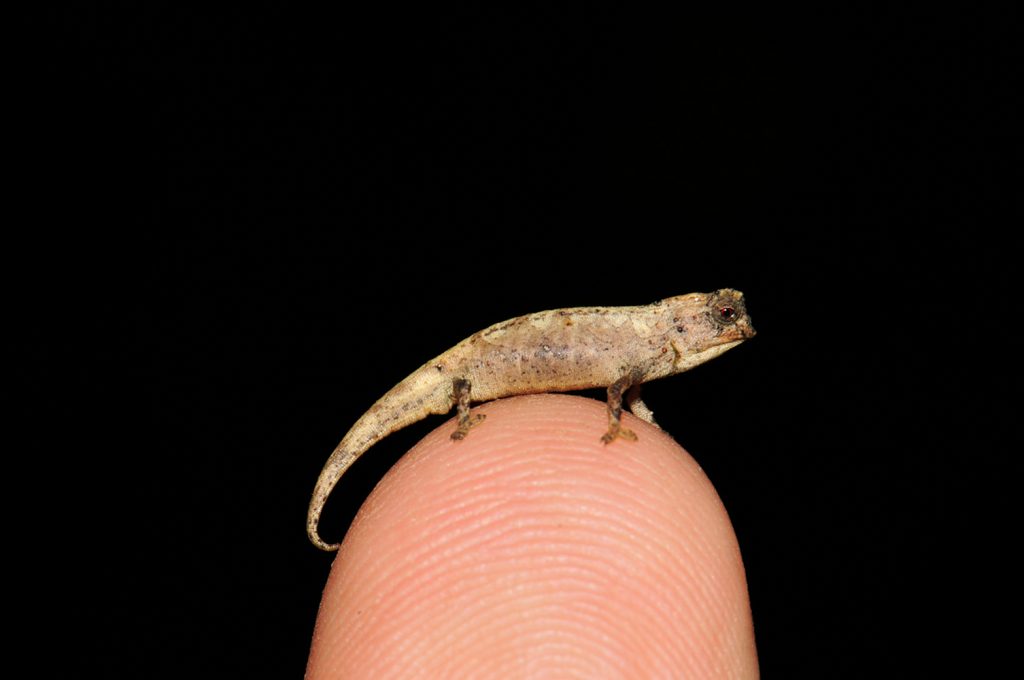
With a body size of just 13.5 mm, this Nano-Chameleon (Brookesia nana) is the smallest known male of the roughly 11,500 known reptile species. Photo: Frank Glaw (SNSB/ZSM) -
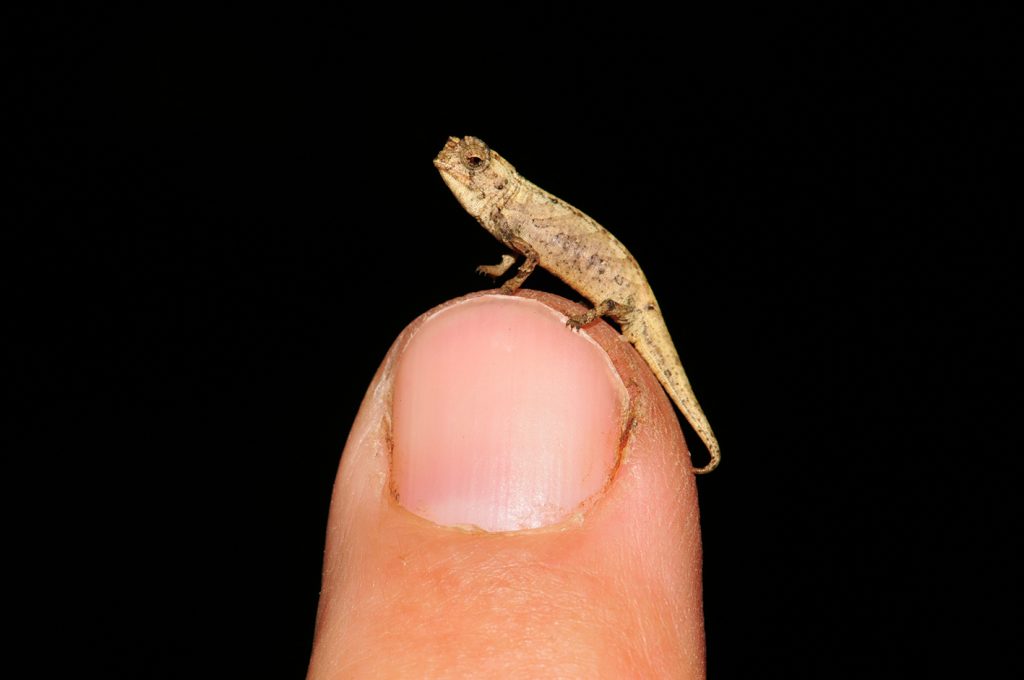
The male Nano-Chameleon (Brookesia nana) is the smallest adult reptile that has ever been found. Photo: Frank Glaw (SNSB/ZSM)
Green glowing gecko under UV-light – discovery of a new mechanism for fluorescence in a terrestrial vertebrate
Bavarian State Collection of Zoology
Researchers at the Bavarian State Collection of Zoology (SNSB-ZSM), the Ludwig-Maximilians University and Hochschule München have discovered that the web-footed gecko Pachydactylus rangei from Namibia fluoresces neon-green under UV light in a stripe along its flank and around its eye. These markings, best visible from the perspective of a gecko, presumably serve as a means to recognise geckos in the barren Namib desert the gecko calls home. In a multidisciplinary study, the researchers showed that this fluorescence is produced by iridophores (pigment cells filled with guanine crystals). The mechanism, as well as the brightness of the fluorescence, are unique and unprecedented among terrestrial vertebrates. The study was published today in the journal Scientific Reports.
Biofluorescence is known from many aquatic organisms, but has recently been increasingly discovered in terrestrial vertebrates as well. So far, two fluorescence mechanisms have been described from reptiles and amphibians: bone-based fluorescence (all bone is naturally fluorescent under UV light), and fluorescence of a chemical in secreted and circulated in lymph fluid. “As soon as we discovered this fluorescence, we realised that the web-footed geckos must use a new mechanism: the bright, neon-green fluorescence patterns were clearly produced in the skin of the lizards”, explains Dr David Prötzel, first author on the study.
Histological study of the web-footed gecko Pachydactylus rangei revealed, that the fluorescent areas of the skin are full of special pigment cells, iridophores, which are absent in the non-fluorescent areas of the skin. Iridophores reflect light, and play an important role in the colouration of geckos and other lizards. For the first time, this study revealed that some iridophores can also fluoresce. “This effect is much stronger than the bone-based fluorescence that we discovered in chameleons three years ago and one of the brightest known cases of fluorescence ever found in terrestrial vertebrates,” says Dr Frank Glaw, curator of Reptiles and Amphibians at the Bavarian State Collection of Zoology.
The moon is the only source of light during the nightly forages of these geckos in the deserts of Namibia. The blue component of the moonlight is absorbed by the geckos’ skin and emitted again as a brighter-looking, neon-green light. As though someone has taken a highlighter to these flanks, these geckos have a brightly visible signalling stripe.
The moon is the only source of light during the nightly forages of these geckos in the deserts of Namibia. The blue component of the moonlight is absorbed by the geckos’ skin and emitted again as a brighter-looking, neon-green light. As though someone has taken a highlighter to these flanks, these geckos have a brightly visible signalling stripe.
Publication:
Prötzel, D., Heß, M., Schwager, M., Glaw, F. & Scherz, M.D. (2021). Neon-green fluorescence in the desert gecko Pachydactylus rangei caused by iridophores. Sci Rep 11, 297 www.nature.com/articles/s41598-020-79706-z
Contact:
Dr. Frank Glaw
Bavarian State Collection of Zoology (SNSB-ZSM)
Münchhausenstr. 21, 81247 Munich
Tel.: +49 (0)89/8107 114
E-Mail: glaw@snsb.de
Dr. David Prötzel
Tel.: +49 (0)176/63200513
E-Mail: david.proetzel@mail.de
Download high-resolution images
Watch the corresponding Youtube Video (Dr. David Prötzel)
-
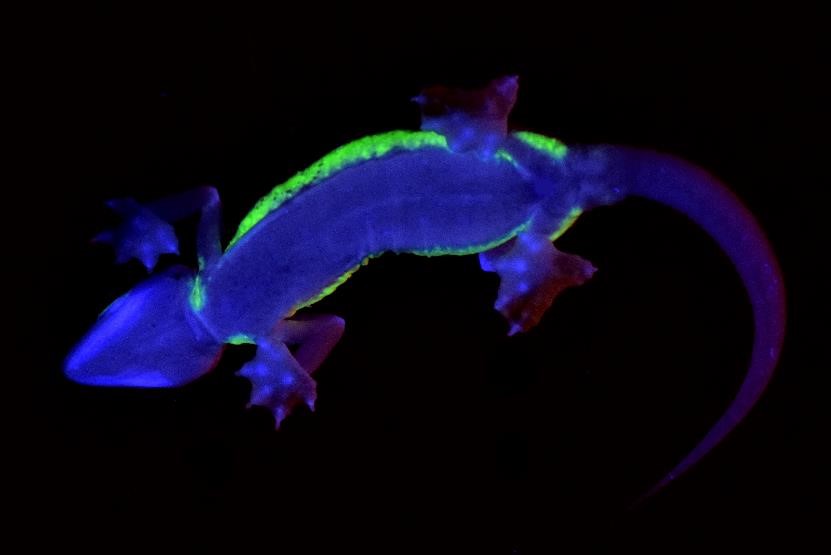
From below, both the web-footed gecko’s characteristic feet, as well as the distinctly distributed fluorescent areas become visible (under UV-light at a maximal wavelength of 365 nm). (Photo: David Prötzel)
Bionicum Nürnberg
Website: https://www.bionicum.de
Management
Dr. Eva Gebauer
Museum
What can we learn from nature and why is this so important for the future of our blue planet? Children and adults can find answers to these questions in the 400 m² interactive exhibition “Ideenreich Natur”. The museum offers information on topics relevant to our future such as nature and species conservation, biological diversity as well as sustainable resource use, creative innovations and technologies of the future. In addition to exciting background information, visitors can also immerse themselves in the world of bionics with original exhibits and hands-on experiments. And last but not least, a bionic tour leads through the zoo, where the biological models can be marvelled at directly.
Contact
Bionicum
c/o Tiergarten
Am Tiergarten 30
90480 Nürnberg
Tel: 0911 – 65084500
E-Mail: info@bionicum.de
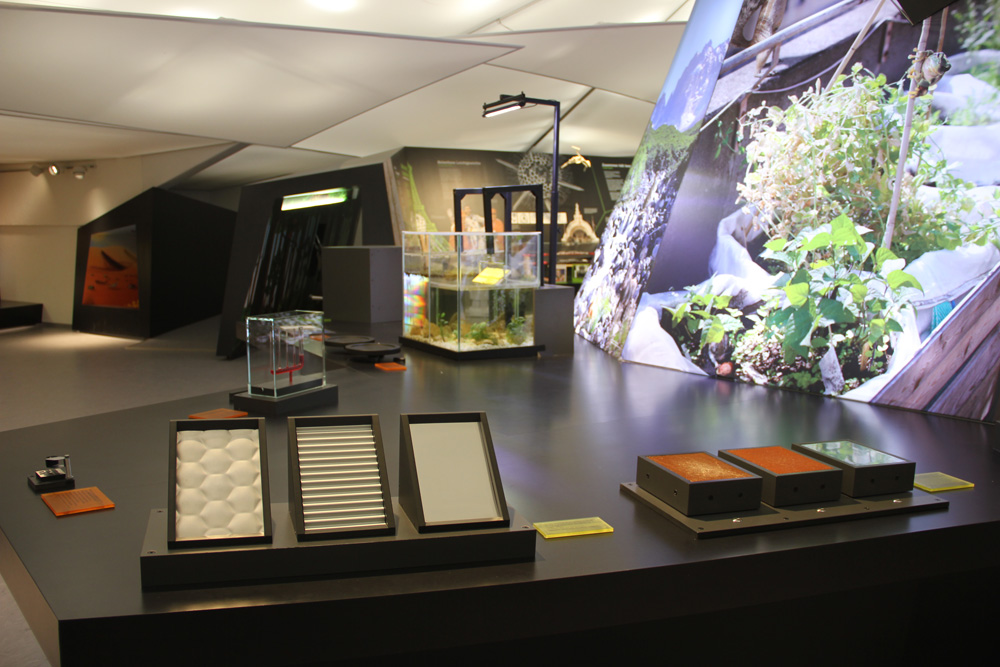
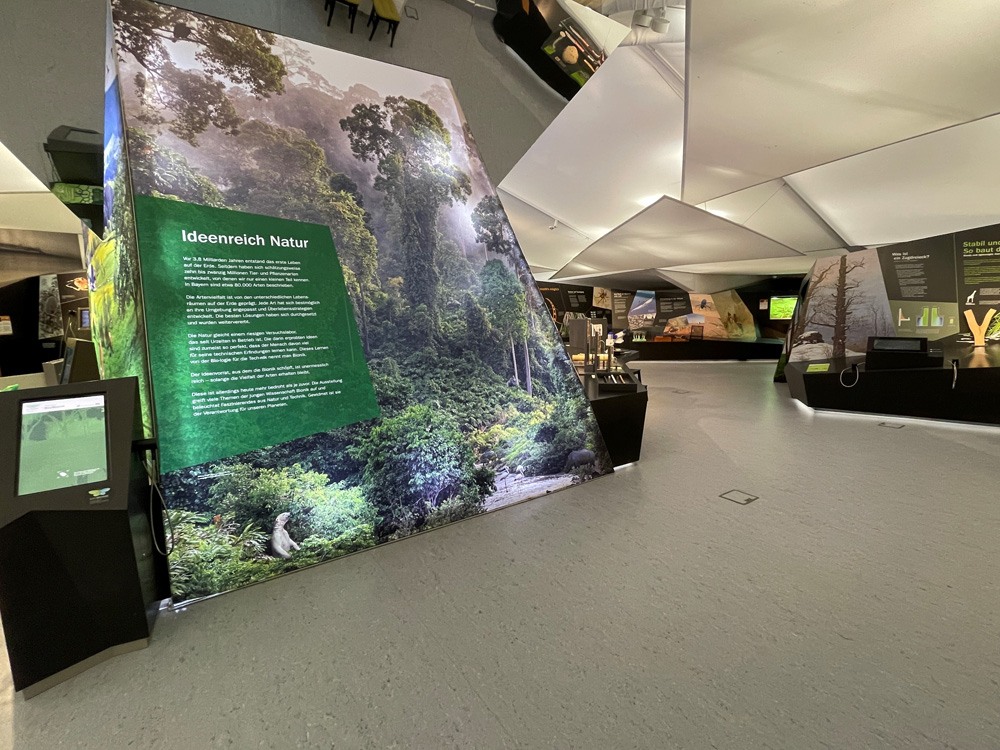

Some like it hot: Global warming triggered the evolution of giant dinosaurs
Bavarian State Collection for Palaeontology and Geology
An international team of paleontologists, including SNSB researcher Oliver Rauhut, finds evidence of rapid climate change 180 million years ago as the cause of the spread of the widely known long-necked dinosaurs (Sauropods). The researchers published their results in the prestigious scientific journal “Proceedings of the Royal Society of London”.
When we hear the word dinosaur, most of us probably immediately think of giant animals with massive bodies, long necks and tails, and tiny heads. These „quintessential dinosaurs“ actually represent one prominent subgroup of he Dinosauria, the so called Sauropoda (‚long-necked dinosaurs‘ in popular culture). Sauropods were truly amazing animals, and included the largest land-living animals known, with body lengths of up to 40 m and weights of 70 tons or more.
However, these giant animals did not appear directly at the beginning of the era of dinosaurs. For the first fifty million years of their evolutionary history, the Sauropodomorpha – the lineage that the sauropods belong to – were represented by several groups of bipedal to quadrupedal animals. Although some of them reached already large body sizes of about ten meters in length and a few tons in weight, these groups also included smaller, and lightly built animals, some of which not larger than a goat. Furthermore, all of these animals had rather slender teeth, indicating that these plant-eating animals fed on rather soft and lush vegetation. However, towards the end of the Early Jurassic period, some 180 million years ago, all these groups suddenly disappear, and only one lineage survived and thrived – the sauropods. What caused this faunal change during the Early Jurassic has remained enigmatic so far.
In the prestigious scientific journal „Proceedings of the Royal Society of London“, an international team of researchers, led by Argentinean paleontologist Diego Pol and including Munich researcher Oliver Rauhut of the Bayerische Staatssammlung für Paläontologie und Geologie and the Ludwig-Maximilians-University, now report new evidence on what might have caused these changes. In the province of Chubut, Argentinean Patagonia, they did not only discover the fossil remains of one of the oldest large sauropods known, which the team named Bagualia alba, but could also place it very precisely in its temporal and ecological context. Thus, the layers the new sauropod comes from could very precisely be dated as 179 million years ago, just after the mysterious disappearance of the other sauropodomorph groups, and finds of plant fossils in rock layers just before that time and at the time that Bagualia lived provide evidence for the climate and the ecology that these animals lived in.
Thus, the data indicate that there was a relative rapid change in climate about 180 million years ago, from a temperate warm and humid climate, in which a diverse, lush vegetation flourished, to a strongly seasonal, very hot and dry climate, characterized by a less diverse flora, dominated by forms showing adaptations for hot climates, such as certain conifers. These environmental changes were apparently driven by a greenhouse effect due to climate gasses such as CO2 and methane caused by increased volcanism at that time; evidence of these volcanic eruptions are found on many southern continents, such as the Drakensberge in southern Africa, for example.
With their slender teeth, the non-sauropodan sauropodomorphs were adapted to the rather soft vegetation flourishing before this global warming event, but when this flora was replaced by the much tougher greenhouse vegetation, these animals died out. The sauropods represented the only group of sauropodomorphs with a much more robust dentition, well-adapted for such tough vegetation, and thus they flourished and became the dominant group of herbivorous dinosaurs at that time. Indeed the specialization for this kind of vegetation was probably one of the reasons why these animals reached their gigantic sizes: As large digestion chambers are needed to cope with such food, there was a general tendency for these animals to become ever larger.
Publication:
Pol D, Ramezani J, Gomez K, Carballido JL, Carabajal AP, Rauhut OWM, Escapa IH, Cúneo NR. 2020 Extinction of herbivorous dinosaurs linked to Early Jurassic global warming event. Proc. R. Soc. B 20202310. http://dx.doi.org/10.1098/rspb.2020.2310
Contact:
Prof. Dr. Oliver Rauhut
Bavarian State Collection for Palaeontology and Geology (SNSB-BSPG)
Richard-Wagner-Str. 10, 80333 Munich
Tel.: +49 (0)89 6645
E-Mail: rauhut@snsb.de
-
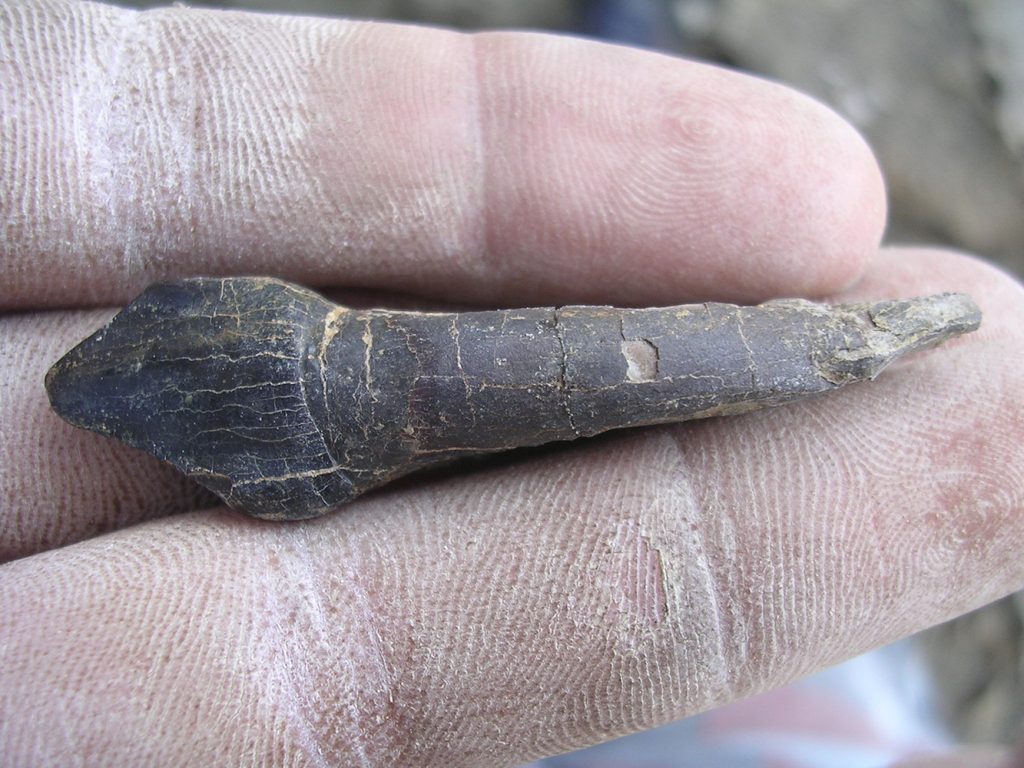
One of the robust teeth of Bagualia alba shortly after discovery. (Photo: Diego Pol) -
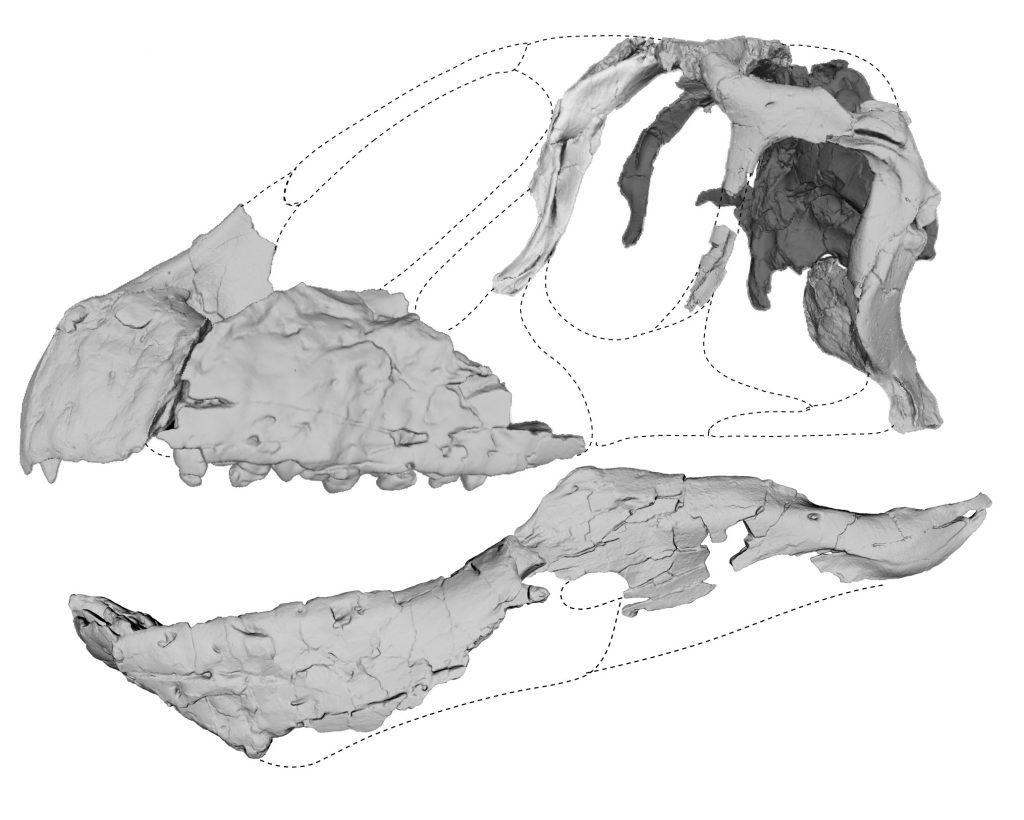
Reconstruction of the skull of the early sauropod Bagualia alba. (Photo: Diego Pol) -
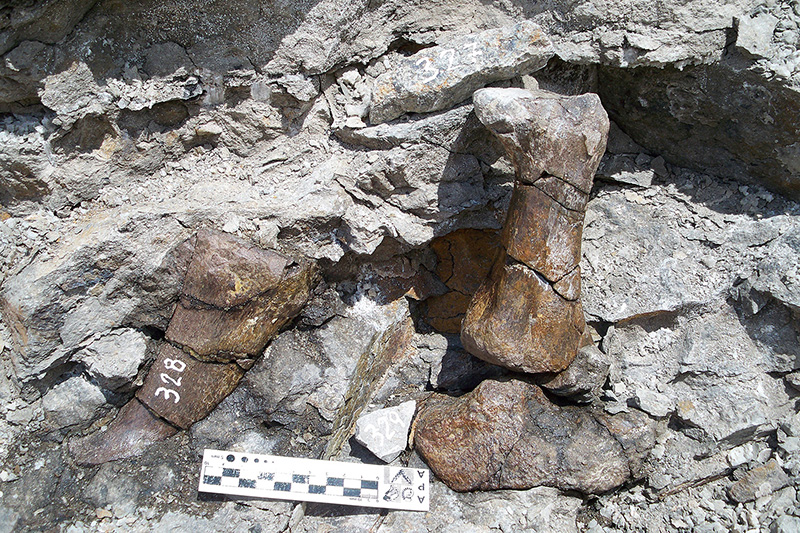
Bones of Bagualia alba (Foto: Diego Pol) -
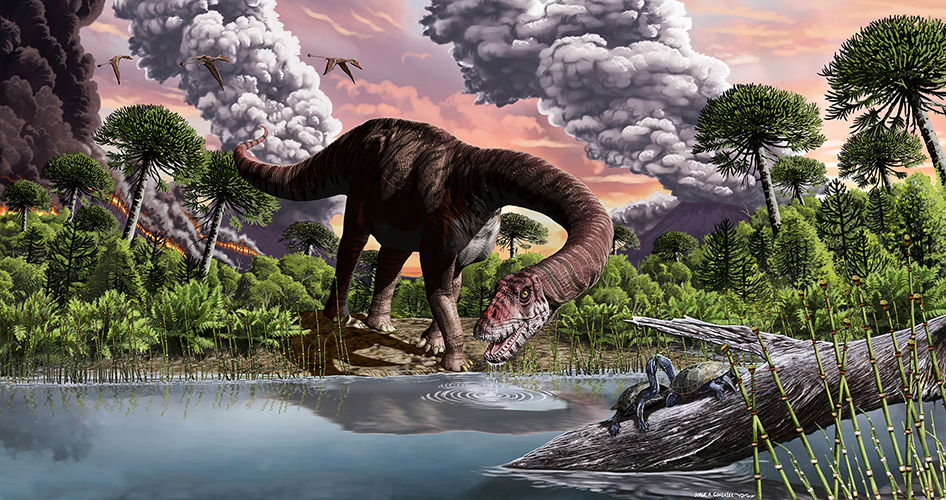
Reconstruction of the early sauropod Bagualia alba. (Artist: Jorge Gonzales)
Endangered botanic predators: globally, one fourth of carnivorous plants are threatened
Bavarian State Collection for Botany
An international research team including botanist Andreas Fleischmann from SNSB-BSM has evaluated the Red List threat categories for all 860 known species of carnivorous plants in the light of the 21st Century – the Anthropocene, i.e. the geological time impacted by human ecological influences like habitat destruction, pollution and global climate change. The scientists now published their results in the international journal ‚Global Ecology and Conservation‘.
In order to evaluate the global threats and conservation concerns for carnivorous plants in their ecosystems, an international research team from Australia, Brazil and Germany has assessed all 860 known species of carnivorous plants to Red-List categories for threatened species, following the standards of the International Union for Conservation of Nature (IUCN). Additionally, distribution ranges and habitats of all carnivorous plants species were determined and for each species threat categories and conservation status were identified.
“The Red-List status of all carnivorous plants is now known, while only 10% of all 300.000 known flowering plants have been assessed to their Red List status by IUCN thus far”, says Dr. Andreas Fleischmann, senior author of the study, botanist from Botanische Staatssammlung Munich (SNSB-BSM) and researcher at the GeoBio-Center of Ludwig-Maximilians-University (LMU) Munich, Germany.
“Our study shows that about 25 % of all carnivorous plant species are at increasing risk of extinction”, says lead author Dr. Adam Cross from the School of Molecular and Life Sciences at Curtin University, Western Australia. “Most of the critically endangered carnivorous plant species are found in Brazil, Indonesia, Philippines, Cuba, Thailand, and Australia. This, in turn, means that these countries bear special responsibility for the protection of global carnivorous plant biodiversity, as they harbour many species which are only known from very small geographical areas in their territories.”
Carnivorous plants are predatory plants which attract, capture and digest insects and other small animals with their leaves which are modified to insect traps. They do so in order to obtain some extra nutrients, as carnivorous plants are naturally occurring on very nutrient-impoverished soils. They grow in bogs, swamps, seepage areas, along rivulets, on wet dripping walls on rocks, in nutrient-poor lakes and ponds, in tropical rainforests, on the table mountains and inselbergs of South America and Africa, many species even occur in only seasonally wet sand or laterite soils. This specialization of growing in soils that are poor in nitrogen and phosphorous is becoming a challenge for this group of plants in the 21st Century. In a quickly changing world with human impacts on all ecosystems, such nutrient-poor, pristine wet habitats are rapidly decreasing in number and quality.
Many carnivorous plants become increasingly threatened, as even their most remote habitats are getting impacted by clearing of land for agriculture, forestry and mining development. Additionally, these botanical nutrient specialists are threatened by environmental pollution and eutrophication (over-fertilization) of their habitats. Global climate change, leading to more frequent drought events and severe heat waves represents a dire threat to these plants as they are predominately confined to wet habitats that are in need of regular and reliable water supply. Moreover, an increasing number of carnivorous plants – especially large and spectacular species from the Asian and North American pitcher plant genera, but also some Australian sundew species – is under threat by poaching and illegal trade with wild-collected plants.
“Carnivorous plants can only exist on nutrient-poor soils. If these are fertilized, for example with nitrogen, the nutrient specialists will become extinct. One problem is the over-fertilization of our landscape with air-borne nitrogen that originates from industrial dusts, traffic and agriculture. This is a serious problem especially for sensitive habitat specialists”, says Andreas Fleischmann. “Our study forms an important basis for preserving and protecting the diversity of this group of plants”.
The research was conducted by Curtin University in Australia, Royal Botanic Gardens Victoria in Australia, Botanische Staatssammlung Munich and Ludwig-Maximilians-University Munich in Germany, and the Federal University of São João del Rei in Brazil.
Publication:
Cross, A.T., Krueger, T.A., Gonella, P.M., Robinson, A.S. & Fleischmann, A. (2020). Conservation of carnivorous plants in the age of extinction. Global Ecology and Conservation: e01272. https://doi.org/10.1016/j.gecco.2020.e01272
Contact:
Dr. Andreas Fleischmann
Bavarian State Collection for Botany (SNSB-BSM)
Menzinger Str. 67, 80638 Munich
Tel.: +49 (0)89 17861 240
E-Mail: fleischmann@snsb.de
-
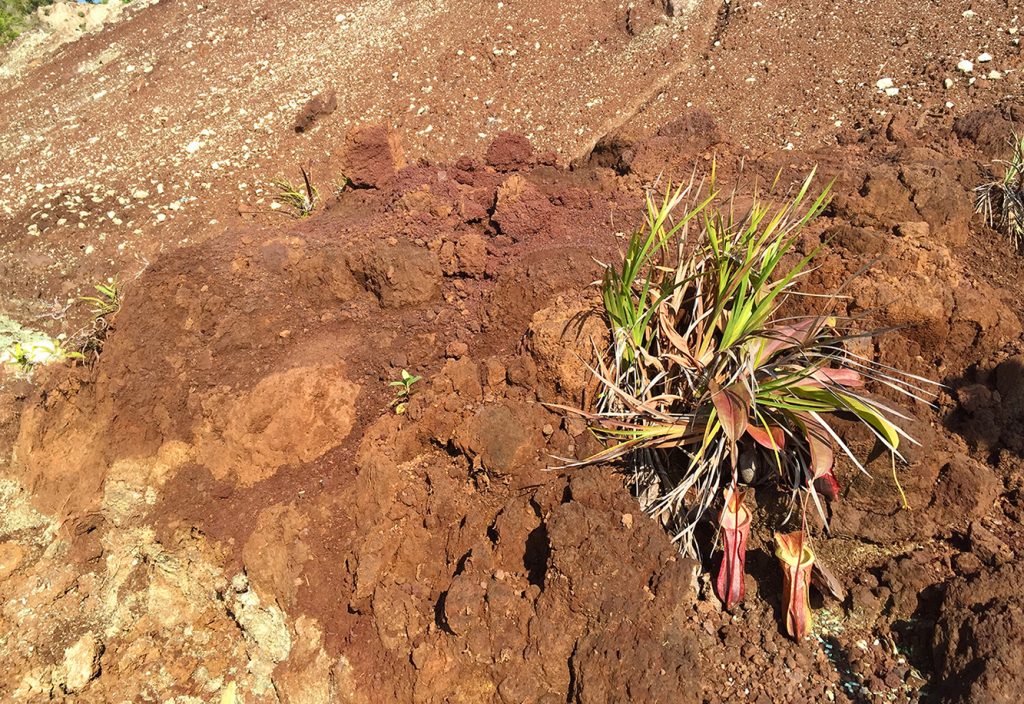
A single remaining individual of the Papuan pitcher plant Nepenthes neoguineensis in an ecosystem destroyed by mining activities. (Photo: Dr. Alastair Robinson, Royal Botanic Gardens Victoria, Australia) -
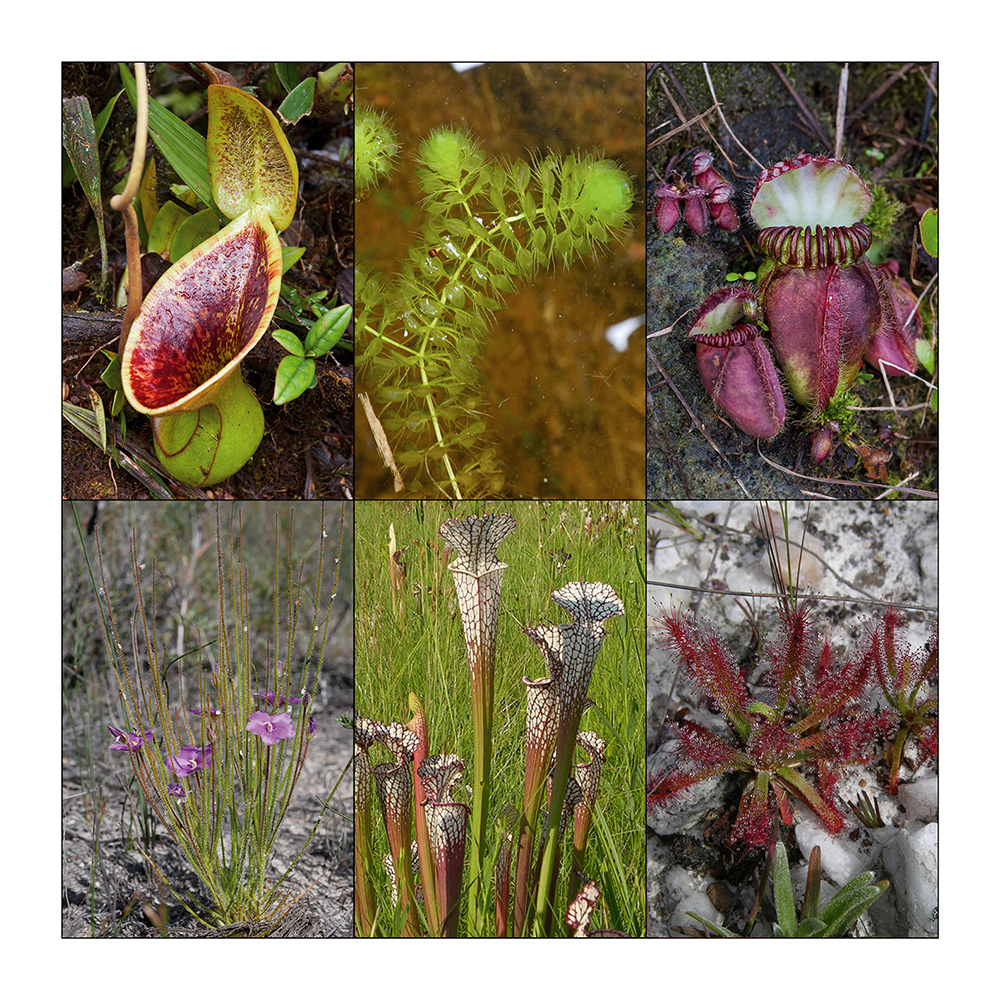
Examples of threatened carnivorous plants from Southeast Asia, Europe, Australia, Brazil and USA.
(Photos: Dr. Alastair Robinson, Royal Botanic Garden Victoria, Australia, BSc. Thilo Krueger, Curtin University, Australia, and Dr. Andreas Fleischmann, SNSB-BSM Munich, Germany)
Four new species of chameleons from Madagascar – revision of the „nosed-chameleons“
Bavarian State Collection for Zoology
Madagascar is home to almost half of all known 217 chameleon species. However, their habitats are also threatened to a dramatic level and the vast majority of the primary rainforest has already been destroyed. Scientists from Germany and Madagascar have now discovered three new species and revalidated another species. The paper is published this week in the open access zoological journal Vertebrate Zoology.
Madagascar is a paradise for nature lovers, since most of the land vertebrate species are only found on this large island off the east coast of Africa. The endemic lemurs and chameleons are of particular interest and biologists have been investigating these groups of animals intensively since the 19th century. However, the taxonomy (classification) of many species is still unclear, as in the case of the flap-nosed chameleon Calumma nasutum, which was described as early as 1836. Intensive fieldwork in partly remote forest areas from northern to southern Madagascar showed that these small chameleons with the “nasal appendage” that gives them their name actually represent a complex of several different species. Using modern methods, including the examination of the skulls and the bizarre genital organs (hemipenes) by micro-computed tomography and the analysis of DNA sequences, three new species were finally named and described: Calumma emelinae from the east coast of Madagascar, C. tjiasmantoi from the southeast, and C. ratnasariae from the north. Another species (C. radamanus) that had previously not been recognized was revalidated. “Without the use of the different methods and the intensive field work this species complex would certainly not have been clarified yet. Only the combination of the different data sets has led to a significantly better understanding of the chameleon group”, says Dr. Frank Glaw, curator for amphibians and reptiles at the Bavarian State Collection of Zoology in Munich (SNSB-ZSM).
The new work represents the last missing piece in the puzzle of the Calumma nasutum group, which consisted of only seven species when the authors of the study started working on this group back in 2014. This number has now more than doubled to 16 species. For the entire family of chameleons (Chamaeleonidae), this means an increase of over 4%. “By revising the taxonomy of the entire Calumma nasutum group, not only the protection status of the new species but also that of the already known species has to be re-evaluated,” says Dr. David Prötzel, first author of the study and former doctoral student at the Ludwig-Maximilians University in Munich and the Bavarian State Collection of Zoology, “numerous species are probably endangered and depend on the protection of their habitats.”
Publication
Prötzel, D., Scherz, M.D., Ratsoavina, F.M., Vences, M., Glaw, F. (2019). Untangling the trees: Revision of the Calumma nasutum complex (Squamata: Chamaeleonidae). Vertebrate Zoology, 70(1): 23-59. https://doi.org/10.26049/VZ70-1-2020-3
Contact
Dr. David Prötzel
Tel.: +49 (0)176 63200513
E-Mail: david.proetzel@mail.de
Dr. Frank Glaw
Bavarian State Collection for Zoology (SNSB-ZSM)
Münchhausenstr. 21, 81247 Munich
Tel.: +49 (0)89 8107 114
E-Mail: glaw@snsb.de
-
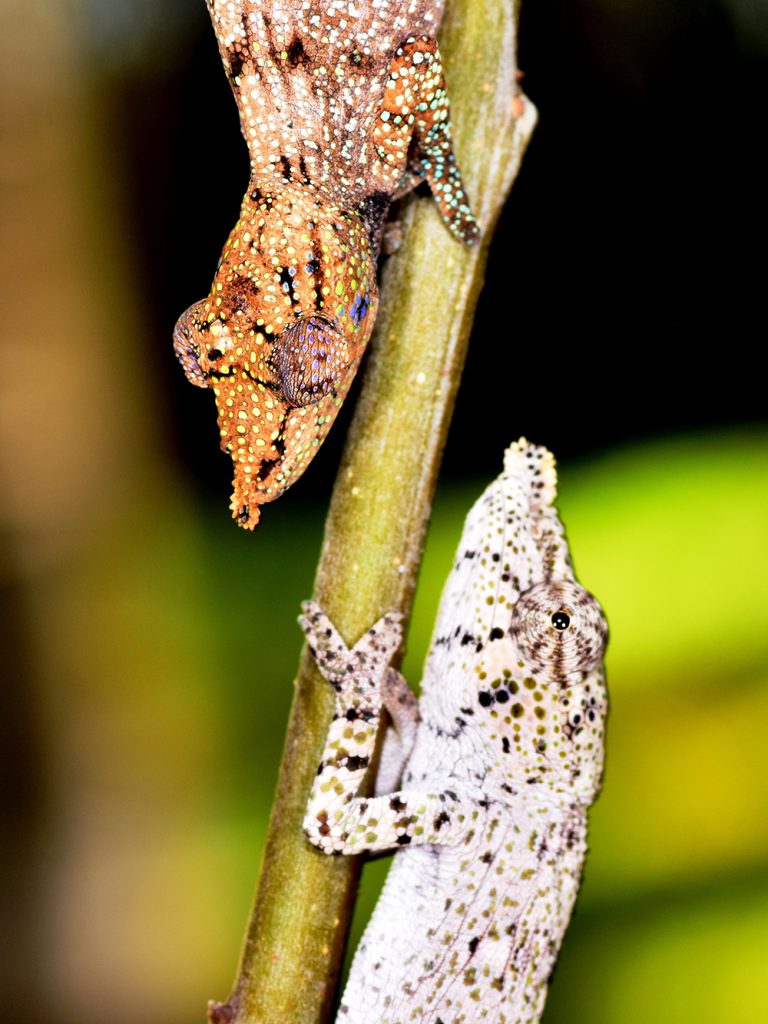
Two females of Calumma radamanus (Nosy Be, northern Madagascar) show territorial behavior when they meet due to their colorful displaying coloration. The upper animal is probably the more dominant one due to the striking patterns in the head area. Photograph: David Prötzel (ZSM/LMU) -
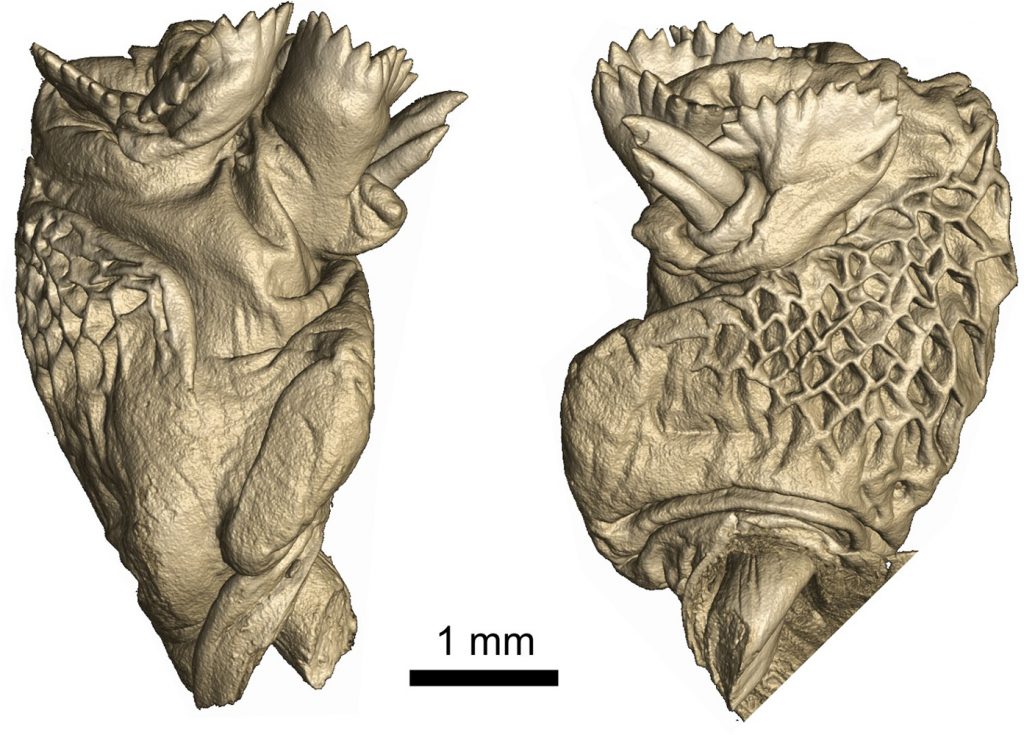
Using microtomographic analyses, the paired male genital organs (hemipenis) can be represented objectively. Their partially bizarre structures (here from Calumma fallax) can be very helpful in distinguishing chameleon species. Image: David Prötzel (ZSM/LMU) and Mark D. Scherz (ZSM/LMU).
New light on cichlid evolution in Africa
GeoBio-Center at LMU and Bavarian State Collection for Zoology
A collaborative research project carried out under the auspices of the GeoBio-Center at LMU has developed an integrative approach to the classification of fossil cichlids, and identified the oldest known member of the Tribe Oreochromini.
Cichlids (Cichlidae) are a group of small to medium-sized fish that are ubiquitous in freshwater habitats in the tropics. They are particularly notable in exhibiting a wide range of morphological and behavioral specializations, such as various modes of parental care, including mouthbrooding. Some species (mainly members of the genus Tilapia) have achieved fame as culinary delicacies and are of considerable economic significance. Cichlids have undergone rapid diversification in Africa, which is home to at least 1100 species. This process has been especially prominent in the Great Lakes in East Africa’s Rift Valley (Lakes Tanganyika, Malawi and Victoria), where it is referred to as the East African Radiation.
“Cichlid diversification in East Africa has become a central paradigm in evolutionary biology. As a consequence, dating the onset of the process and understanding the mechanisms that drive it are issues of great interest to evolutionary biologists and paleobiologists,” says LMU paleontologist Professor Bettina Reichenbacher, who is also member of the GeoBio-Center at LMU. Fossils from the area provide the sole source of direct evidence that would allow one to determine the timing and trace the course of lineage diversification within the group. However, the search for cichlid fossils has proven to be both arduous and extremely time-consuming. Indeed, only about 20 fossil species of cichlids from Africa have yet been formally described.
In a study that appears in the online journal Scientific Reports, a team of researchers led by Bettina Reichenbacher now describes a new fossil cichlid, which the authors assign to the new genus Oreochromimos. The name derives from the fact that the specimens, which the team discovered in Central Kenya, show similarities to members of the Tribe Oreochromini (hence the element ‘mimos’, meaning ‘mimic’, in the genus name), which are widely distributed in Africa today. “Determining whether or not the fossils could be assigned to any of the extant cichlid lineages was particularly challenging,” says Stefanie Penk, first author of the study and a doctoral student in Reichenbacher’s group. The difficulties are rooted in the great diversity of the modern cichlid fauna in Africa, and the fact that even distantly related species may be morphologically very similar to each other. “The architecture of the skeleton in cichlids is pretty conservative. All of them have a similar basic form, which undergoes very little change during speciation,” Reichenbacher explains. In collaboration with Dr. Ulrich K. Schliewen, co-author of the new paper, Curator of Fishes at the Bavarian State Collection for Zoology in Munich (SNSB-ZSM) and also a member of the GeoBio-Center at LMU, the team adopted the ‘best-fit approach’ to the classification of the fossil specimens. This requires comparison of the fossil material with all the relevant modern lineages of cichlids. In light of their contemporary diversity, that might seem an impossible task. But thanks to Schliewen’s knowledge – and the range of comparative material represented in the collection under his care – the strategy succeeded.
A unique glimpse of the past
Reichenbacher and colleagues recovered the Oreochromimos material from a fossil-fish Lagerstätte in Kenya’s Tugen Hills, which lie within the Eastern Branch of the East African Rift System. This site provides a unique window into the region’s past. The volcanic and sedimentary rocks deposited here date back 5-20 million years. They were overlain by younger material and subsequently uplifted to altitudes of as much as 2000 m by tectonic forces. As a result, the fossil-bearing rocks exposed in the Tugen Hills are either inaccessible to exploration or have been lost to erosion in other parts of Africa. Consequently, the strata here contain a unique assemblage of fossils. Undoubtedly the best known finds so far excavated are the 6-million-year-old remains of a hominin species, which has been named Orrorin tugenensis (orrorin means ‘original man’ in the local language).
But cichlid fossils are also among the paleontological treasures preserved in these sedimentary formations – and they are at the heart of Reichenbacher’s Kenya Project, which began in 2011. The material collected so far was recovered in cooperation with Kenya’s Egerton University, and is now on loan to LMU’s Department of Earth and Environmental Sciences for further study.
The Oreochromimos specimens are about 12.5 million years old, which makes this genus the oldest known fossil representative of the Tribe Oreochromini. It therefore qualifies as the oldest fossil clade yet assigned to the Haplotilapiini, the lineage which gave rise not only to most of the species that constitute the present-day diversity of African cichlids, but also to the East African Cichlid Radiation in the Great Lakes of the Rift Valley. With their use of an innovative approach to comparative systematics, the authors of the new study have provided a basis for the taxonomic assignment of future finds of fossil cichlid material. “With the aid of this dataset, it will be possible to classify fossil cichlids much more reliably than before and thus to shed new light on their evolutionary history,” says Bettina Reichenbacher.
(text: LMU)
Publication:
Stefanie B. R. Penk, Melanie Altner, Alexander F. Cerwenka, Ulrich K. Schliewen, Bettina Reichenbacher: New fossil cichlid from the middle Miocene of East Africa revealed as oldest known member of the Oreochromini. In: Scientific Reports 2019
https://rdcu.be/bKqXr
Contact
Professor Bettina Reichenbacher
Faculty of Geosciences
Department of Earth and Environmental Sciences
Ludwig-Maximilians-Universität Munich
Tel.: +49 (0)89 2180 6603
E-Mail: b.reichenbacher@lrz.uni-muenchen.de
-

Holotype specimen of the 12.5-million-year-old fossil cichlid Oreochromimos kabchorensis. The new species is the oldest known member of the Oreochromini, a lineage that is now represented all over Africa. (Photo: M. Schellenberger/SNSB-BSPG)
European Commission Recognition of CETAF Code of Conduct and Best Practice on Access and Benefit Sharing (ABS)
DNFS and CETAF
We are proud to announce that the CETAF Code of Conduct on Access and Benefit Sharing has just been officially recognised as the first best practice on ABS by the European Commission.
The CETAF Code of Conduct (CoC) was submitted officially for recognition as best practice to the EU under Article 8 of the Regulation on ABS no. 511/2014. After a prolonged process where the European Commission, Member States and other actors helped improving the document, the European Commission on 10 May 2019 with decision C(2019)3380/F1 of the European Commission DG ENV formally recognised CETAFs CoC and placed it in the Register of Best Practices as the first and currently only entry.
Meeting ABS requirements has become a shared responsibility and biodiversity researchers need to equip themselves with appropriate tools for addressing compliance with current ABS regulations. Therefore, CETAF has been working since 2012 on developing guidelines for users of genetic resources to tackle a challenging landscape derived from a diverse set of legislative measures.
Following publication of the EU Regulation on ABS and in response to Article 20 in the Nagoya Protocol to the Convention on Biological Diversity (CBD), CETAF produced a Code of Conduct and Best Practices on Access and Benefit-Sharing that was adopted in 2015 by its community of Natural History Museums and Botanic Gardens. CETAF member institutions thus committed themselves to this Code of Conduct designed to fully support the institutional operations as collection-holding and non-commercial biological research organizations.
The CoC and Best Practices provides an overall framework to guide practitioners and researchers within the CETAF scientific community, and beyond, in their daily work. Being recognized by the EC as a “best practice” credits the procedures and mechanisms developed to help CETAF-related scientists in their use of genetic resources and furnishes researchers with the appropriate tools to stay compliant with the obligations of the EU ABS Regulation. It protects the ability of non-commercial biodiversity science and promotes the sharing of the benefits that the Nagoya Protocol is set up to facilitate.
The CETAF Member Institutions are pleased to share this huge achievement in its aim to promote fair research partnerships worldwide in the implementation of the Nagoya Protocol.
More information on the CETAF website:
https://cetaf.org/services/natural-science-collections-and-access-and-benefit-sharing
If you need more details about the CETAF Code of Conduct, please contact:
Ana Casino ana.casino@cetaf.org (english), Excecutive Director CETAF
Dirk Neumann neumann@snsb.de (deutsch), SNSB (www.snsb.de, www.zsm.mwn.de)
First Birds: Archaeopteryx gets company
Bavarian State Collection for Palaeontology and Geology
Researchers at the Bavarian State Collection of Paleontology and Geology (SNSB-BSPG) and LMU Munich describe a hitherto unknown bird from the late Jurassic period. It is the second bird capable of flight, after the famous Archaeopteryx, to be identified from this era.
Archaeopteryx’s throne is tottering. Since the discovery of the first fossil of the primal bird in 1861, it had been considered the only bird from the Jurassic geological period. Today’s birds are thought to be direct descendants of carnivorous dinosaurs, with Archaeopteryx representing the oldest known flying representative of this lineage. All of the specimens that have been found up to now come from the region of the Solnhofen Archipelago, which during the Jurassic era spanned across what is today the Altmühl Valley, in the area between Pappenheim and Regensburg. Archaeopteryx lived here in a landscape of reef islands about 150 million years ago. A team led by Prof. Oliver Rauhut has taxonomically identified a bird unknown until now: Alcmonavis poeschli, the second bird from the era identified as capable of flight. “This suggests that the diversity of birds in the late Jurassic era was greater than previously thought,” says Rauhut, paleontologist at the Department of Earth and Environmental Sciences as well as the Bavarian State Collection of Paleontology and Geology (SNSB-BSPG).
Only a wing of Alcmonavis poeschli was discovered. “At first, we assumed that this was another specimen of Archaeopteryx. There are similarities, but after detailed comparisons with Archaeopteryx and other, geologically younger birds, its fossil remains suggested that we were dealing with a somewhat more derived bird,” says Rauhut. According to the team’s taxonomic studies, which are currently featured in the scientific journal eLife, Alcmonavis poeschli was not merely somewhat larger than Archaeopteryx; apparently it could also fly better. “The wing muscles indicate a greater capacity for flying,” says Rauhut. Alcmonavis poeschli exhibits numerous traits lacking in Archaeopteryx but present in more recent birds. This suggests that it was adapted better to active, flapping flight.
The discovery of Alcmonavis poeschli has implications for the debate over whether active flapping birds arose from gliding birds. “Its adaptation shows that the evolution of flight must have progressed relatively quickly,” says Dr. Christian Foth from the University of Fribourg (Switzerland), one of the co-authors of the study.
The bird now being described for the first time derives its name from the old Celtic word for the river Altmühl, Alcmona, and its discoverer Roland Pöschl, who leads the excavation at the Schaudiberg quarry close to Mörnsheim. A fossil of Archaeopteryx was also discovered in the same unit of limestones. The two primal birds thus apparently lived at the same time in what was then a subtropical lagoon landscape in southern Germany.
Publication:
Rauhut, OMW., Tischlinger, H, Foth, C (2019) A non-archaeopterygid avialan theropod from the Late Jurassic of southern Germany. – eLife https://doi.org/10.7554/eLife.43789.001
Contact:
Prof. Dr. Oliver Rauhut
Bavarian State Collection for Palaeontology and Geology (SNSB-BSPG) and
Department of Earth and Environmental Sciences LMU
Tel.: +49 (0)89 2180 6645
E-Mail: rauhut@snsb.de
-
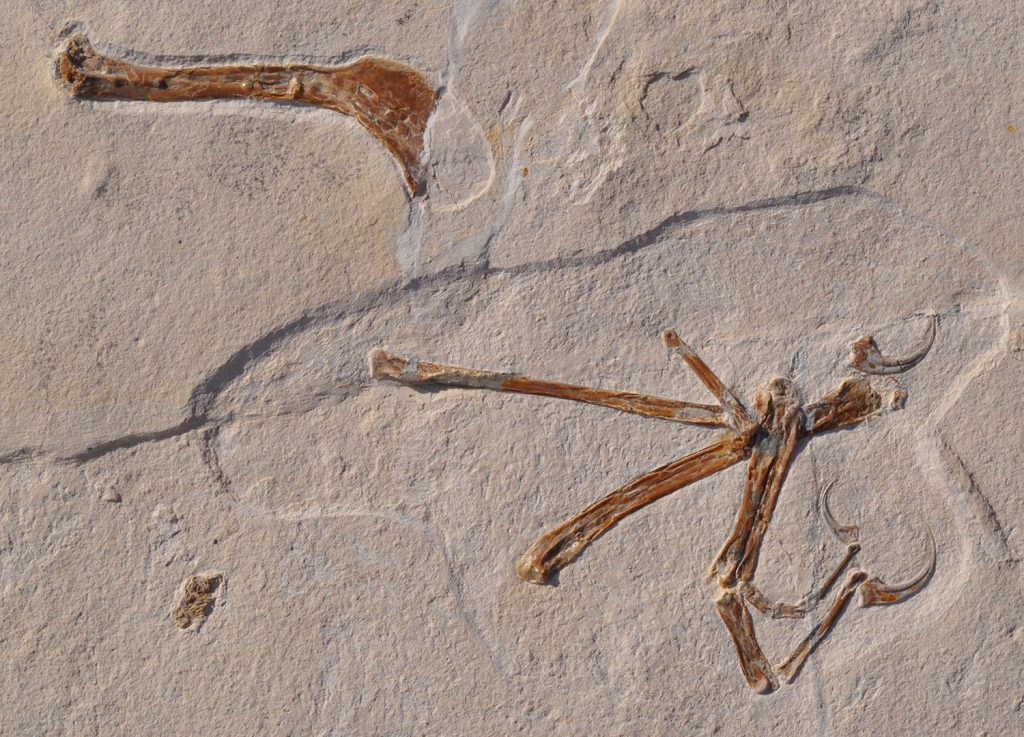
The illustration shows the wing of Alcmonavis poeschli as it was found in the limestone slab. Alcmonavis poeschli is the second known specimen of a volant bird from the Jurassic period. (Photo: O. Rauhut, SNSB-BSPG)
New giant stick insects with brightly coloured males discovered
Bavarian State Collection for Zoology
Scientists of the Bavarian State Collection of Zoology (SNSB-ZSM) and the University of Göttingen have discovered two new species of giant stick insects, which measure more than 20 centimeters body length and are among the largest insects in Madagascar. Unlike most other stick insects the adult males of these phasmids are not camouflaged at all, but show a splendid colouration. Why the males can afford this extravagance remains an exciting puzzle for evolutionary research. The work was published today in the journal Frontiers in Ecology and Evolution.
Achrioptera manga is a real gem among the stick insects – it is huge and has brightly coloured males. The most important survival rule for stick insects is to make themselves invisible to predators, but the colourful Achrioptera males have simply ignored this and survived anyway. What purpose this extravagance holds, and why the conspicuous males are not quickly eaten by birds and other animals, remains a mystery for the time being.
“It is possible that they ingest toxic substances from the plants they eat and that they accumulate them in their bodies. If this is true their bright colours might serve as a signal to potential predators that they are not edible”, says Frank Glaw of the Bavarian State Collection of Zoology in Munich. “For females, camouflage could still be more beneficial than deterrence. “If there are especially colourful males in the animal kingdom, it is often because the females prefer those males for mating, but whether this explanation applies to these nocturnal animals, we do not know,” adds his colleague, grasshopper expert Oliver Hawlitschek from ZSM. It is remarkable that the males develop their splendid colours only after they have matured. Until their last larval moult they look like a brown twig and are almost invisible during the day. The amazing colour change to a splendid Insect takes place within a few days.
The females, however, remain well camouflaged for the rest of their life as do most stick insects. “With this strategy, the insect order of phasmids has survived for millions of years, producing more than 3000 species and populating all the warmer regions of the world.” explains Sven Bradler, stick insect researcher at the University of Göttingen. “Our data suggest that there are many new and morphologically similar species that can only be reliably identified with the help of genetics.” adds his colleague Julia Goldberg.
So far, A. manga has been assigned to the externally very similar species Achrioptera fallax, which was described almost 160 years ago. But only a few years ago researchers of the Bavarian State Collection of Zoology discovered green stick insects, which correspond exactly to the first description of A. fallax. Together with colleagues from the University of Göttingen they compared the green and blue morphs and found significant genetic differences that demonstrate their specific distinctness. The discovery of the second new giant stick insect (Achrioptera maroloko) happened in a similar way. It can reach up to 24 cm body length and was previously assigned to A. spinosissima. However, both species also show remarkable differences in male colouration (yellow versus blue) and genetics.
Publication:
Glaw, F., O. Hawlitschek, A. Dunz, J. Goldberg & S. Bradler (2019): When giant stick insects play with colors: Molecular phylogeny of the Achriopterini and description of two new splendid species (Phasmatodea: Achrioptera) from Madagascar. – Frontiers in Ecology and Evolution
https://doi.org/10.3389/fevo.2019.00105
Contact:
Dr. Frank Glaw
Bavarian State Collection for Zoology (SNSB-ZSM)
Münchhausenstr. 21, 81247 Munich
Tel.: +49 (0)026 134 469 1632
E-Mail: glaw@snsb.de
-
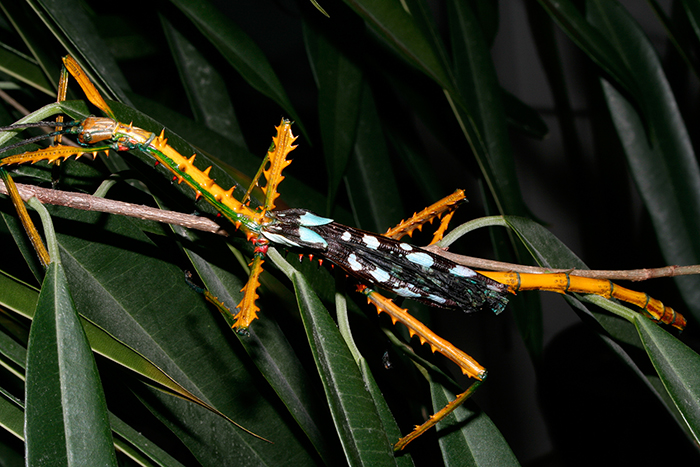
The male of Achrioptera maroloko shows a warning colouration, mostly consisting of yellow and black. (Photo: Frank Glaw) -
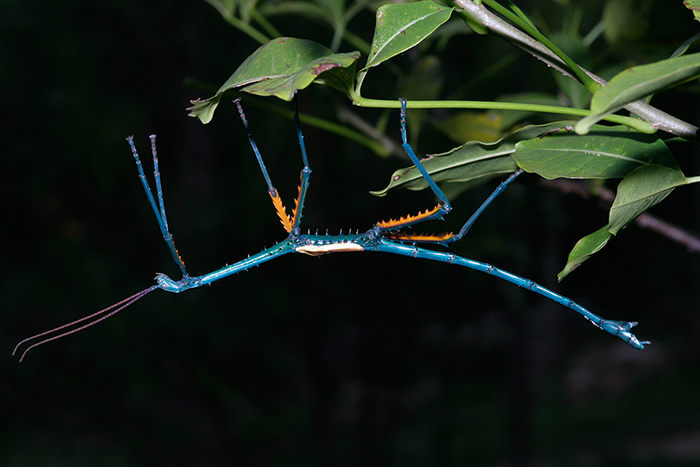
Male of Achrioptera manga, the blue wonder of Madagascar. (Foto: Frank Glaw)
Five tiny new frogs discovered in Madagascar
Bavarian State Collection for Zoology
An international team of scientists has named five new species of tiny frogs found across the island of Madagascar. The largest of them could sit happily on your thumbnail. The smallest is just longer than a grain of rice. The study was published in the open access mega-journal PLoS ONE. Madagascar, an island a little larger than mainland France, has more than 350 frog species. This number is constantly rising, and many of the newly named species are very small.
The five new species belong to the group of frogs commonly referred to as ‘narrow-mouthed’ frogs, a highly diverse family found on every continent except Antarctica and Europe. Although most narrow-mouthed frogs are small to moderately large, many are tiny, including the smallest frog in the world, Paedophryne amauensis from Papua New Guinea at just 7.7 mm adult body size. What’s remarkable is that the smallest frogs have evolved to become tiny independently, often several times within a single region, as highlighted in this new study. Three of the new species belong to a group that is wholly new to science, which the authors have formally dubbed Mini. The other two new species, Rhombophryne proportionalis and Anodonthyla eximia, are also just 11–12 mm, and are much smaller than their closest relatives.
‘When frogs evolve small body size, they start to look remarkably similar, so it is easy to underestimate how diverse they really are,’ says Mark D. Scherz, PhD candidate at the Ludwig Maximilian University of Munich and Technical University of Braunschweig, and lead author on the new study, ‘Our new genus name, Mini, says it all: adults of the two smallest species Mini mum and Mini scule, are 8–11 mm, and even the largest member of the genus, Mini ature, at 15 mm, could sit on your thumbnail with room to spare.’
Finding tiny frogs in the leaf litter is hard work. ‘Calling males often sit one or two leaves deep and stop calling at the slightest disturbance,’ says Dr. Frank Glaw, head of the Section of Herpetology at the Bavarian State Collection of Zoology in Munich (SNSB-ZSM) and senior author on the study, ‘It can take a lot of patience to find the frog you are looking for.’
Cyclones which often batter Madagascar’s eastern coast in the December–March rainy season, can make searching even more difficult. ‘I found Anodonthyla eximia in the early morning after a terrible night, when a cyclone swept away most of our camp,’ says Professor Miguel Vences, head of the Division of Evolutionary Biology at the Technical University of Braunschweig and one of the study’s senior authors. ‘Miserable conditions for biologists can make great conditions for frogs’.
Publication:
Scherz MD, Hutter CR, Rakotoarison A, Riemann JC, Rödel M-O, Ndriantsoa SH, Glos J, Hyde Roberts S, Crottini A, Vences M, Glaw F (in press) Morphological and ecological convergence at the lower size limit for vertebrates highlighted by five new miniaturised microhylid frog species from three different Madagascan genera. PLoS One doi:10.1371/journal.pone.0213314
http://journals.plos.org/plosone/article?id=10.1371/journal.pone.0213314
Contact:
Mark D. Scherz, MSc
LMU Munich
Münchhausenstr. 21, 81247 Munich
Tel.: +49 (0)89 8107 112
E-Mail: mark.scherz@gmail.com
Dr. Frank Glaw
Bavarian State Collection for Zoology (SNSB-ZSM)
Münchhausenstr. 21, 81247 Munich
E-Mail: glaw@snsb.de
-
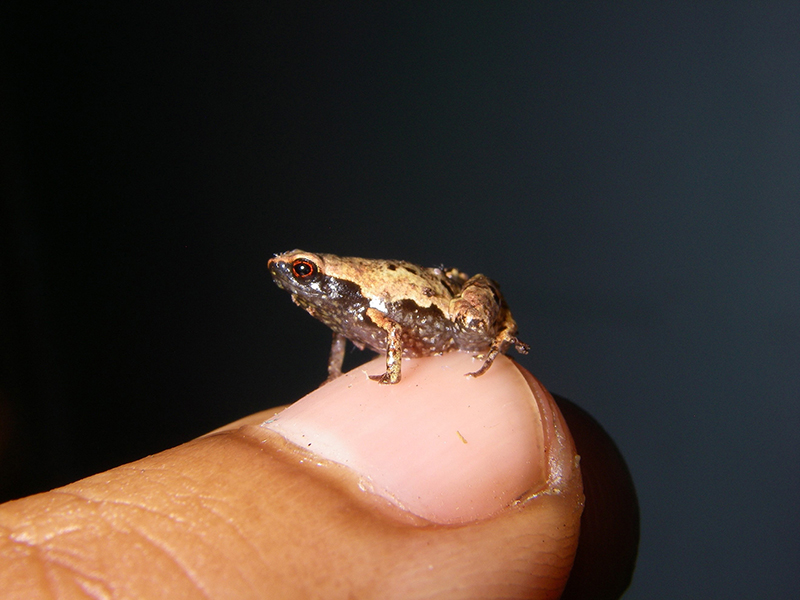
Mini mum lives in the leaf litter in the fragmented lowland forest along Madagascar’s east coast. (Photo: Andolalao Rakotoarison) -
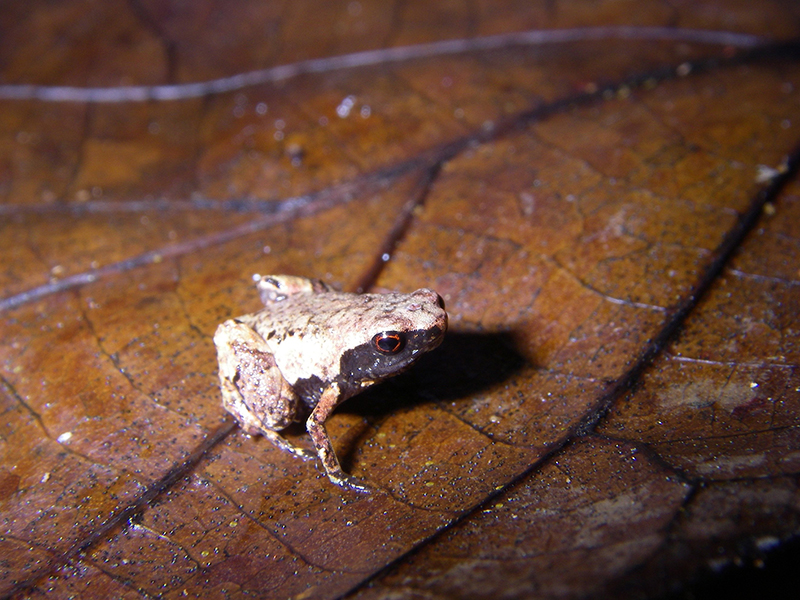
An adult male Mini mum, one of the world’s smallest frogs, rests on a fingernail with room to spare. (Photo: Andolalao Rakotoarison)
DNA library of apoid wasps published
Bavarian State Collection for Zoology
Another great success for the Bavarian State Collection for Zoology: 661 species of digger wasps, closely related to the bees, were genetically investigated through DNA barcoding. Together with colleagues from the Czech Republic, Bulgaria and Canada, ZSM scientists have published the results of an international project to create a genetic library of the so-called apoid wasps (Hymenoptera: Ampulicidae, Crabronidae, Sphecidae), also known as digger wasps, Spheciformes or “sphecids”. The article was published in the prestigious journal Molecular Ecology Resources.
Of the 661 examined wasp species 578 species occur in Europe, and 240 of them occur also in Germany. With the current DNA barcoding study, almost 90% of German digger wasps now have DNA barcodes. “This is the world’s first comprehensive genetic catalogue of this group of animals. They are closely related to the wild bees and are of great importance in the natural environment as natural antagonists of pest insects” explains Christian Schmid-Egger, first author of the digger wasp study. “Many digger wasps feed their larvae with aphids, bugs or other harmful organisms,” says the researcher. DNA barcode releases on other wasp groups will follow and shortly it will be possible to identify all bees and wasps in Germany by their DNA barcode.
Almost 4.000 specimens were evaluated by the scientists for the study. “Through such studies of the more prominent representatives of the local fauna we also capturing the many inconspicuous, little-known species for the first time, and discover and characterise thousands of new species in Germany,” says Dr. Stefan Schmidt, project manager and responsible for the Hymenoptera in the DNA barcoding project of the ZSM.
The DNA sequencing took place within the projects “Barcoding Fauna Bavarica” and “German Barcode of Life”. In these projects, the researchers from Munich identify genetic characteristics of all Bavarian or German animal species and make them freely available to experts and the public in an online library. The project is part of the “International Barcode of Life” project based in Canada. It has the ambitious goal of genetically detecting all animal species worldwide.
So far, the Munich researchers have generated barcode sequences of about 50.000 animal species worldwide. The Bavarian State Collection for Zoology has contributed around a quarter of a million samples to the international project, making it a leader in Europe. In the Hymenoptera (bees, wasps and ants), the ZSM is even far ahead in the world. “So far, we have been able to obtain barcodes of about half of the German Hymenoptera”, explains Stefan Schmidt, adding: “Being able to determine species quickly and reliably using DNA barcodes will be of crucial importance for future research projects that aim to shed light on the causes for the general decline of insects. ”
The Bavarian State Collection for Zoology houses more than 22 million zoological objects and, as part of the Bavarian Natural History Collections, is among the world’s largest natural history collections. The ZSM’s DNA barcoding projects receive financial support from the Bavarian State Ministry for Science and the Arts and the Federal Ministry of Education and Research.
Publication
https://onlinelibrary.wiley.com/doi/abs/10.1111/1755-0998.12963
Contact
Dr. Stefan Schmidt
Bavarian State Collection for Zoology (SNSB-ZSM)
Münchhausenstr. 21
81247 Munich
Tel.: +49 (0)89 8107 159
E-Mail: stefan.schmidt@snsb.de
-
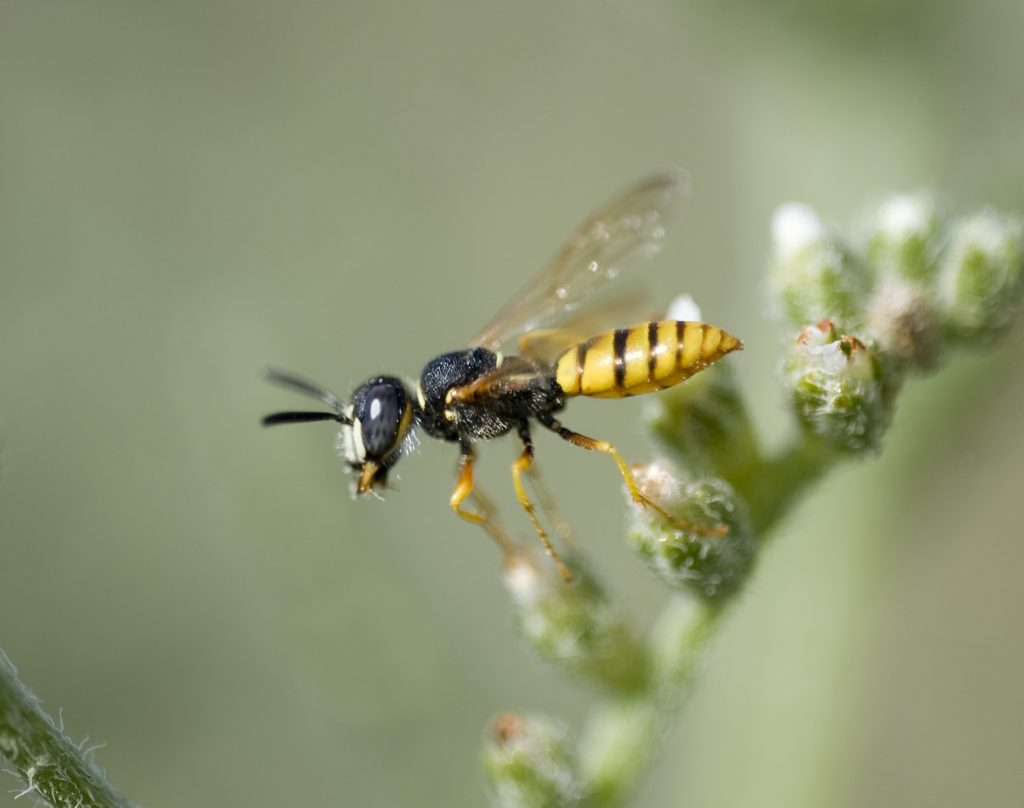
Apoid wasp (Philanthus triangulum). (Photo: Christian Schmid-Egger)
New insights into the diet of the extinct cave bears
Bavarian State Collection for Zoology
During the Late Pleistocene period (between 125,000 to 12,000 years ago) two bear species roamed Europe: brown bears (Ursus arctos) and extinct cave bears (Ursus spelaeus s.l.). It is generally assumed that fossil brown bears had a similar diet to extant brown bears, but the situation is not as clear cut for the cave bear. From its discovery up until now, researchers have debated its diet. However, a new paper in the journal Historical Biology sheds light on this issue. Two researchers from Germany and Spain found that the cave bear likely had largely herbivorous diet.
Cave bears show a distinct morphology in the cranium, mandible and teeth, which is related to its dietary specialization. To understand the diet of the cave bear, the researchers digitised the landmarks (biologically meaningful and recognisable points) on the mandible of the cave bears and extant bears. Using sophisticated statistical methods, called geometric morphometrics, the researchers compared the three-dimensional shape of the cave bear mandibles with that of extant bears.
“The analyses showed that cave bears evolved in a similar direction as the herbivorous giant panda”, explains Anneke van Heteren, lead-author of the study and Head of the Mammalogy section at the Bavarian State Collection of Zoology. “This implies that they had adapted to similar food types and were primarily vegetarian.”
“In this study, we used the newest statistical methods, which take into account both the size of the animals and their relatedness, which leads to very reliable results”, says Borja Figueirido, associate professor in the palaeontology group of the Department of Ecology and Geology at the University of Málaga (Spain) and co-author of the study.
The researchers also identified several future research directions. For example the researchers want to study the morphological, and consequently dietary, differences between the various cave bear subspecies. Additionally, they plan on performing three-dimensional computer simulations, called finite element analyses, on the cave bear skull and mandible to assess its bite force.
Publication:
van Heteren AH, Figueirido B. 2018. Diet reconstruction in cave bears from craniodental morphology: past evi-dences, new results and future directions. Historical Biology. DOI: 10.1080/08912963.2018.1547901,
https://doi.org/10.1080/08912963.2018.1547901
Contact:
Dr. Anneke H. van Heteren
Bavarian State Collection for Zoology (SNSB-ZSM)
Münchhausenstr. 21, 81247 Munich
Tel.: +49 (0)89 8107 125
E-Mail: vanHeteren@snsb.de
-
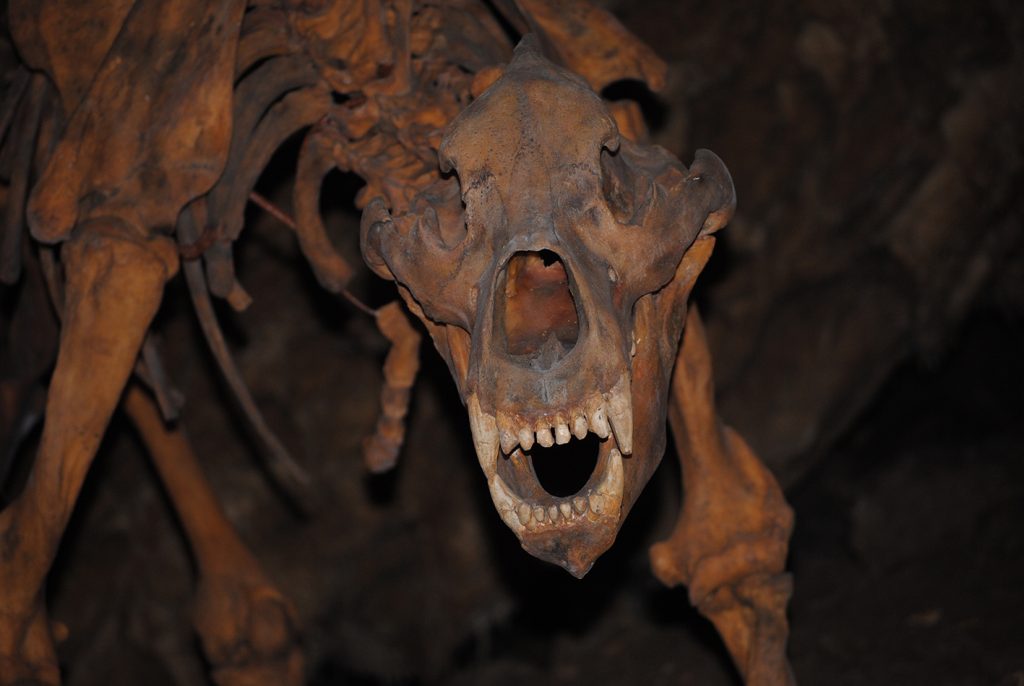
A mounted cave bear skeleton in the Harz Mountains. The canines, which remind of a meat-eater, are clearly visible, despite having a vegetarian diet. Photo: Anneke H. van Heteren (SNSB-ZSM)
Extinct vegetarian cave bear diet mystery examined
Bavarian State Collection for Zoology
During the Late Pleistocene period (between 125,000 to 12,000 years ago) two bear species roamed Europe: omnivorous brown bears (Ursus arctos) and the extinct mostly vegetarian cave bear (Ursus spelaeus). Until now, very little is known about the dietary evolution of the cave bear and how it became a vegetarian, as the fossils of the direct ancestor, the Deninger’s bear (Ursus deningeri), are extremely scarce.
However, a paper published in the journal Historical Biology, sheds new light on this. A research team from Germany and Spain found that Deninger’s bear likely had a similar diet to its descendant – the classic cave bear – as new analysis shows a distinct morphology in the cranium, mandible and teeth, which has been related to its dietary specialization of a larger consumption of vegetal matter.
To understand the evolution of the cave bear lineage, the researchers micro-CT scanned the rare fossils and digitally removed the sediments so as not to risk damaging the fossils. Using sophisticated statistical methods, called geometric morphometrics, the researchers compared the three-dimensional shape of the mandibles and skull of Deninger’s bear with that of classic cave bears and modern bears.
“The analyses showed that Deninger’s bear had very similarly shaped mandibles and skull to the classic cave bear”, explains Anneke van Heteren, lead-author of the study and Head of the Mammalogy section at the Bavarian State Collection of Zoology. This implies that they were adapted to the same food types and were primarily vegetarian. “There is an ongoing discussion on the extent to which the classic cave bear was a vegetarian. And, this is especially why the new information on the diet of its direct ancestor is so important, because it teaches us that a differentiation between the diet of cave bears and brown bears was already established by 500 thousand years ago and likely earlier”, says Mikel Arlegi, doctoral candidate at the Universities of the Basque Country and Bordeaux and co-author of the study.
Interestingly, researchers also found there are shape differences between the Deninger’s bears from the Iberian Peninsula and those from the rest of Europe, which are unlikely to be related to diet.
They have come up with three possibilities to explain these differences: 1) the Iberian bears are chronologically younger than the rest, 2) the Pyrenees, acting as natural barrier, resulted in some genetic differentiation between the Iberian bears and those from the rest of Europe, 3) there were multiple lineages, with either just one leading to the classic cave bear, or each lineage leading to a different group of cave bears.
“However, more fossils are necessary to test these three hypotheses,” Asier Gómez-Olivencia, Ikerbasque Researcher at the University of the Basque Country said.
Publication:
van Heteren AH, Arlegi M, Santos E, Arsuaga J-L, Gómez-Olivencia A. 2018. Cranial and mandibular morphology of Middle Pleistocene cave bears (Ursus deningeri): implications for diet and evolution. Historical Biology.
DOI: https://doi.org/10.1080/08912963.2018.1487965
Contact:
Dr. Anneke H. van Heteren
Bavarian State Collection for Zoology (SNSB-ZSM)
Münchhausenstr. 21, 81247 Munich
Tel.: +49 (0)89 8107 125
E-Mail: vanHeteren@snsb.de
-
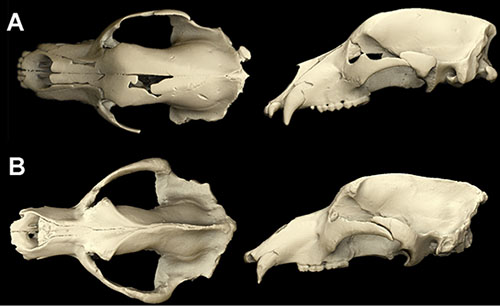
Micro-CT reconstructions of A) a subadult male skull of Deninger’s bear from the Iberian Peninsula in different views compared to B) an adult male skull of a classic cave bear. The skulls are similar in many respects, but the cave bear skull is larger and more robust. Image: Elena Santos (Centro Mixto UCM-ISCIII) / Taylor and Francis -
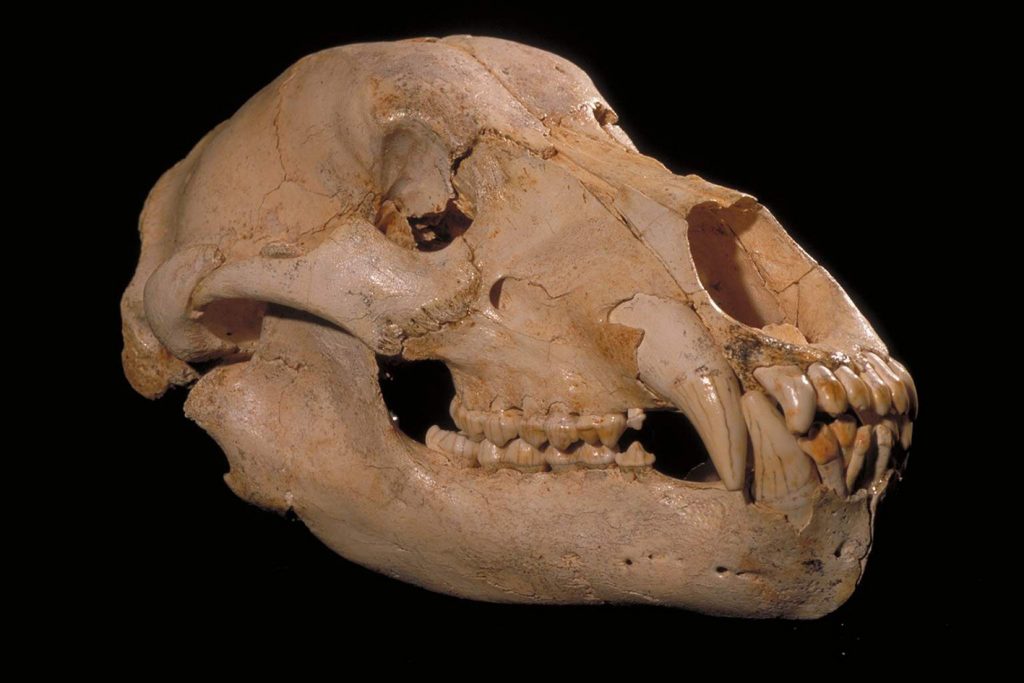
A complete skull and mandible of a Deninger’s bear from Sima de los Huesos in Spain. Photo: Javier Trueba (Madrid Scientific Films)
All the colours of the rainbow
Bavarian State Collection for Zoology
Madagascar is a chameleon paradise. More than 40% of the 206 known species are found exclusively on the island. A team of researchers based in Munich, Germany and Madagascar have now discovered three new species, among them a beautifully coloured rainbow chameleon, and a species with a large hole in the top of its skull. The three newly described species are all restricted to very small ranges, and are probably highly threatened. The research was published today in the Zoological Journal of the Linnean Society.
The diversity of Madagascar is unique. More than 420 reptile species are already known from this enormous island off the east coast of Madagascar, yet rainforested mountains across the island continue to yield new surprises: On an expedition carried out by the Zoologische Staatssammlung Munich (SNSB-ZSM) in a remote area of northern Madagascar, a team of researchers has discovered a spectacularly coloured rainbow chameleon, now dubbed Calumma uetzi. The gorgeous display colouration of the new species, which makes it easily distinguishable from all other species, is at its most magnificent when individuals of both sexes encounter one another. Then, the male tries to impress the female with a raucous display of yellow, violet, and red. Yet these flashy colours alone are no guarantee of success; an unreceptive female will turn on a male, mouth agape, darkening her own skin to the point of nearly black.
While the new rainbow chameleon is found only in the relatively remote forests of the north of Madagascar, a second new species was discovered in a dwindling forest fragment just beside one of the island’s most heavily travelled roads. This totally isolated forest fragment, which covers an area of scarcely 15 hectares, is the only known forest in which Calumma juliae occurs. “We hope,” says David Prötzel, a PhD student at LMU and lead author of the new study, “that this area can be protected as soon as possible. Recent imagery from Google Earth shows that, since our discovery of this chameleon just two years ago, a significant area of its tiny home has already been lost to deforestation.” Despite repeated visits by the researchers to the forest where this species is at home, only females have yet been found. “It will be really interesting to see what the males look like, and at what time of the year they can be found,” says Prötzel.
Only a single, male specimen of the third species described in the new study, Calumma lefona, is known. X-ray micro-CT scanning of the head of this specimen revealed a large hole in the roof of the skull, lying directly over the brain. A systematic search among the related chameleons revealed that a hole is present in this position in at least six other Calumma species. Curiously, the species with these holes all occur at elevations of more than 1000 m above sea level. The biological function of this skeletal anomaly is something of a mystery, but the researchers think it may help in thermoregulation.
“Based on everything we know about these species, they all have very small distribution ranges,” says Dr. Frank Glaw, who heads the Herpetology Section of the Zoologische Staatssammlung München, ”but many new protected areas are now being established in Madagascar, which will certainly be important for the future of Madagascar’s unique diversity.”
Publication:
Prötzel, D., Vences, M., Scherz, M.D., Hawlitschek, O., Ratsoavina, F. & Glaw, F. (2018). Endangered beauties: Micro-CT osteology, molecular genetics and external morphology reveal three new species of chameleons in the Calumma boettgeri complex (Squamata: Chamaeleonidae). – Zoological Journal of the Linnean Society.
https://doi.org/10.1093/zoolinnean/zlx112
Contact:
David Prötzel
LMU Munich
Bavarian State Collection for Zoology (SNSB-ZSM)
Münchhausenstr. 21, 81247 Munich
Tel.: +49 (0)176 63 20 05 13
E-Mail: david.proetzel@mail.de
Dr. Frank Glaw
Bavarian State Collection for Zoology (SNSB-ZSM)
Münchhausenstr. 21, 81247 Munich
Tel.: +49 (0)89 8107 114
E-Mail: frank.glaw@zsm.mwn.de
These and other photos in good resolution are available for download here:
http://www.markscherz.com/publicfiles/3newCalummas.zip
-
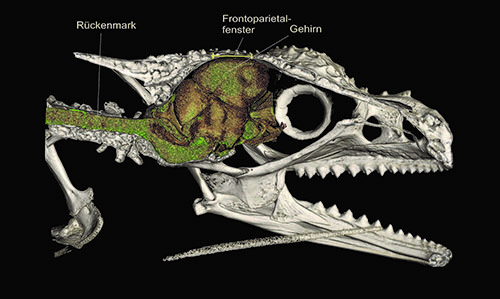
A micro-CT scan of Calumma gehringi reveals a large hole in the skull directly above the brain, called the frontoparietal window, which has been discovered in many mountain-dwelling chameleons. Animation: David Prötzel (SNSB-ZSM/LMU) -
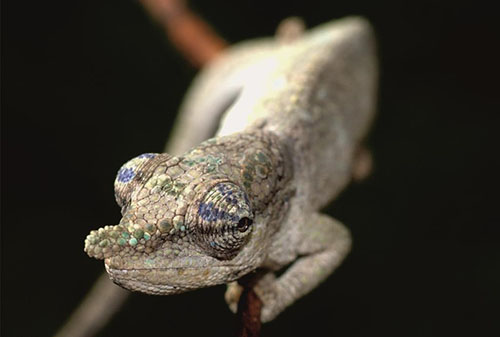
The new chameleon species Calumma juliae from a small forest fragment in eastern Madagascar. Photo: David Prötzel (SNSB-ZSM/LMU) -
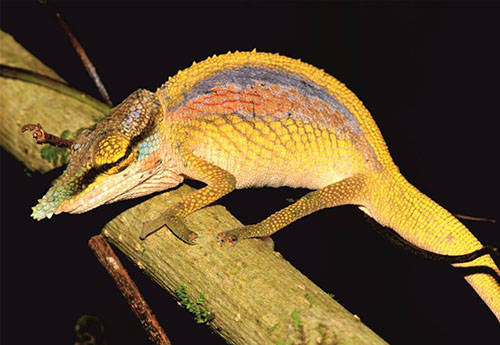
Male of the new chameleon species Calumma uetzi in splendid coloration. Photo: Frank Glaw SNSB-ZSM/LMU) -
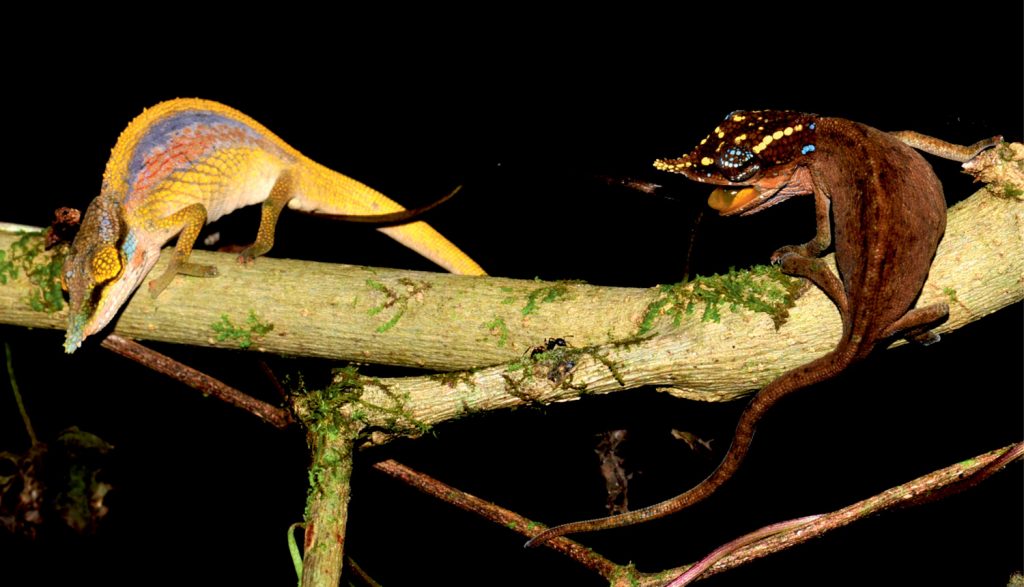
If a male of Calumma uetzi (left) meets a female (right) unwilling to mate, the mood can quickly become aggressive. While the male shows his magnificent coloration, the female darkens, develops colorful patterns on her head and threatens with an open mouth. Photo: Frank Glaw (SNSB-ZSM/LMU)
The eleventh Archaeopteryx
LMU Munich & Bavarian State Collection for Palaeontology and Geology
LMU/SNSB researchers report the first description of the geologically oldest fossil securely attributable to the genus Archaeopteryx, and provide a new diagnostic key for differentiating bird-like dinosaurs from their closest relatives.
Some 150 million years ago in what is now Northern Bavaria, Archaeopteryx – the oldest bird species yet discovered – inhabited a subtropical environment characterized by reef islands and lagoons set in a shallow sea that was part of the primordial Mediterranean. All the specimens of Archaeopteryx so far recovered were found in the valley of the Altmühl River, in geological settings that represent this habitat – the Jurassic Solnhofen Archipelago. The latest find was made there in 2010, and this new specimen has now been analyzed by a team of researchers led by LMU/SNSB paleontologist Oliver Rauhut, a professor in the Department of Earth and Environmental Sciences who is also affiliated with the Bavarian State Collections for Paleontology and Geology in Munich. Stratigraphic analysis of the find locality reveals that the fossil is the oldest known representative of the genus Archaeopteryx.
“Specimens of Archaeopteryx are now known from three distinct rock units, which together cover a period of approximately 1 million years,” Rauhut explains. Notably, the oldest example exhibits features that were so far not known from the other specimens. “Among other things, they reveal that Archaeopteryx was very similar to advanced predatory dinosaurs in many respects,” says Rauhut. Moreover, in the new study, he and his colleagues provide a diagnosis that allows to reliably distinguish Archaeopteryx from its closest relatives, both non-avialan theropod dinosaurs and basal birds. This key will be very valuable, as a whole series of bird-like predatory dinosaurs has been described in recent years, mainly from China, which has greatly complicated the taxonomical classification of the group.
The new specimen is the 12th fossil to be attributed to the genus. However, in a study published in the online journal BMC Evolutionary Biology last year, Rauhut’s group reported that the first of these to come to light – the so-called Haarlem specimen discovered in 1861 – does not actually belong to the group. This result thus reduces the number of Archaeopteryx fossils to 11, although some doubts remain concerning the assignment of two of these. This underlines the necessity for a diagnosis to clearly identify Archaeopteryx.
Moreover, the investigation of the 11th specimen demonstrates that the known specimens span a remarkable range of anatomical variation. Potential explanations for the broad spectrum of variation extend from intraspecific developmental polymorphism to evolutionary differentiation, i.e., the possibility that the fossil material so far recovered represents more than one species. “The high degree of variation in the teeth is particularly striking – none of the specimens shows the same pattern of dentition as any other, which could reflect differences in diet,” Rauhut points out. “This is very reminiscent of the famous case of Darwin’s finks on the Galapagos, which show remarkable variation in their beak shapes. It is even conceivable that this primeval bird genus might, in a similar fashion, have diversified into several specialized forms on the islands of the Solnhofener Archipelago. In that case, the Archaeopteryx fossils could represent a species flock, a Jurassic analog of Darwin’s finches.”
Publication:
Oliver Rauhut, Christian Foth and Helmut Tischlinger: The oldest Archaeopteryx (Theropoda: Avialiae): a new specimen from the Kimmeridgian/Tithonian boundary of Schamhaupten, Bavaria. In: PeerJ 2018
Contact:
PD Dr. Oliver Rauhut
Bavarian State Collection for Palaeontology and Geology (SNSB-BSPG)
Richard-Wagner-Str. 10
80333 Munich
Tel.: +49 (0)89 2180 6645
Fax: +49 (0)89 2180 6601
E-Mail: o.rauhut@lrz.uni-muenchen.de
-
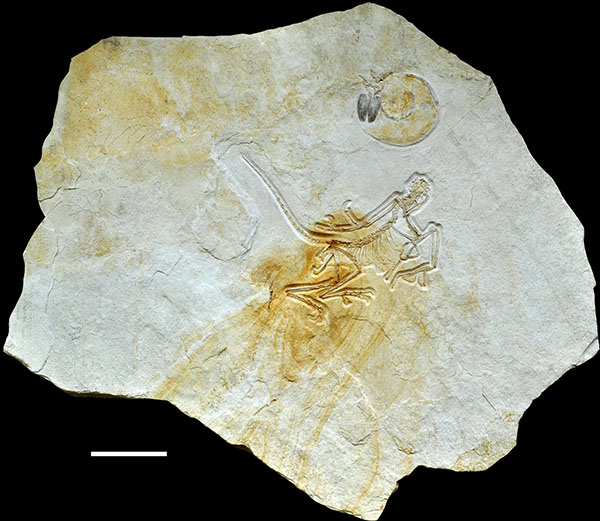
The last discovered, eleventh specimen of the prehistoric bird Archaeopteryx. (Photo: O. Rauhut, SNSB-BSPG)
Luminescent lizards – Bone-based fluorescence in chameleons
Bavarian State Collection for Zoology
Chameleons are famous for their colour language. Using colour changes and colourful patterns they communicate with their conspecifics. A research team from Munich, Germany, has now found that many chameleons have bony tubercles on their head, which glow blue under UV light and form impressive patterns. The skin in this area is very thin and transparent, so that UV light passes through a ‘window’ directly onto the bone and is converted there into visible, blue light. The function of this fluorescence is still unclear, but the researchers suspect that they are private signals for species recognition. The work was published today in the journal Scientific Reports.
Biogenic fluorescence is mainly known from marine organisms, but is rare in terrestrial vertebrates. “So we could hardly be-lieve it when we illuminated the chameleons in our collection with a UV lamp, and almost all species showed blue, previously invisible patterns on the head, some even over the whole body”, says David Prötzel, lead author of the new study and PhD student at the Bavarian State Collection of Zoology (SNSB-ZSM).
To understand the phenomenon, the researchers used a variety of modern methods. Micro-CT scans showed that the pattern of fluorescence exactly matched the distribution of tubercles pattern on the skull. The tissue analyses yielded another sur-prise: “Our histological 3D reconstruction shows that the skin covering the tubercles on the skull is very thin and consists only of a transparent layer of epidermis”, explains Martin Heß from the BioCenter of the Ludwig-Maximilians-University Munich (LMU). These patches effectively act as windows that enable UV light to reach the bone, where it is absorbed and then emitted again as blue fluorescent light.
“It has long been known that bones fluoresce under UV light, but that animals use this phenomenon to fluoresce themselves has surprised us and was previously unknown”, says Frank Glaw, Curator of Herpetology at the Bavarian State Collection of Zoology (SNSB-ZSM).
The tubercles fluoresce under UV light to form distinct patterns that represent certain species or species groups. In addition, the males in most species of the genus Calumma have significantly more fluorescent tubercles than the females. Therefore, the researchers suspect that this fluorescence is not a mere coincidence, but helps the chameleons to recognize conspecifics, and presents a consistent pattern in addition to their skin-based colour language – especially as blue is a rare colour and easily recognisable in the forest. However, as so often happens with fluorescence phenomena, this biological function has not yet been proven. The impressive signals of the chameleons, however, show that there is still much to discover beyond human perception.
Publication:
Prötzel, D., M. Heß, M. D. Scherz, M. Schwager, A. van’t Padje & F. Glaw (2018): Widespread bone-based fluorescence in cha-meleons. – Scientific Reports, DOI: 10.1038/s41598-017-19070-7
Contact:
David Prötzel
Bavarian State Collection for Zoology (SNSB-ZSM)
Münchhausenstr. 21, 81247 Munich
Tel.: +49 (0)176 63 20 05 13
E-Mail: david.proetzel@mail.de
Dr. Frank Glaw
Bavarian State Collection for Zoology (SNSB-ZSM)
Münchhausenstr. 21, 81247 Munich
Tel.: +49 (0)89 8107 114
E-Mail: frank.glaw@zsm.mwn.de
-
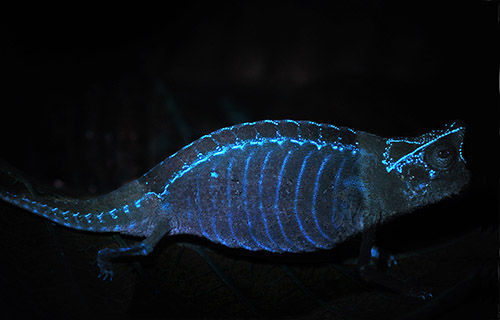
In some chameleons, such as Brookesia superciliaris, fluorescence extends even all across the body. Photo: David Prötzel (ZSM/LMU) -
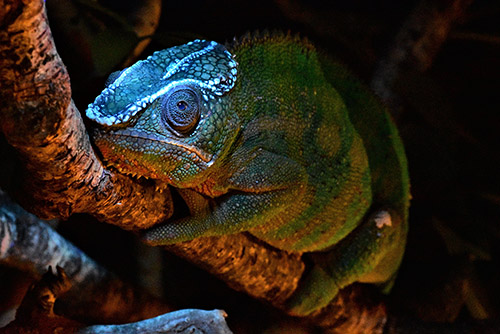
Also the well-known panther chameleon (Furcifer pardalis) which is also popular as a pet shows fluorescent crests on the head. Photo: David Prötzel (ZSM/LMU)
26 new dwarf frogs from Madagascar
Bavarian State Collection for Zoology
Madagascar is a famous hotspot of biodiversity. 319 species of frogs are officially known from this island off the East African coast. Recent studies have shown that at least 200 additional new species are still awaiting scientific description and naming. An international team has now described 26 new species of dwarf frogs (genus Stumpffia) in a single publication (Vertebrate Zoology 67: 271-398), some of them are among the smallest amphibians in the world.
“Although dwarf frogs can be locally abundant, they have been largely neglected for a long time and were often overlooked by scientists” says the Malagasy biologist Andolalao Rakotoarison who led the study at the Technical University of Braunschweig. “Only three species were recognized in the year 1991 and today there are 41 species!”
Most of these dwarf frogs reach a body length of 10-20 mm when adult. “One of the new species, Stumpffia contumelia, measures only 8-9 mm and is among the smallest amphibians in the world” says Frank Glaw from the Bavarian State Collection of Zoology at Munich.
Due to their extreme miniaturization many species show an extraordinary reduction of their fingers and toes. In some cases only a long middle finger is retained, reminding an insulting gesture – which also explains the species name Stumpffia obscoena.
The small Stumpffia species usually live hidden in the leaf litter of the rainforest of Madagascar and their biology is still poorly known. “Several species show parental care and build foam nests, where the tadpoles develop into froglets. But now we know that this reproductive mode is not universal and that jelly egg clutches can even be found in empty snail shells” says Jörn Köhler of the Hessisches Landesmuseum in Darmstadt.
“Its the combination of genetic, morphological and ethological studies which allowed us to identify and describe so many new species” added Miguel Vences of the Technical University of Braunschweig.
“We have dedicated one of the new species (Stumpffia davidattenboroughi) to the famous natural history broadcaster Sir David Attenborough who has become an ambassador for threatened wildlife” explains Angelica Crottini of the University of Porto. “This extremely rare species is so far known only from a single specimen.”
Many of the newly described species have small distribution ranges and several might be threatened by extinction. The Malagasy government has greatly increased the number and surface of protected areas in the last years, and still continues to designate new nature reserves. Despite this positive development, the country still suffers from illegal slash-and-burn agriculture and illegal logging, threatening Madagascar’s unique biodiversity.
Publication:
Rakotoarison, A., M. D. Scherz, F. Glaw, J. Köhler, F. Andreone, M. Franzen, J. Glos, O. Hawlitschek, T. Jono, A. Mori, S. H. Ndriantsoa, N. Rasoamampionona Raminosoa, J. C. Riemann, M.-O. Rödel, G. M. Rosa, D. R. Vieites, A. Crottini & M. Vences (2017): Describing the smaller majority: integrative taxonomy reveals twen-ty-six new species of tiny microhylid frogs (genus Stumpffia) from Madagascar. – Vertebrate Zoology 67 (3): 271-398
Contact:
Dr. Frank Glaw
Bavarian State Collection for Zoology (SNSB-ZSM)
Münchhausenstr. 21, 81247 Munich
Tel.: +49 (0)89 8107 114
E-Mail: frank.glaw@zsm.mwn.de
-
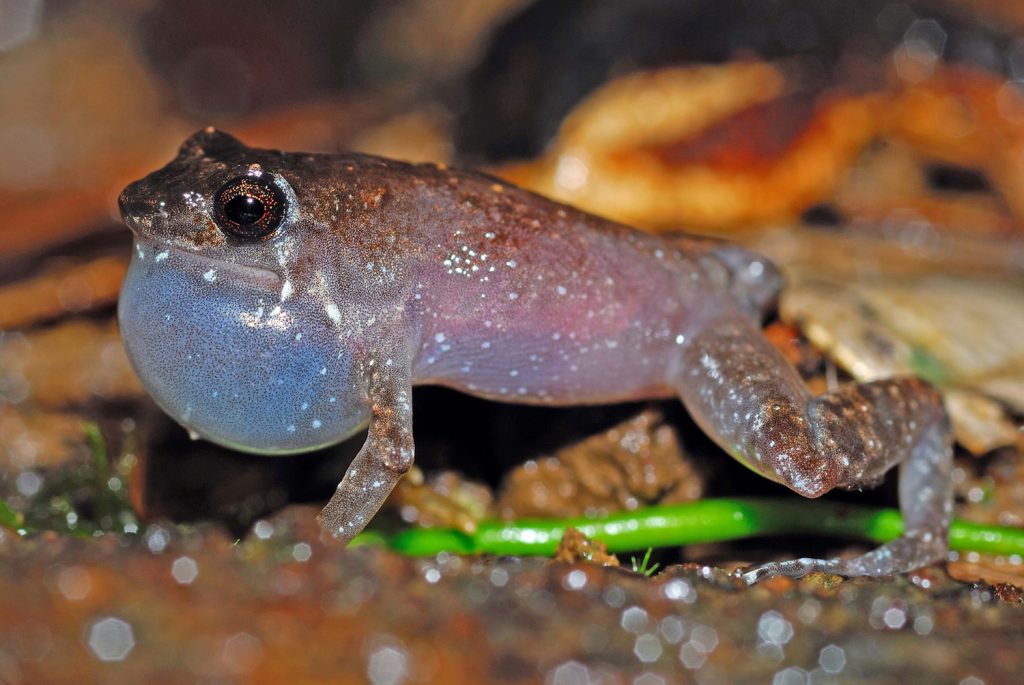
Stumpffia pardus: Many Stumpffia species are characterized by peeping calls, usually emitted from leaf litter. Photo: Jörn Köhler -
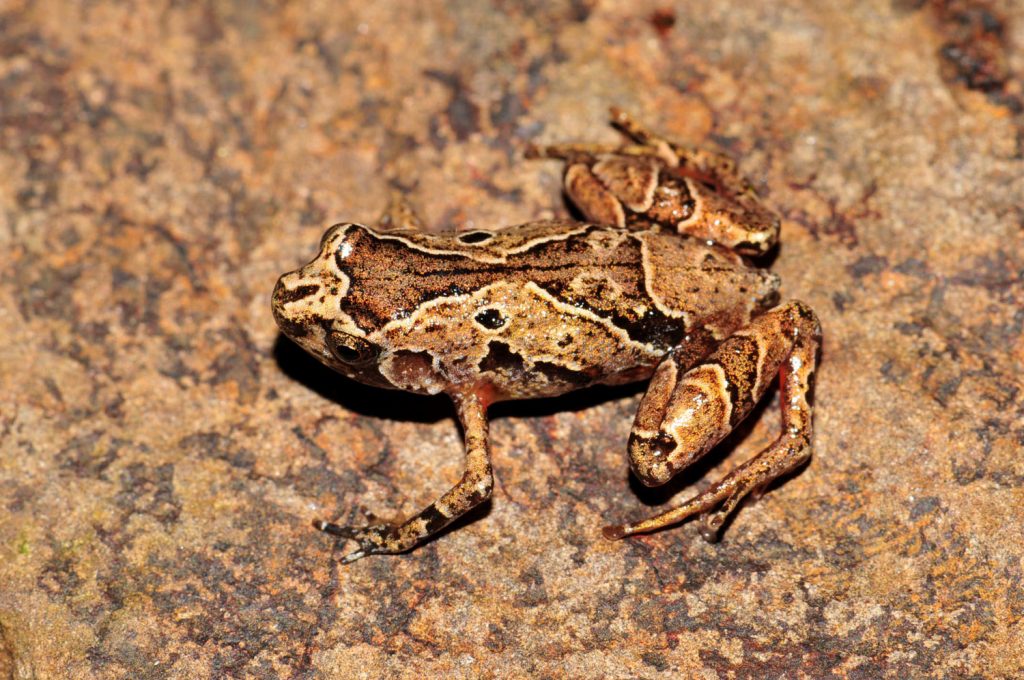
Stumpffia miovaova can show very different patterns on its back. Photo: Frank Glaw (SNSB-ZSM) -
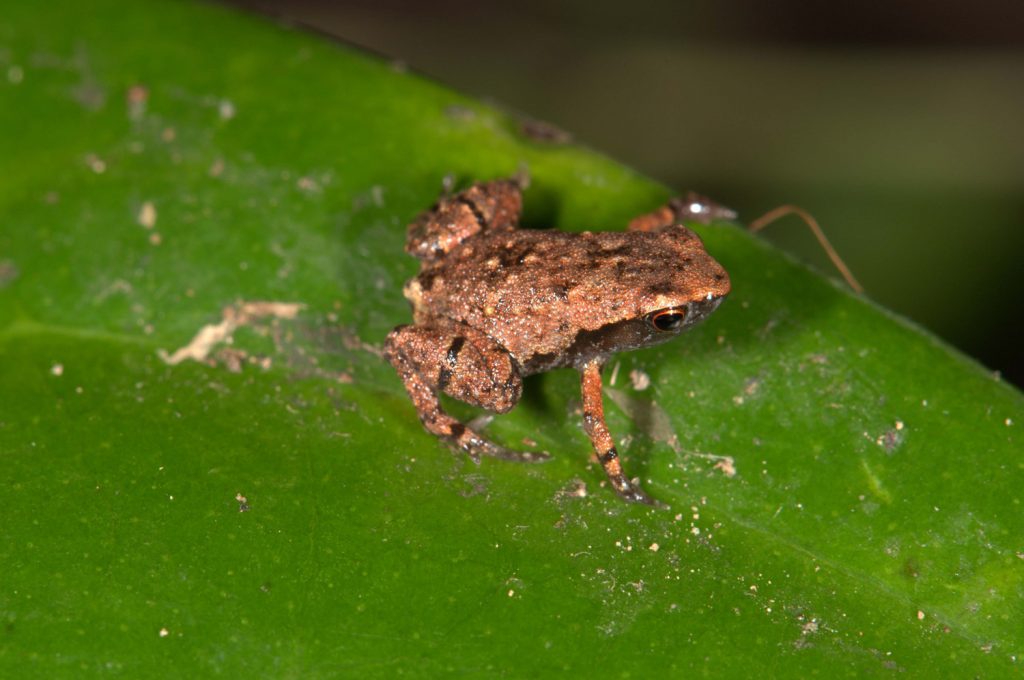
8-9 mm body length, this newly discovered dwarf frog (Stumpffia contumelia) is one of the smallest amphibians in the world. Photo: Frank Glaw (SNSB-ZSM)
Molecular clock: age of volcanic island is redefined using geckos
Bavarian State Collection for Zoology
Researchers from the Bavarian State Collection of Zoology, Munich, studied a gecko’s colonization of islands in the Western Indian Ocean. By applying molecular dating of a family tree of gecko species (“molecular clock”) they found that the volcanic island of Grand Comoro is likely much older than previously estimated based on geological data. They also found that the colonization of oceanic islands by terrestrial reptiles much more common in this region than previously thought, sometimes involving drifting across several thousand kilometers of open ocean.
Oceanic islands that have never had any connection with any other land-mass have been considered natural laboratories of evolutionary research since the times of Charles Darwin. Sometimes land-living animals drift across the open sea on fallen trees or other natural rafts and, with a big portion of luck, land on such islands. Some of the lucky ones start new population, which begin their independent evolution. The DNA, the genetic code of all organisms, continuously changes, which leads to the origin of new species at a very large time scale. This rate of change remains relatively constant in certain parts of a genome, which allows scientists to estimate the evolutionary ages of populations and species based on the number of such mutations. One such “molecular clock” was now established for Madagascar clawless geckos (genus Ebenavia), which are also found on some of the smaller islands in the Western Indian Ocean.
Geologists had previously estimated the ages of islands inhabited by the geckos to be between 2 and 15 million years. The researchers from Munich and their collaborators found that the geckos were accordingly younger than the specific islands they inhabited – the molecular dating confirmed the geological dating. But there was one exception: Based on geological data the estimated age of the island of Grand Comoro was not more than 500,000 years, while the molecular gecko clock showed an age of 3 to 5 million years.
Apparently, the geckos of Grand Comore already existed long before the origin of their island. How is this possible? “There are several possibilities”, explains Oliver Hawlitschek, leading author of the study: “The geckos might have lived on an older island that is now submerged – a part of the puzzle that would be lost to us.” A much more likely explanation is that the previous age estimates are not very accurate, because such geological dating always relies on rocks that are accessible to geologists. Grand Comoro is an active volcano of 2,360 meters, and most of its surface is covered in lava resulting from relatively recent eruptions. It is therefore possible that the oldest rocks are not accessible and the island appears much younger than it actually is.
This is a case in which the age estimation based on a molecular clock may be more reliable and provides an independent validation for geological data. Hawlitschek continues: “The global application of this method may reveal many more surprises. Several biological studies in recent years have raised doubts on the accuracy of the geological age estimates of some islands, but only now molecular clocks have become sufficiently advanced to provide clear evidence to examine some of the more dubious dates.”
The genetic analysis of the little lizards yields even more insights. Geckos from Mauritius Island are genetically identical to those from Tamatave, the largest port city of eastern Madagascar. Apparently, the reptiles reached Mauritius as stowaways on a ship.
Reptiles have travelled across the Indian Ocean remarkably often and over astonishing distances, long before human seafarers took to the oceans. The researchers have reviewed such cases in collaboration with the Spanish Center for Marine and Environmental Research (CMIMA). “We have evidence for 48 colonization events of oceanic islands by terrestrial reptiles across distances mostly between 100 to 1,000 km in the Western Indian Ocean alone”, says Frank Glaw from the Bavarian State Collection of Zoology. He continues: “They drift on the open ocean, completely dependent on winds and marine currents. Some species have travelled more than 5,000 kilometers and crossed almost the entire Indian Ocean!”
More information about the molecular clock: http://oliverhawlitschek.weebly.com/uploads/8/4/9/7/84974956/molekulare_uhr_de.png
Publications:
Hawlitschek, O., Toussaint, E. F. A., Gehring, P.-S., Ratsoavina, F. M., Cole, N., Crottini, A., Nopper, J., Lam, A. W., Vences, M., Glaw, F. (2016): Gecko phylogeography in the Western Indian Ocean region: the oldest clade of Ebenavia inunguis lives on the youngest island. Journal of Biogeography. doi: 10.1111/jbi.12912
Hawlitschek, O., Ramírez Garrido, S., Glaw F. (2016): How marine currents influenced the widespread natural overseas dispersal of reptiles in the Western Indian Ocean region. Journal of Biogeography. doi: 10.1111/jbi.12940
Contact:
Oliver Hawlitschek
Bavarian State Collection for Zoology (SNSB-ZSM)
Münchhausenstr. 21, 81247 Munich
Tel.: +49 (0)170 903 69 94
E-Mail: oliver.hawlitschek@gmx.de
Dr. Frank Glaw
Bavarian State Collection for Zoology (SNSB-ZSM)
Münchhausenstr. 21, 81247 Munich
Tel.: +49 (0)89 8107 114
E-Mail: frank.glaw@zsm.mwn.de
-
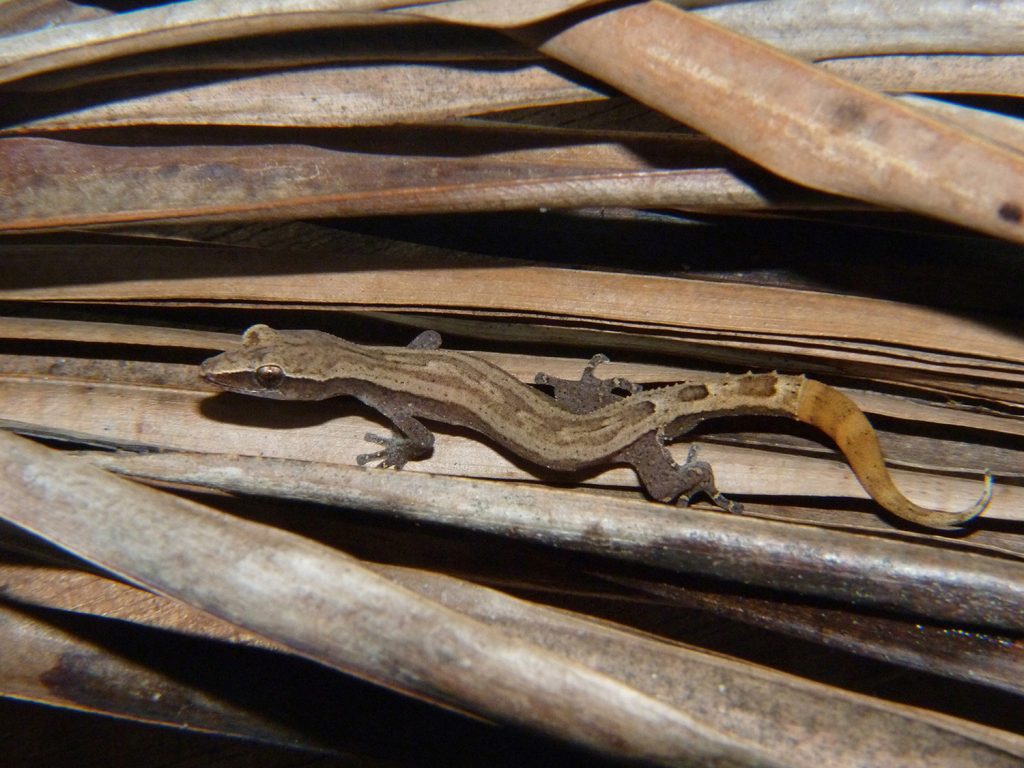
The Madagascar clawless gecko (genus Ebenavia) is small and not very conspicuous, but tells an interesting story. Photo: O. Hawlitschek -
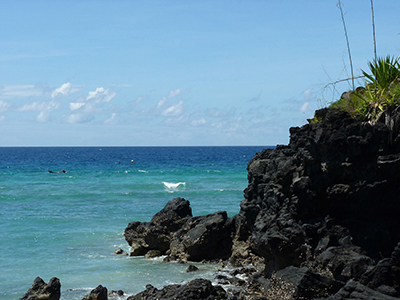
Mount Karthala is Grand Comoro Island’s active volcano. Most oceanic islands, including Hawai’i, the Canary Islands, and Mauritius, are volcanic in nature. Photo: O. Hawlitschek -
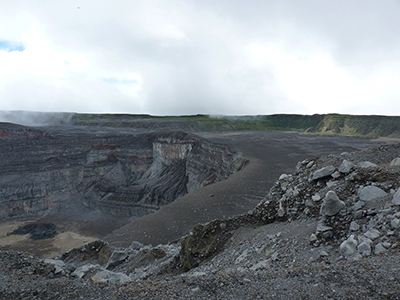
Mount Karthala is Grand Comoro Island’s active volcano. Most oceanic islands, including Hawai’i, the Canary Islands, and Mauritius, are volcanic in nature. Photo: O. Hawlitschek
Thievish hoverfly steals prey from carnivorous sundews
Bavarian State Collection for Botany
Hoverflies (also called flower flies), are conspicuous flower visitors of the dipteran family Syrphidae which often mimic the colouration of bees and wasps for protection, however they are totally stingless insects. The larvae (“maggots”) of most species are known to be beneficial organisms that feed on aphids and related insect pests of plants. However, aphids are relatively rare in the tropics of South America, also known as Neotropics, where a huge number of hoverfly species occur. Predatory larvae of some hoverfly species there hence became vegetarians, their larvae feeding on pollen or leaves, while larvae of other species prey on small adult flies, or larvae of various other insects. However, barely anything is known about the biology and diet of most known hoverflies species.
The more exciting is the discovery which has now been made in central Brazil, and was published by a team of German, Brazilian and Spanish botanists and entomologists in the journal PLOS ONE. The scientists discovered fly larvae that live on probably one of the most dangerous habitats for insects, namely the highly sticky leaves of carnivorous sundew plants. Covered by numerous tentacles that secrete a glistening, sticky mucilage, the sundews’ leaves constitute deadly traps for most insects – but where other insects get stuck and become a quick snack of this carnivorous plant, these perfectly adapted larvae can move effortlessly. Moreover, they feed on the insect prey that was caught by the sundews. The observed larvae spend their entire life on the sticky leaves of the plant as a commensal, feeding from the sundews’ meal. They do this without being digested themselves by the plant, before they finally pupate – attached to the non-sticky and therefore harmless leaf underside of the plant. The adult hoverflies that emerged from the pupae were identified as Toxomerus basalis (both by morphological characters, as well as genetically by DNA sequencing). Remarkably, although this Brazilian hoverfly species has been known to scientists for 180 years (it was described in 1836), its larvae, feeding habits and biology were hitherto unknown and have now been documented for the first time.
Larvae of this larcenous fly have even been found on several different sundew species and in several states of Brazil, including on the recently discovered “Facebook-sundew” Drosera magnifica. “It could well be that this hoverfly is much more widespread than previously known, or that also other species of the genus Toxomerus show this interesting behavior,” said Fernando Rivadavia, who discovered the peculiar larvae. This discovery is a sensation in several respects: “This is the first known case of insect residents on sundews in South America, from where animal inhabitants of carnivorous plants were thus far only known from pitcher plants”, says botanist Andreas Fleischmann of the Botanical State Collection of Munich and author of the study. The biology of this unusual symbiosis is now to be further explored. “Moreover, this so-called kleptoparasitism represents a novel feeding mode for hoverflies, which is ecologically and evolutionarily remarkable,” said Ximo Mengual, entomologist and hoverfly specialist from the Museum Alexander Koenig in Bonn.
Publication:
Fleischmann, A., Rivadavia, F., Gonella, P.M., Pérez-Bañón, C., Mengual, X. & Rojo, S. (2016). Where is my food? Brazilian flower fly steals prey from carnivorous sundews in a newly discovered plant-animal interaction. PLOS ONE, doi: 10.1371/journal.pone.0153900
Contact:
Dr. Andreas Fleischmann
Bavarian State Collection for Botany (SNSB-BSM)
Menzinger Str. 67, 80638 München
Tel.: +49 (0)89 17861 240
E-Mail: fleischmann@bsm.mwn.de
-
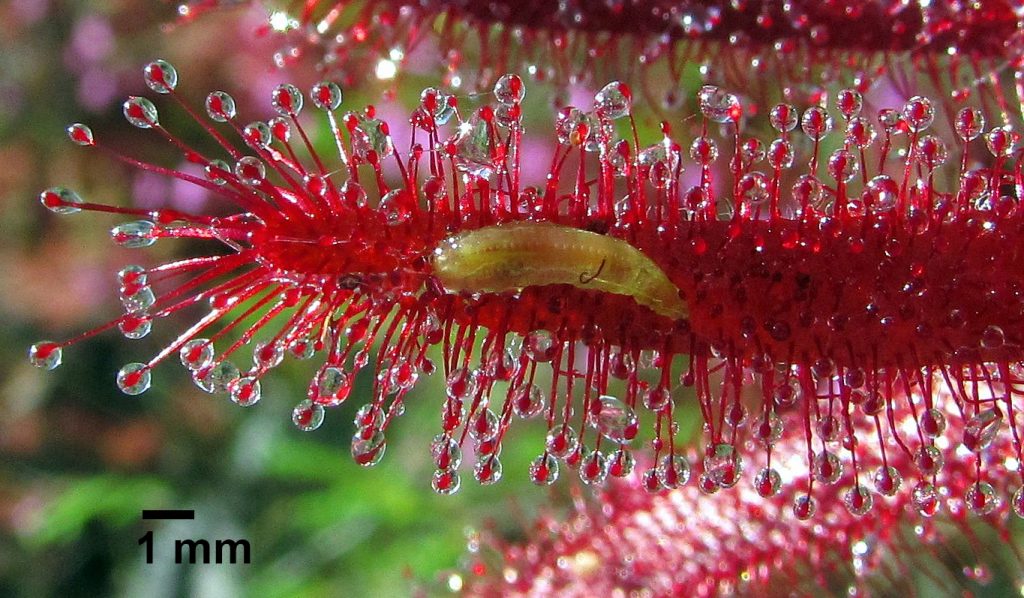
Schwebfliege Toxomerus basalis, Larve auf dem Blatt des fleischfressenden Sonnentaus Drosera graomogolensis in Minas Gerais, Brasilien (Foto: Paulo M. Gonella, University of São Paulo, SPF) -
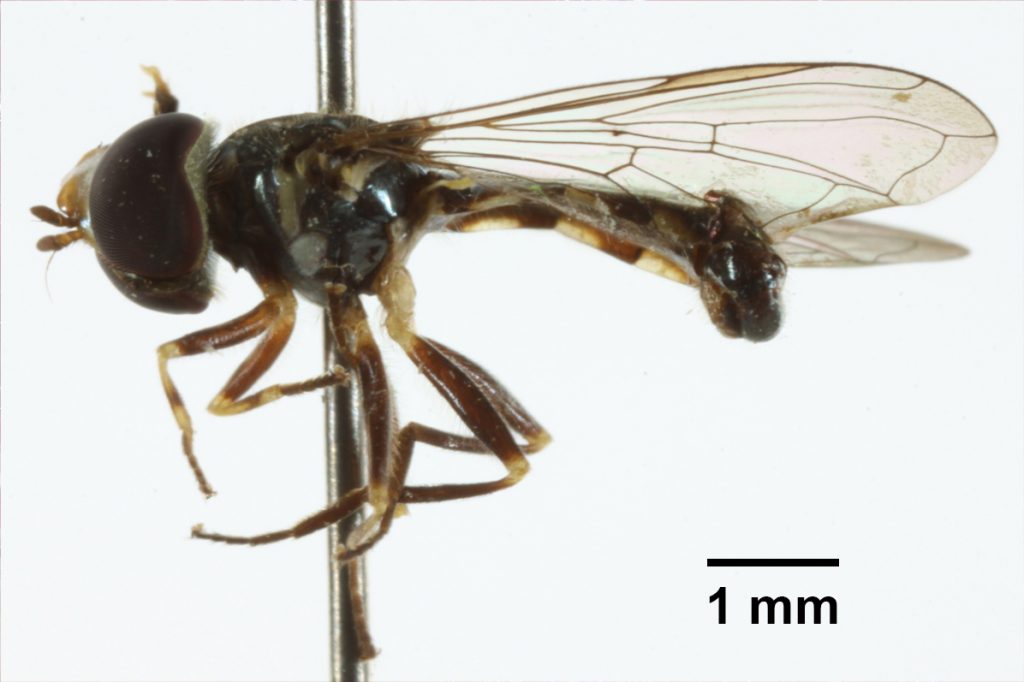
Schwebfliege Toxomerus basalis, Adultes Männchen (Foto: Jeff Skevington, Canadian National Collections, CNC)
Orientation in an ocean of data – more than a data portal
SNSB IT Center
The project GFBio is funded with additional 5.8 million € by the ‚Deutsche Forschungsgemeinschaft‘ to continue the setup of a national data infrastructure in the field of biological and environmental sciences.
Innovative research and new techniques in the field of environmental and ecosystem sciences not only lead to new understandings, but also to a flood of data. Now it is crucial to learn to manage this ocean of data. The aim is the long term availability of data in open access for users and interested public. This is an essential precondition for subsequent re-use of the data, e.g. to study changes in plant, fungal and animal community compositions caused by climate change over decades. The better the data are accessible, the more profound are the scientific results and the resulting options of action.
By providing funds of 5.8 million €, the Deutsche Forschungsgemeinschaft recognizes the importance of managing scientific data properly. The funding is the basis for the second phase of the German Federation for Biological Data – GFBio (http://www.gfbio.org). The joint project involves 19 partners from all over Germany. The Bavarian Natural History Collections with the SNSB IT Center (http://www.snsb.info) is one of them. One main objective of GFBio is to integrate already existing data infrastructures, e. g., research data centers for collection, molecular and ecological data and provide access to their data by a central portal. Moreover, GFBio aims to offer comprehensive services and applications for the management of data. The GFBio-specific upgrading of Diversity Workbench tools at the data center in Munich is part of this concept (http://www.diversityworkbench.net). The project supports scientists in project planning, data collection and visualization as well as subsequent long-term archiving in one of the affiliated data centers. This holistic approach and the integration of genomic, environmental and collection data are internationally unique.
The recently approved grants enable GFBio to refine and upgrade its services offered since December 2013. In this way, GFBio will establish itself as the main German contact point for biological and environmental data management in the long run, making high quality data accessible quickly to address future scientific questions more effectively.
Further information:
Diepenbroek, M., Glöckner, F., Grobe, P., Güntsch, A., Huber, R., König-Ries, B., Kostadinov, I., Nieschulze, J., Seeger, B., Tolksdorf, R., Triebel, D. (2014). Towards an Integrated Biodiversity and Ecological Research Data Management and Archiving Platform: The German Federation for the Curation of Biological Data (GFBio). In: Plödereder, E., Grunske, L., Schneider, E. & Ull, D. (eds): Informatik 2014 – Big Data Komplexität meistern. GI-Edition: Lecture Notes in Informatics (LNI) – Proceedings 232: 1711-1724. Köllen Verlag, Bonn.
Contact:
Dr. Dagmar Triebel, Tanja Weibulat
SNSB IT Center
Menzinger Str. 67
80638 Munich
Tel.: +49 (0)89 17861 265
E-Mail: triebel@bsm.mwn.de
http://www.snsb.info
Largest carnivorous sundew of the Americas discovered on Facebook
Bavarian State Collection for Botany
An international team of botanists from Brazil, USA and the Botanische Staatssammlung München, Germany described a new species of carnivorous sundew (Drosera, Droseraceae), which was discovered on a not-so-remote mountain in Southeastern Brazil. The new species, which has been named Drosera magnifica (the magnificent sundew), turned out to be the largest of its kind known from the Americas, attaining a total length of 1.5m. The spectacular thread-like carnivorous foliage is up to 24 cm long forming medusa-like clusters of sticky, glistening leaves.
Although discoveries of new species are not unusual, even nowadays, the way in which this new giant sundew species was discovered is exceptional: it is the first time that a new plant species has been discovered from a photograph which was posted on the social network Facebook. A local orchid and native flora enthusiast posted the pictures in 2013, taken while exploring mountains near his hometown in Minas Gerais state. The pictures were picked up and immediately identified as a new sundew species by carnivorous plant experts Fernando Rivadavia and Paulo Gonella.
The new species has now been published in the renowned taxonomical journal Phytotaxa, including a detailed scientific description of the plant and a brief history of its unusual discovery.
“The genus Drosera, also known as sundews, is the largest group of carnivorous plants, and comprises approximately 250 species, most of them found in the Southern Hemisphere, especially in Australia, South Africa and Brazil”, says Dr. Andreas Fleischmann from the SNSB, Botanische Staatssammlung München, senior author of the publication. Sundews produce leaves that are covered with carnivorous glands, so-called tentacles, which produce sticky droplets of a viscous fluid. These glistening red tentacles constitute visually attractive yet deadly traps for small arthropods, especially small flying insects. Indeed, “even under the humid, foggy and rainy conditions on the mountain summit where it grows, the long thread-like leaves of Drosera magnifica surprisingly were covered with lots of small insects”, says sundew expert Fernando Rivadavia, who studied the plants in nature in 2013, soon after its discovery on Facebook. In most Drosera species, the tentacles and even the leaves are capable of movement, and will bend over the caught prey, entangling it with more glue and adhering it to more glands. The insects then suffocate and are slowly digested by enzymes secreted by the plant. This ensures a nutrient boost from its carnivorous diet, supplementing the nutrient-poor soils on which most carnivorous plant species usually grow.
It is interesting that such a large and conspicuous plant species has remained undiscovered until now, even though it was not growing on a terribly remote Amazonian mountain. This is an example of how little is still known about Brazilian biodiversity, even in the more well-developed parts of the country.
Despite being quite distinctive and unusual, the new species also shares some similarities with two other sundew species which were discovered an named 200 years ago found on other highlands over 200 km away, also in Southeastern Brazil.
Sadly, the magnificent sundew is already threatened with extinction. The new species was only found on a single mountain top rising above small ranches, coffee farms, and eucalyptus plantations. Invasive plant species were observed almost all the way to the top of the mountain, which is almost completely deforested around the base and is currently not protected by any kind of nature preserve or national park. Nearby mountains were explored by the scientists, but no other populations of this sundew have been found yet. “We hope that the discovery of such an extraordinary new plant species will bring attention to the conservation of this fragile ecosystem. It was a surprise to all of us that this region of Minas Gerais was so poorly botanized, potentially harboring several other undescribed new plant species”, states Paulo Gonella, from the Systematic Botany Labs of the University of São Paulo, Brazil, who is currently working on the systematics and phlyogeny of New World sundews in Munich, Germany.
Publication:
Gonella, P.M., Rivadavia, F., Fleischmann, A. (2015). Drosera magnifica (Droseraceae): the largest New World sundew, discovered on Facebook. Phytotaxa 220 (3): 257-267. http://dx.doi.org/10.11646/phytotaxa.220.3.4
Contact:
Dr. Andreas Fleischmann
Bavarian State Collection for Botany (SNSB-BSM)
Menzinger Str. 67, 80638 Munich
Tel.: +49 (0)89 17861 265
E-Mail: fleischmann@bsm.mwn.de
www.snsb.de
-
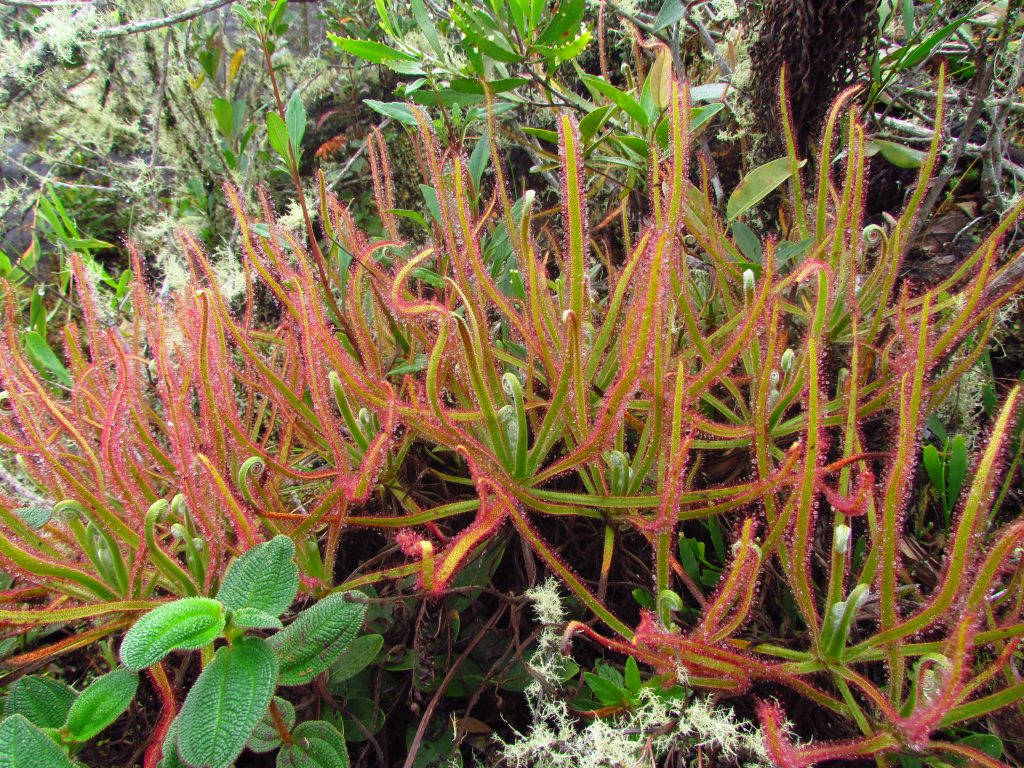
The giant new species Drosera magnifica in its habitat. Photo: Paulo Gonella
Die Pest zur Zeit Kaiser Justinians
Staatssammlung für Anthropologie und Paläoanatomie
Internationales Forscherteam beendet Debatte um Seuche im 6. Jahrhundert: Schon im sechsten Jahrhundert, – also Jahrhunderte vor dem bekannten Schwarzen Tod des 14ten Jahrhunderts, waren tausende von Menschen in Europa einer verheerenden Krankheit, der sogenannten Pest des Justinian, zum Opfer gefallen. In historischen Quellen wird von einer Seuche gesprochen, deren Beschreibung zu dem Verdacht führte, es hätte sich auch damals schon um eine erste Pandemie der Beulenpest gehandelt. In den letzen Jahrzehnten kamen jedoch Zweifel auf, ob es sich bei der historischen Krankheit tatsächlich um die Pest gehandelt hat. Zwischenzeitlich hielt man dies sogar für unmöglich und ging davon aus, dass ein anderer Erreger die Seuche verursacht hat. Das Wissenschaftler-Team der jetzt vorgestellten Studie konnte diese Frage nun endgültig klären.
Ein Team von Forschern aus München, Mainz und Arizona konnte anhand von DNA-Untersuchungen beweisen, dass bei der Pest des Justinian das Pest-Bakterium Yersinia pestis, tatsächlich beteiligt war. Dies geht aus den Ergebnissen hervor, die das Team letzte Woche im Wissenschaftsjournal PLoS Pathogens veröffentlicht hat. Den Naturwissenschaftlern gelang der unumstößliche Nachweis der Pest-DNA an menschlichen Überresten des sechsten Jahrhunderts in zwei verschiedenen Laboren.
Das Team hat DNA-Reste aus den Zähnen von Skeletten untersucht, die bei einer archäologischen Ausgrabung des frühmittelalterlichen Gräberfeldes Aschheim-Bajuwarenring (Aschheim, Landkreis München, Bayern) in den Jahren 1997 und 1998 gehoben worden waren. Dank günstiger Bedingungen blieb über grob 1400 Jahre die Erbinformation des Pestbakteriums in ihnen erhalten. „Allerdingswurde die DNA des Erregers nur in kleinsten Mengen und in Bruchstücken in den Knochen und Zähnen konserviert“, sagt Dr. Michaela Harbeck. Sie ist Konservatorin an der Staatssammlung für Anthropologie und Paläoanatomie München (SAPM) und eine der Autorinnen der Studie. Zusammen mit der Doktorandin Lisa Seifert hat sie in einer Kooperation mit Wissenschaftlern der Ludwig-Maximilians-Universität, des Mikrobiologischen Instituts der Bundeswehr (IMB), der Johannes-Gutenberg-Universität Mainz und des Zentrums für Mikrobielle Genetik und Genomik in Arizona zusammengearbeitet. „Wir haben zunächst einen Genabschnitt untersucht, der nur in Yersinia pestis vorkommt“, erklärt Dr. Holger Scholz vom IMB. Bei einem Erfolg analysierten die Forscher in weiteren DNA-Abschnitten sogenannte Einzel-Nukleotid-Polymorphismen (SNP). „SNPs sind einzelne Basen, in denen sich der Pesterreger von anderen Pathogenen unterscheidet“, fügt seine Kollegin Dr. Julia Riehm hinzu. Damit war es nun erstmals möglich die Position des Erregers der Justinianischen Pest im Stammbaum von Yersinia pestis zu bestimmen und gleichzeitig eine Herkunft dieses historischen Bakteriums aus Asien wahrscheinlich zu machen.
Schlussendlich ist der genetische Nachweis der Pest im frühmittelalterlichen Bayern auch der einzige Hinweis, dass die damals dort lebenden Menschen unter dieser Seuche litten – historische Quellen der entsprechenden Zeit fehlen für diese Region.
Publikation:
Harbeck M, Seifert L, Hänsch S, Wagner DM, Birdsell D, et al. (2013) Yersinia pestis DNA from Skeletal Remains from the 6th Century AD Reveals Insights into Justinianic Plague.
PLoS Pathog 9(5): e1003349. doi:10.1371/journal.ppat.1003349
Kontakt:
Dr. Michaela Harbeck
Dipl.-Biol. Lisa Seifert
Staatssammlung für Anthropologie und Paläoanatomie (SNSB-SAPM)
Karolinenplatz 2a
80333 München
Lisa Seifert: +49 (0)171 976 49 63
E-Mail: M.Harbeck@lrz.uni-muenchen.de
E-Mail: l.seifert@lrz.uni-muenchen.de
Dr. Holger C. Scholz
Mikrobiologisches Institut der Bundeswehr
Neuherbergstraße 11
80937 München
Tel.: +49 (0)89 31 68 28 05
E-Mail: holger1scholz@bundeswehr.org
With a crush: A Jurassic brother of the enigmatic tuataras
Bavarian State Collection for Palaeontology and Geology
Tuataras are often regarded as a classic example of a living fossil. They are the last survivors of an ancient lineage, which is said to have lost the evolutionary struggle with the modern lizards. A new find from the Late Jurassic (c. 148 Ma ago) of southern Germany demonstrates that the fossil relatives of the tuatara showed a much greater evolutionary plasticity than previously recognized and were at the height of their ecological diversity at a time, when modern lizards were already widespread. This challenges the idea of their evolutionary inferiority and suggests that other reasons might be responsible for their decline.
It looks like a “normal” lizard, but belongs to an ancient lineage apart from modern lizards: the Tuatara, which is represented by only two species that live on a few islands off the coast of New Zealand. With a brain and mode of locomotion that is said to be intermediate between amphibians and reptiles, tuataras are among the most enigmatic living animals and are often regarded as living fossils, as a perfect model for an ancient lizard ancestor. However, their parent lineage, the Rhynchocephalia (“Beak Heads”) were wide-spread and diverse during the Mesozoic, the “age of dinosaurs”. To answer the question what led to their decline in the late Mesozoic seemed easy enough: with their obviously primitive appearance, rhynchocephalians were clearly inferior to the true lizards and even more so to the primitve mammals that radiated at that time. Were they really?
A new fossil relative of the tuataras found in the latest Jurassic of southern Germany challenges this idea, in line with other recent finds of rhynchocephalians. In a paper recently published in the scientific journal PLoS One, the German brother of the tuataras was given the name Oenosaurus muehlheimensis, revering the exquisite wine of the Franconian Alb and the village of Mühlheim, close to the place where the fossil was found. Oenosaurus closely resembles the living tuataras, but it has a dentition that is unique amongst tetrapods. “When the specimen was found and only the palatal view of the skull was visible, we were all wondering what kind of animal it might be”, recalls Dr. Oliver Rauhut of the Bavarian State Collection for Palaeontology and Geology, the lead author of the study: “no one of us had ever seen such teeth in a reptile.” The dentition of Oenosaurus consists of massive tooth plates, the structure of which indicates that they might have been growing continuously, balanced by wear on the surface of the plate. Such teeth are otherwise only found in chimaeran and dipnoan fishes. “We analysed the tooth plates with the help of computer tomography, and when I showed the pictures to a colleague who is specialized in the microstructure of fish teeth, she first found nothing unusual – until I told her that these were the teeth of a reptile”, says Dr. Adriana López-Arbarello, fish expert of the State Collection and one of the co-authors of the paper. “Then she almost couldn’t believe it”, she adds with a little smile. This discovery represents a previously unknown trophic adaptation in rhynchocephalians, indicating a diet of hard-shelled organisms. Rhynchocephalians otherwise have a very specialized kind of dentition, well adapted to cutting or tearing functions, which has been hypothesized to limit their evolutionary adaptability. Thus, the dentition of Oenosaurus demonstrates an unexpected evolutionary plasticity in these animals and underlines the fact that rhyncocephalians were actually highly diverse, both morphological and ecological, during the latest Jurassic in Europe, just before the decline of this lineage on this continent. This contradicts the popular view that rhynchocephalians were inferior to lizards and early mammals and that selection pressure by these animals is sufficient to explain the demise of the group in the late Mesozoic; instead, climate change in the course of the fragmentation of the supercontinent of Pangaea might have played a major role.
The remains of Oenosaurus were found by Roland Pöschl in the outcrops of the Mörnsheim Formation in the Schaudiberg quarry in Mühlheim near Mörnsheim, central Bavaria, Germany. The owners of the quarry immediately recognized the scientific value of the fossil and kindly donated it to the Bayerische Staatssammlung für Paläontologie und Geologie in Munich. The Mörnsheim Formation is slightly younger than the well-known Solnhofen Formation, which, among others, has yielded the famous Urvogel, Archaeopteryx. The Mörnsheim Formation is also very fossiliferous, but much more poorly known, since, in contrast to the Solnhofen Formation, there are few commercial quarries in these rocks. “We have just begun to explore these rocks, and more surprises are sure to come”, affirms Alexander Heyng. The geologist analyses the succession of rocks in the Schaudiberg quarry and also arranged the contact between the quarry owners and the scientists of the Bavarian State Collection. A large part of the Schaudiberg quarry is now open for exploration by visitors (http://www.besuchersteinbruch.de/), who can get actively involved in the fascinating adventure of discovering the Jurassic life and further support scientist in the challenge of deciphering the early history and evolutionary pathways of the modern organisms.
Publication:
Rauhut OWM, Heyng AM, López-Arbarello A, Hecker A (2012) A New Rhynchocephalian from the Late Jurassic of Germany with a Dentition That Is Unique amongst Tetrapods. PLoS ONE 7(10): e46839. DOI: https://doi.org/10.1371/journal.pone.0046839
Contact:
Dr. Oliver Rauhut
Dr. Adriana López-Arbarello
Bavarian State Collection for Palaeontology and Geology (SNSB-BSPG)
Richard-Wagner-Str. 10
80333 Munich
E-Mail: a.Lopez-Arbarello@lrz.uni-muenchen.de
E-Mail: o.Rauhut@lrz.uni-muenchen.de
Tel.: +49 (0)89 2180 6725
-
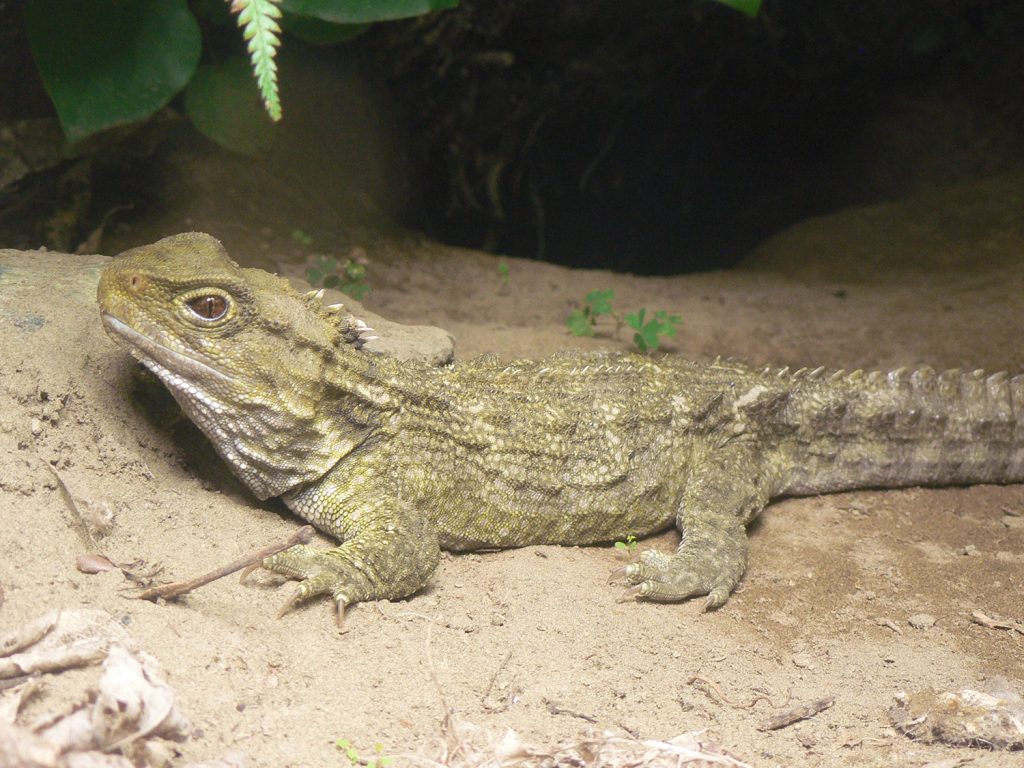
The up to 50 cm long tuatara, Sphenodon punctatus, which lives on a few islands off New Zealand. Photo courtesy of Dr. Helmut Tischlinger. -
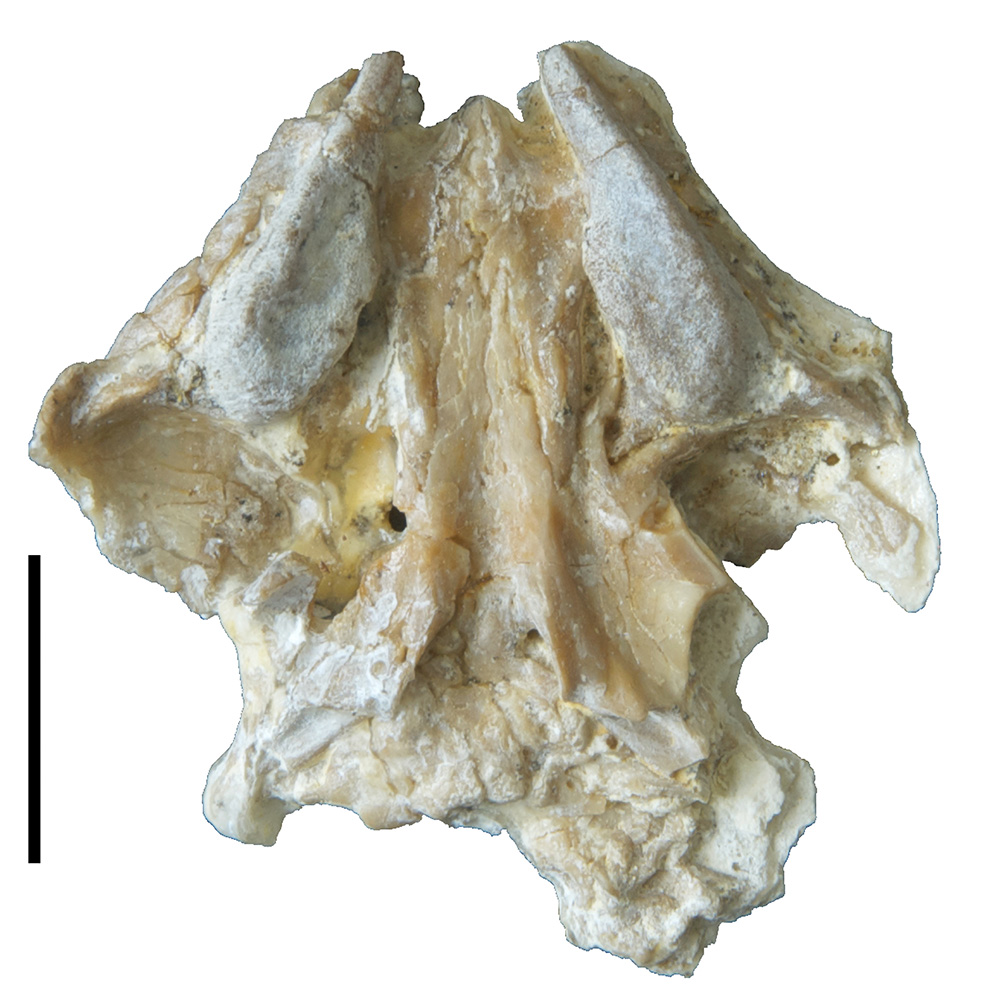
Palatal view of the skull of Oenosaurus, with the tooth plates clearly visible. Scale is 1 cm. Photo: SNSB-BSPG
A hard nut to crack: the Evolution of the armored fishes
Bavarian State Collection for Palaeontology and Geology
They ruled the oceans when the dinosaurs populated the continents: the armored fishes, members of the bony fishes that were armored with hard bony scales, the surface of which was covered with ganoin, a hard calcified substance resembling the teeth’s enamel, which reached up to one centimeter thick in large fishes. Many fossils of this unusual fishes are known from Mesozoic times, from the Triassic (about 230 million years ago) to the upper Cretaceous (about 70 million years ago), but their diversity and evolution have remained enigmatic so far. Researchers have traditionally been classifying most of these fossils in only two genera under the names Semionotus and Lepidotes have been used.
In an article recently published in the scientific journal PLoS ONE, Munich paleontologist Adriana López-Arbarello (Bayerische Staatssammlung für Paläontologie und Geologie) explored the evolutionary relationships of this important group of Mesozoic fishes. Her studies led to surprising results: not only were the armored fishes much more diverse than previously thought, but several of the known forms also turned out to represent the evolutionary lineage leading to recent gars. “The two genera Semionotus and Lepidotes have been like “wastebaskets” for Mesozoic fishes with thick ganoid scales”, explains López-Arbarello: “My work shows that these animals actually belong to different evolutionary lineages and the number of species as well as the ecologic adaptations are much higher than recognized so far.” Therefore, many of the species previously classified under these two genera needed new taxonomic names.
But not only these findings surprised the scientists. Many of the armored fishes of the Mesozoic turned out to be related to gars, a group of fishes that is today only known from seven species living in lakes and rivers in North America. “Whereas recent gars play a very minor role in comparison to the 27,000 or so species of modern bony fishes, their fossil relatives from the Mesozoic represented one of the most successful groups of fishes of their time”, according to López-Arbarello: “At that time, the relatives of modern gars filled many ecological niches, both in fresh water and marine environments, and this globally.
Although fishes are amongst the most common fossils and, with some 28,000 recent species, represent almost half of the known vertebrate diversity of our modern world, this group is still comparatively poorly studied. “Concerning the fishes of the Mesozoic, not only their evolutionary relationships, but in most cases even their species diversity remains enigmatic”, states López-Arbarello: “However, this is the time when most modern groups of fishes appeared, and a better understanding of the evolution of Mesozoic fishes would be crucial for understanding the origin of modern fish diversity!” The research was financed by the German Research Foundation (DFG).
Publication:
López-Arbarello A (2012) Phylogenetic Interrelationships of Ginglymodian Fishes (Actinopterygii: Neopterygii). PLoS ONE 7(7): e39370. DOI: https://doi.org/10.1371/journal.pone.0039370
Contact:
Dr. Adriana López-Arbarello
Bavarian State Collection for Palaeontology and Geology (SNSB-BSPG)
Richard-Wagner-Str. 10
80333 Munich
E-Mail: a.Lopez-Arbarello@lrz.uni-muenchen.de
Tel.: +49 (0)89 2180 6725
-
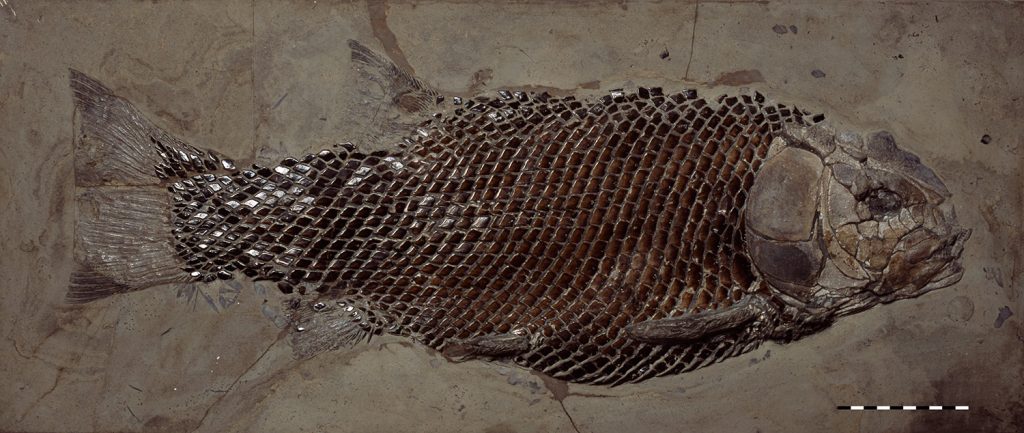
Lepidotes gigas Agassiz from the area of Holzmaden in the Palaeontological Museum Munich, Photo: A. López-Arbarello -
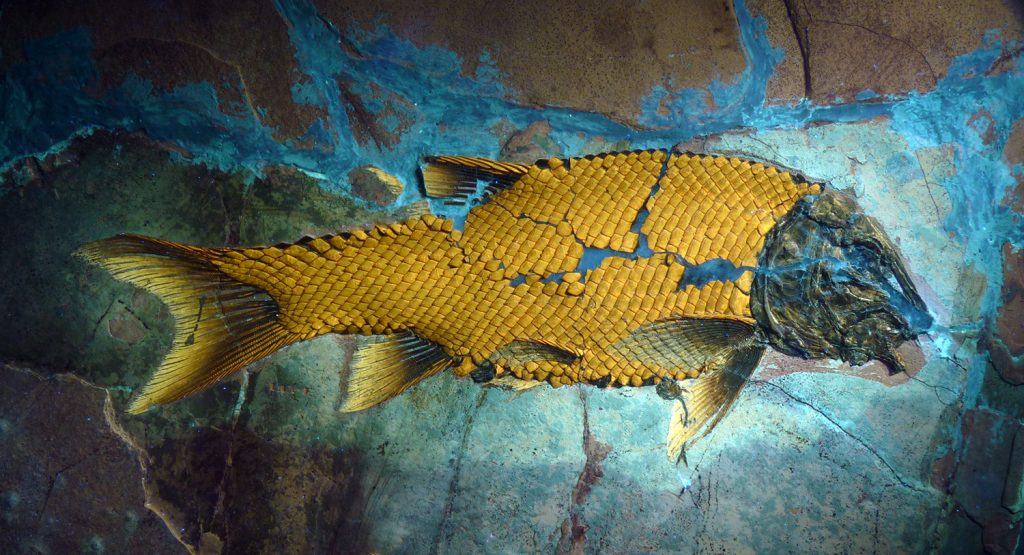
Macrosemimus fegerti, in the Jura Museum Eichstätt. The specimen was photographed under ultraviolet light, under which the fusion scales glow yellow. Photo: A. López-Arbarello
Fluffy, but no less dangerous: A new, juvenile predatory dinosaur from Bavaria
Bavarian State Collection for Palaeontology and Geology
Most of us grew up with an image of dinosaurs that was dominated by the “Jurassic Park” movies or documentaries such as “walking with dinosaurs” – dinosaurs were large, though active, reptiles with scaly skin, their outer appearance resembling overgrown lizards or crocodiles. Finds of feathered, bird-like predatory dinosaurs from China in the past ten years have somewhat challenged this view, but the large predators, such as Tyrannosaurus, Allosaurus, or Megalosaurus, are still usually depicted as dragon-like reptilian monsters.
A find from the Late Jurassic (c. 150 million years ago) of southern Germany is about to change this. A German-American team led by Munich palaeontologist Oliver Rauhut of the Bayerische Staatssammlung für Paläontologie und Geologie and the Ludwig Maximilians University report that this specimen represents a juvenile megalosaurid in the online edition of the scientific journal “Proceedings of the National Academy of Sciences”. The most remarkable aspect of the find: the animal, which was found in the limestones of northern Bavaria, which are famous for their exceptionally preserved fossils, preserves remains of a filamentous plumage, indicating that the whole body was covered with feathers. “Under ultraviolet light, remains of the skin and feathers show up as luminous patches around the skeleton”, explains Helmut Tischlinger, one of the authors of the study, who also carried out the UV photography. The scientists baptized the new animal Sciurumimus albersdoerferi. The genus name refers to the scientific name of the tree squirrels, Sciurus, and means “squirrel-mimic” – referring to the especially bushy tail of the animal. The species name honours the private collector who made the specimen available for scientific study.
“All of the feathered predatory dinosaurs known so far represent close relatives of birds”, according to Rauhut: “Sciurumimus is much more basal within the dinosaur family tree and thus indicates that all predatory dinosaurs had feathers.” And that’s not all: It has already been known for a while that the flying reptiles, which are close relatives of the dinosaurs, also had a hair-like body cover, which is very similar to the filamentous feathers in the new find. Thus, it seems very probable that all dinosaurs had feathers, and our image of the gigantic reptiles has to be revised.
However, Sciurumimus is not only remarkable for its feathers. The skeleton, which represents the most complete predatory dinosaur ever found in Europe, furthermore is of a very young animal, probably a recently hatched baby. Fossils of young juveniles are rare, and thus this find allows a rare glimpse at a young predatory dinosaur. Apart from other, already known juvenile features, such as large eyes, the new find also confirmed other, so far theoretical hypotheses. “It has been suggested for some time that the lifestyle of predatory dinosaurs changed considerably during their growth”, according to Rauhut: “Sciurumimus shows a remarkable difference to adult megalosaurs in the dentition, which clearly indicates that it had a different diet.” Adult megalosaurs reached more than six metres in length and often weighed more than a ton. They were active predators, which probably also hunted other large dinosaurs. The juvenile specimen of Sciurumimus, which was only about 70 cm in length, probably hunted insects and other small and elusive prey, as evidenced by the slender, pointed teeth in the tip of the jaws. However, the small size of the specimen does not necessarily indicate that Sciurumimus was a small animal as adult. “From other finds we know that dinosaurs grew very fast”, says Rauhut: “An adult Sciurmumimus might have reached six metres or more. The find might show that large predatory dinosaurs might have been fluffy, but they were surely not less dangerous for that.”
The study was financed by the Volkswagen Foundation and the American Museum of Natural History.
Publication:
Rauhut, O. W. M., Foth, C., Tischlinger, H. & Norell, M. A. (2012). Exceptionally preserved juvenile megalosauroid theropod dinosaur with filamentous integument from the Late Jurassic of Germany. Proceedings of the National Academy of Sciences, published online; DOI: http://dx.doi.org/10.1073/pnas.1203238109
Contact:
Dr. Oliver Rauhut
Bavarian State Collection for Palaeontology and Geology (SNSB-BSPG)
Richard‐Wagner‐Str. 10
80333 Munich
Tel.: +49 (0)89 2180 6645
mobil: +49 (0)163 741 7552
E-Mail: o.rauhut@lrz.uni‐muenchen.de
Dipl.‐Biol. Christian Foth
Bavarian State Collection for Palaeontology and Geology (SNSB-BSPG)
Richard‐Wagner‐Str. 10
80333 Munich
Tel.: +49 (0)89 2180 6619
E-Mail: christian.foth@yahoo.de
-
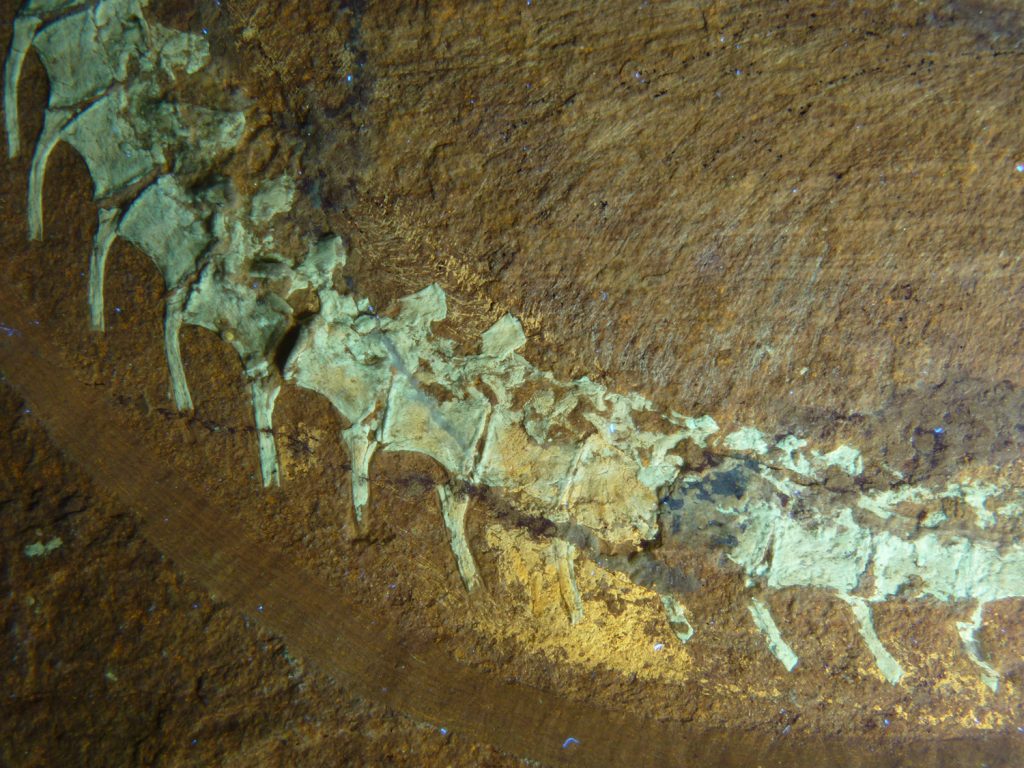
Under ultraviolet light, remnants of the skin and feathers can be seen as glowing patches and fibers on the skeleton. Photo: SNSB-BSPG -
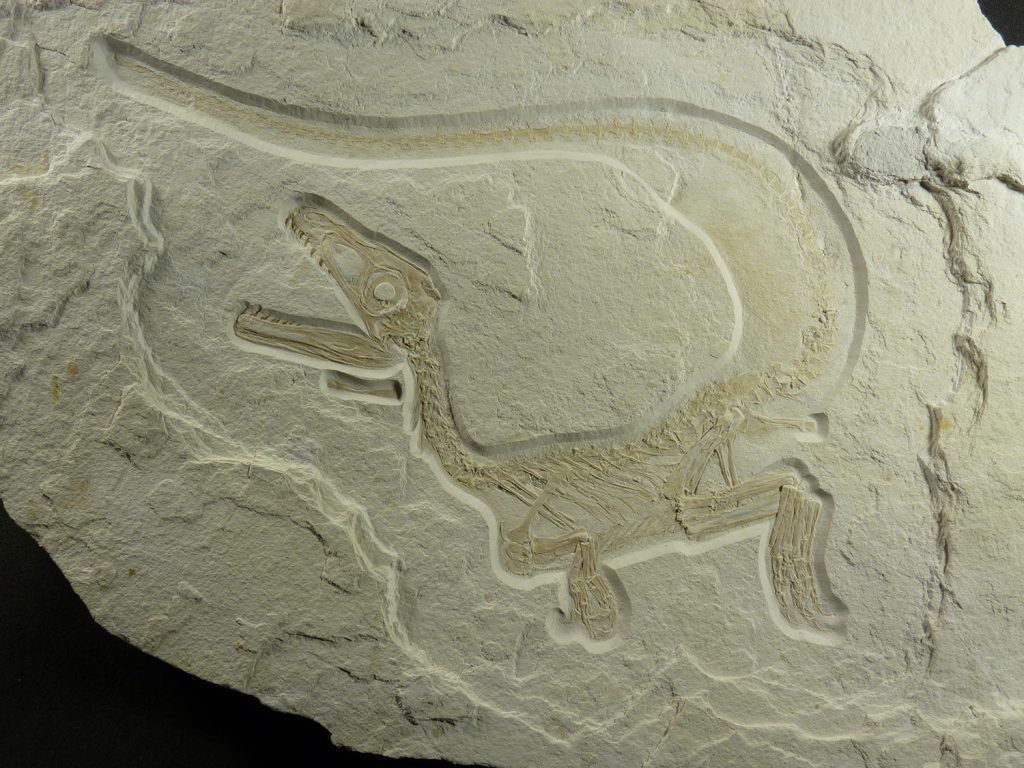
The researchers now gave the animal the scientific name Sciurumimus albersdoerferi. Photo: SNSB-BSPG
Rivaling the World’s smallest Reptiles: New tiny Chameleons discovered in Madagascar
Bavarian State Collection for Zoology
Madagascar is famous for its high levels of species diversity and endemism. Almost 300 species of frogs and approximately 400 species of reptiles live in the rainforests, mountains and arid areas of the island, and new species are regularly discovered. More than 40% of the 193 named chameleon species occur solely on this large island situated off the East African coast. There are also a remarkable number of miniaturized species, including dwarf frogs, dwarf lemurs and dwarf chameleons.
Biologists from Germany and America have discovered four additional miniaturized chameleons in the north of Madagascar (published in PLoS ONE), one of them distinctly smaller than all other known chameleons. The newly described Brookesia micra reaches a maximum snout-vent length in males of 16 mm, and its total length in both sexes is less than 29 mm, ranking it among the smallest reptiles in the world.
„It is not accidental that the smallest species of a given taxonomic group often occur on islands,” says Frank Glaw of the Zoologische Staatssammung in Munich, “it is a typical and well known phenomenon “. Exactly why Brookesia micra is so extremely small is still insufficiently studied, but could be due to a “double island effect,” as this species is only known from a small (115 ha) karstic islet just a few kilometers separated from the mainland of Madagascar. The extreme miniaturization of Brookesia micra might also be accompanied by numerous adaptations of the bodyplan – a promising field for future research.
All of the newly discovered chameleons appear to be restricted to very small distribution ranges, sometimes limited to a few square kilometers. “For this reason they might be especially sensitive to habitat destruction” says Jörn Köhler of the Hessisches Landesmuseum in Darmstadt. „One of the new species, Brookesia desperata, is known only from a small rainforest remnant, and although this area is officially protected, it has suffered severe habitat degradation “. The future survival of Brookesia tristis is uncertain as well. In the time since its habitat was designated a nature reserve, illegal logging has increased significantly – probably at least partially due to the current political crisis in Madagascar. The species names of these two chameleons (desperata = desperate, tristis = sad) were consciously chosen to call attention to their uncertain futures.
“The tiny new chameleons show remarkable genetic divergences between species, although superficially they closely resemble each other. This indicates that they separated from each other millions of years ago – even earlier than many other chameleon species,” says Miguel Vences from the Technical University of Braunschweig. „The genus Brookesia is the most basal group within chameleons”, adds Ted Townsend of San Diego State University, who carried out the genetic studies. “This suggests that chameleons might have evolved in Madagascar from small and inconspicuous ancestors, quite unlike the larger and more colourful chameleons most familiar to us today.”
Publication:
F. Glaw, J. Köhler, T. Townsend, M. Vences: Rivaling the World’s Smallest Reptiles: Discovery of Miniaturized and Microendemic New Species of Leaf Chameleons (Brookesia) from Northern Madagascar. PLoS ONE, DOI: https://doi.org/10.1371/journal.pone.0031314
Contact:
Dr. Frank Glaw
Bavarian State Collection for Zoology (SNSB-ZSM)
Münchhausenstr. 21, 81247 Munich
Tel.: +49 (0)89 8107 114
E-Mail: frank.glaw@zsm.mwn.de
-
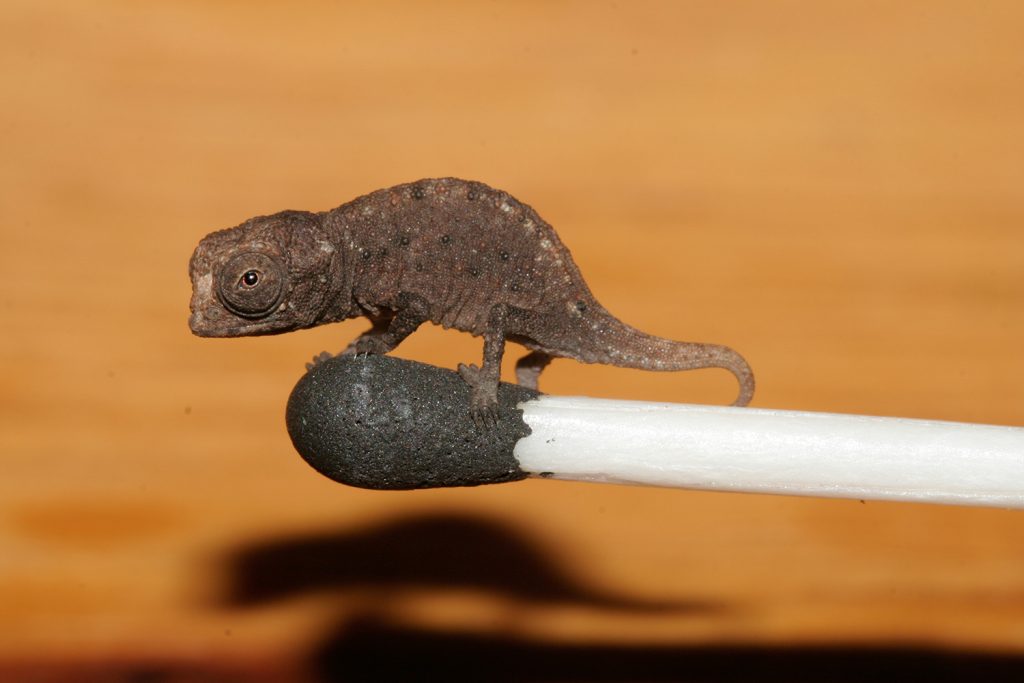
Small enough to fit on the head of a matchstick. A juvenile of Brookesia micra, one of the smallest reptiles in the world. (Photo: Jörn Köhler) -
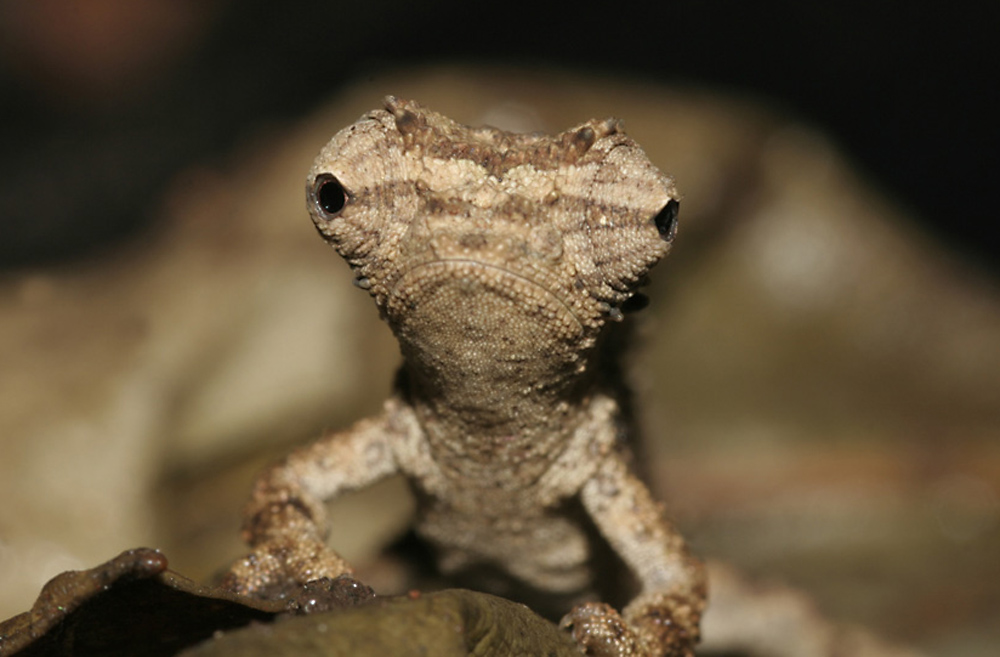
Sad glimpse into the future: The habitat of the recently discovered chameleon species Brookesia desperata is threatened by deforestation. (Photo: Frank Glaw, ZSM) -
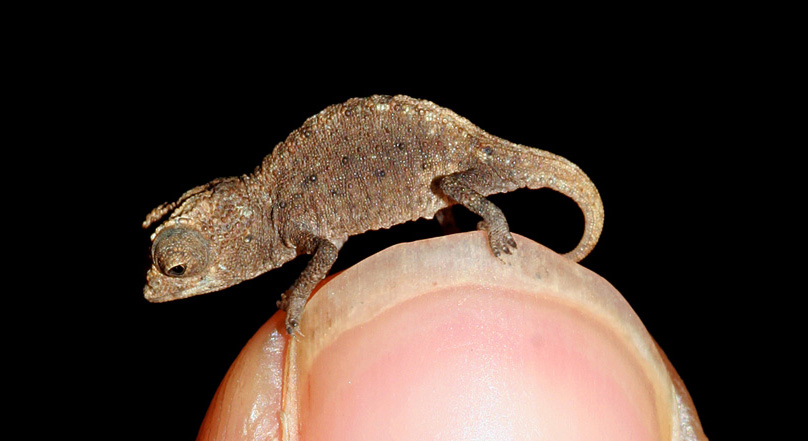
Small enough for a fingertip. A juvenile of Brookesia micra, one of the smallest reptiles in the world. (Photo: Frank Glaw, ZSM)



